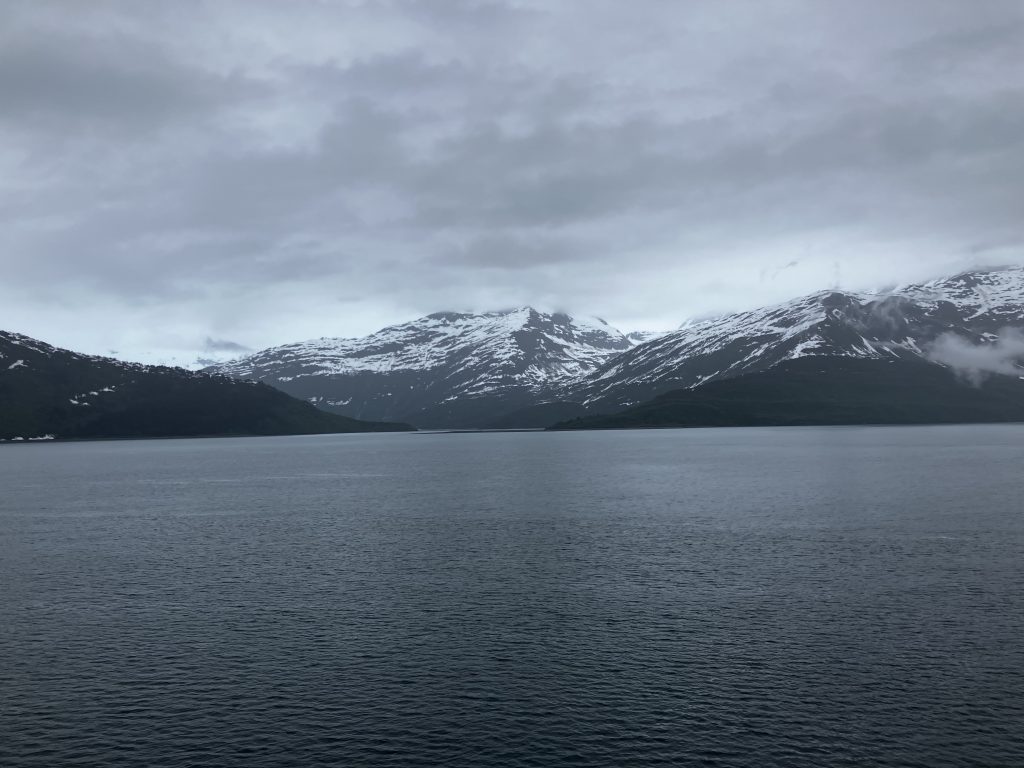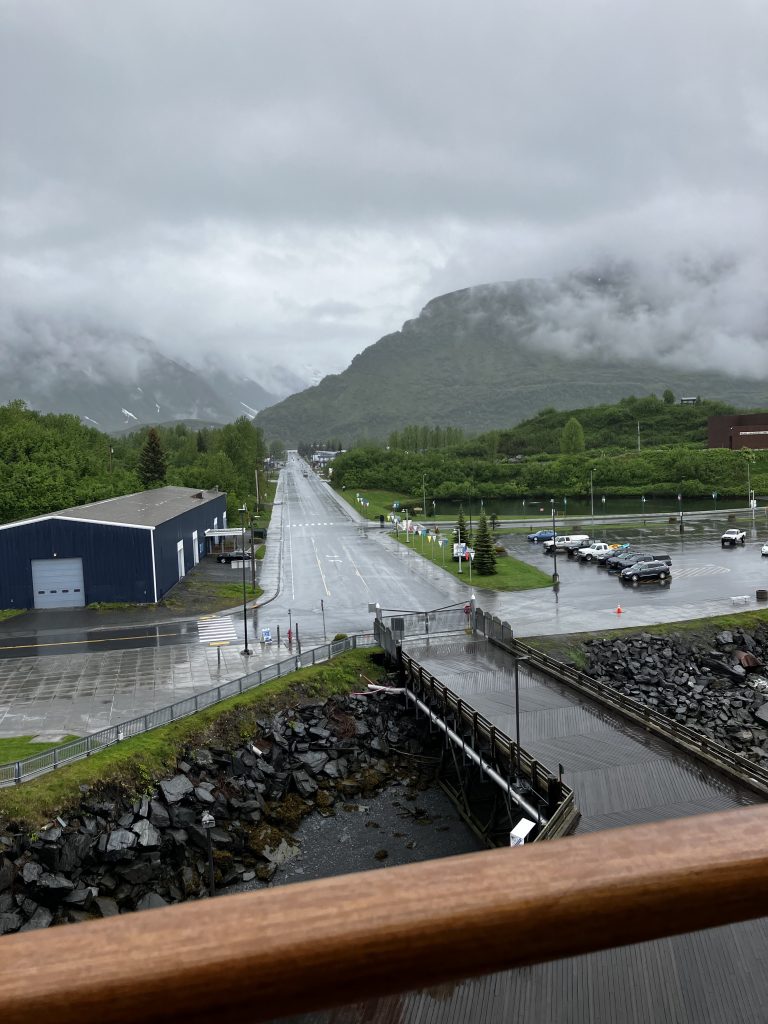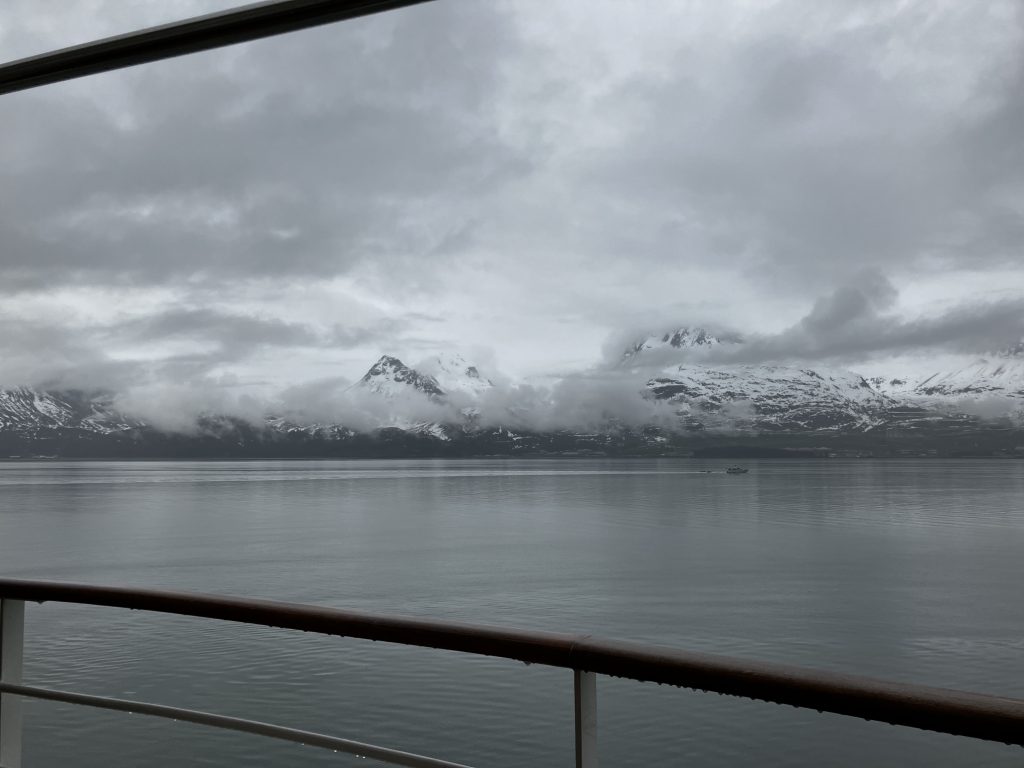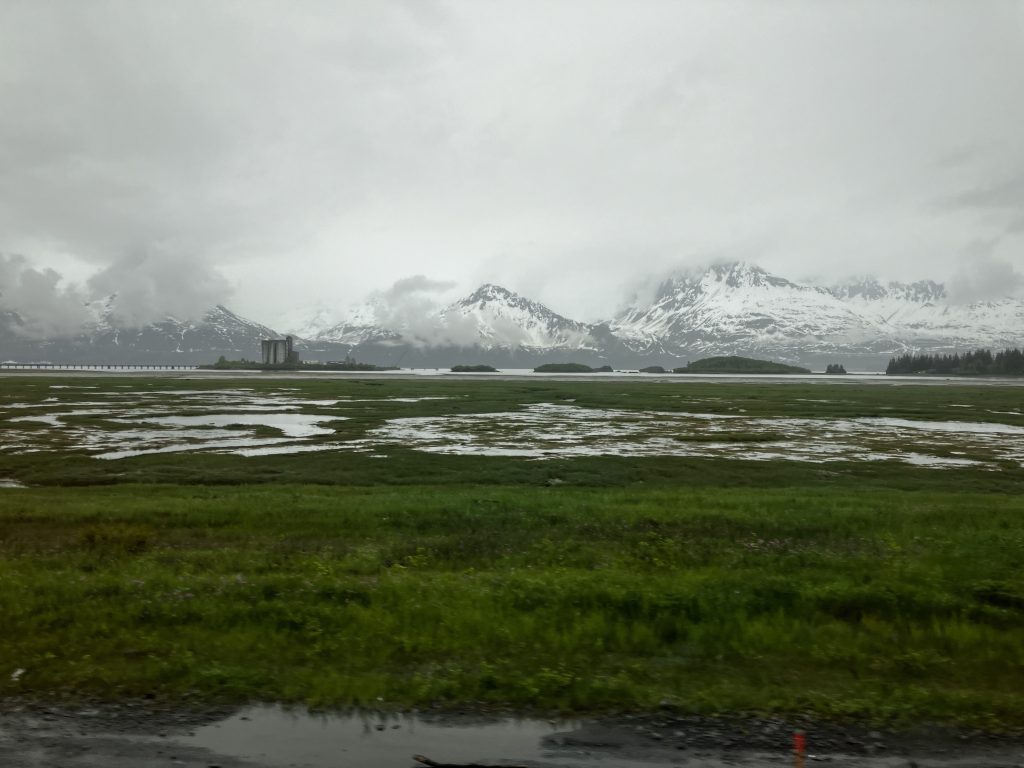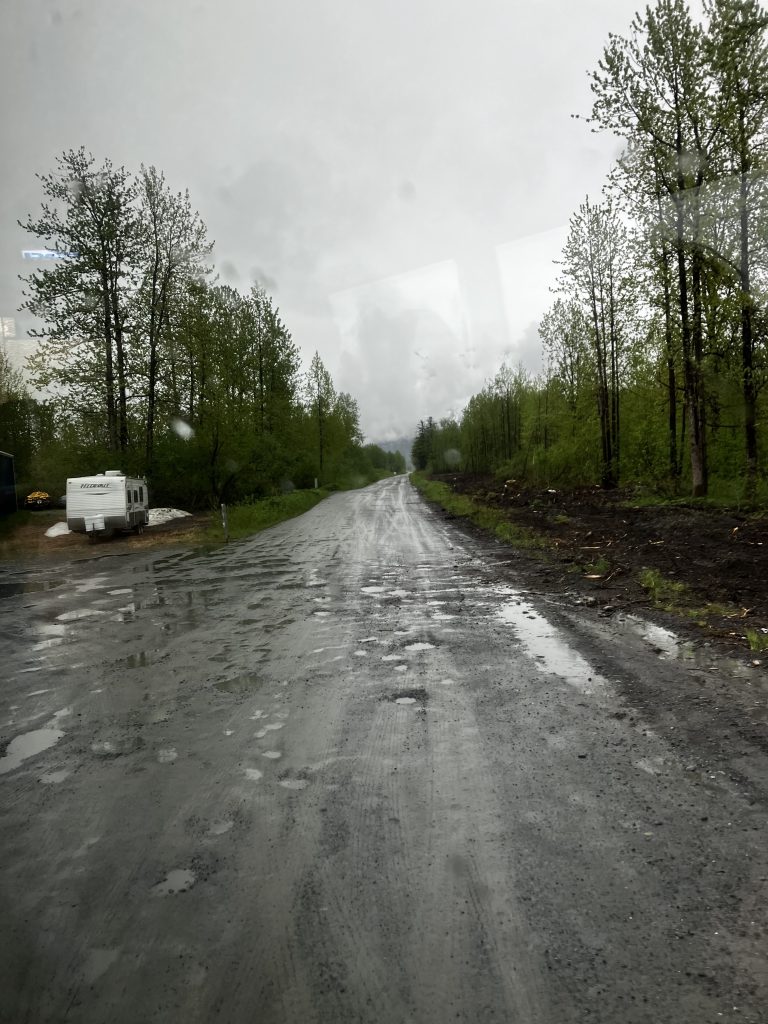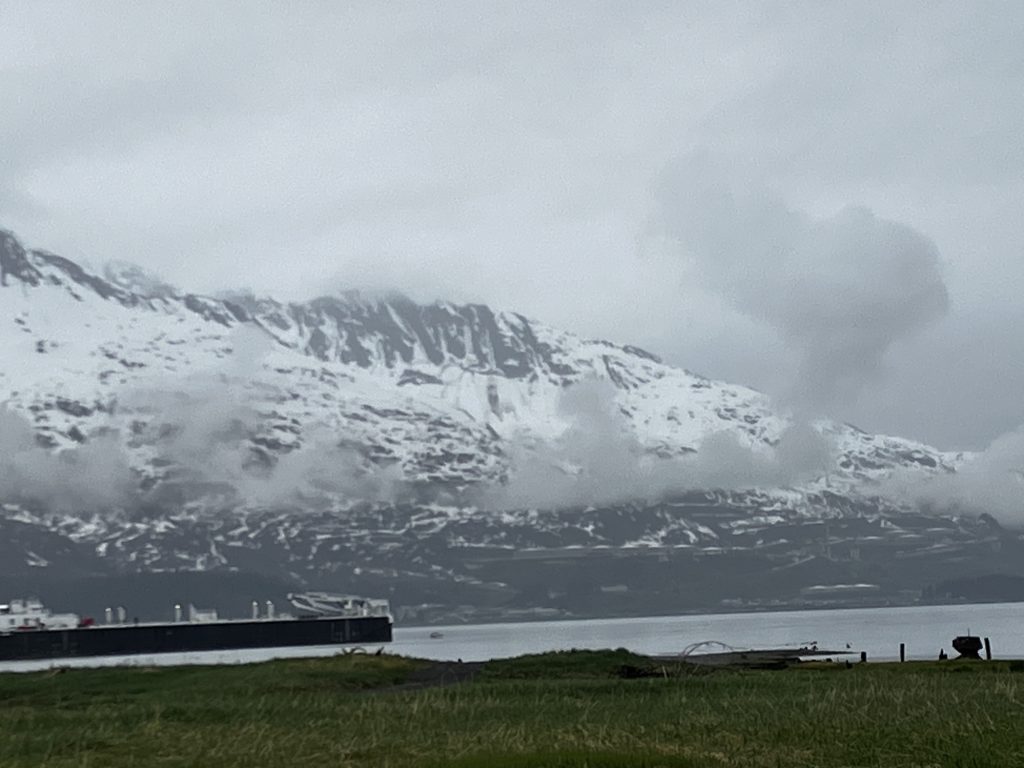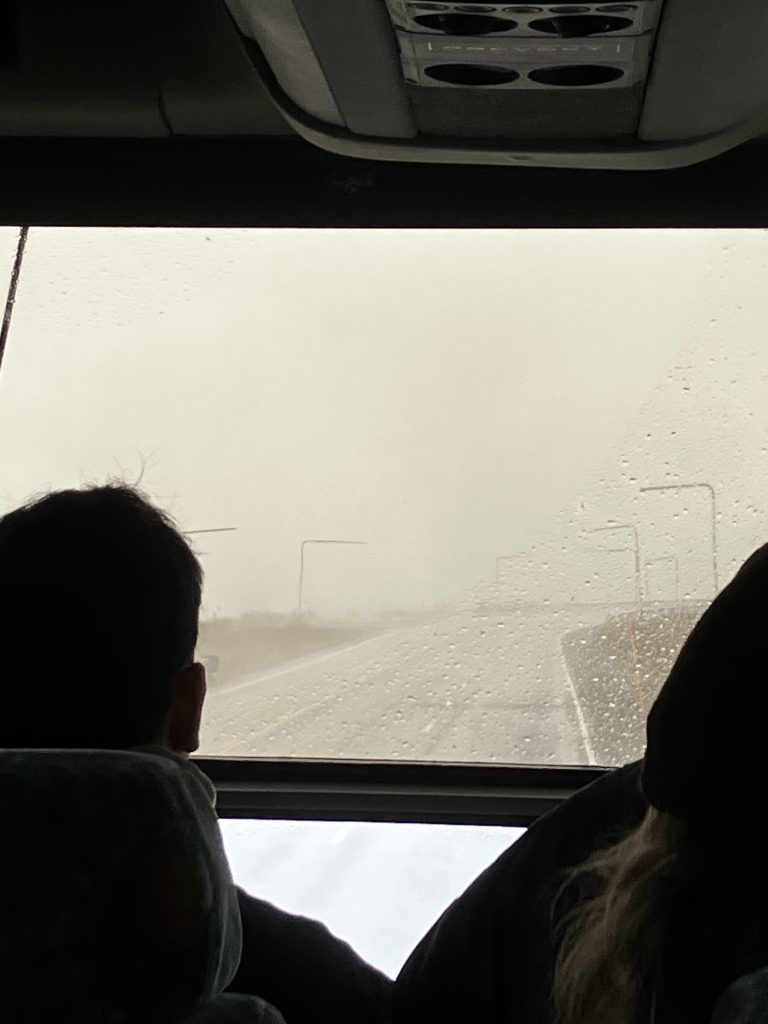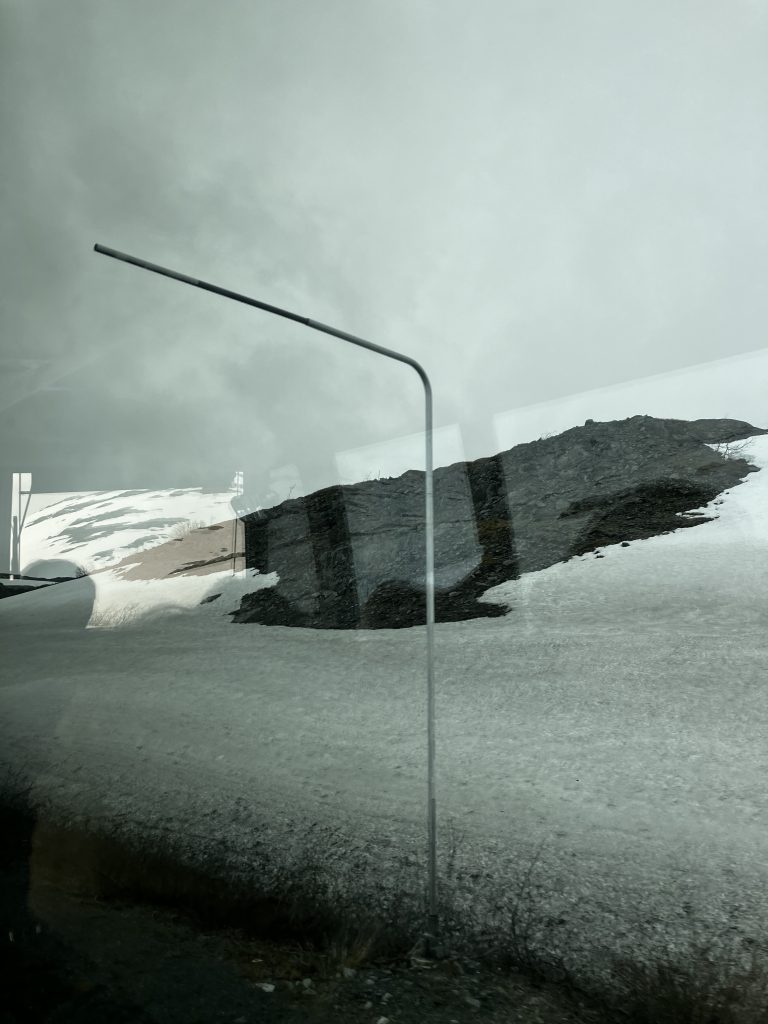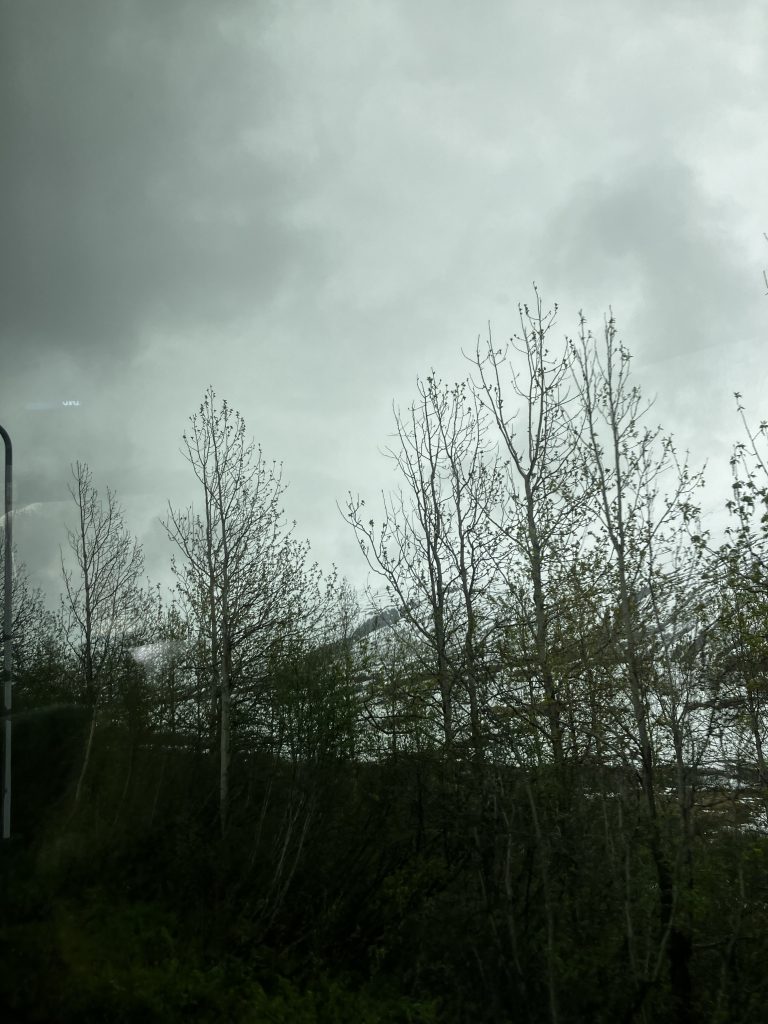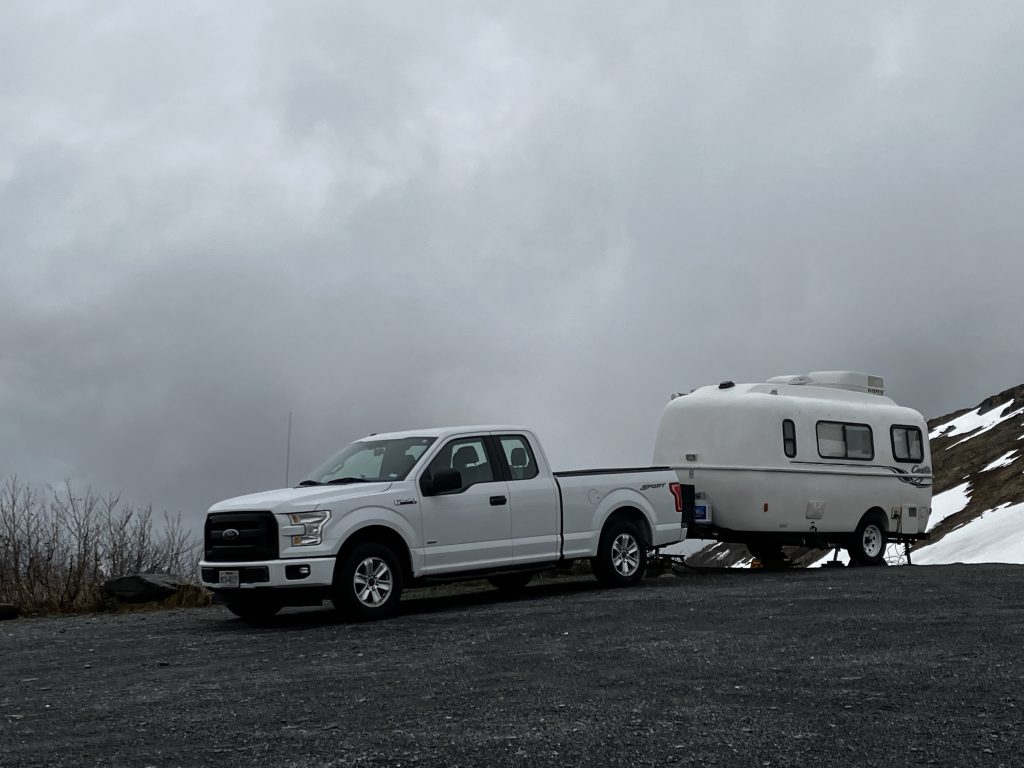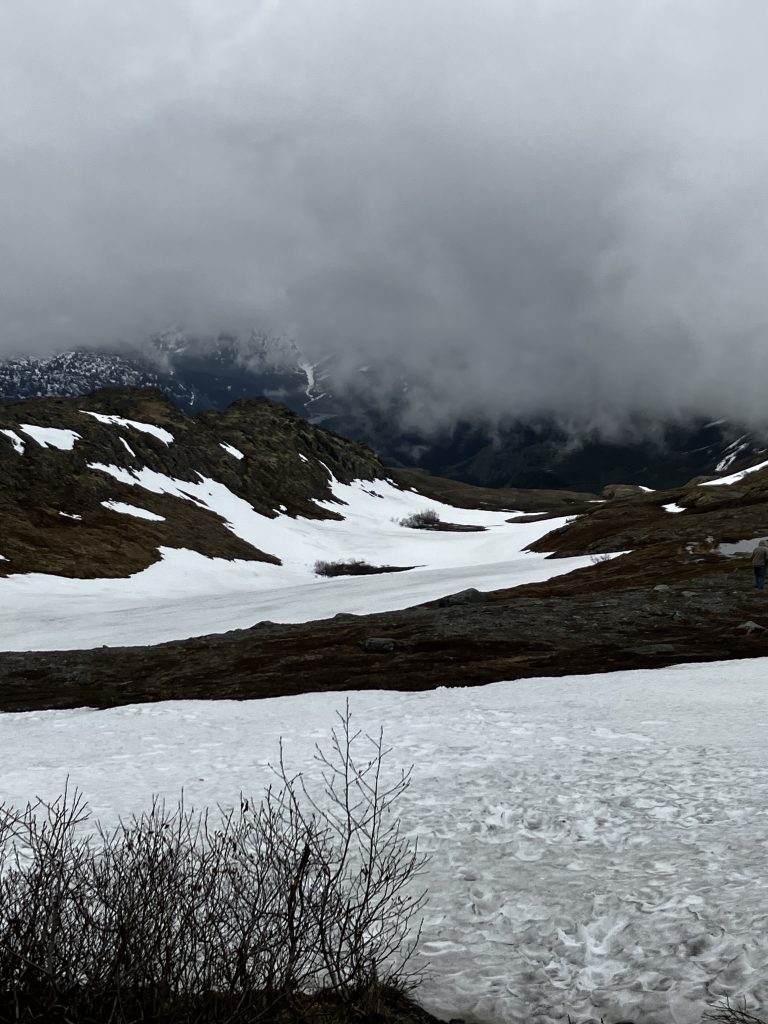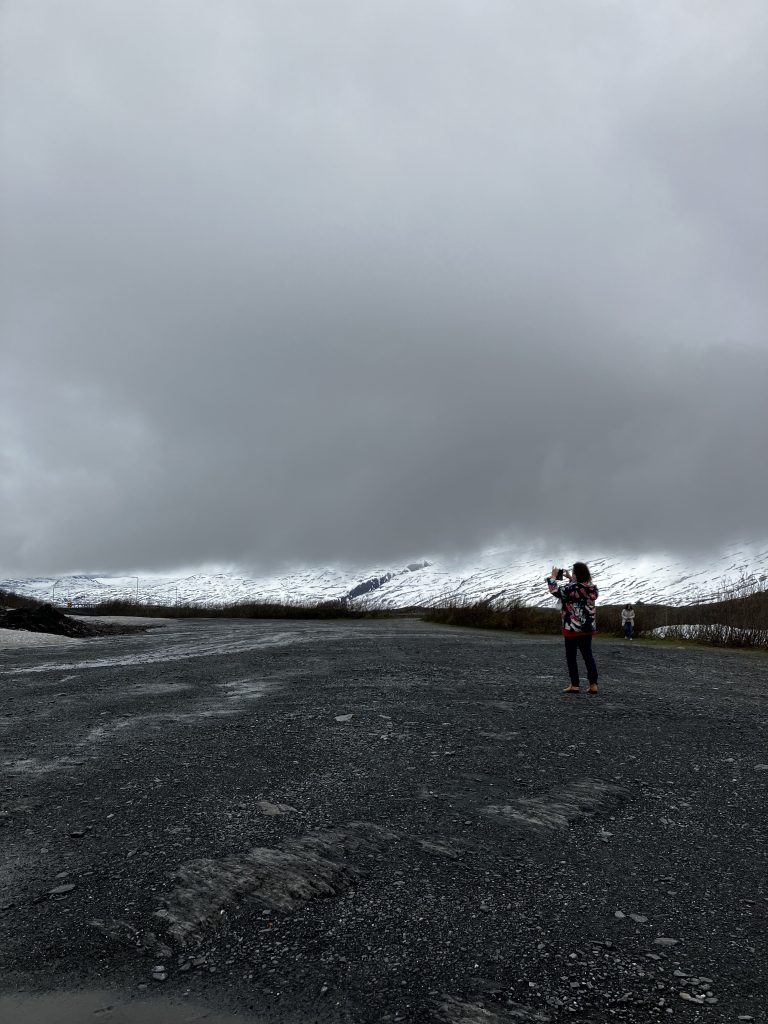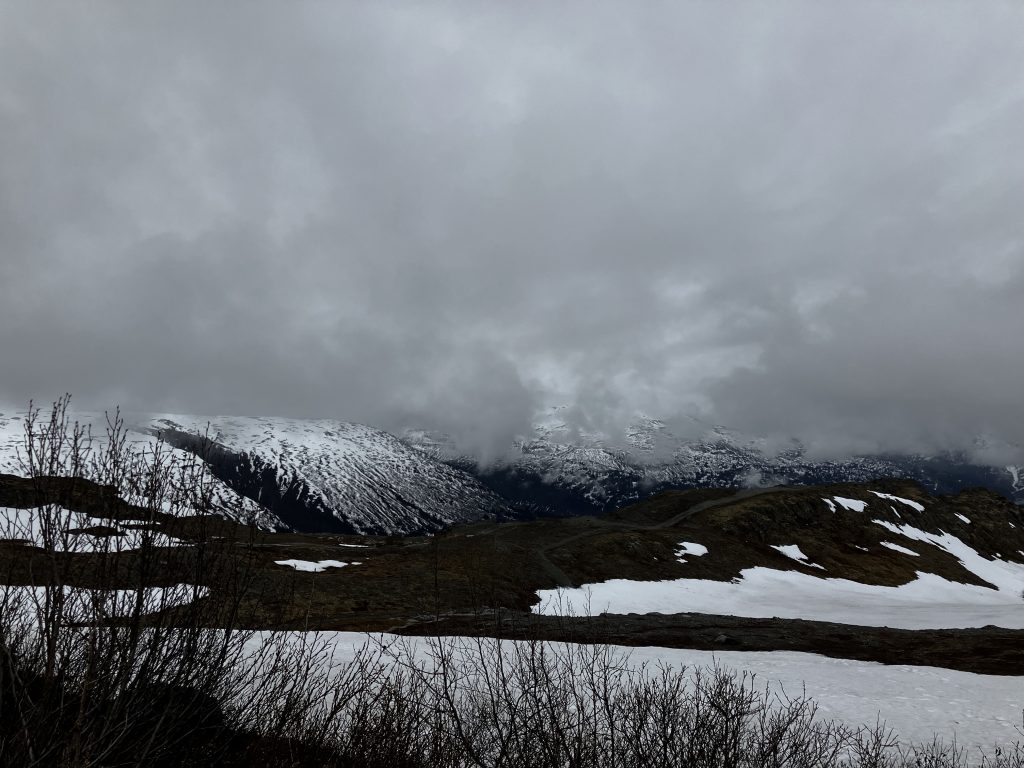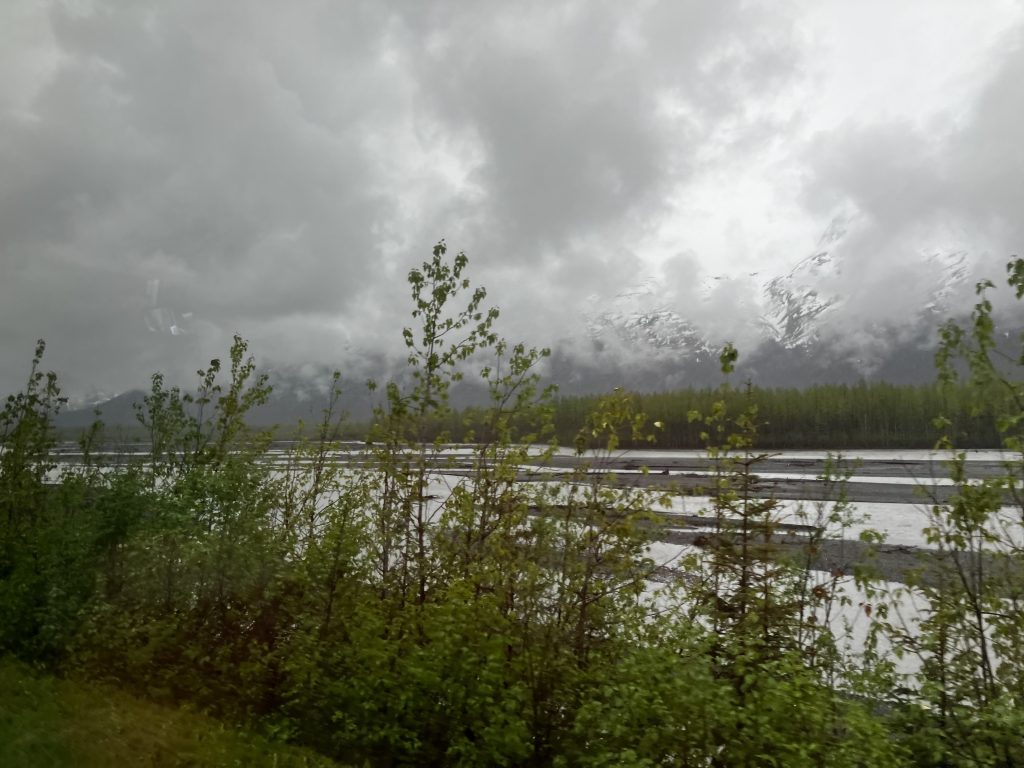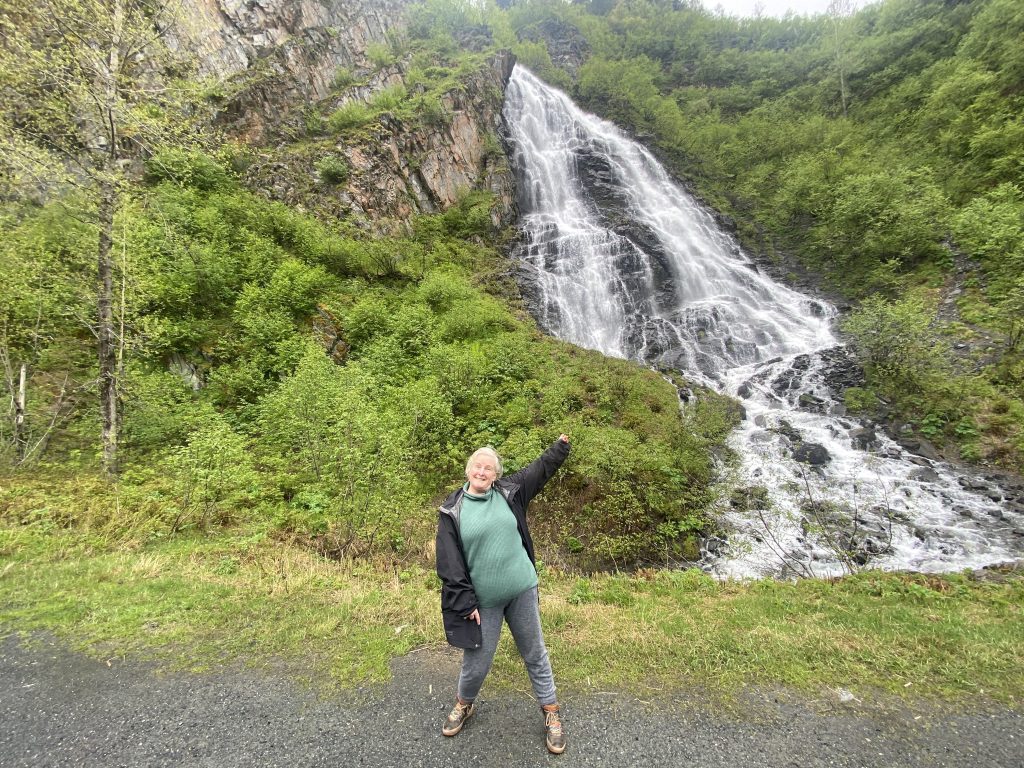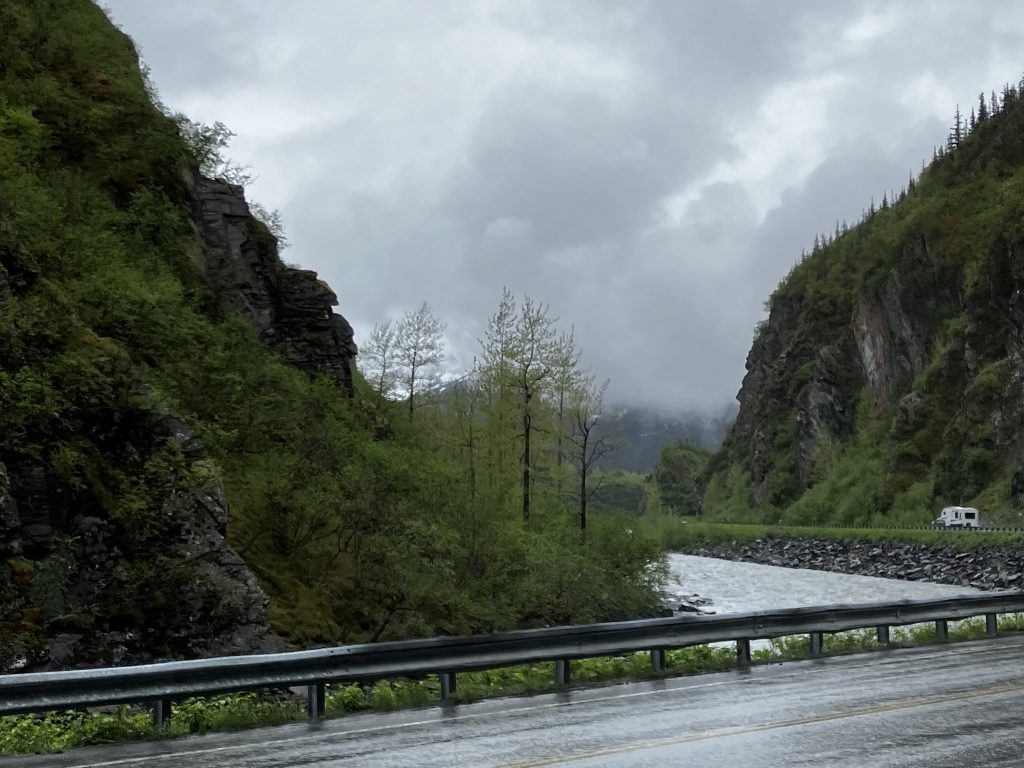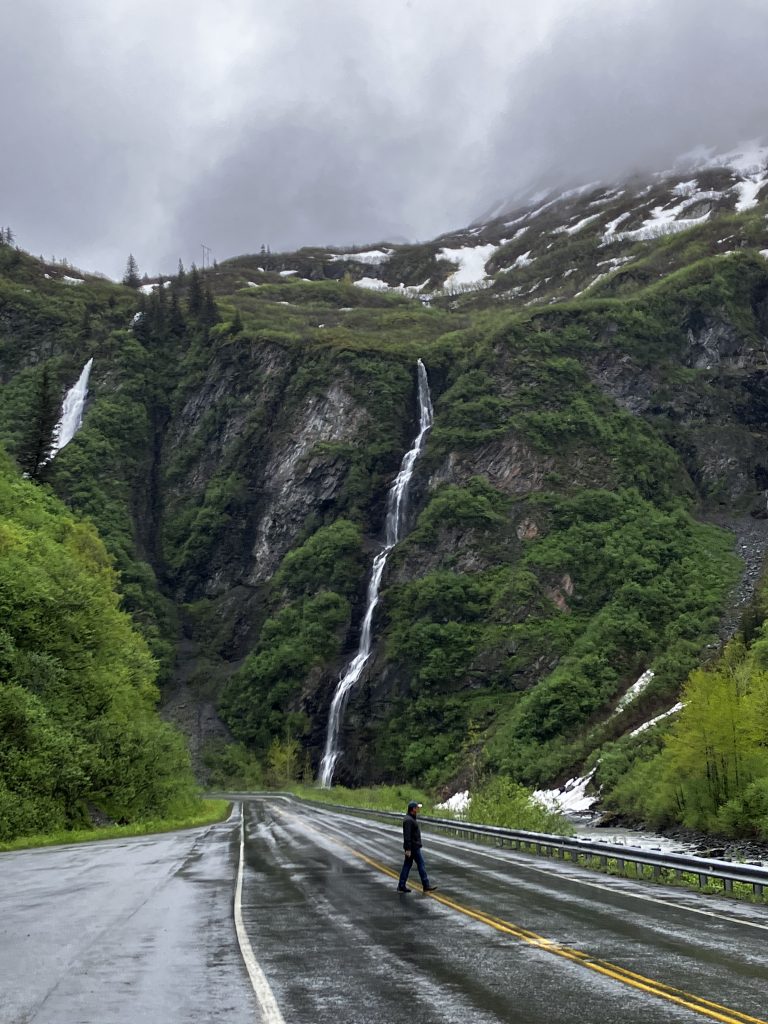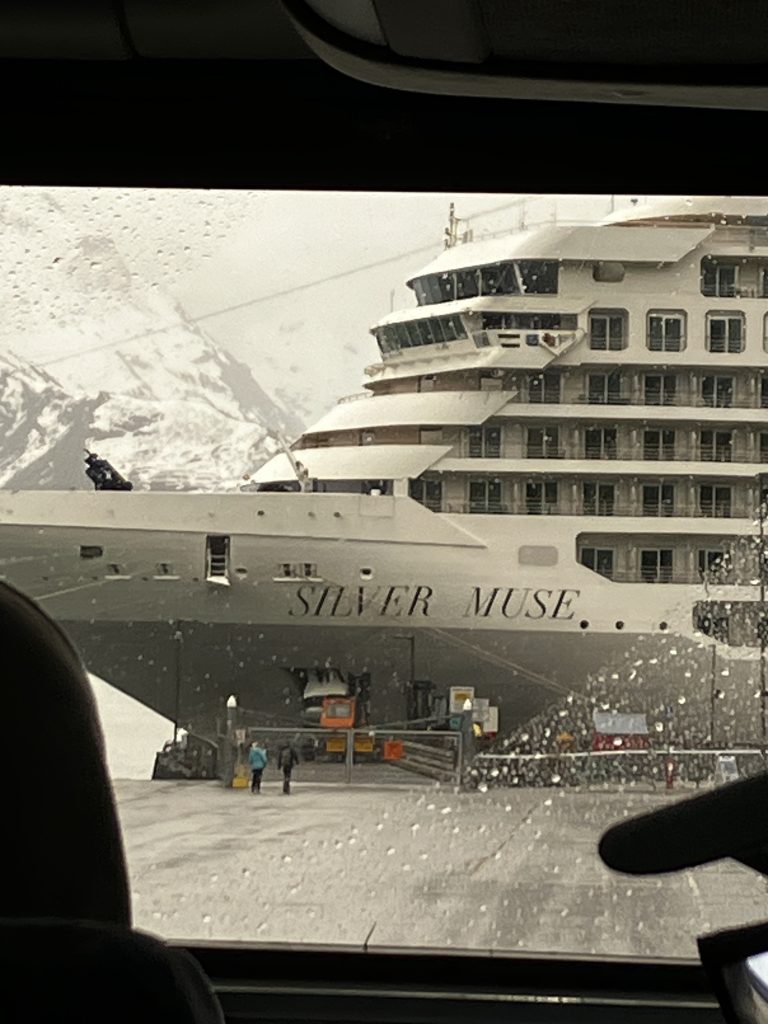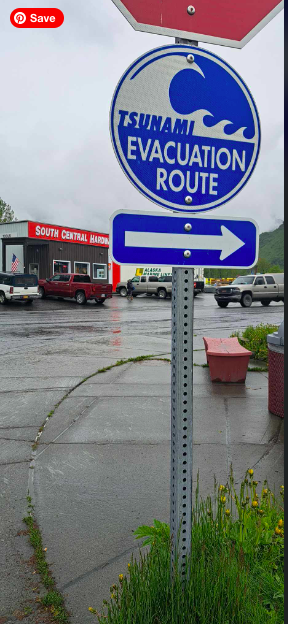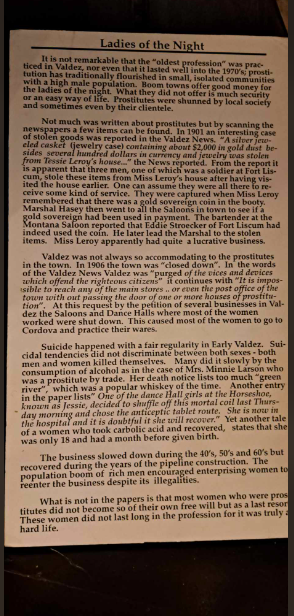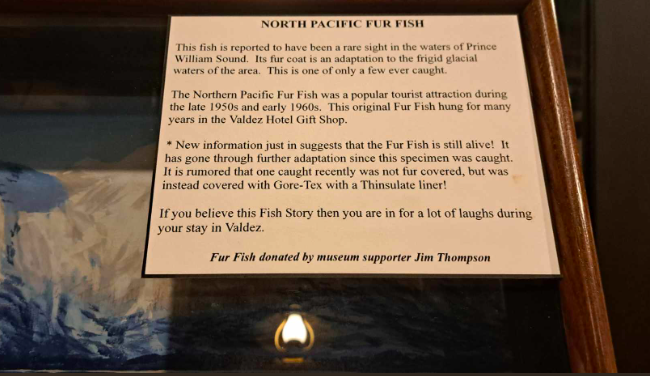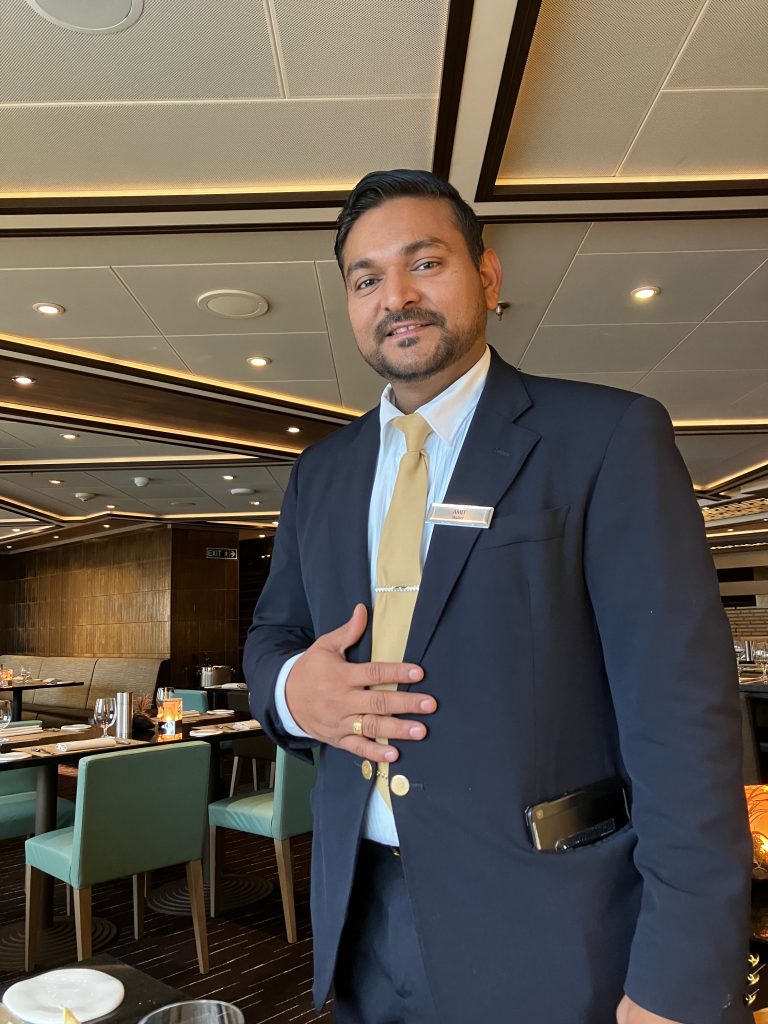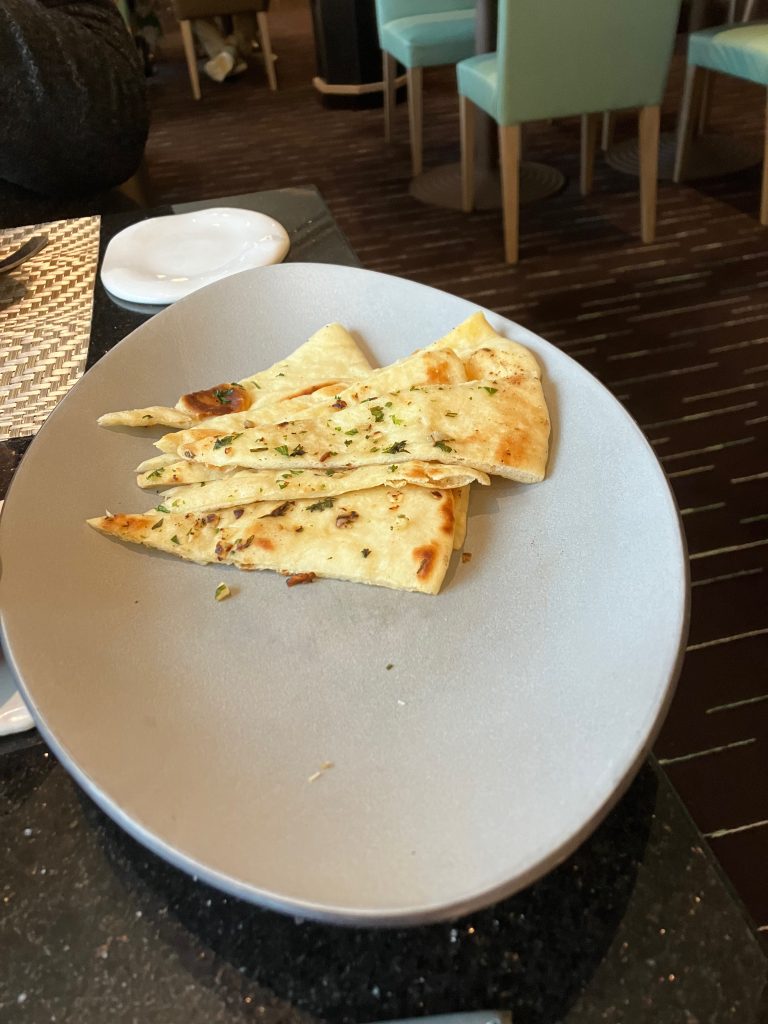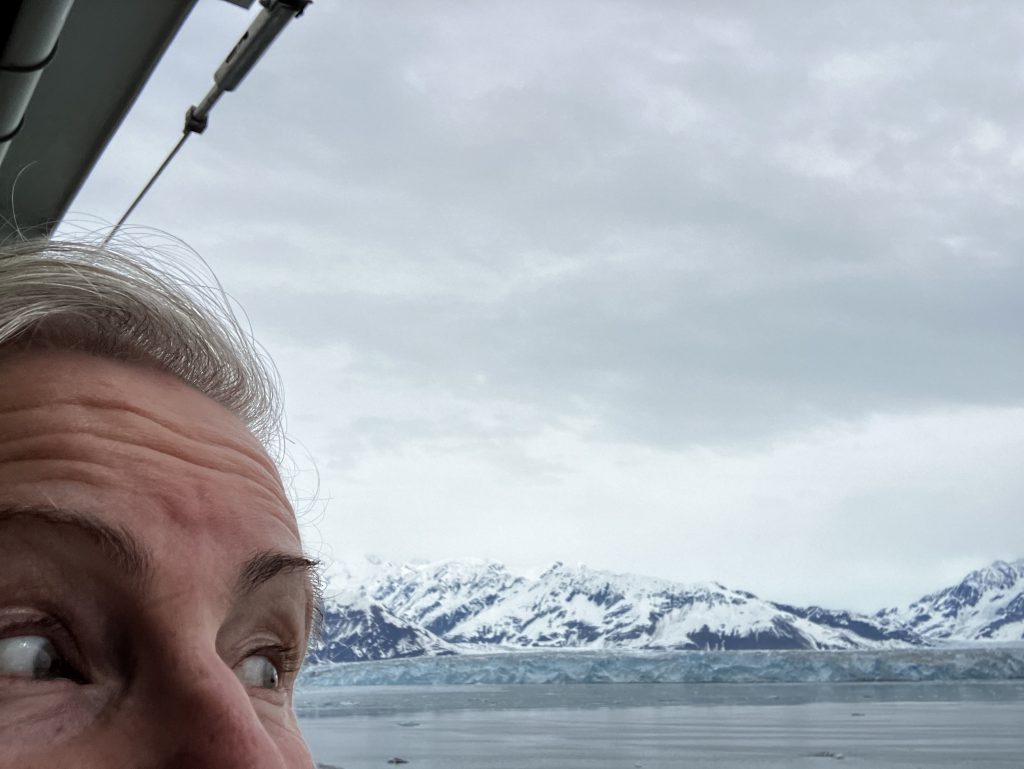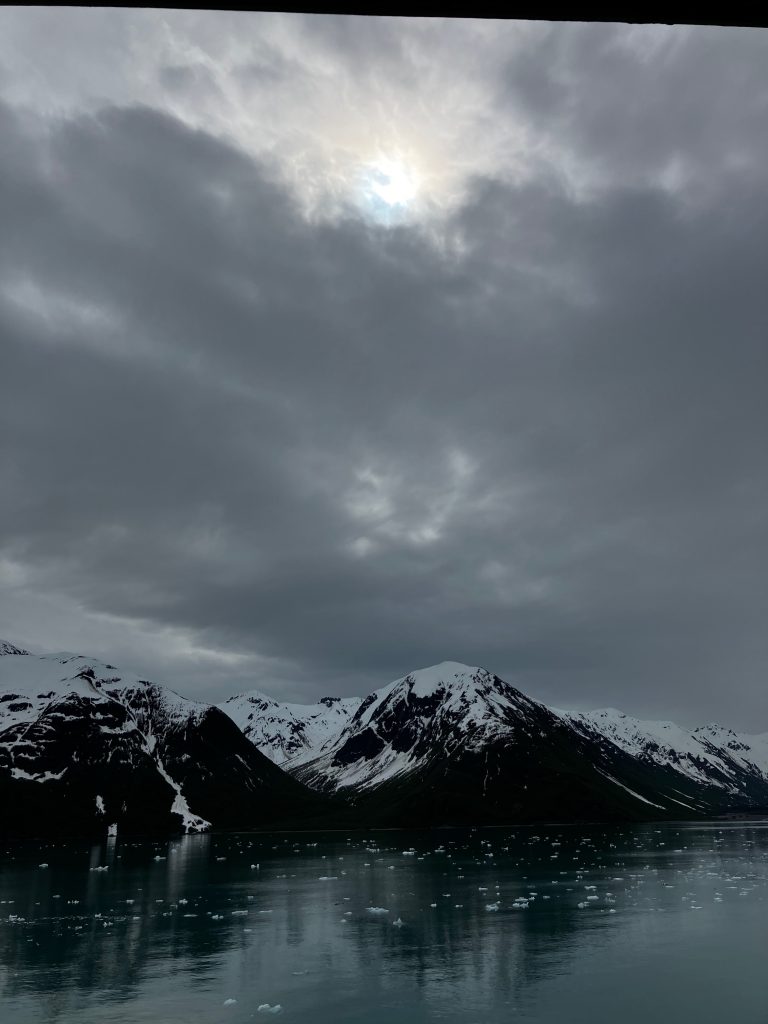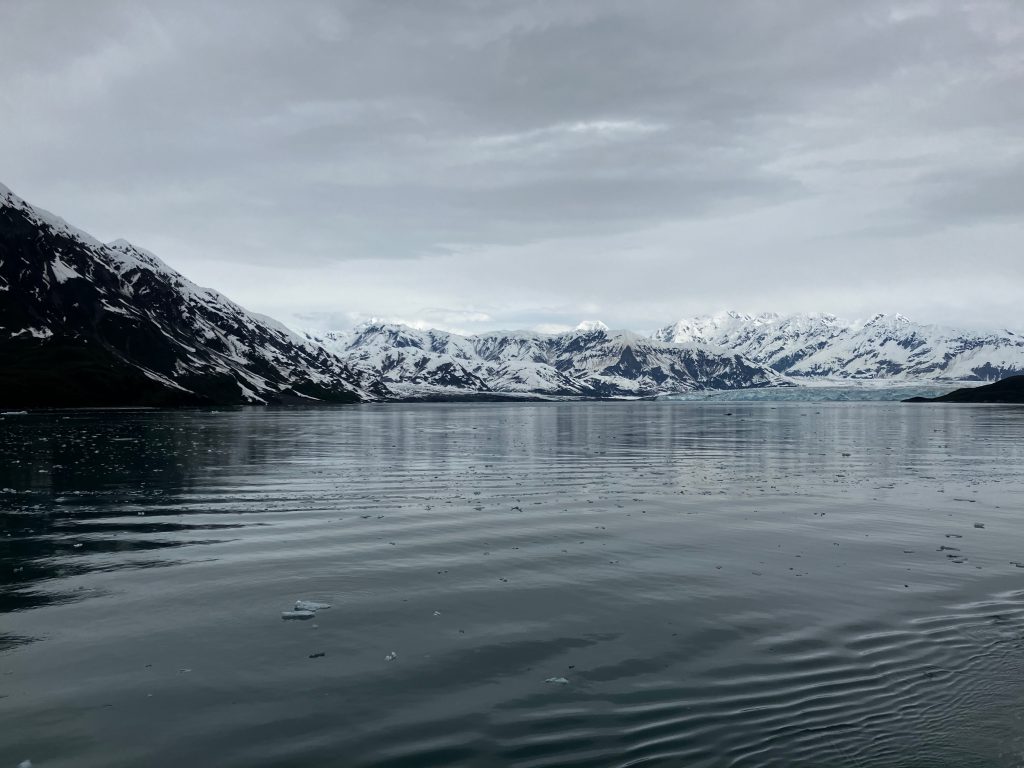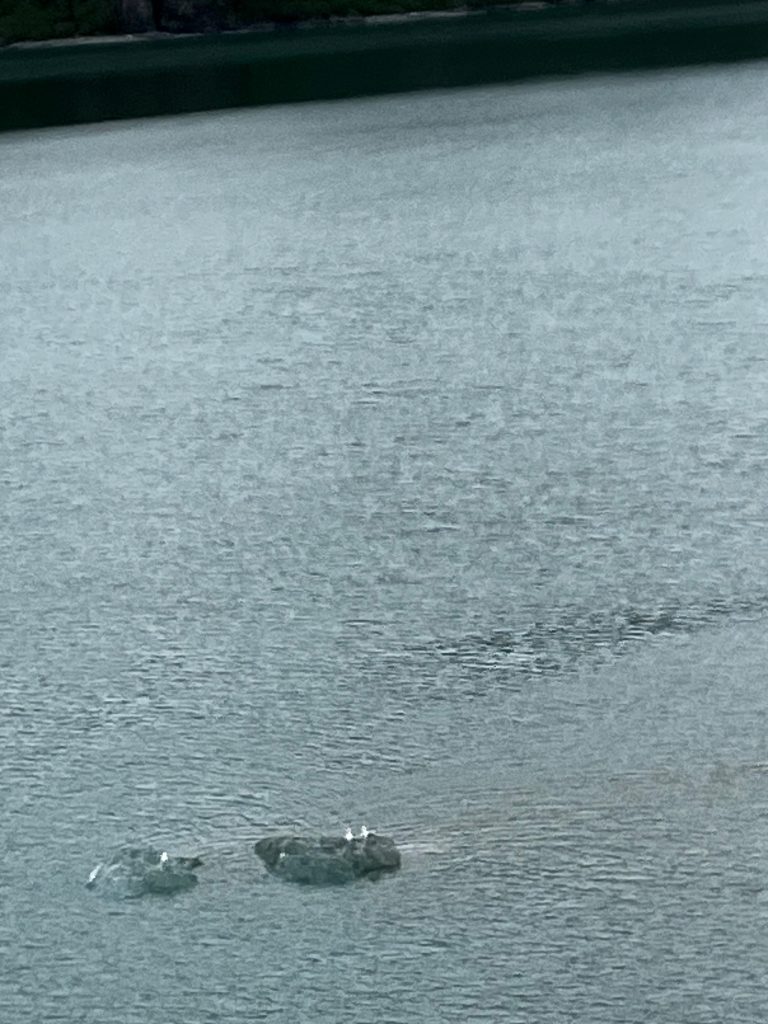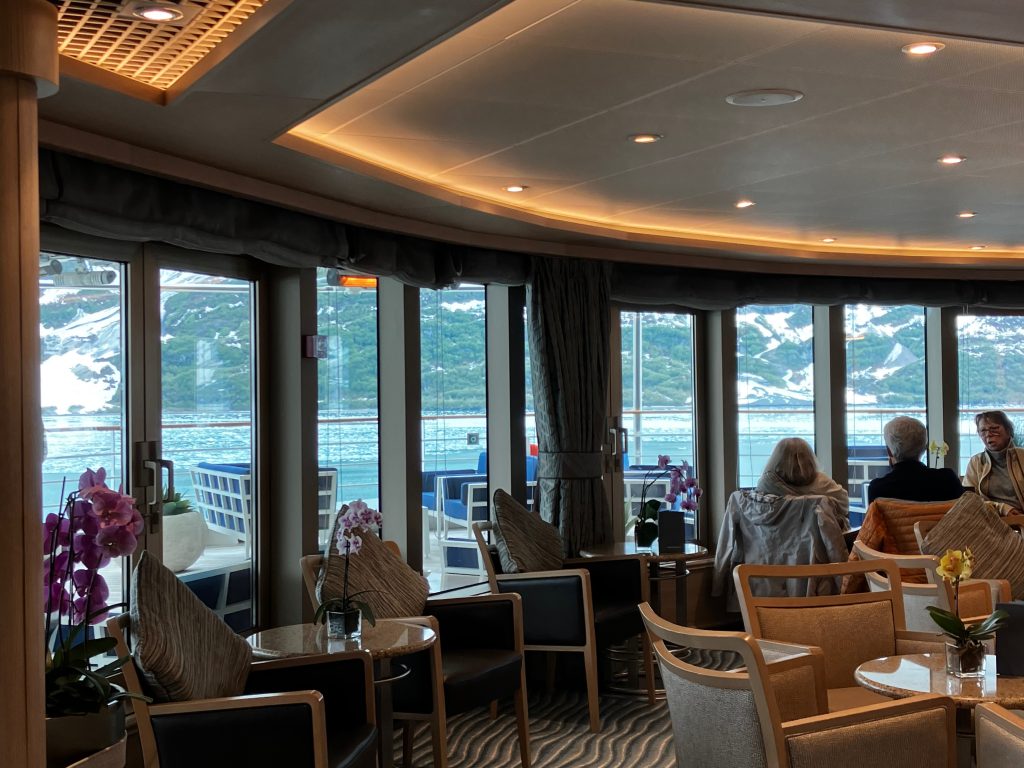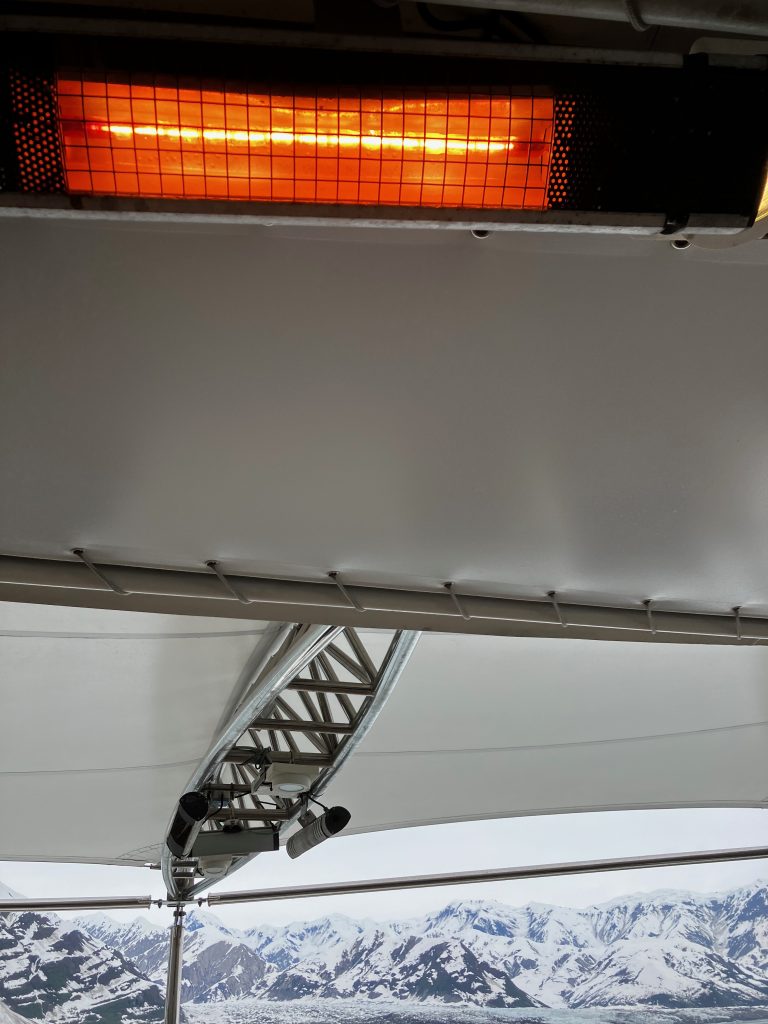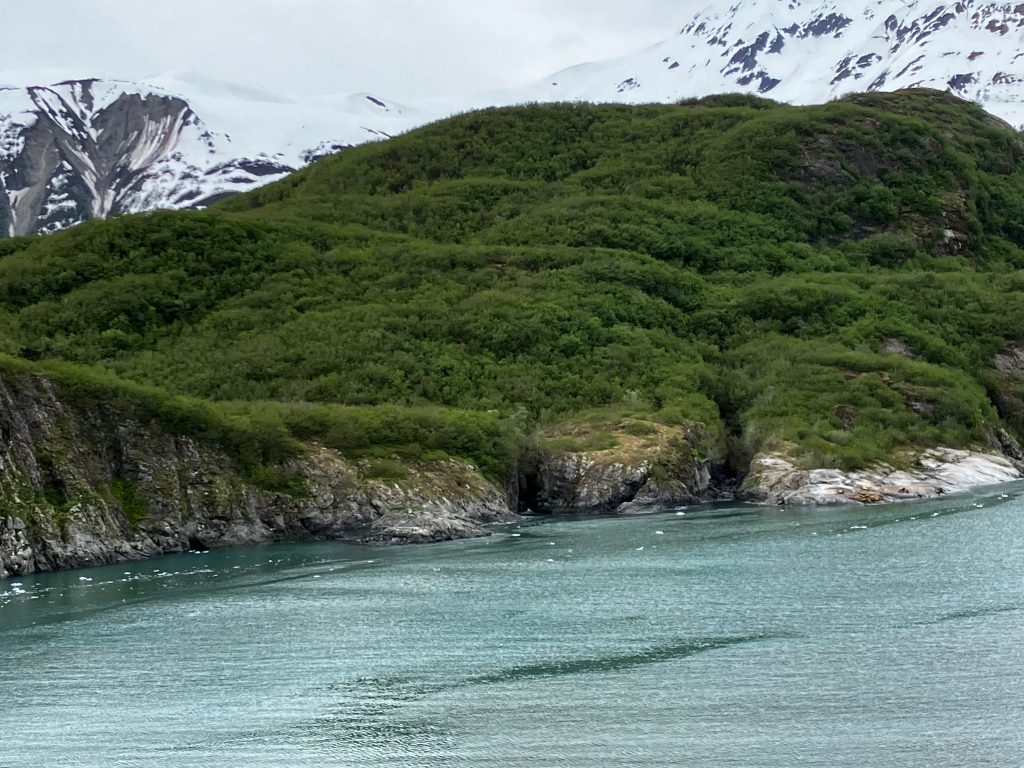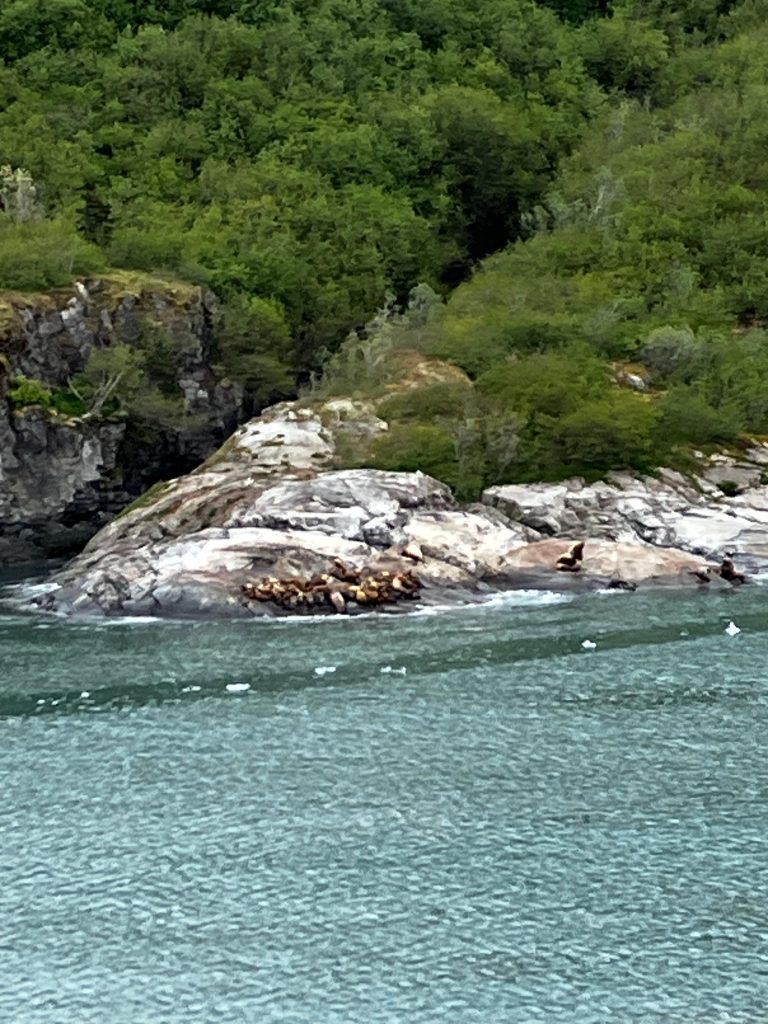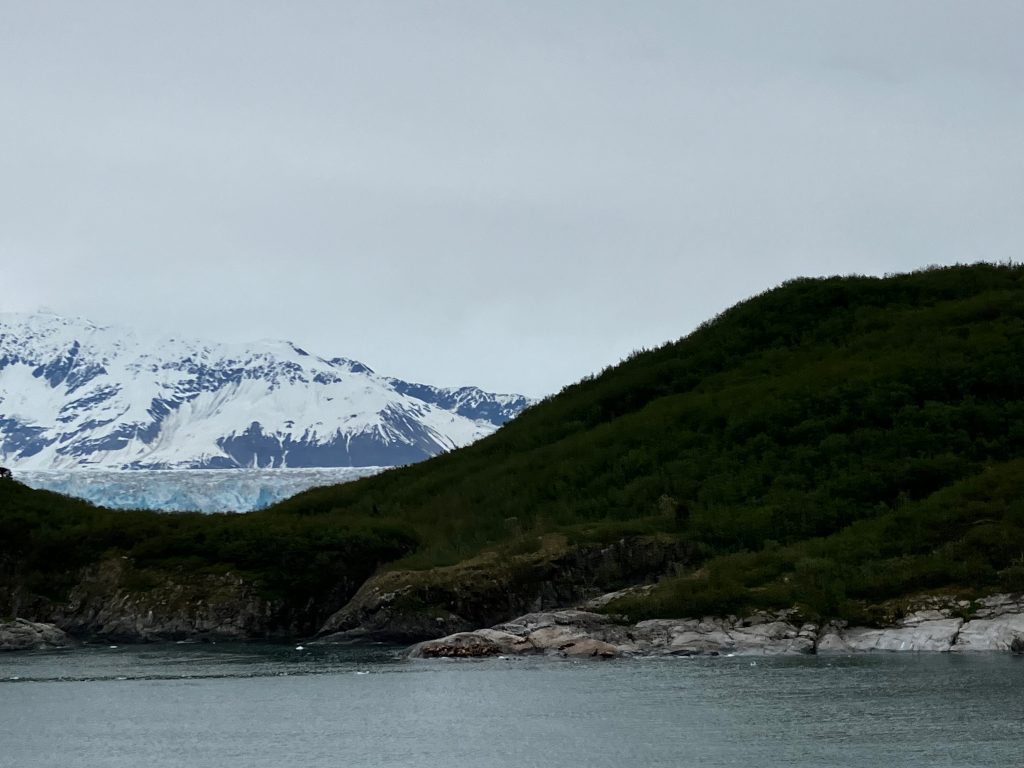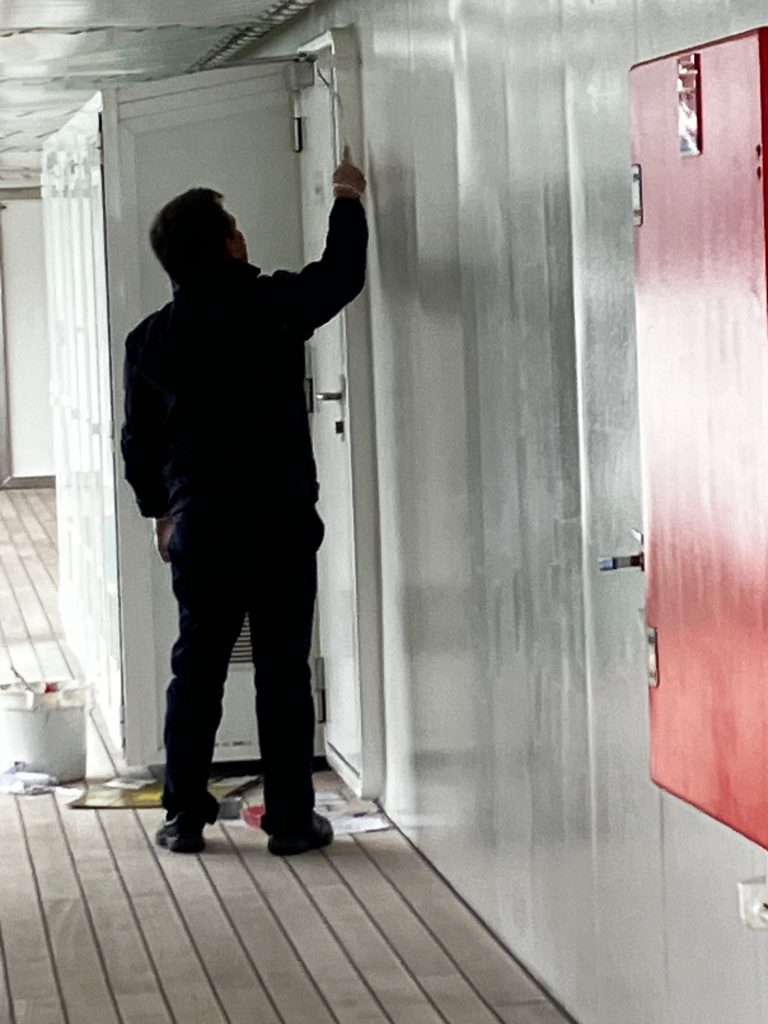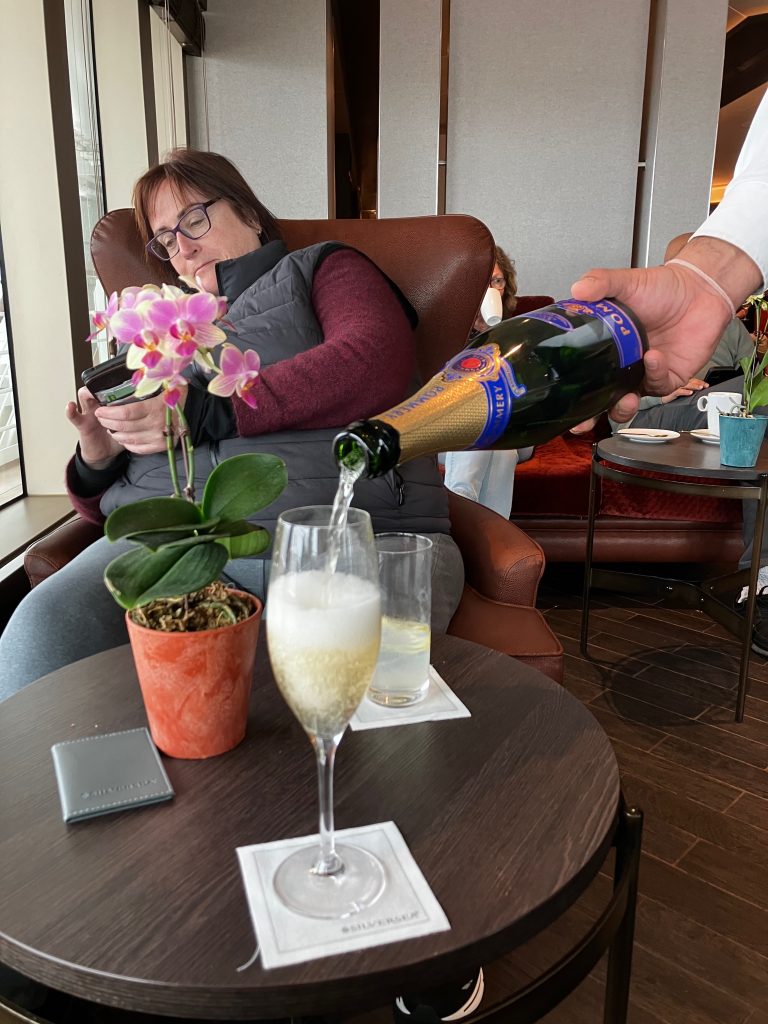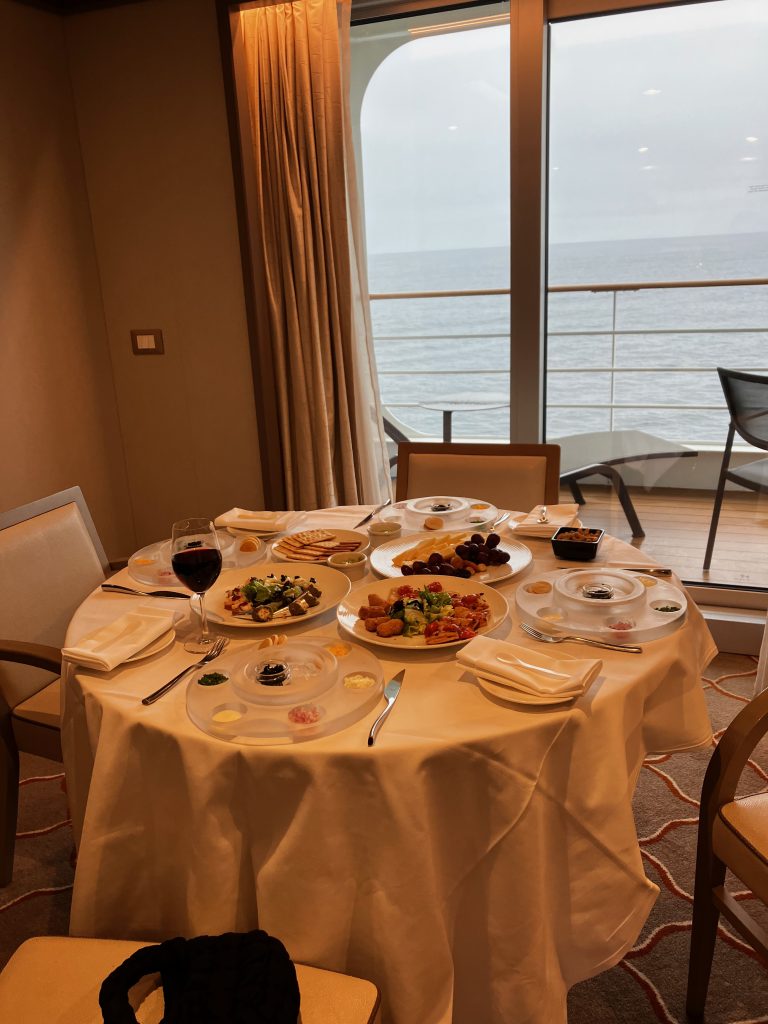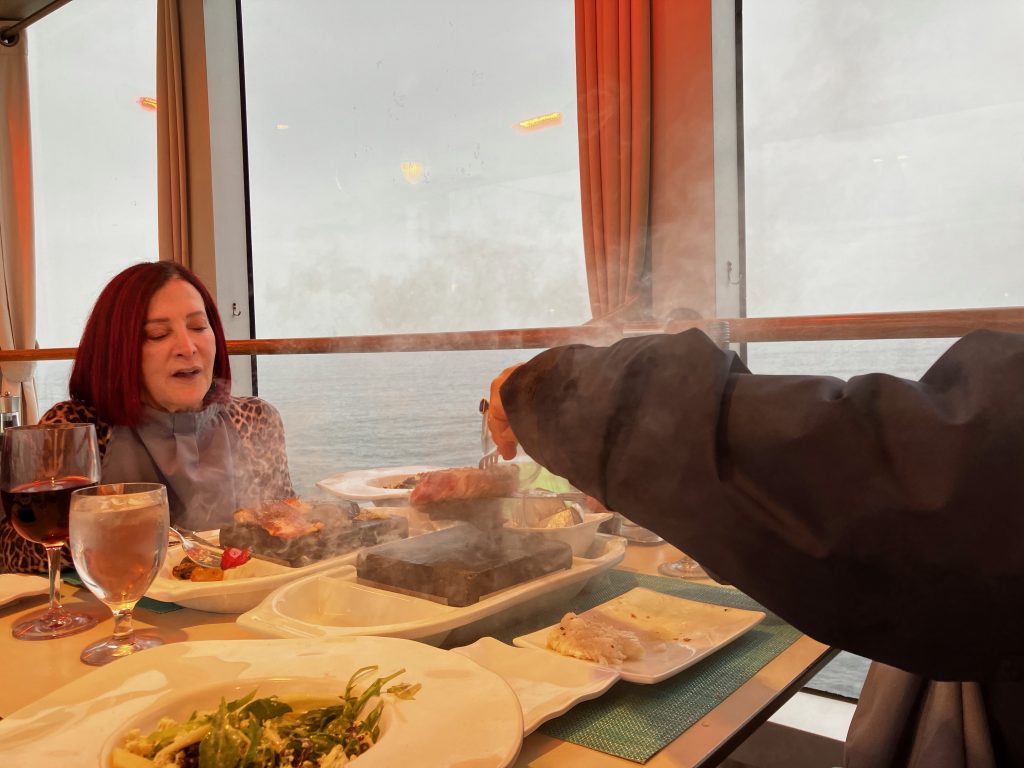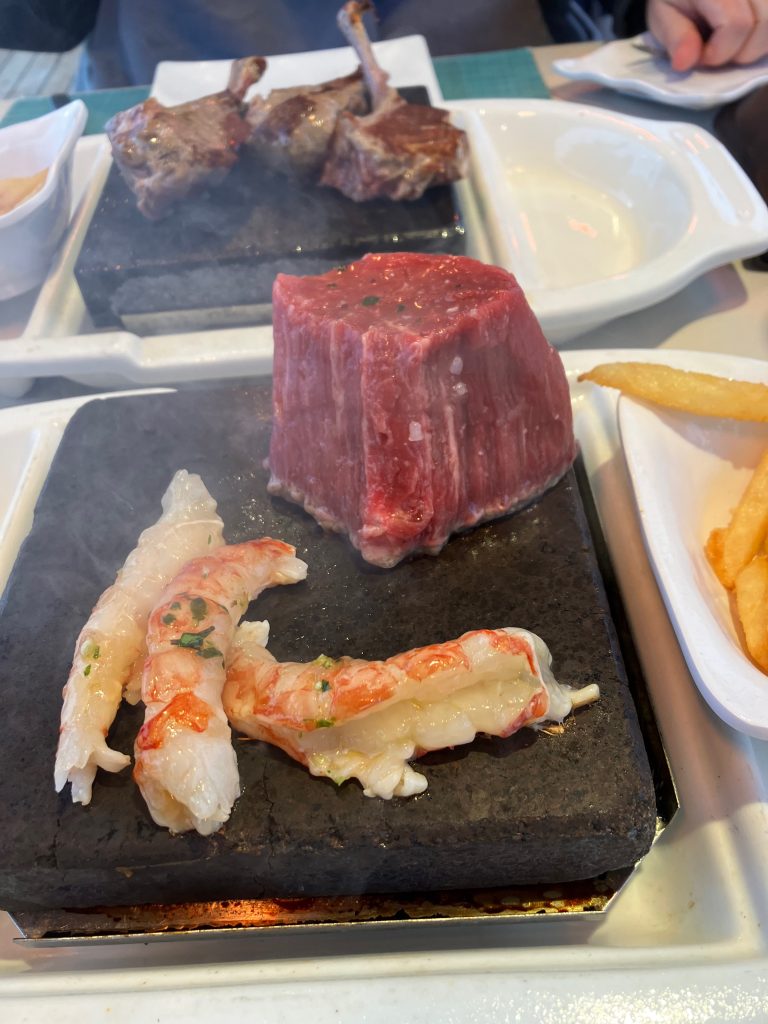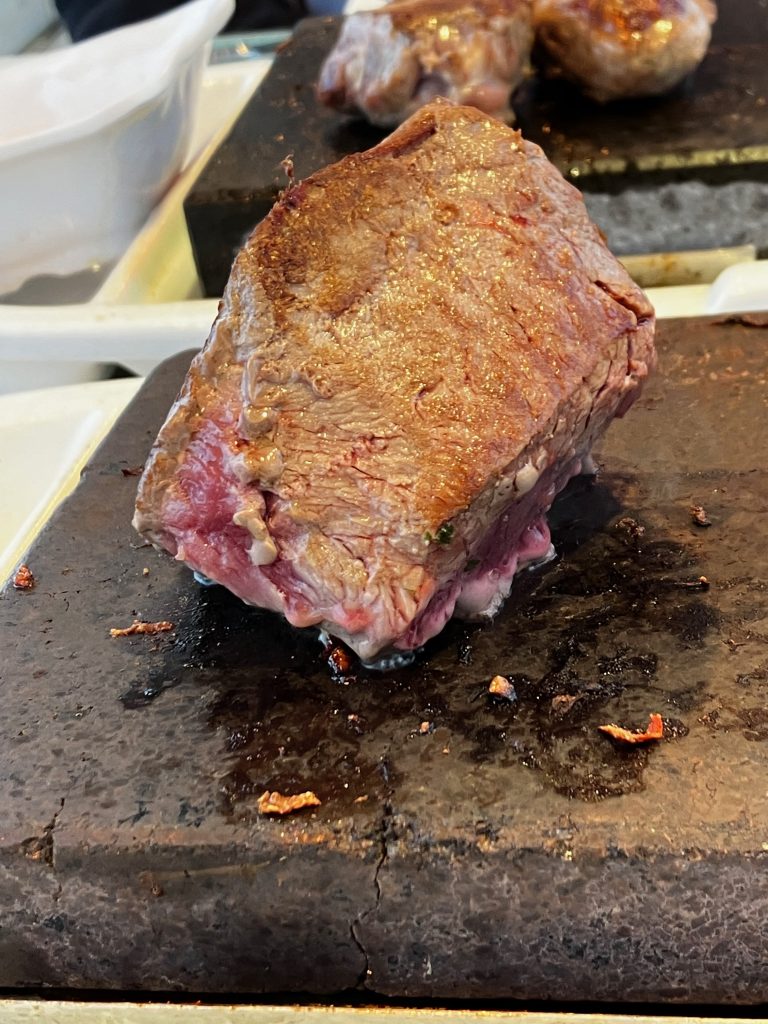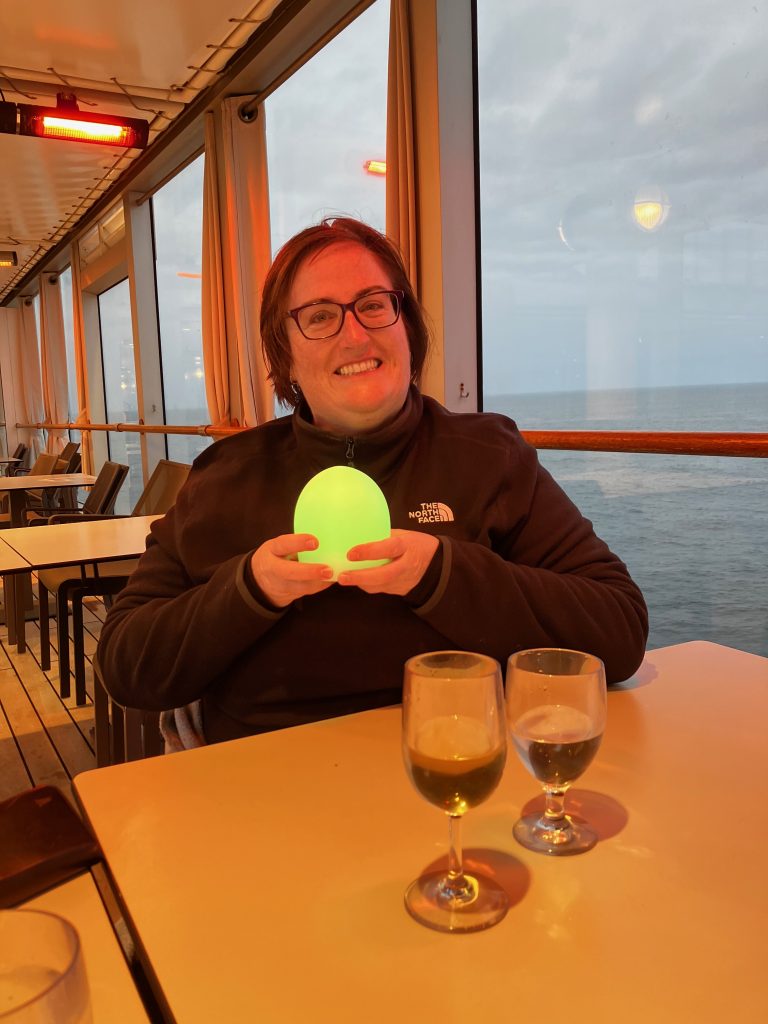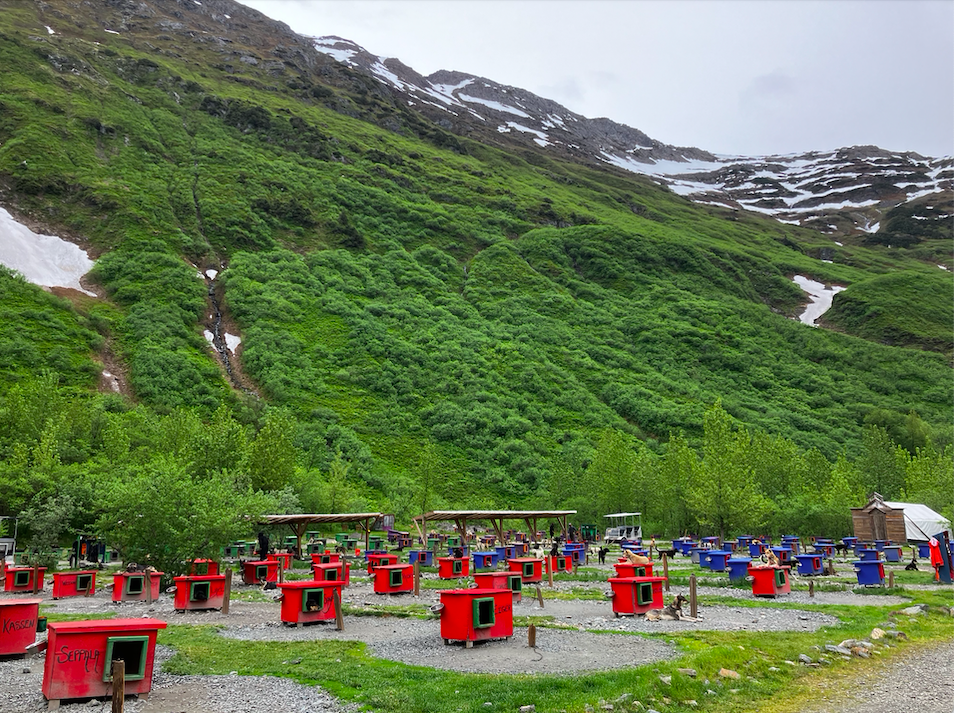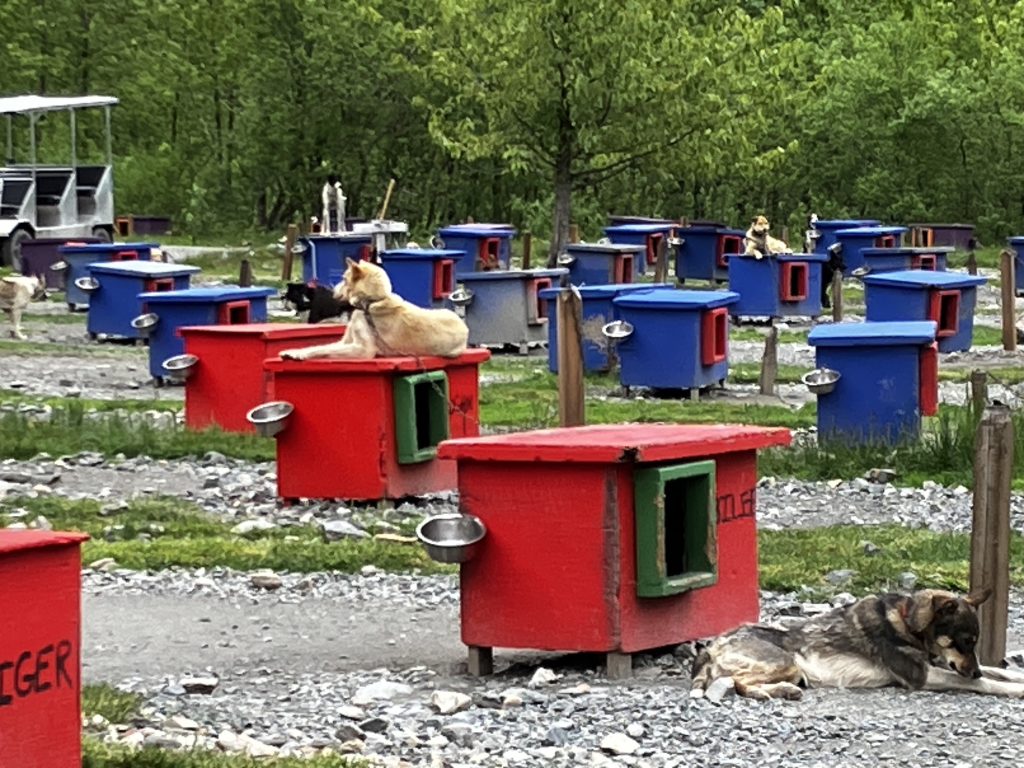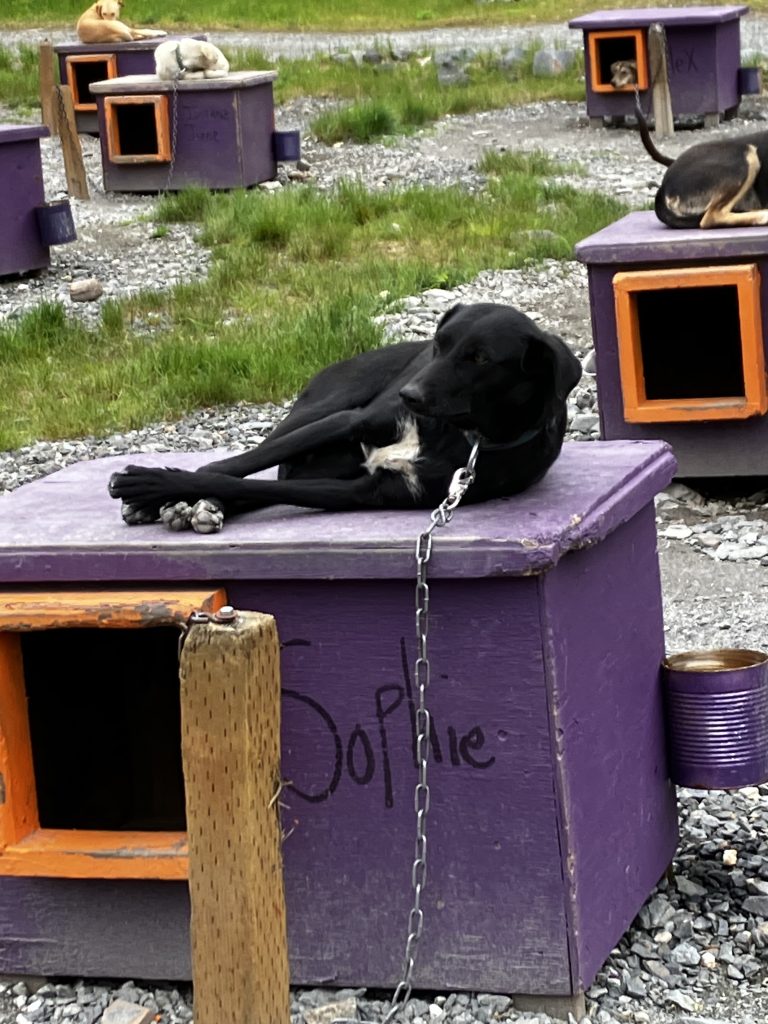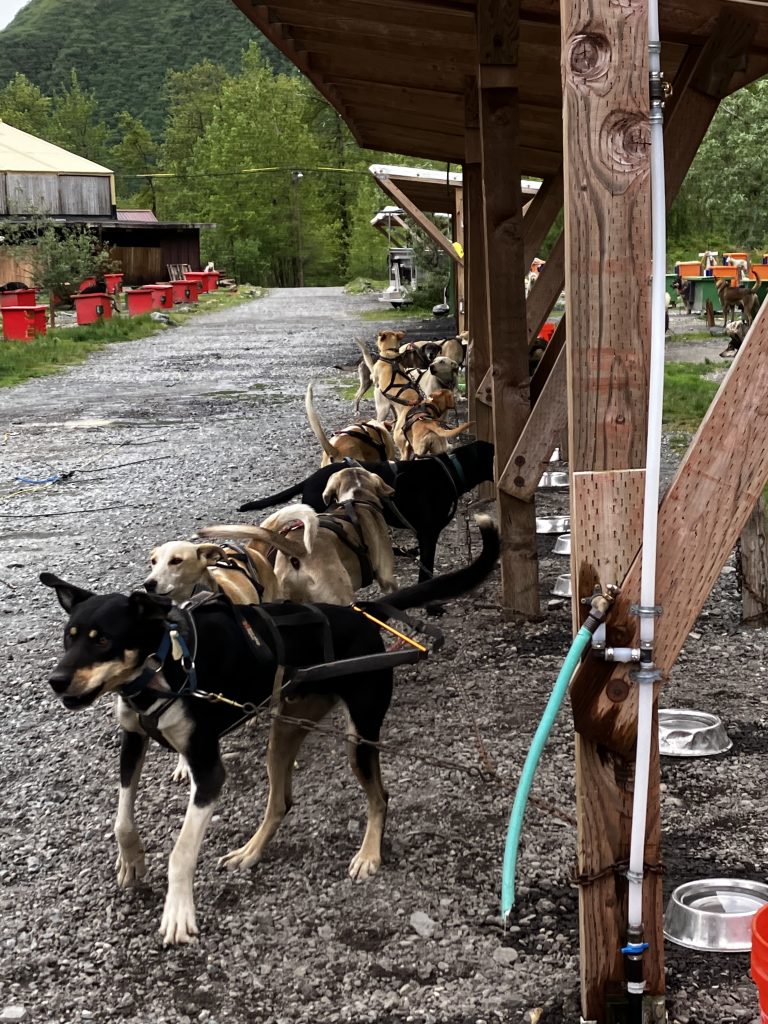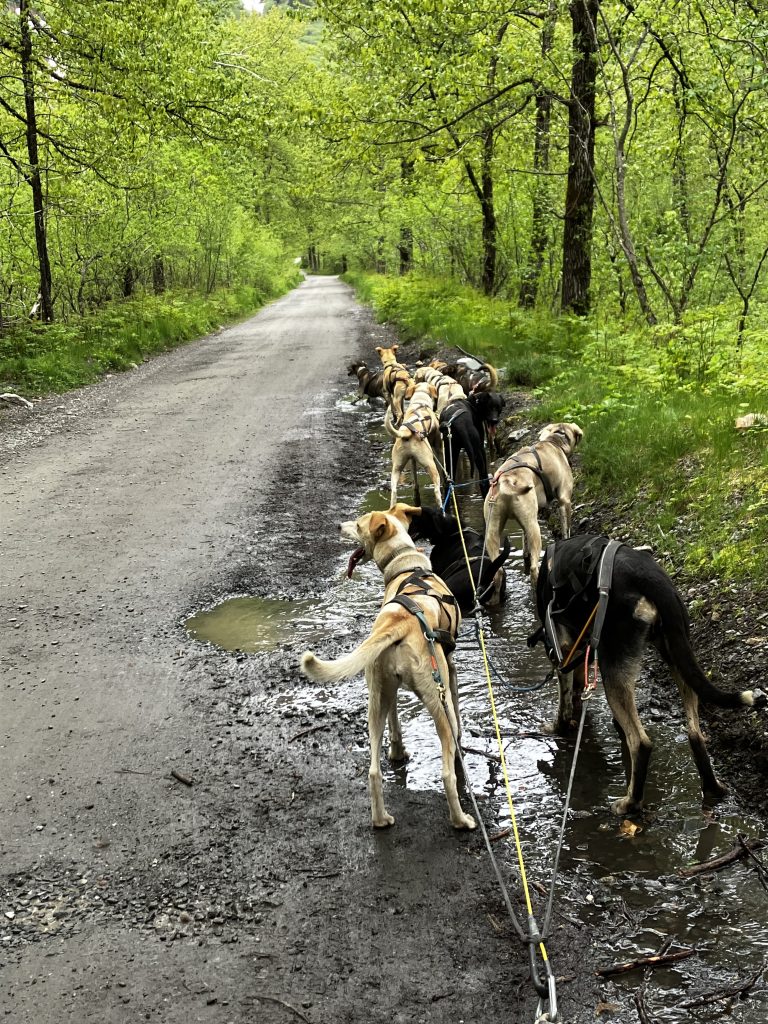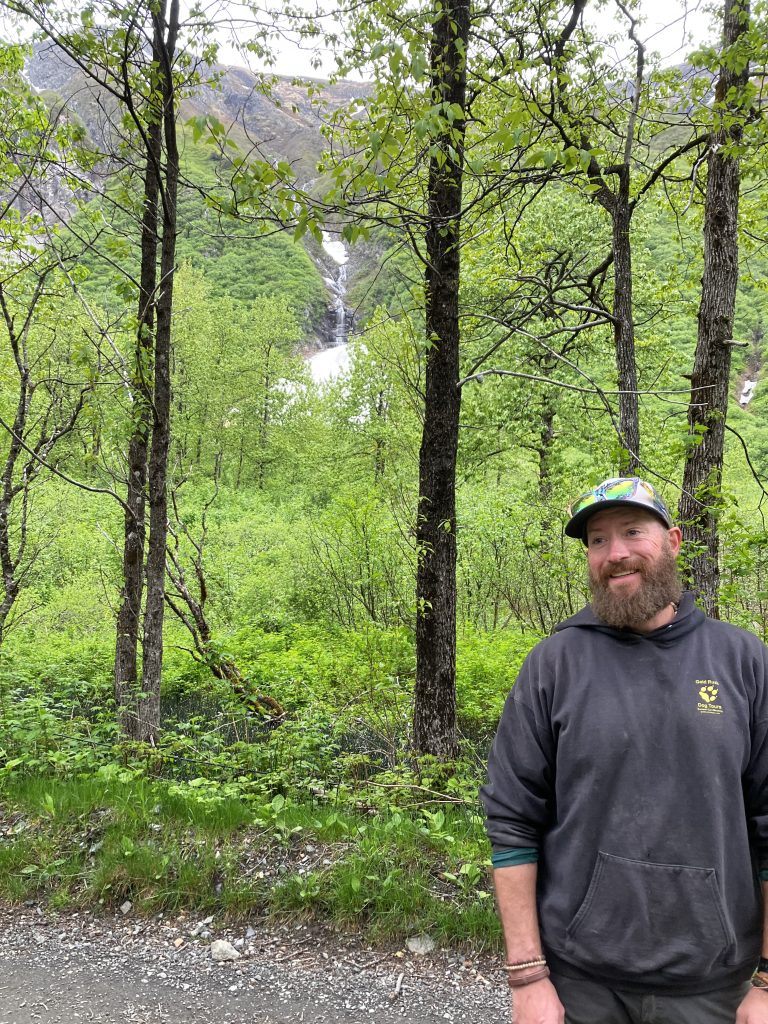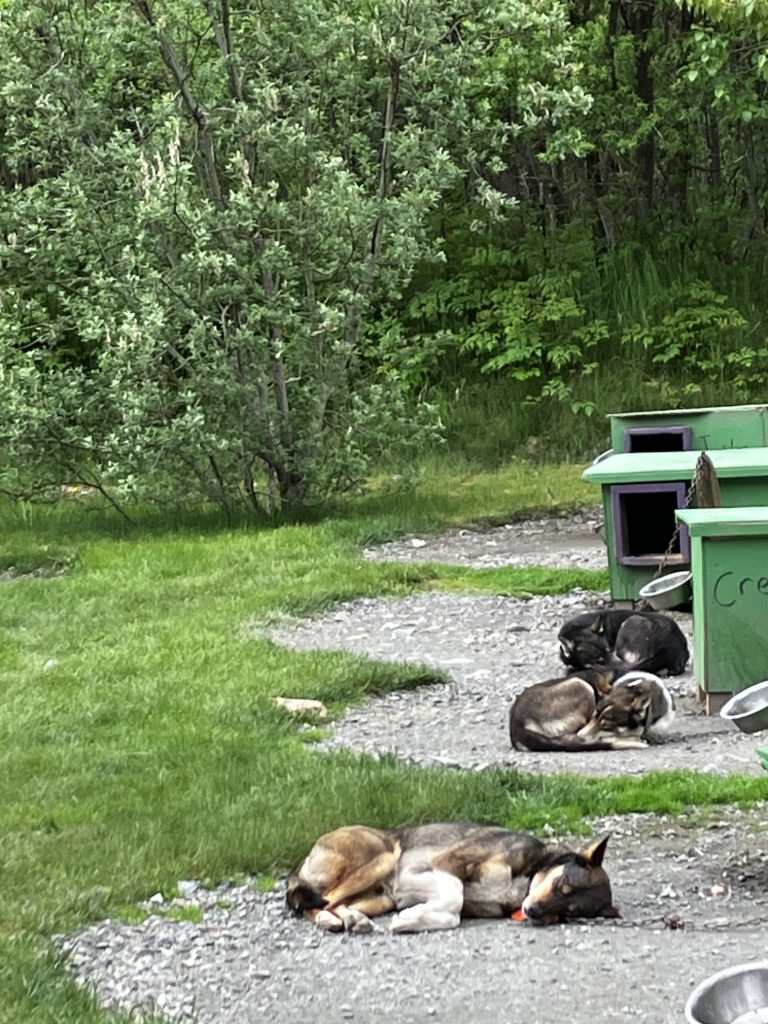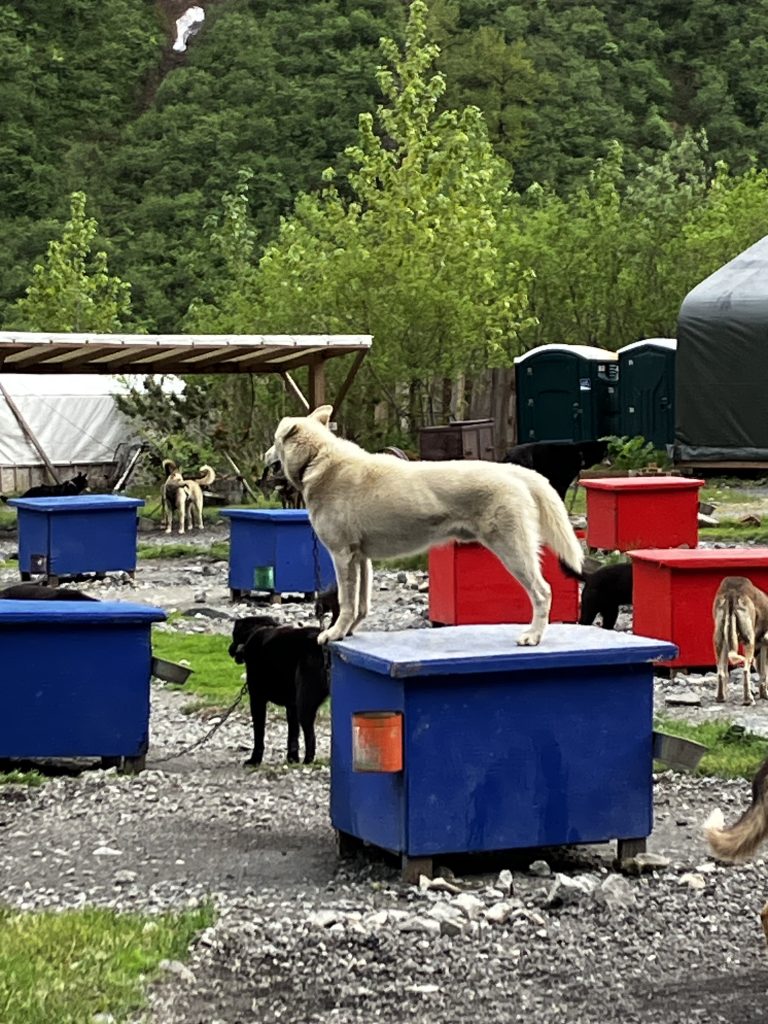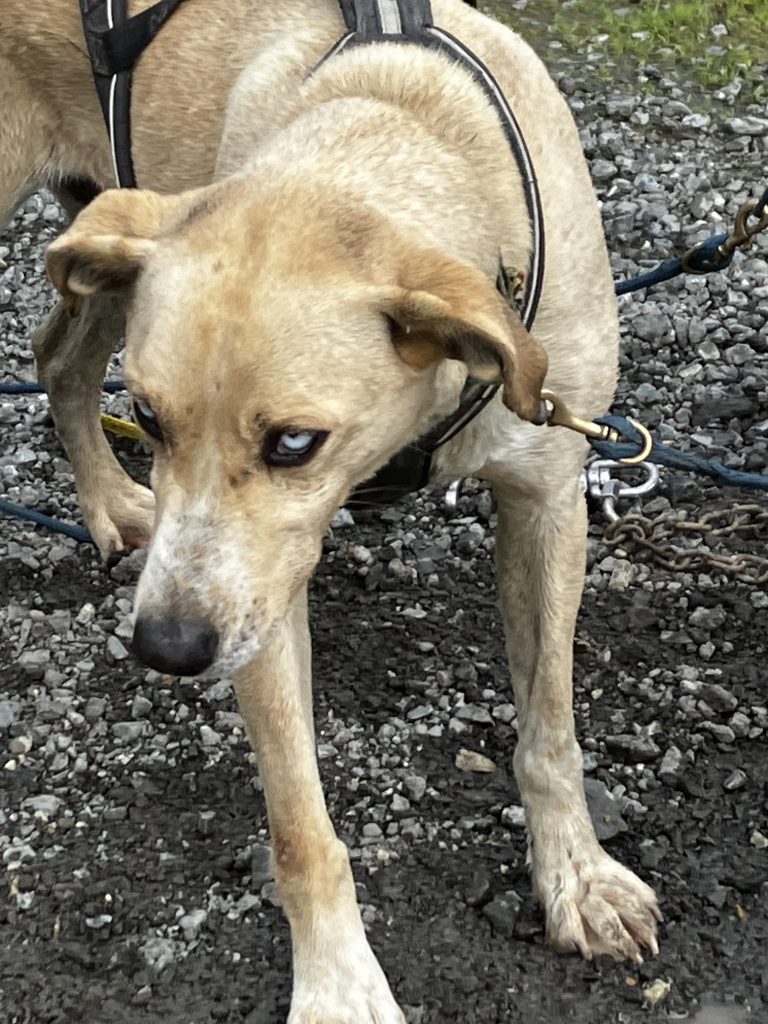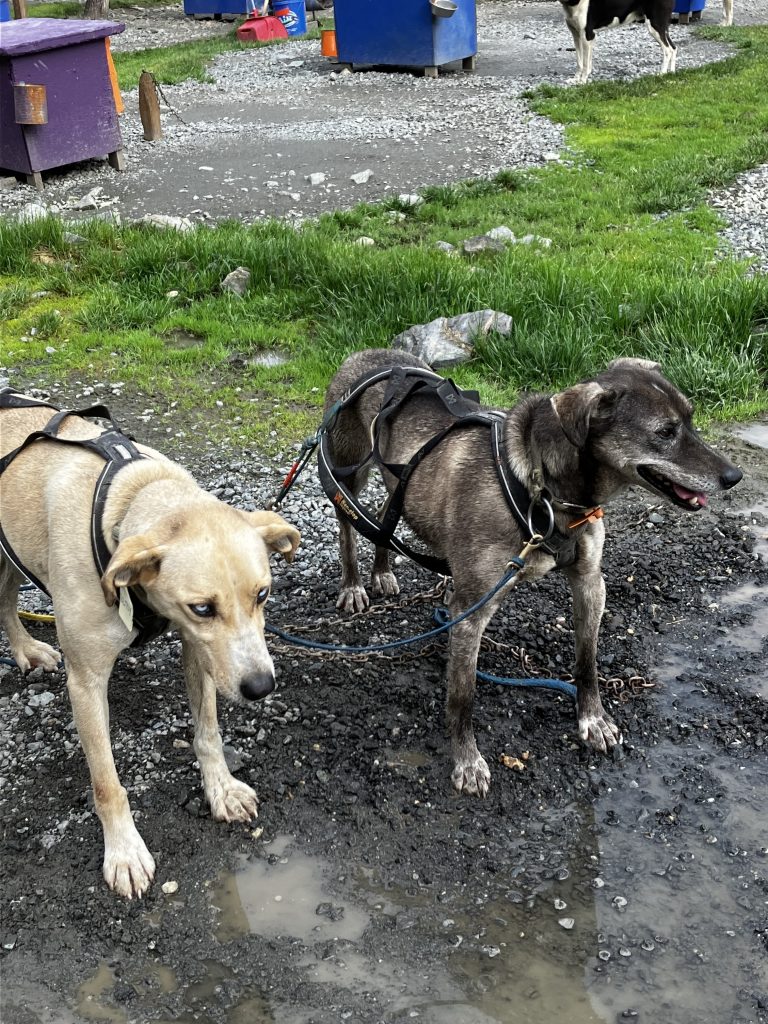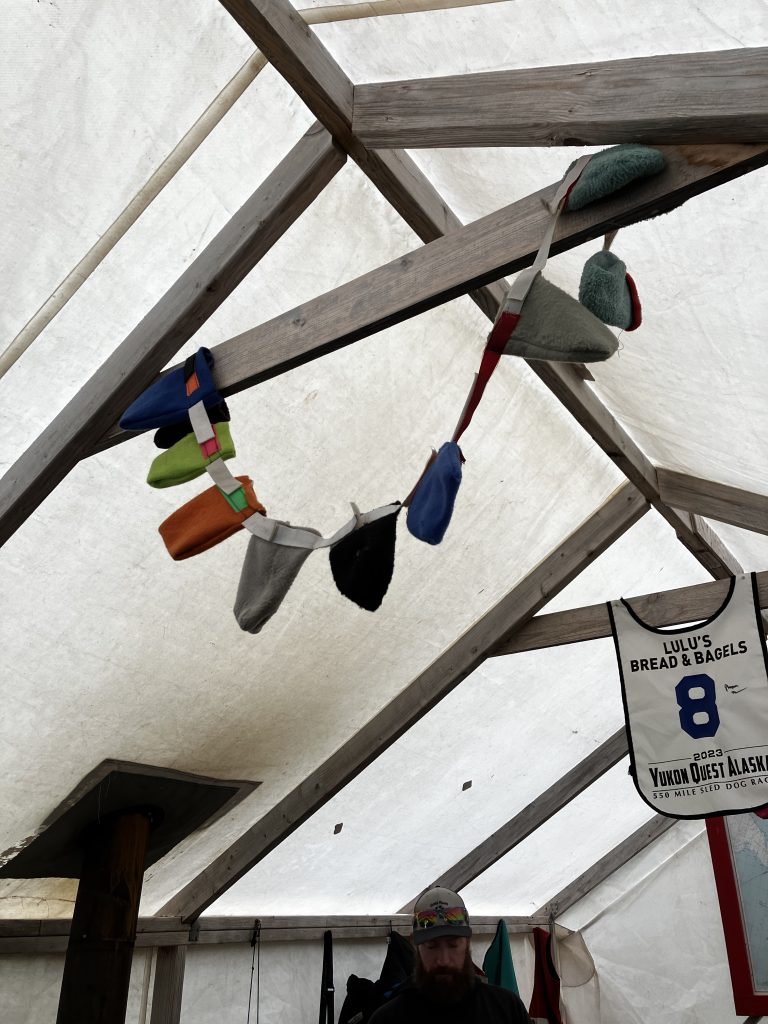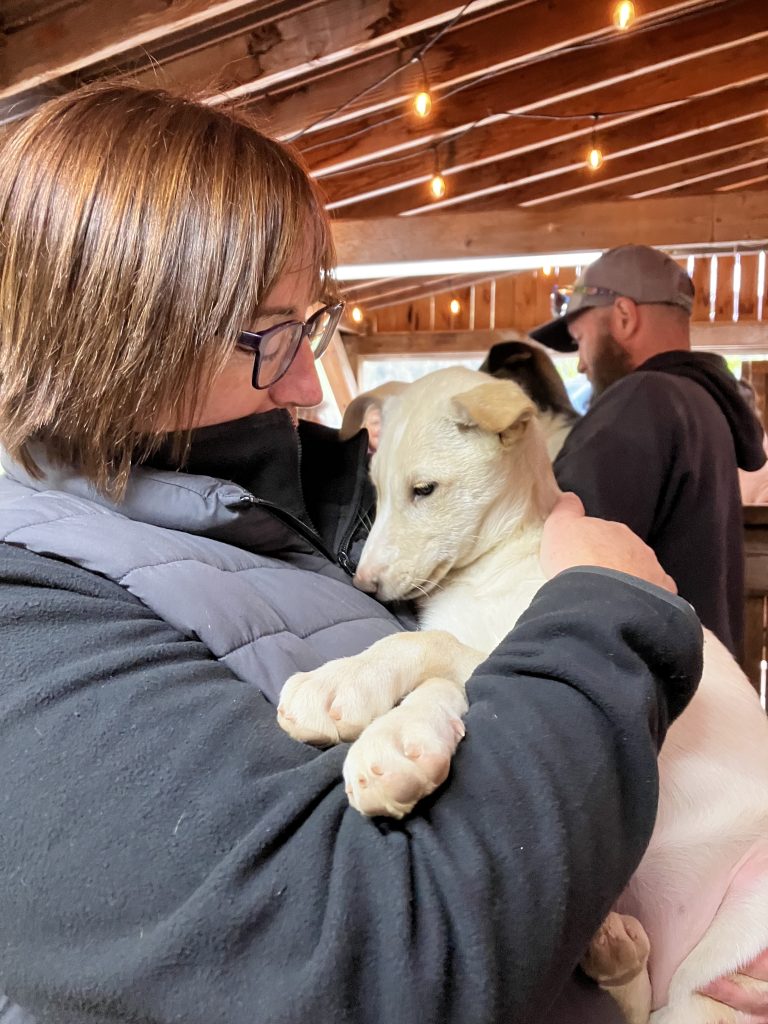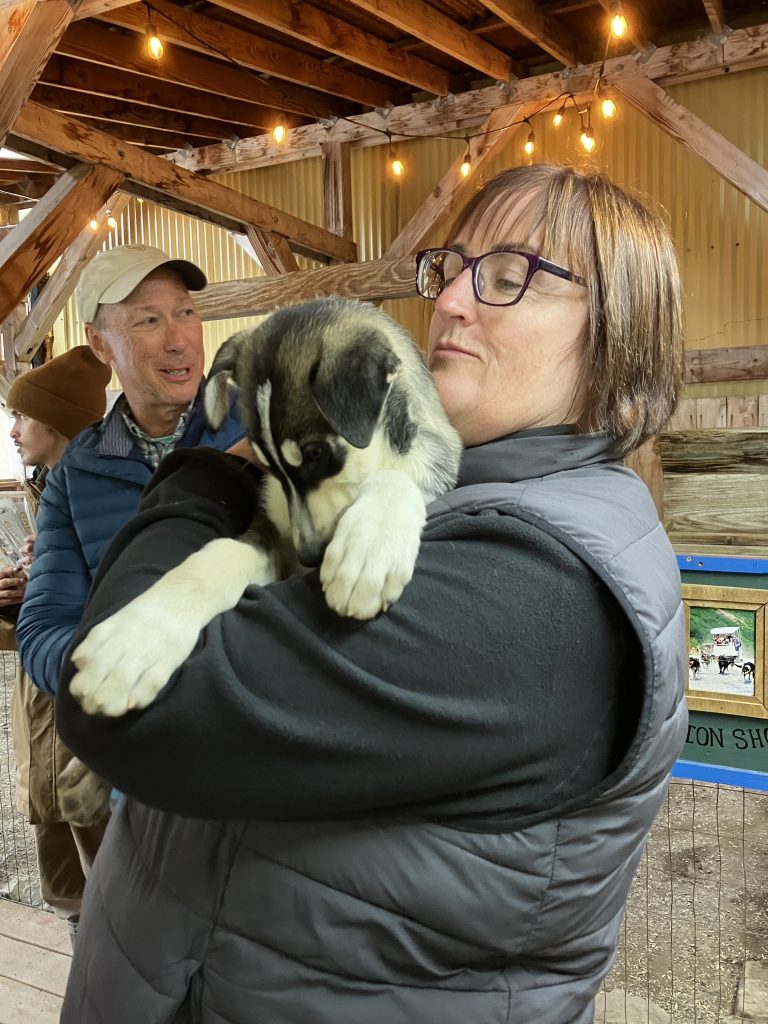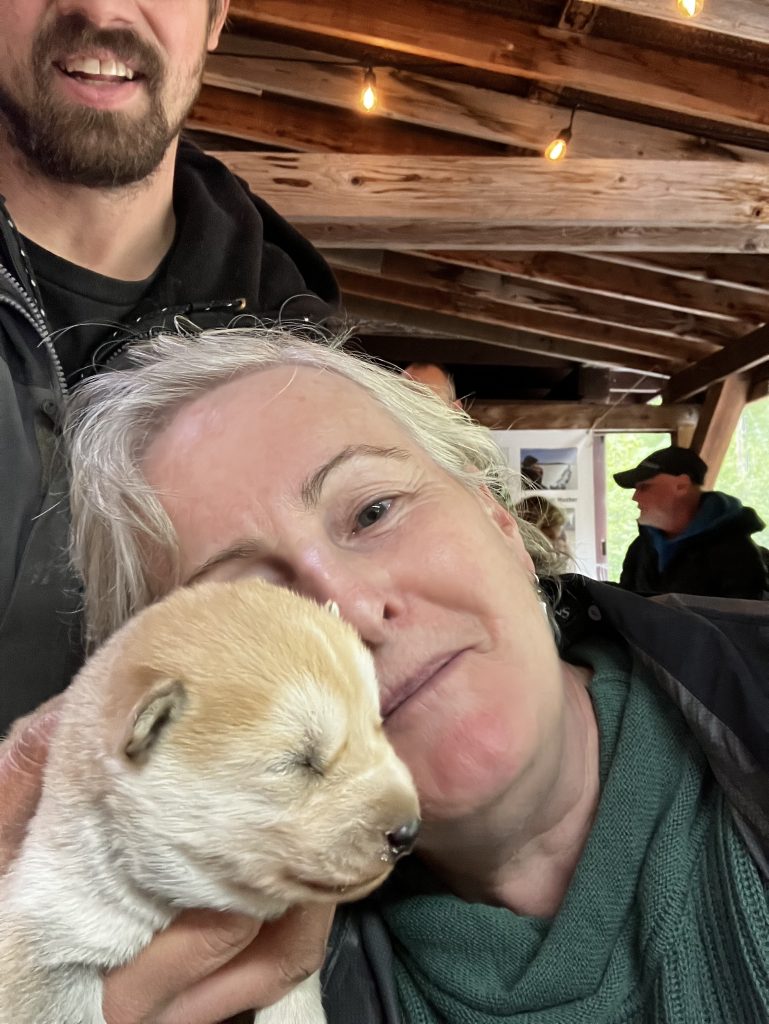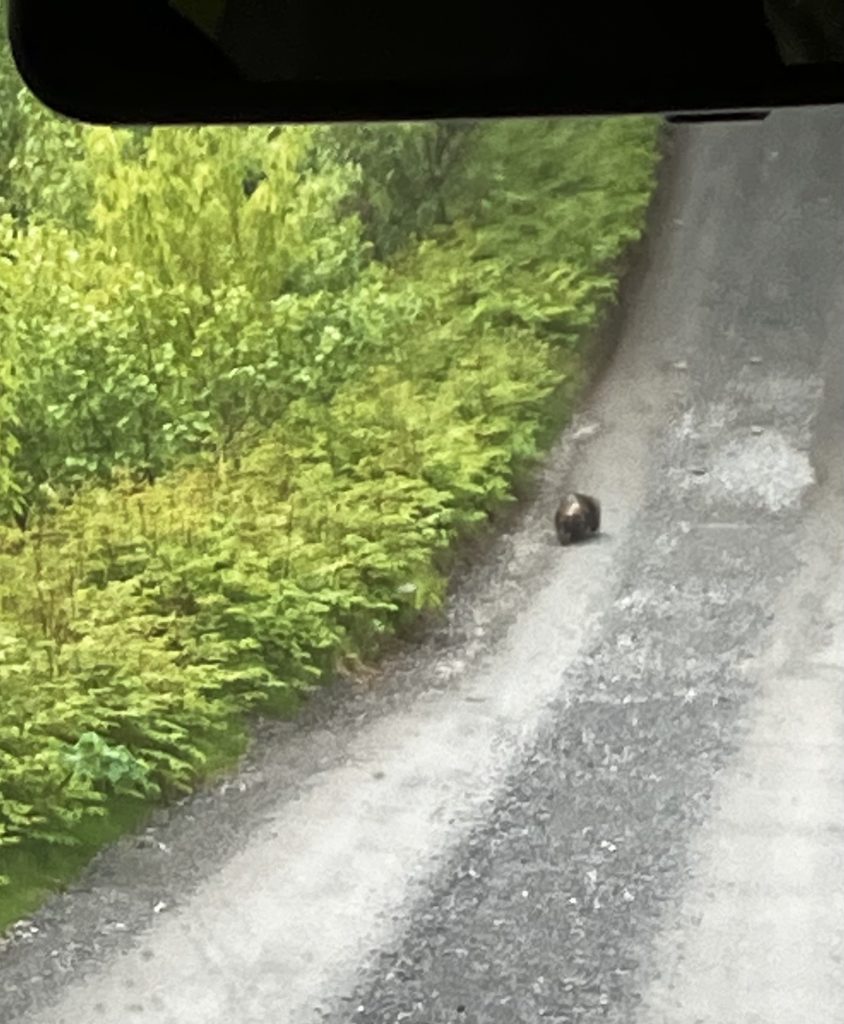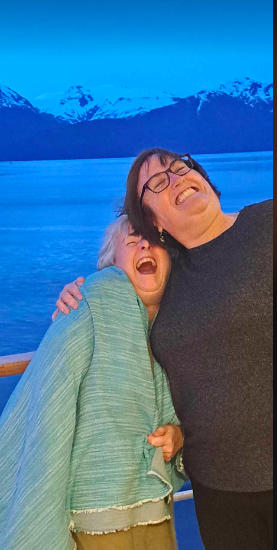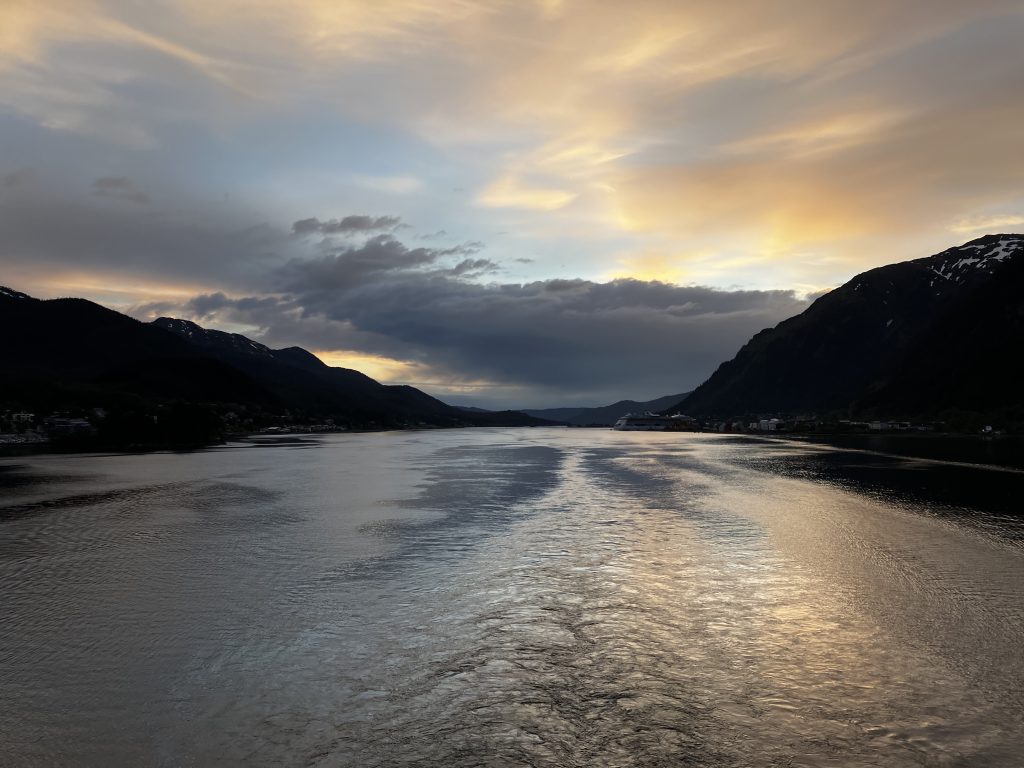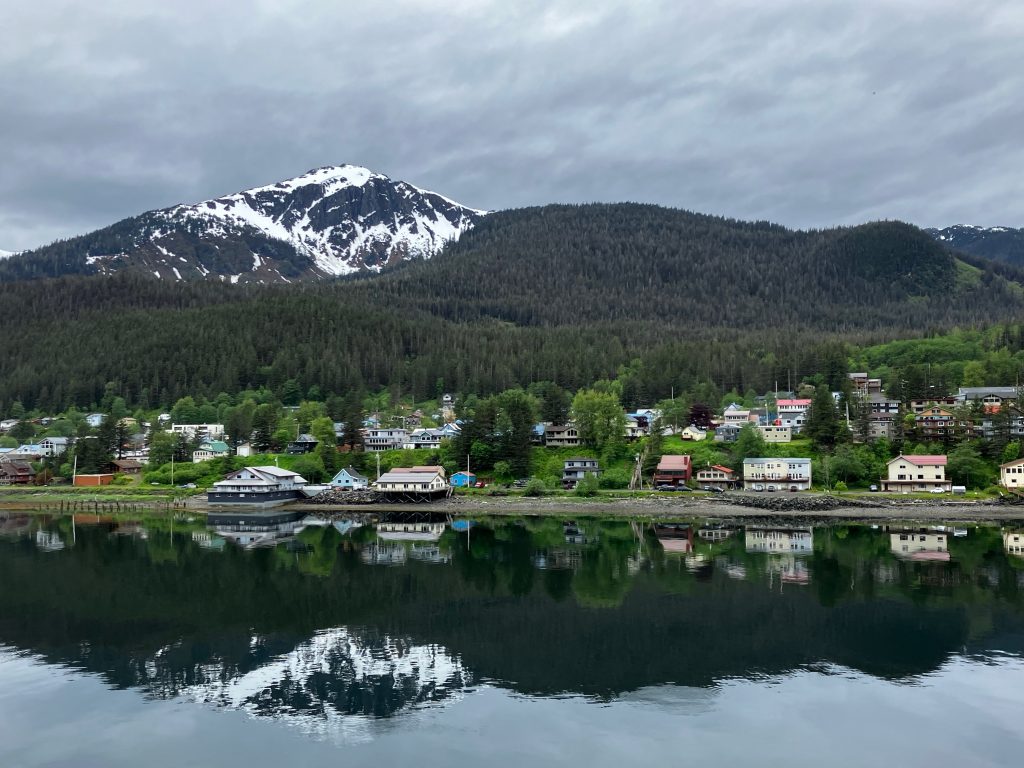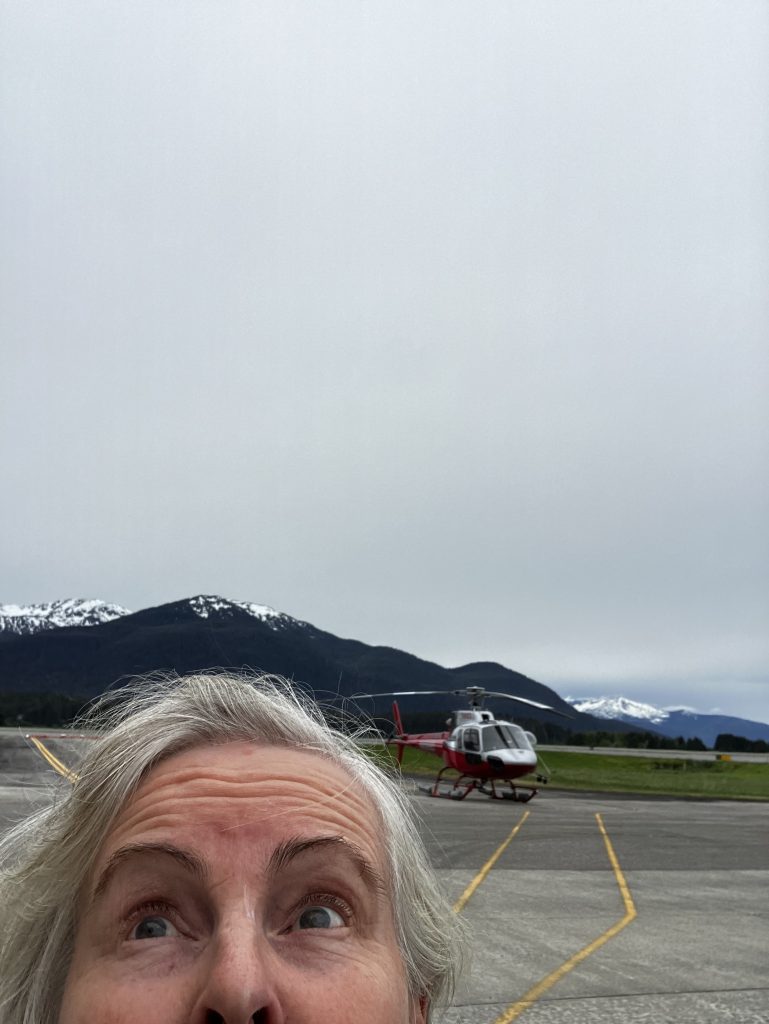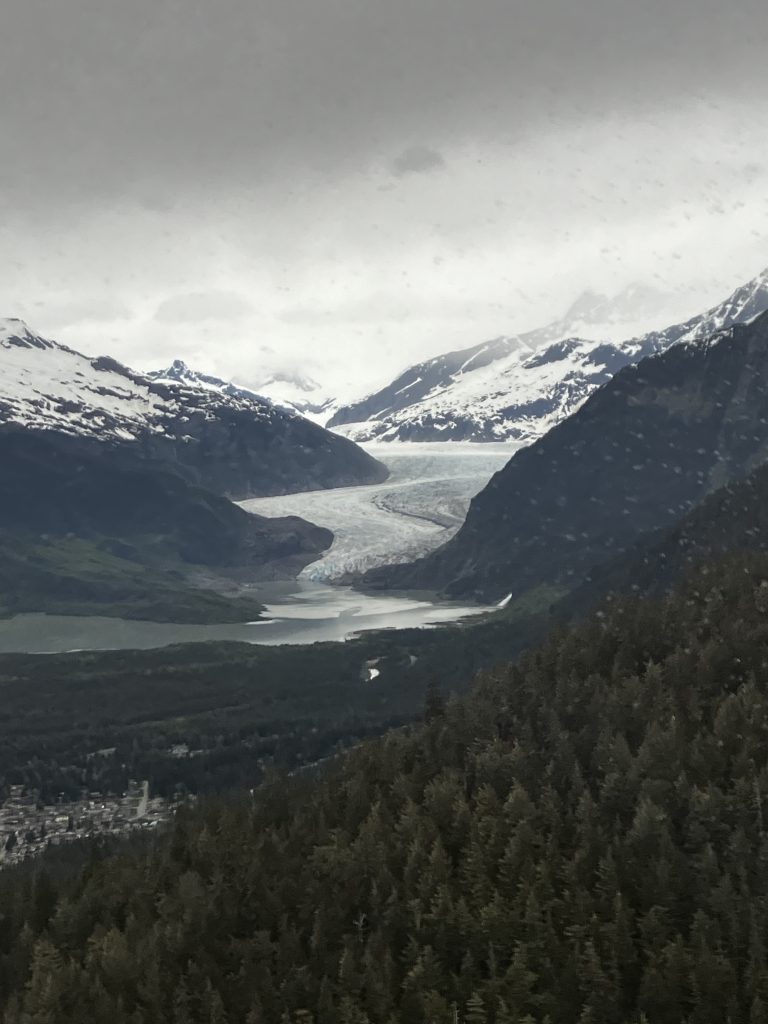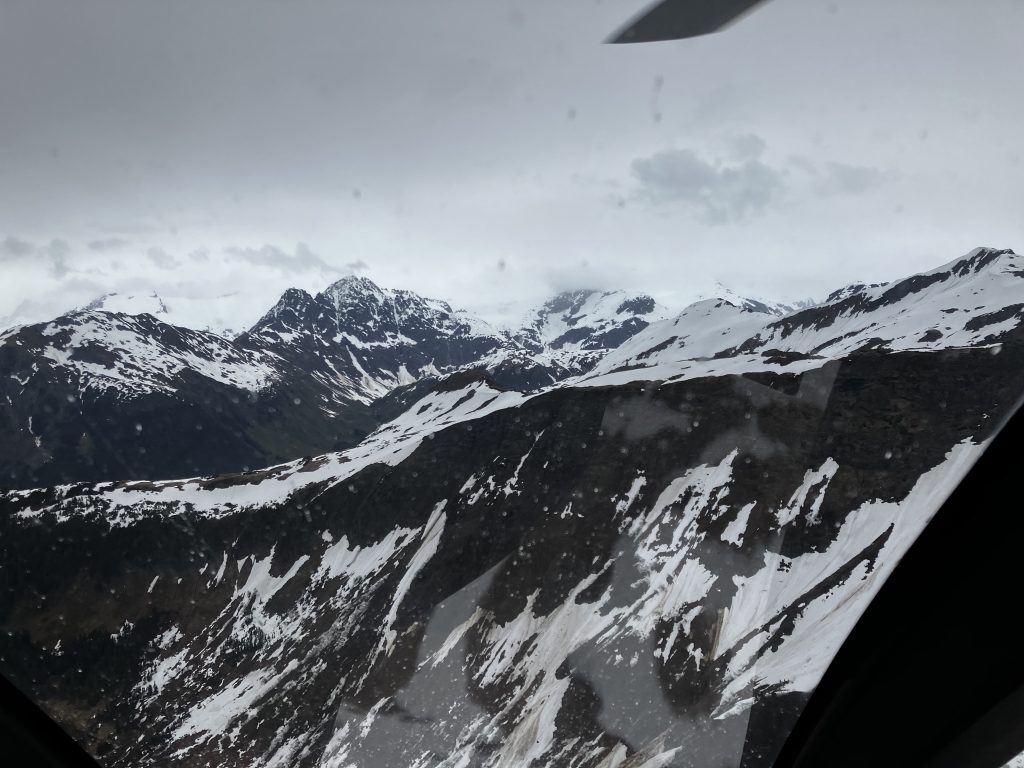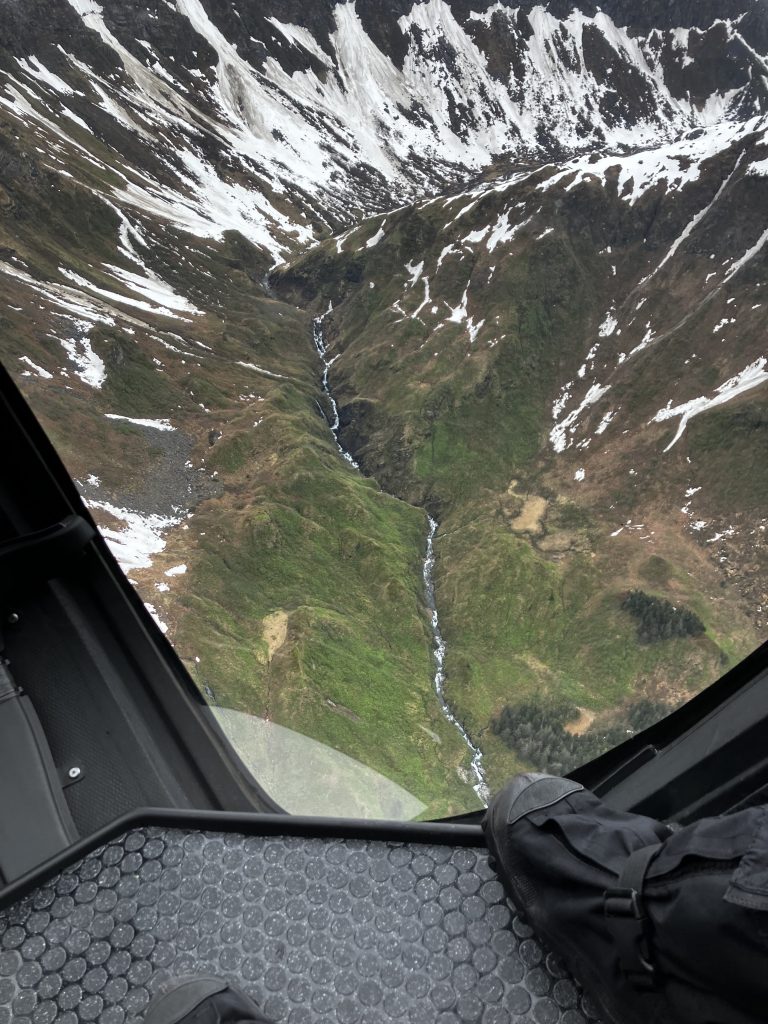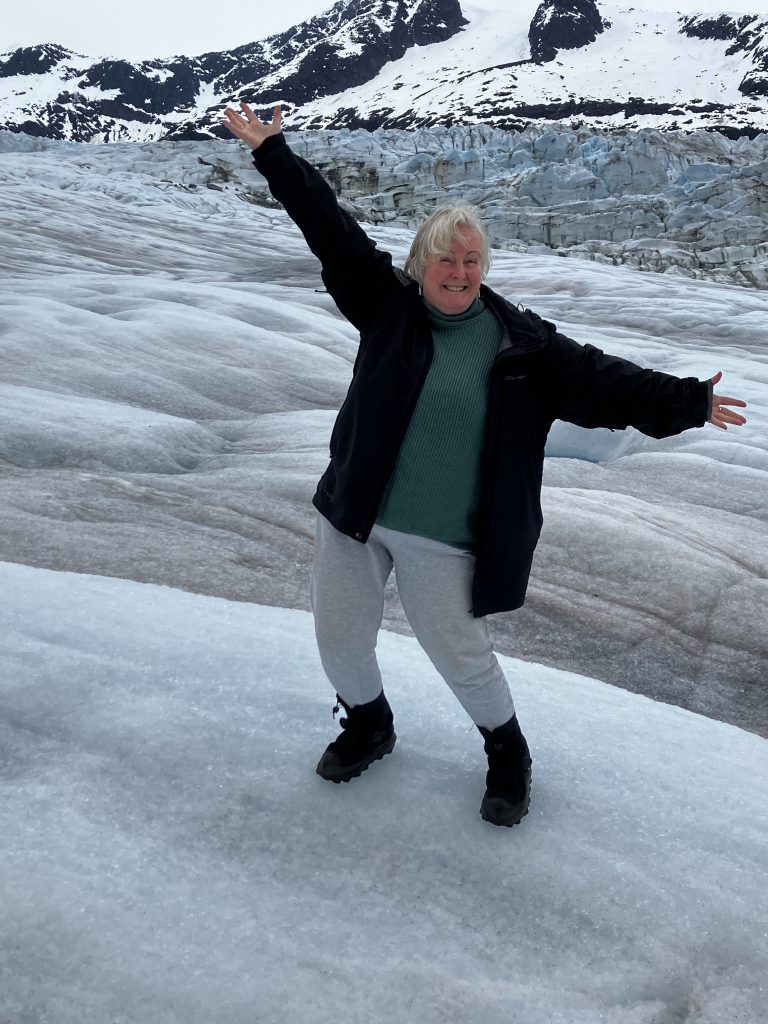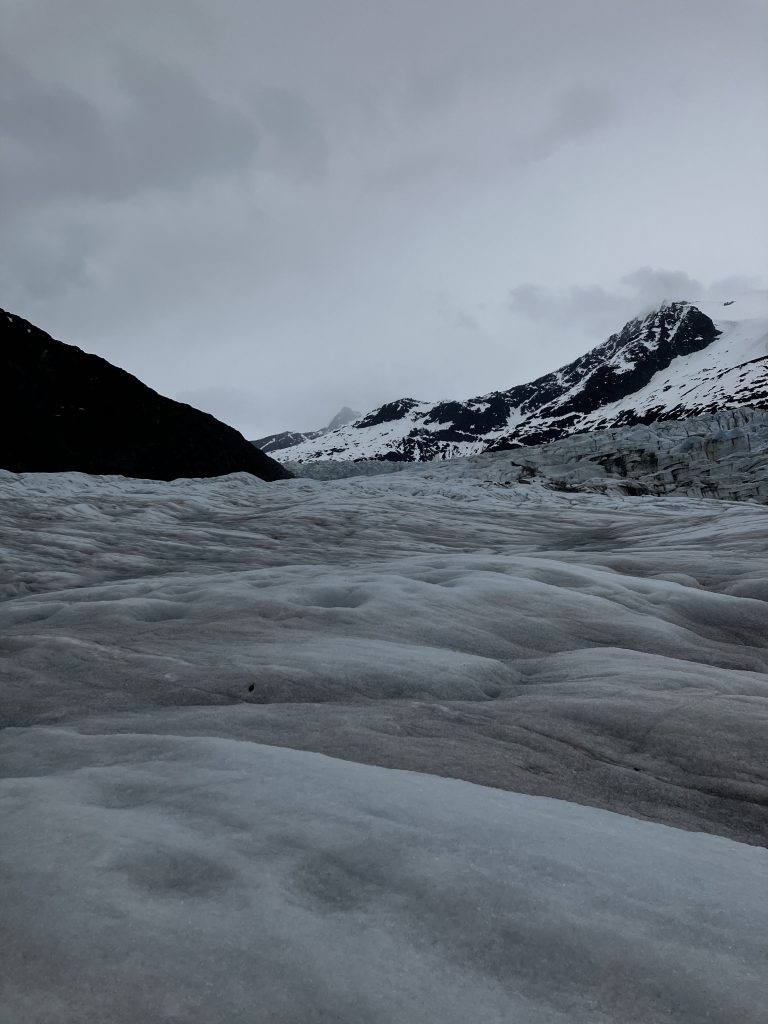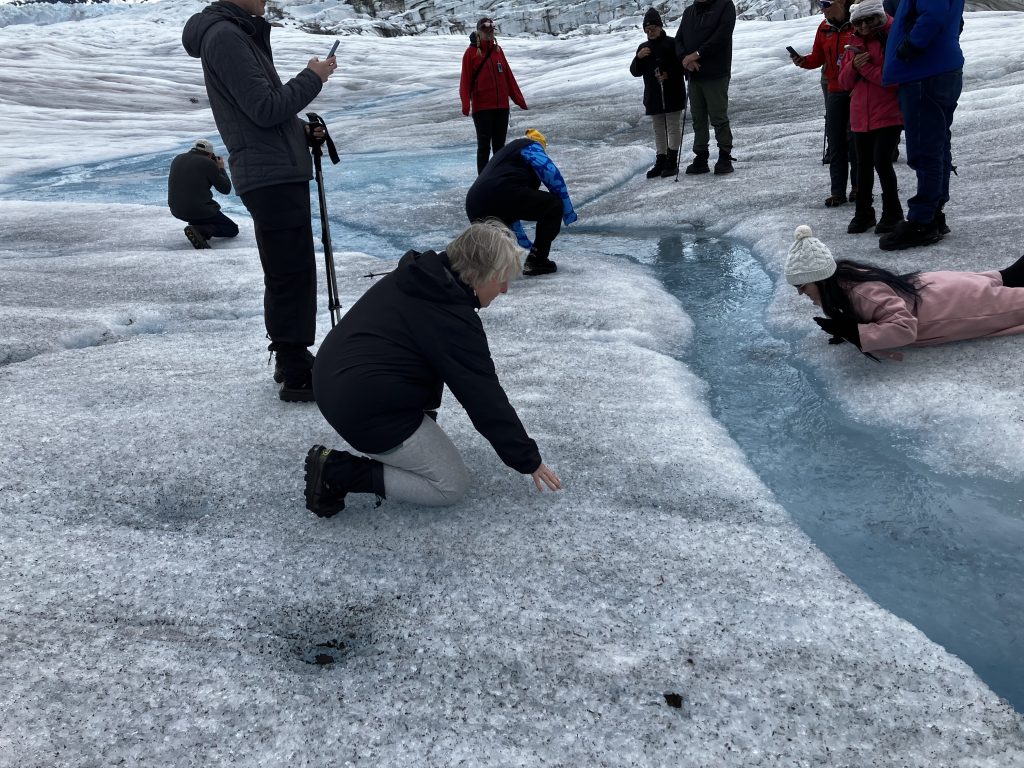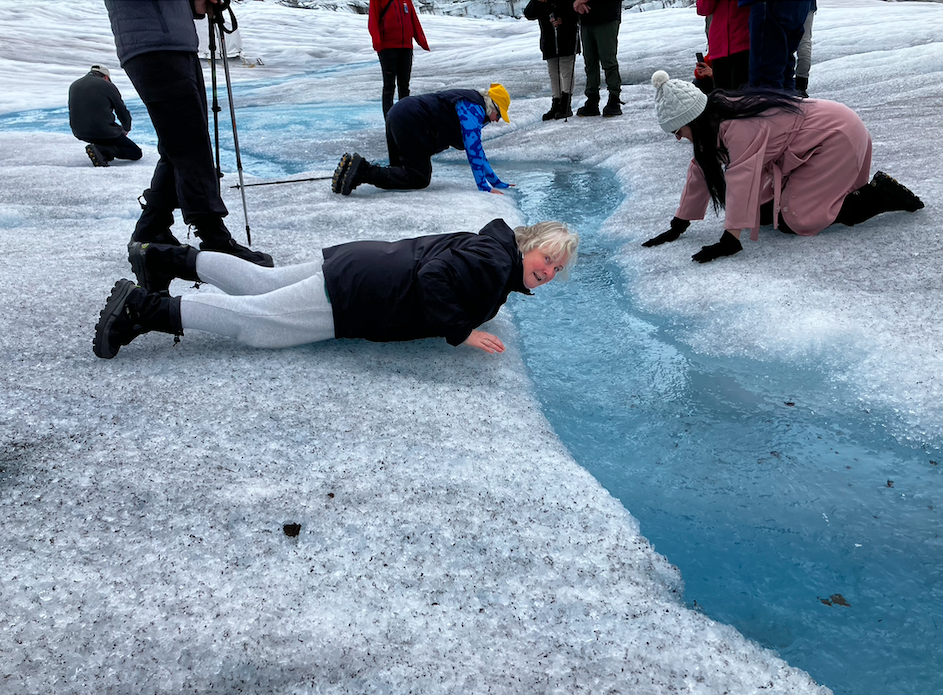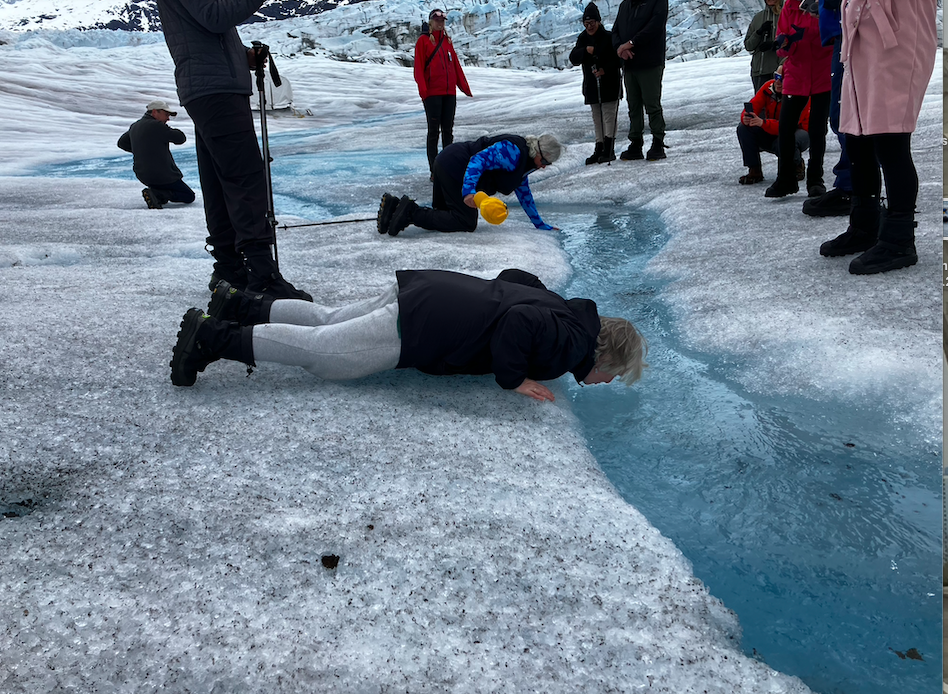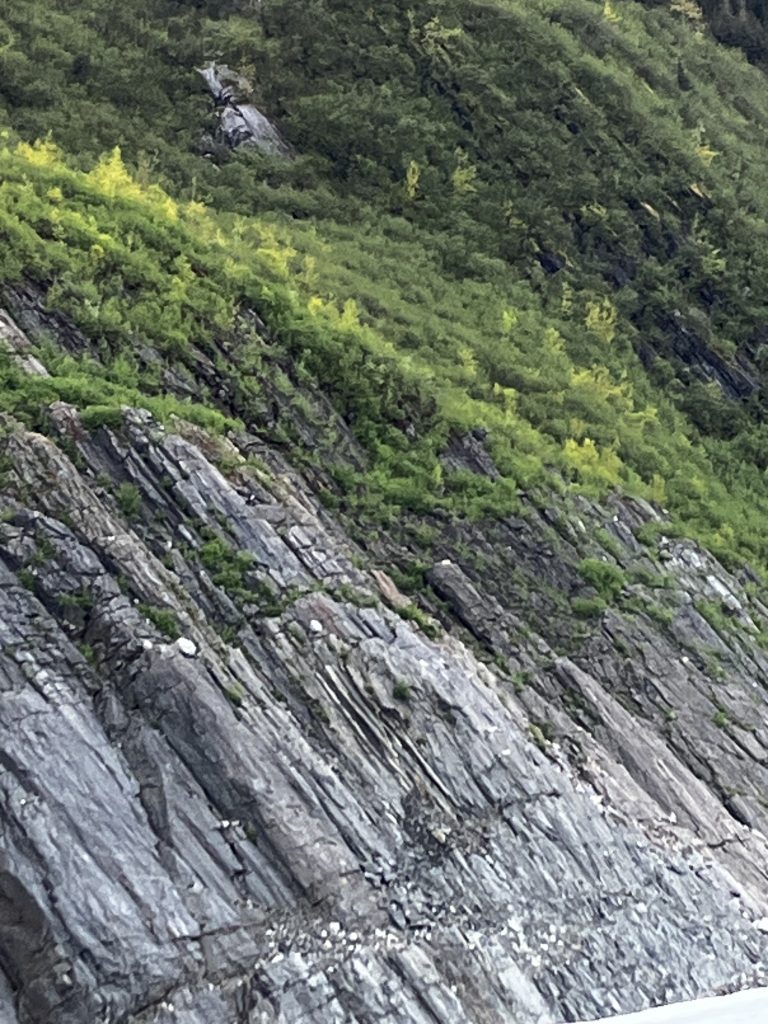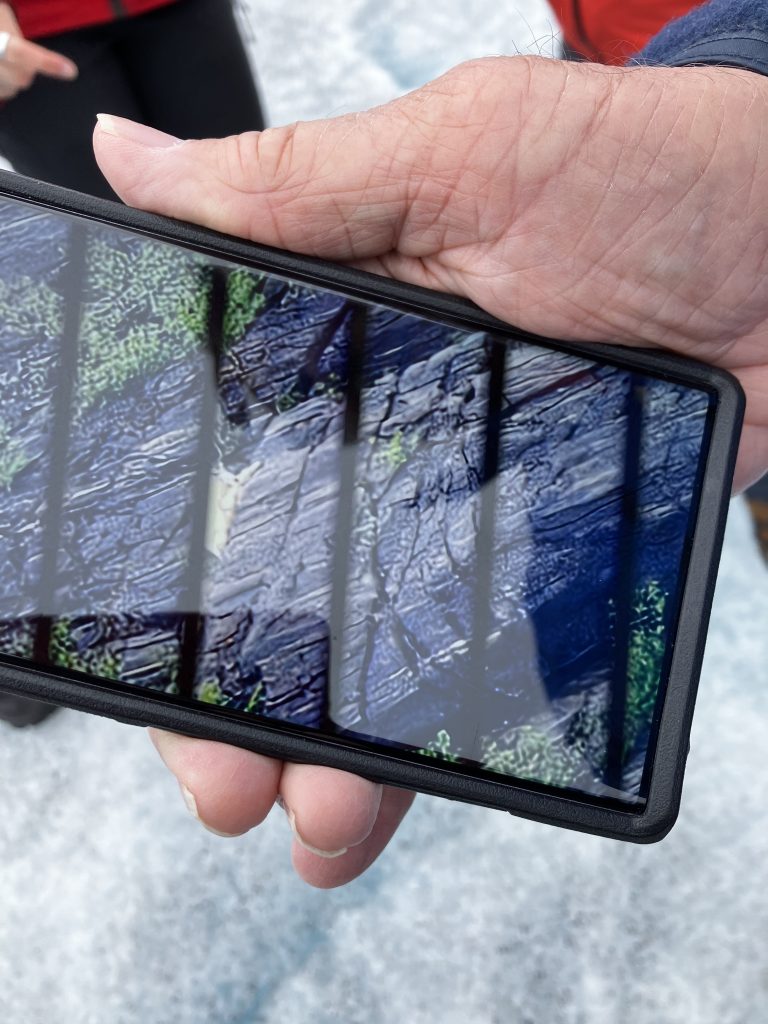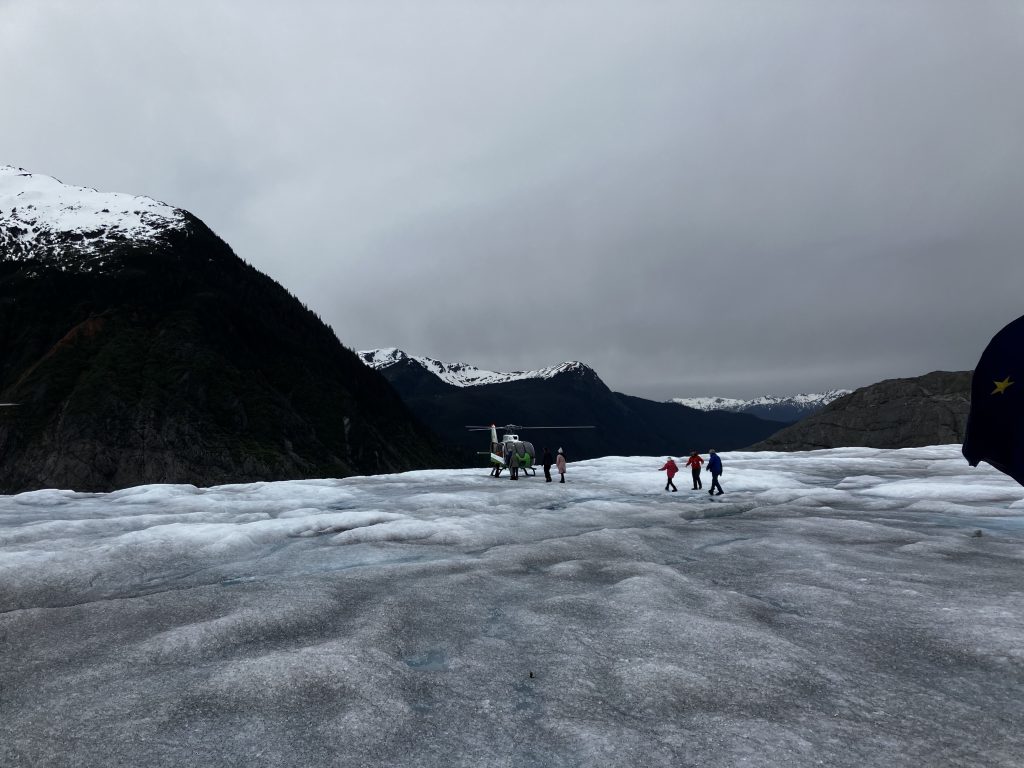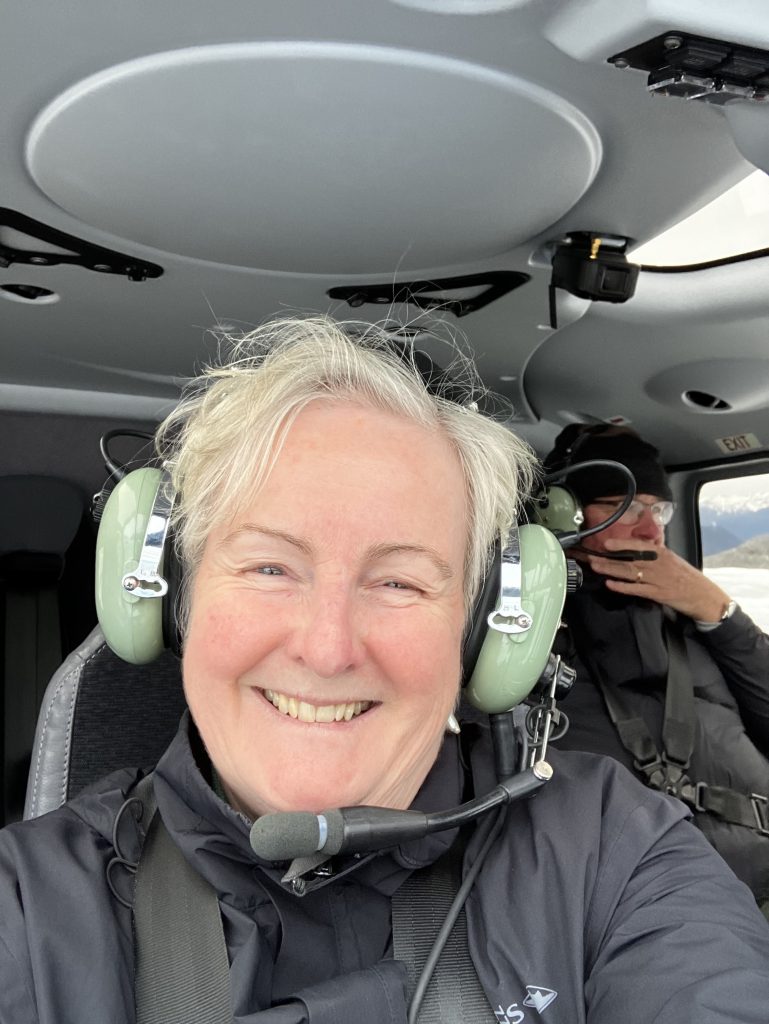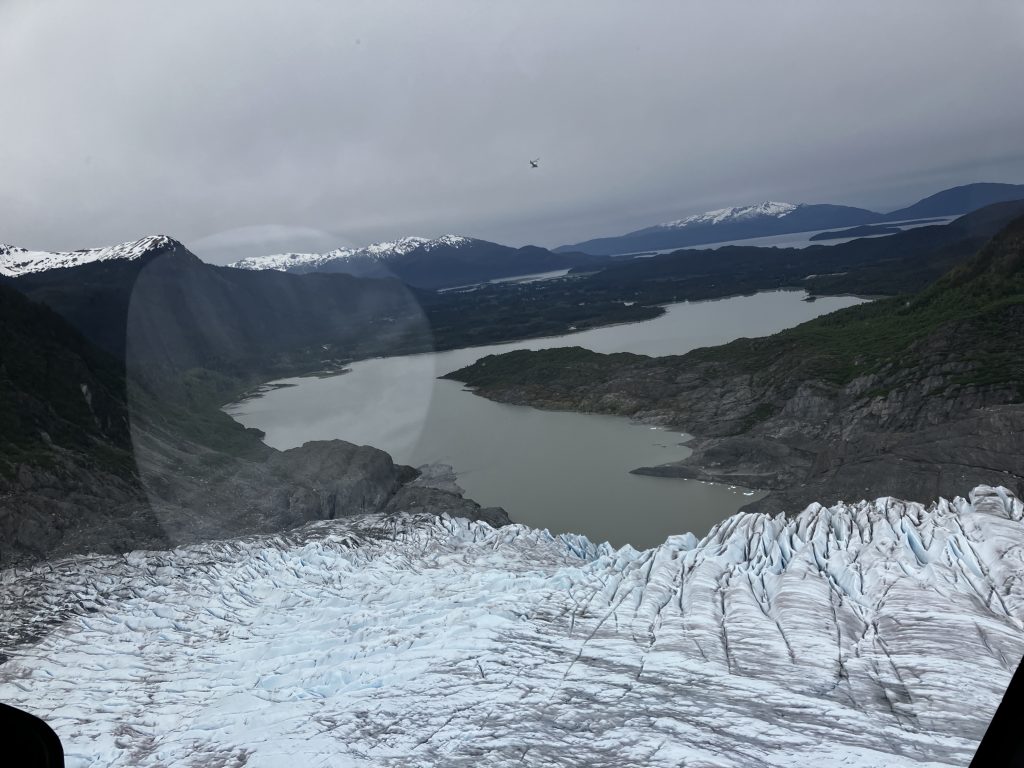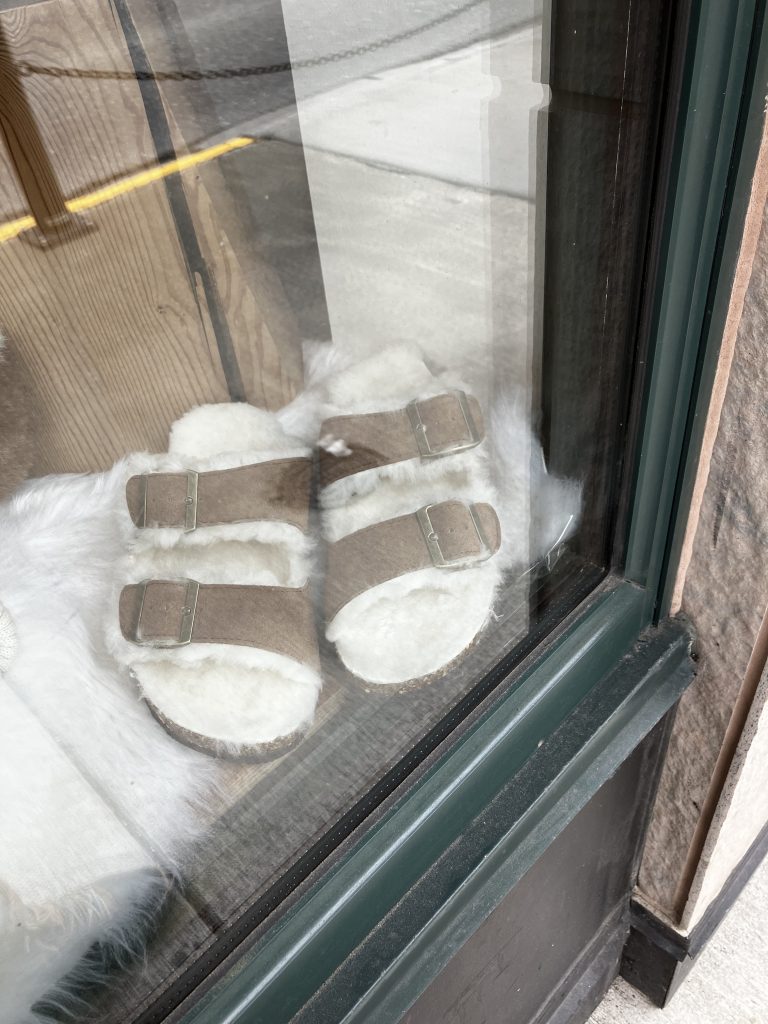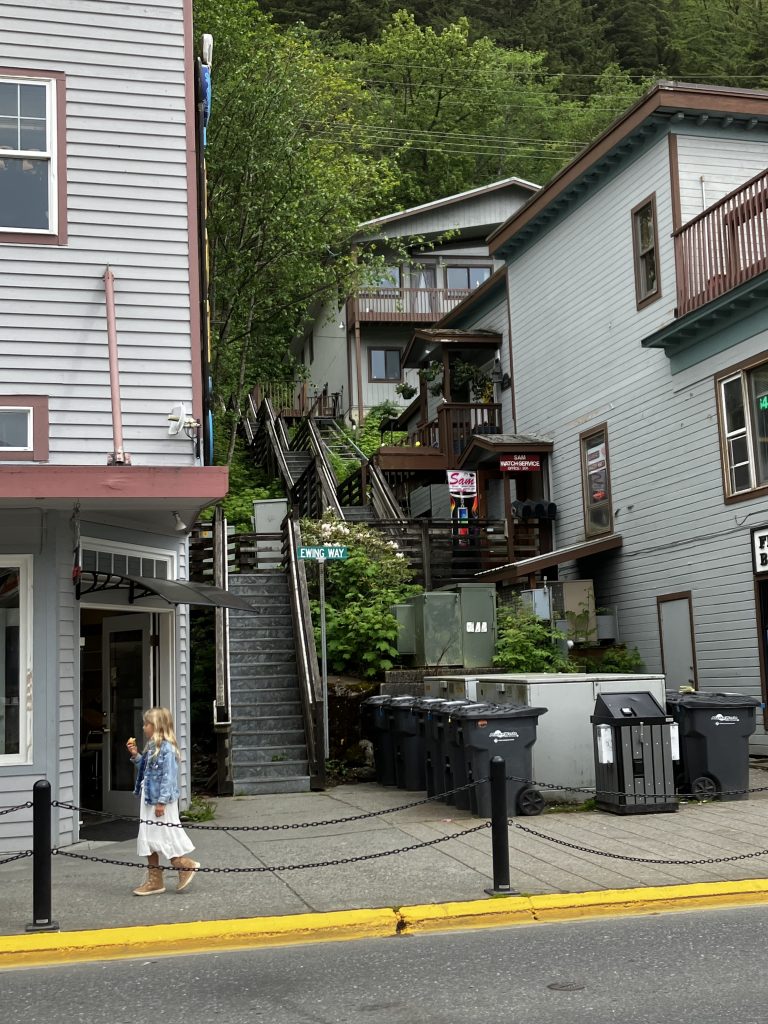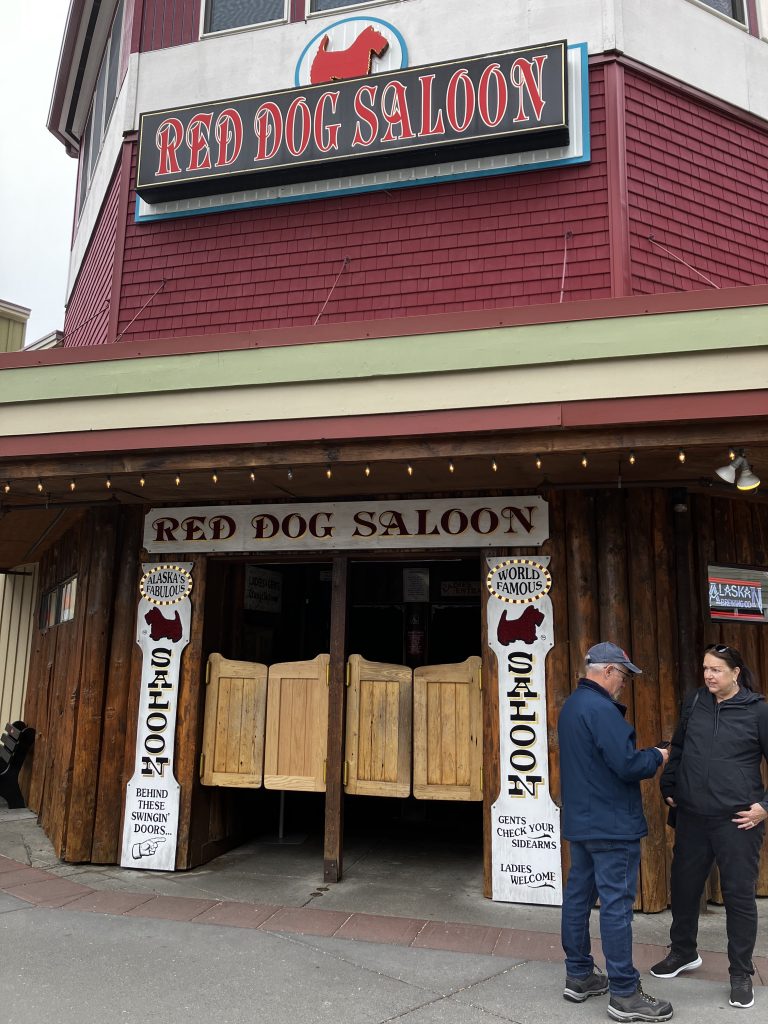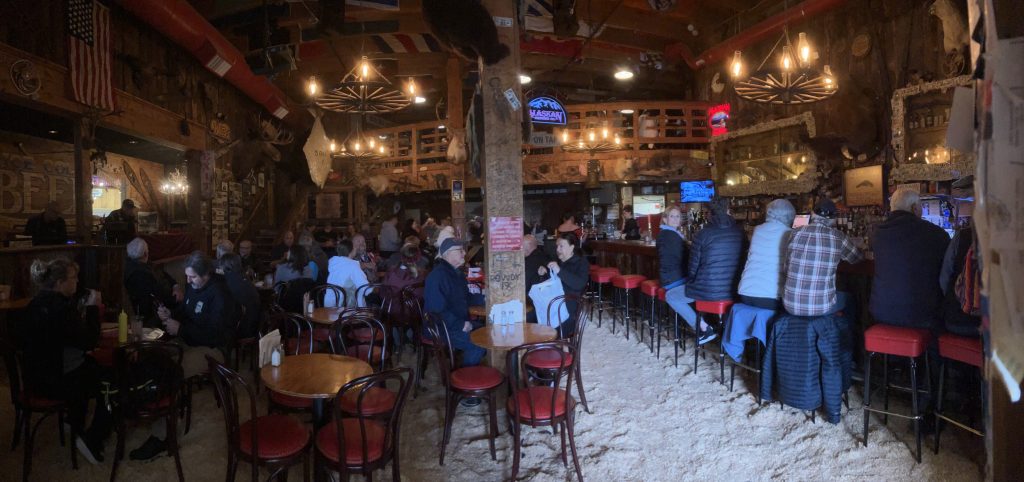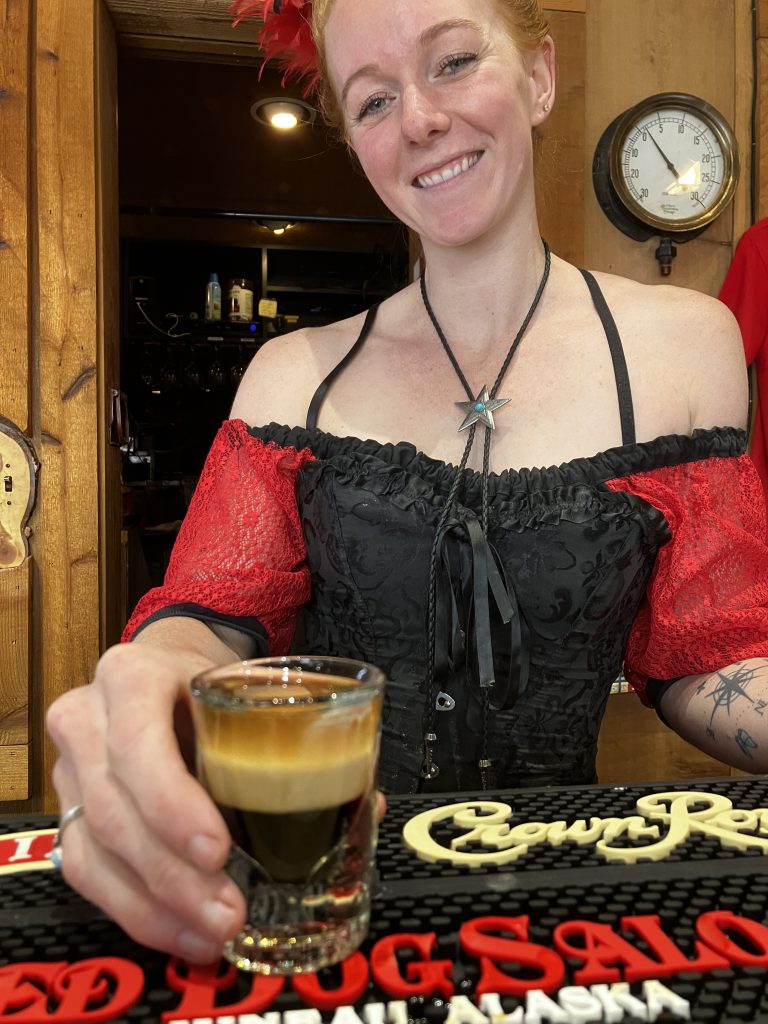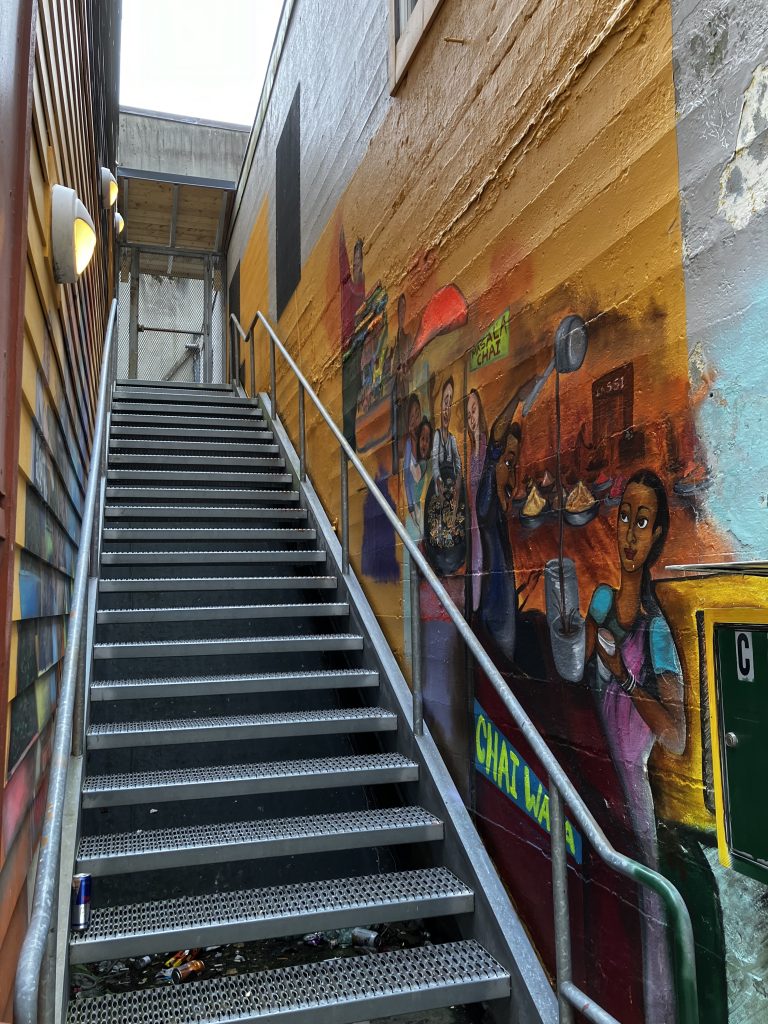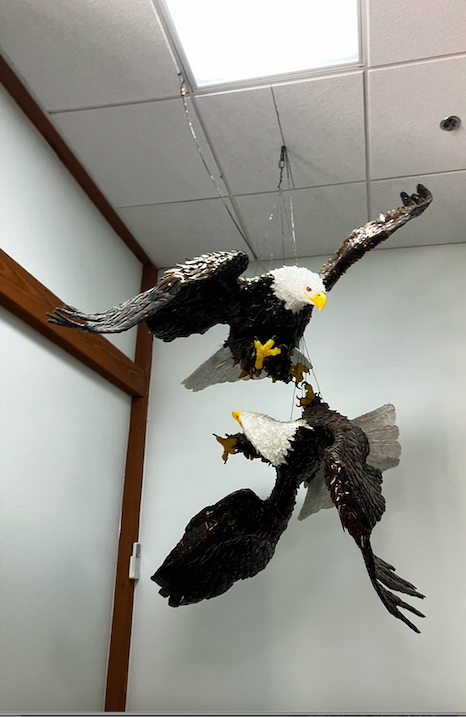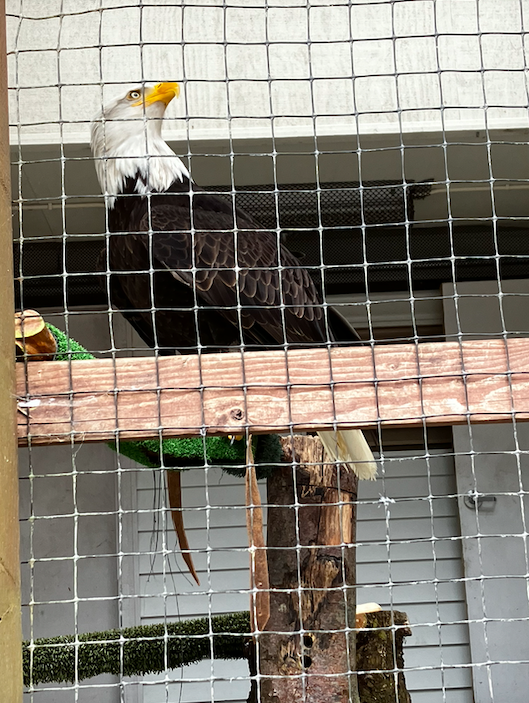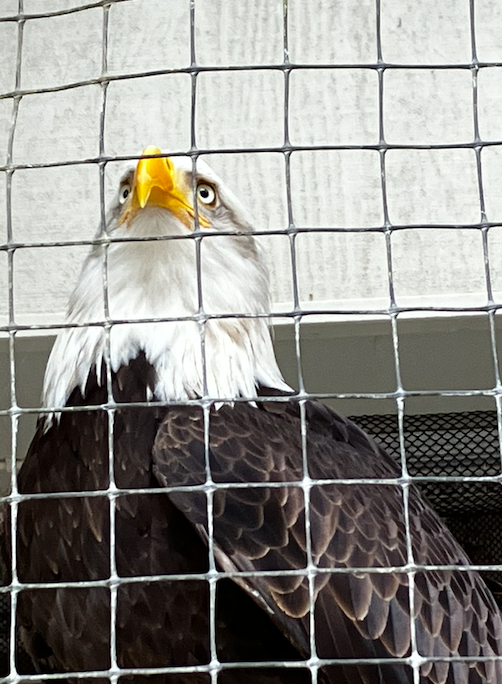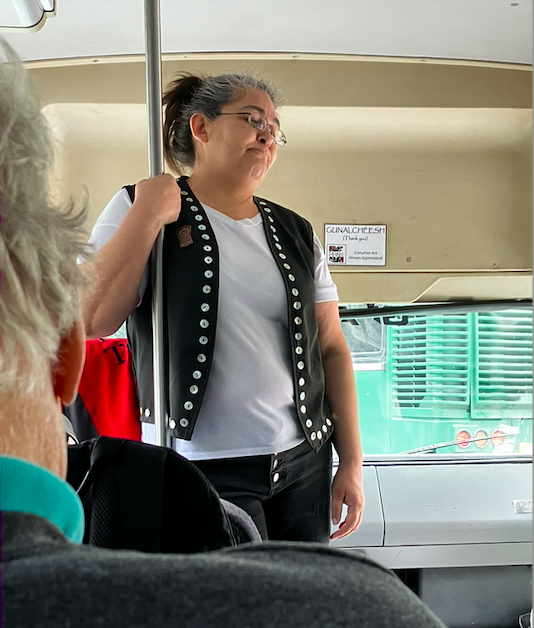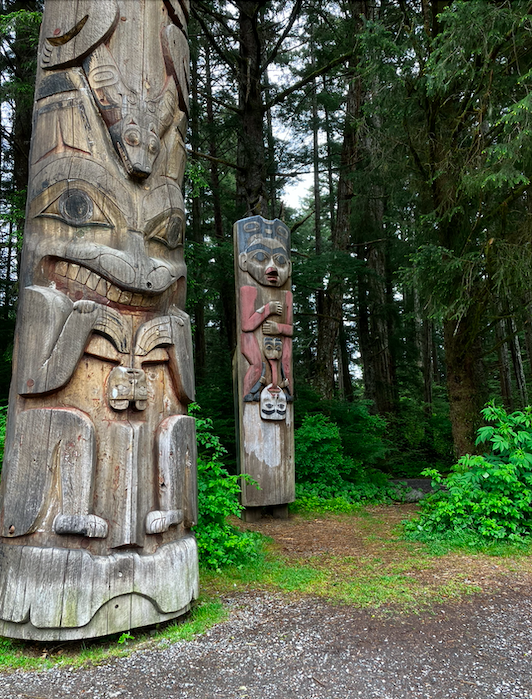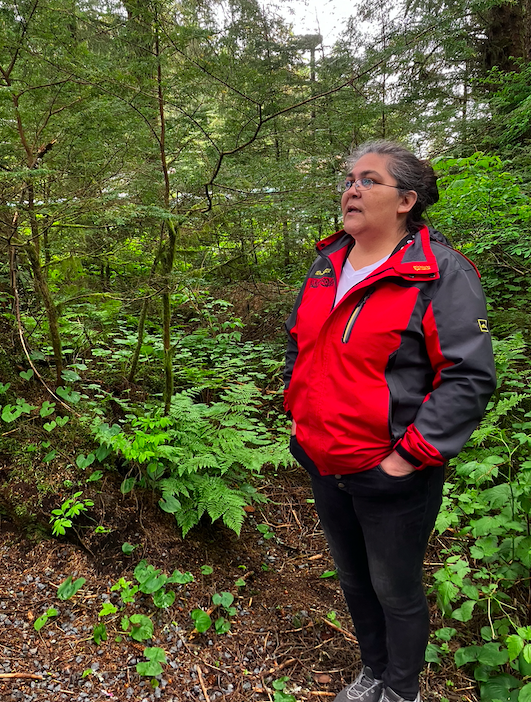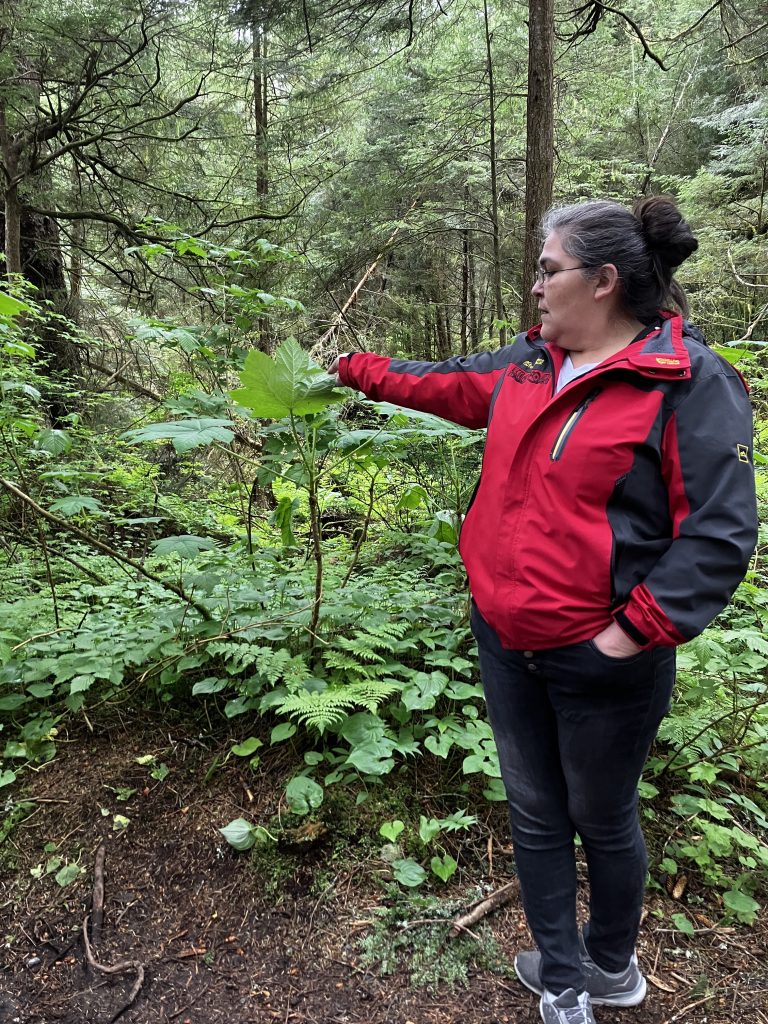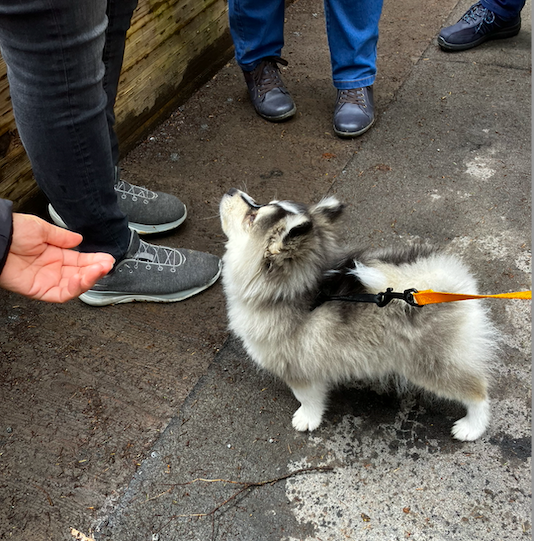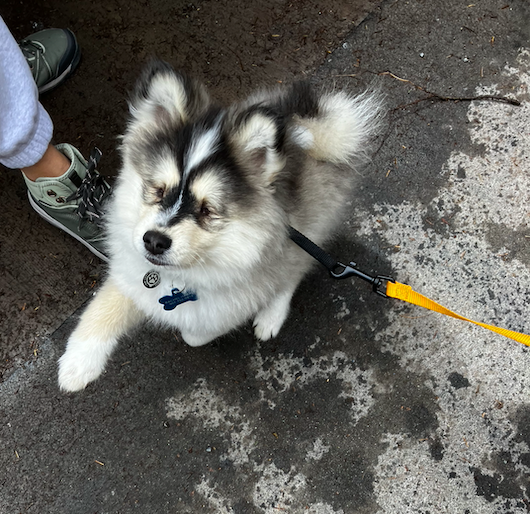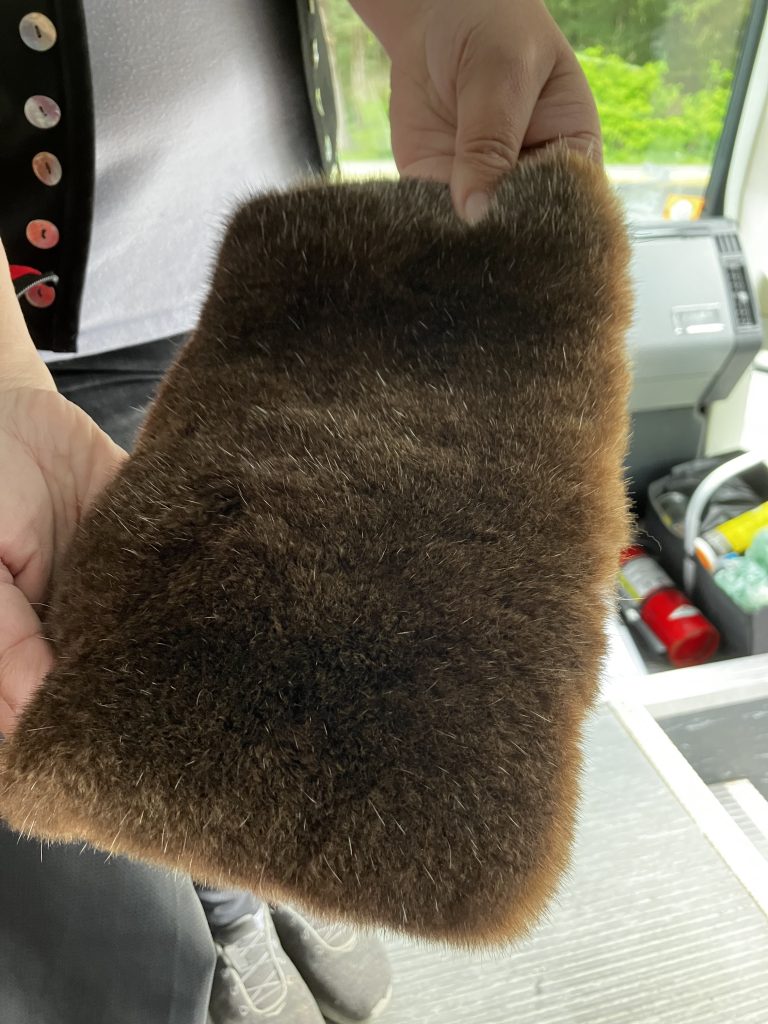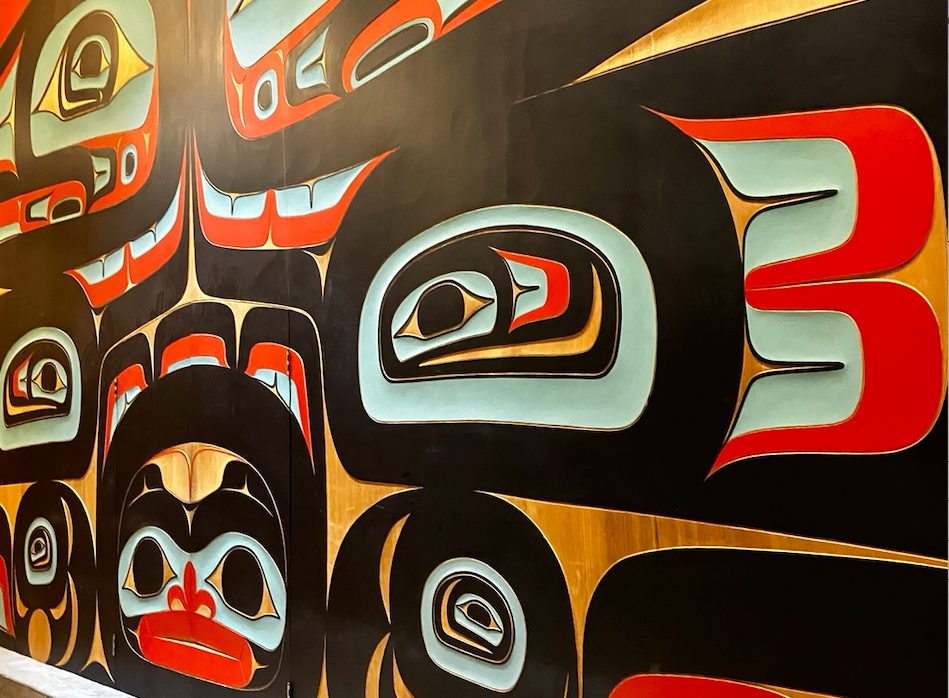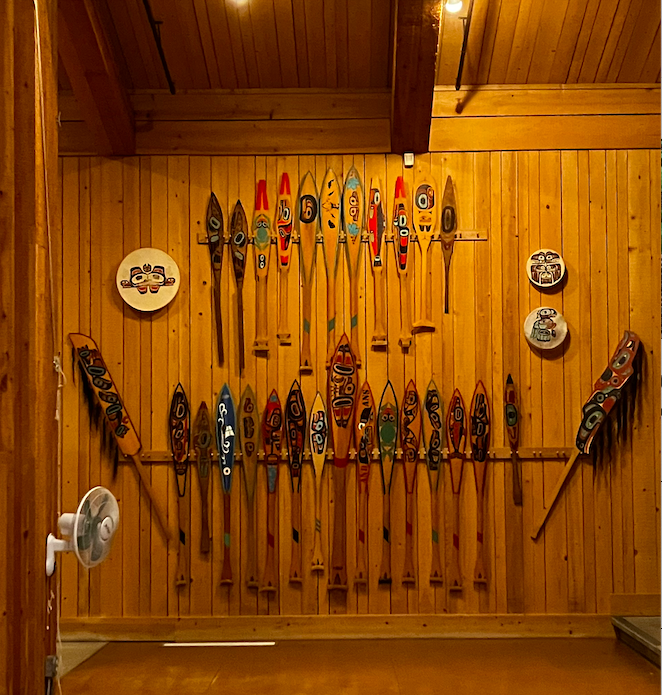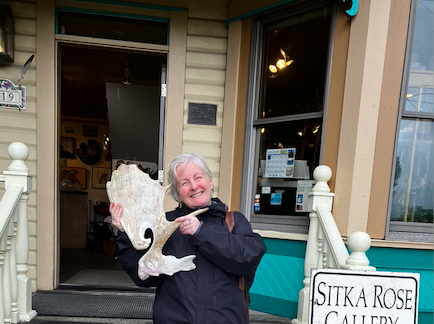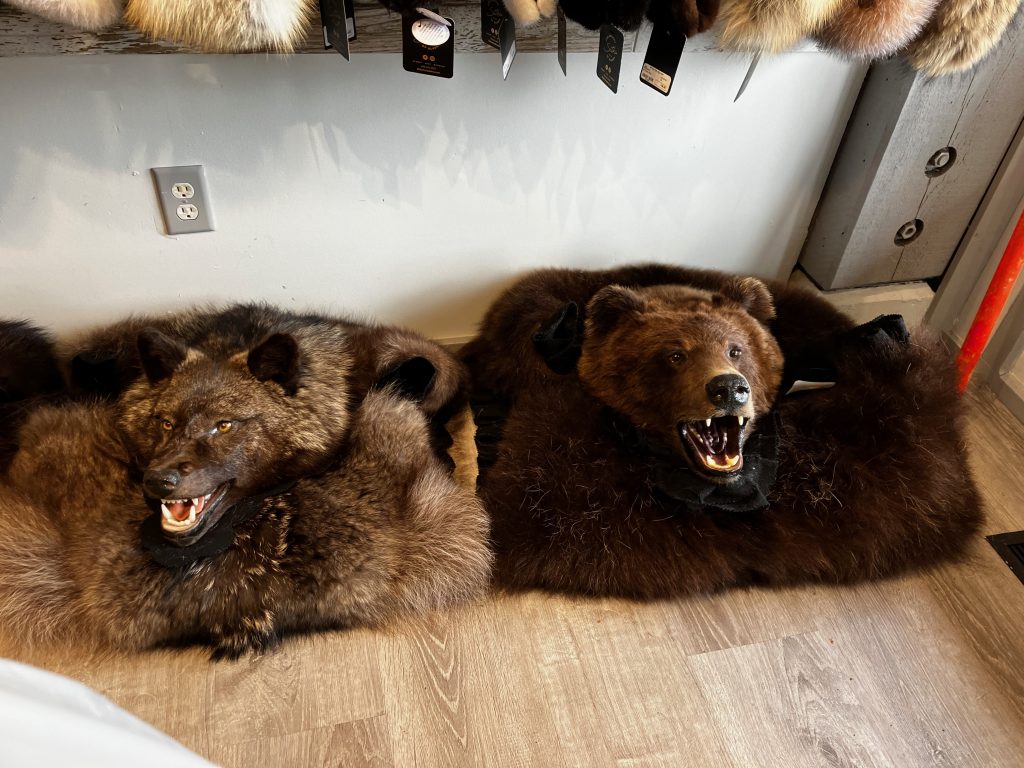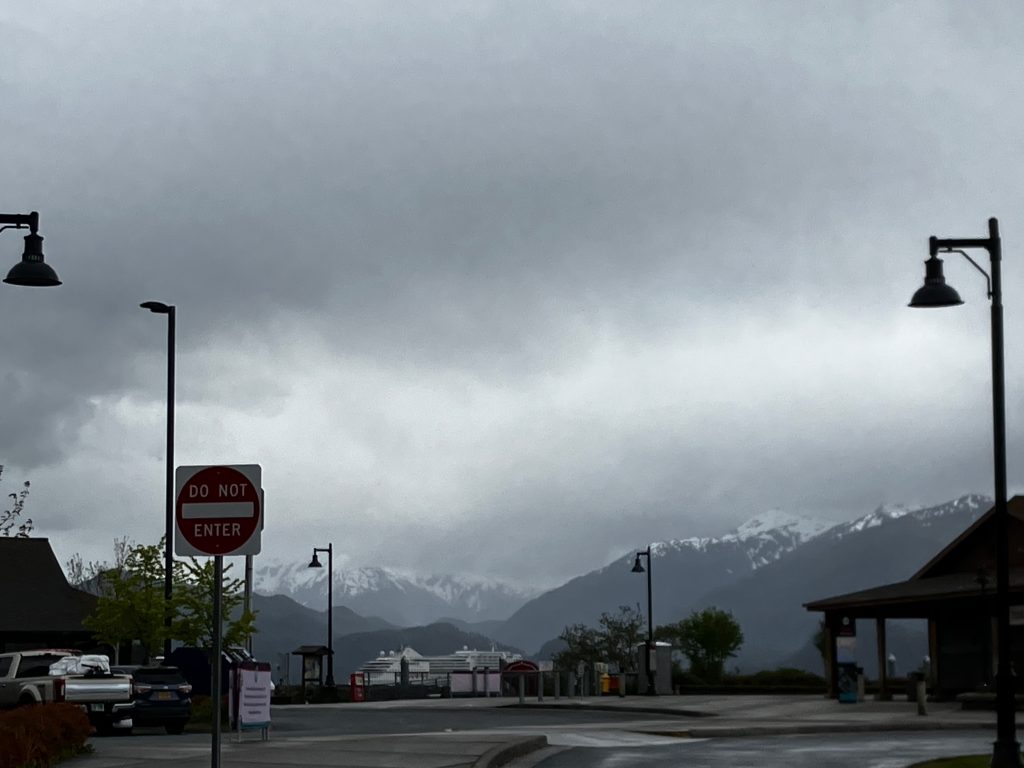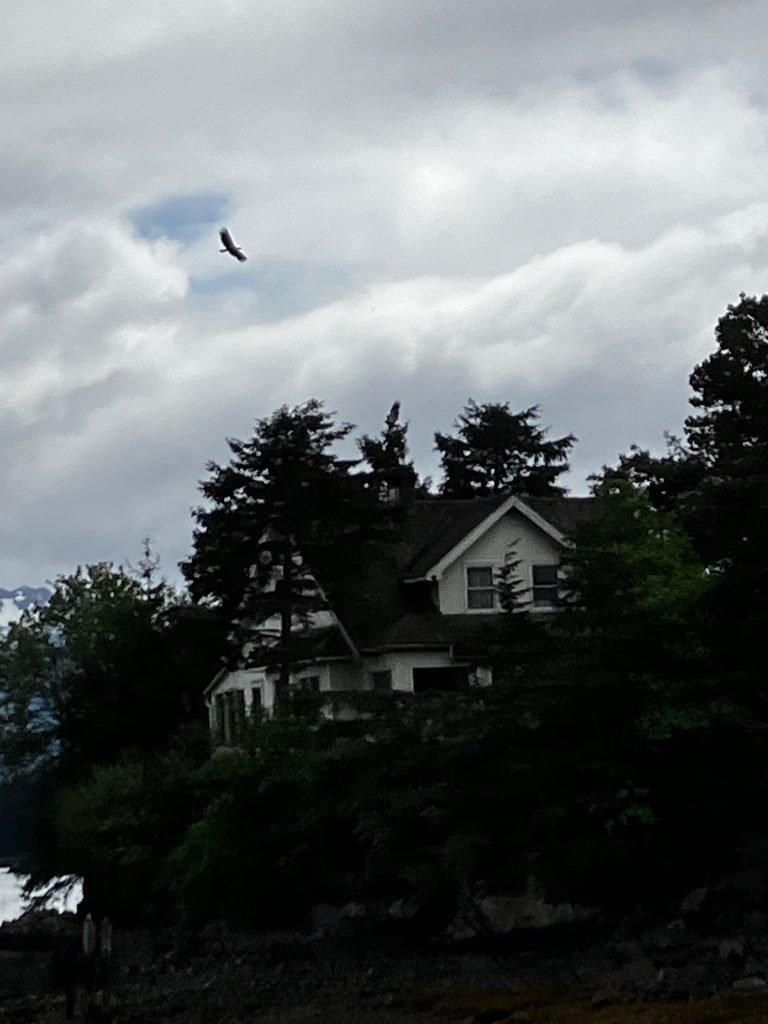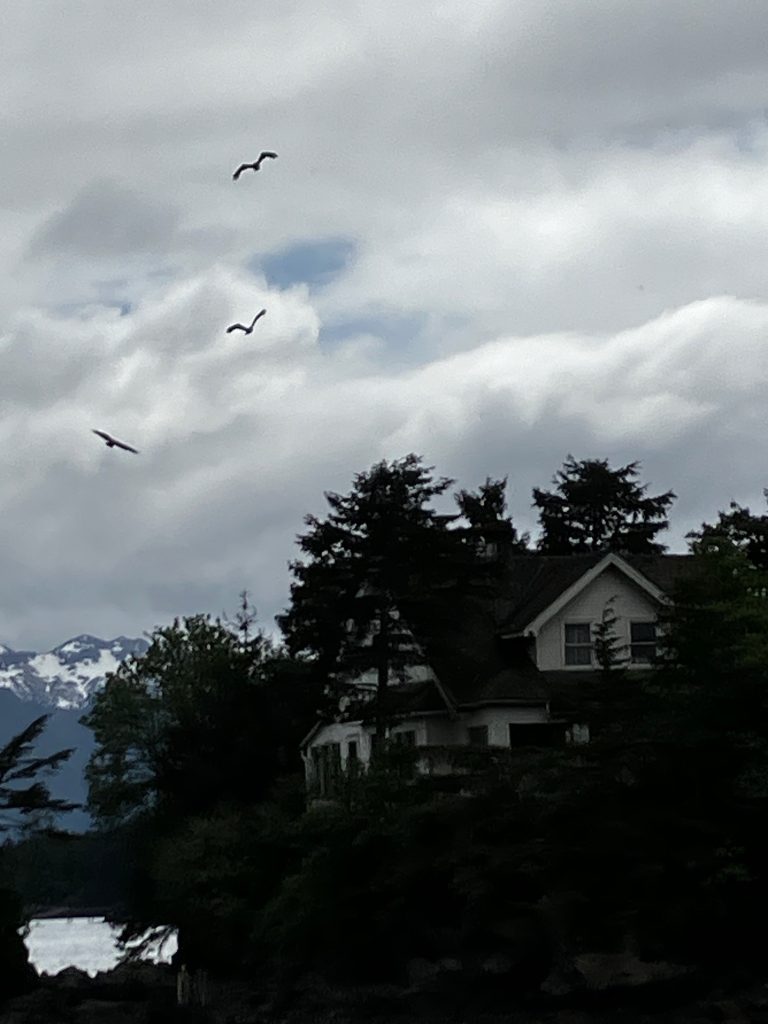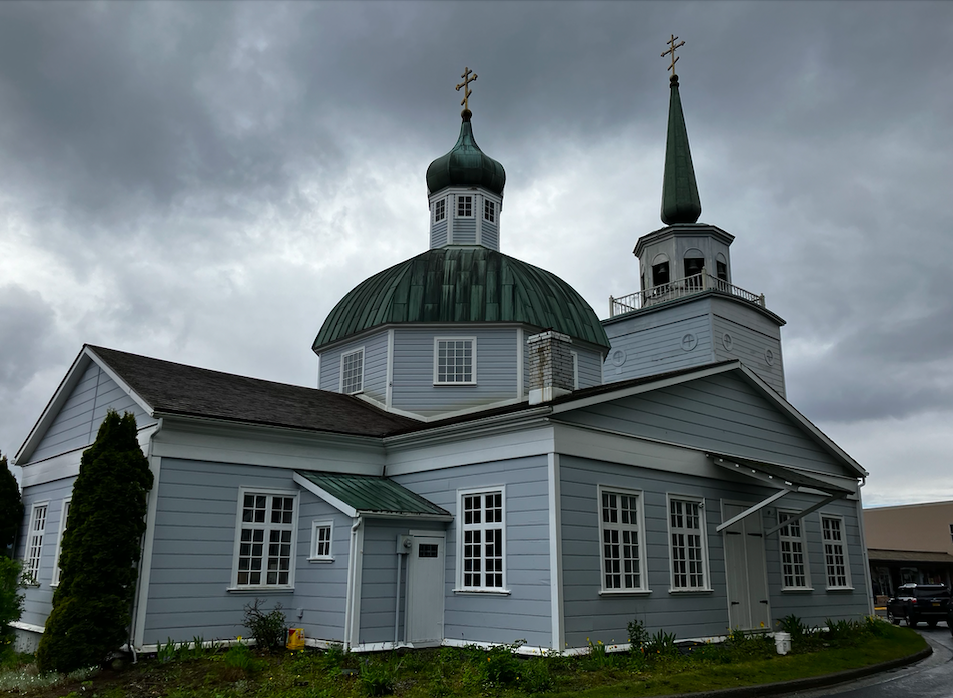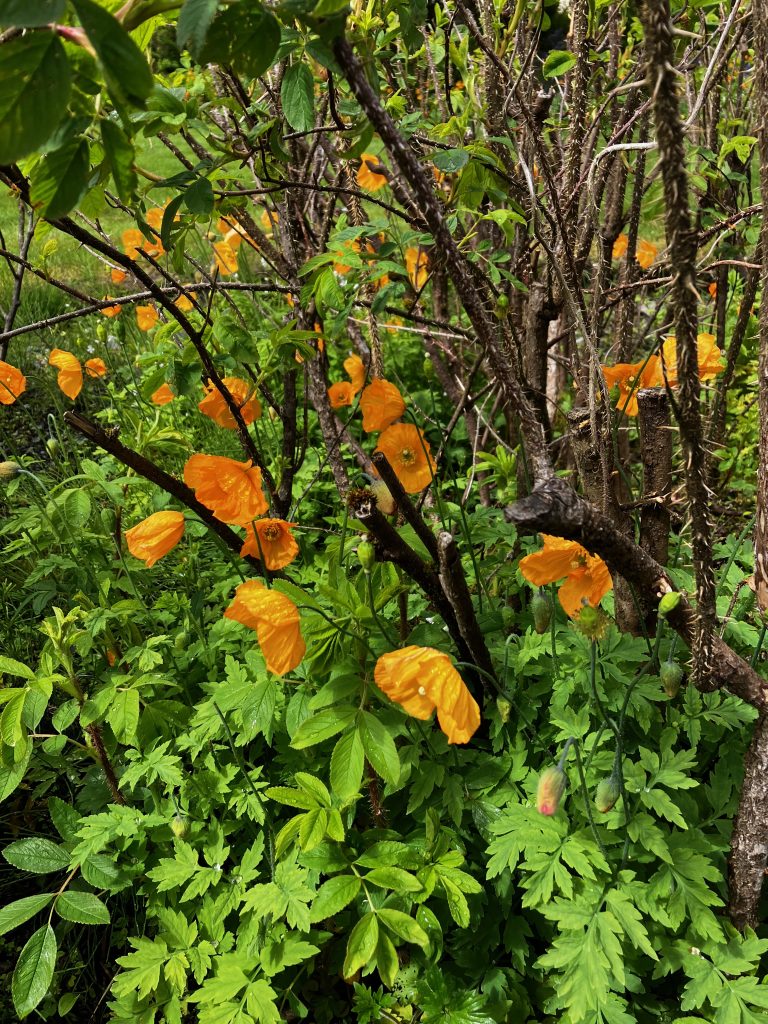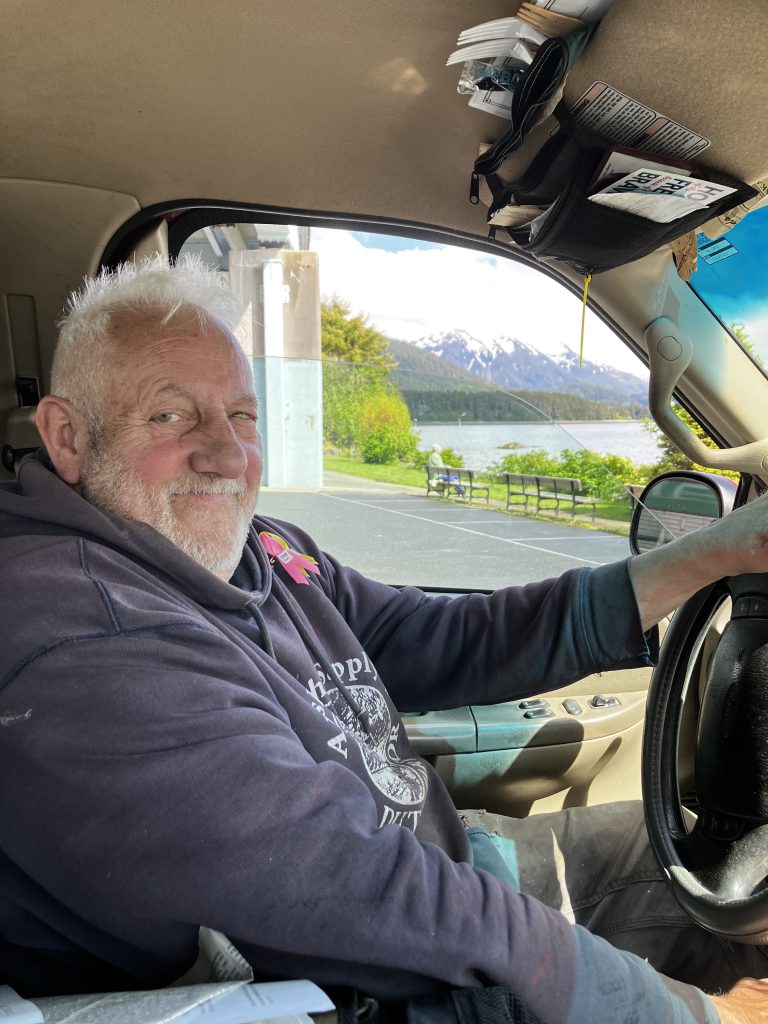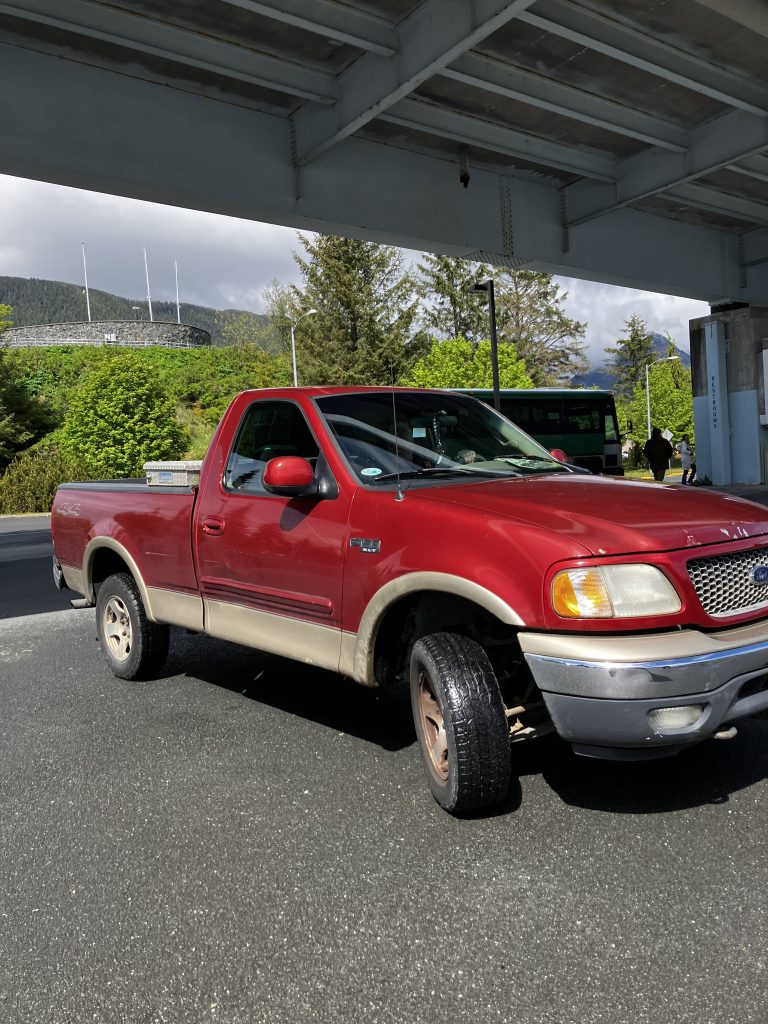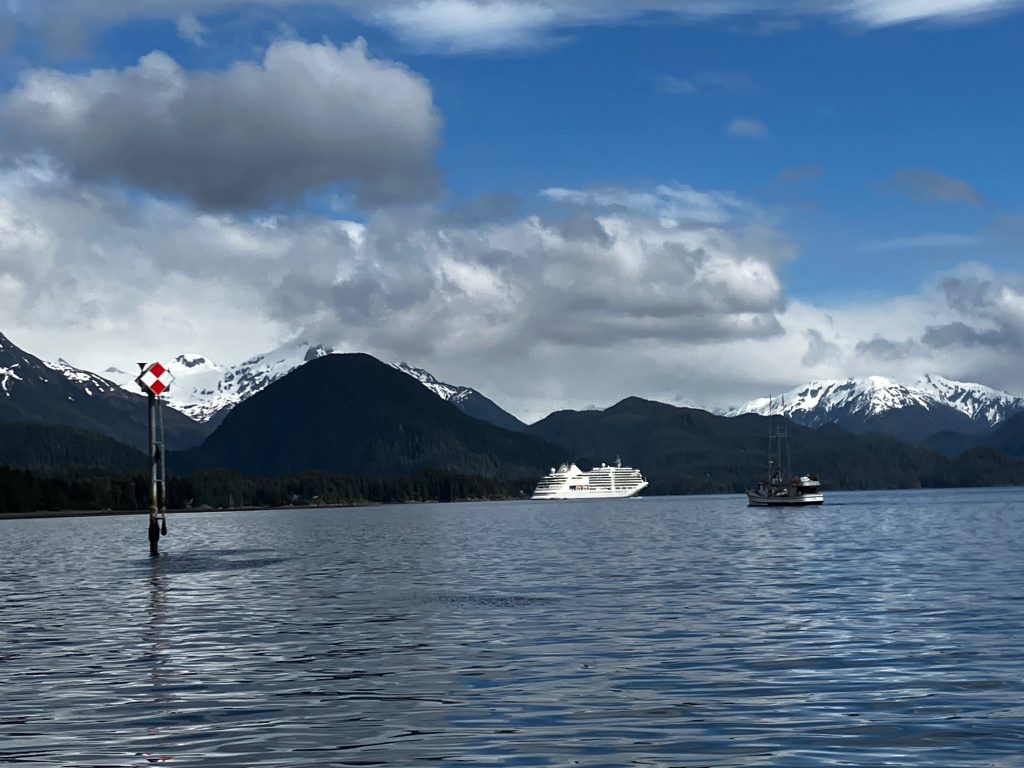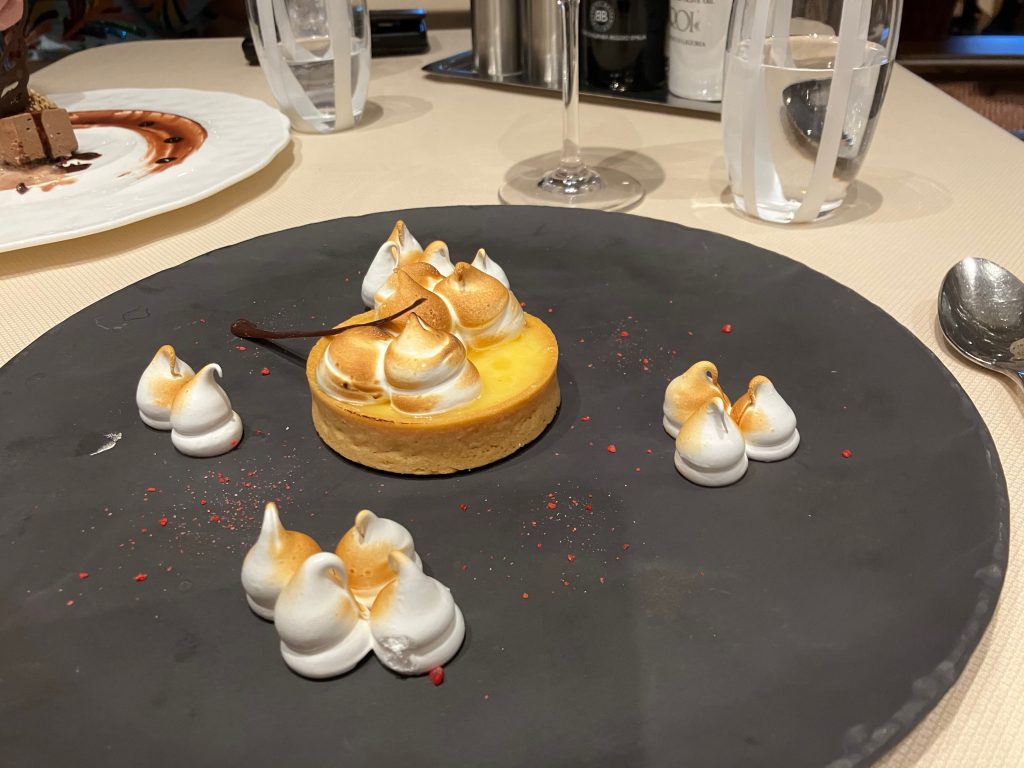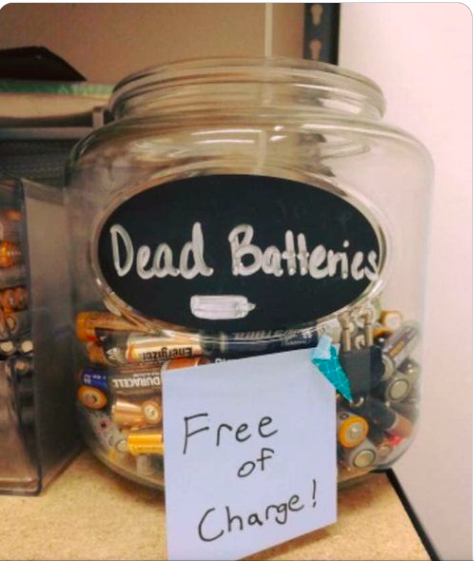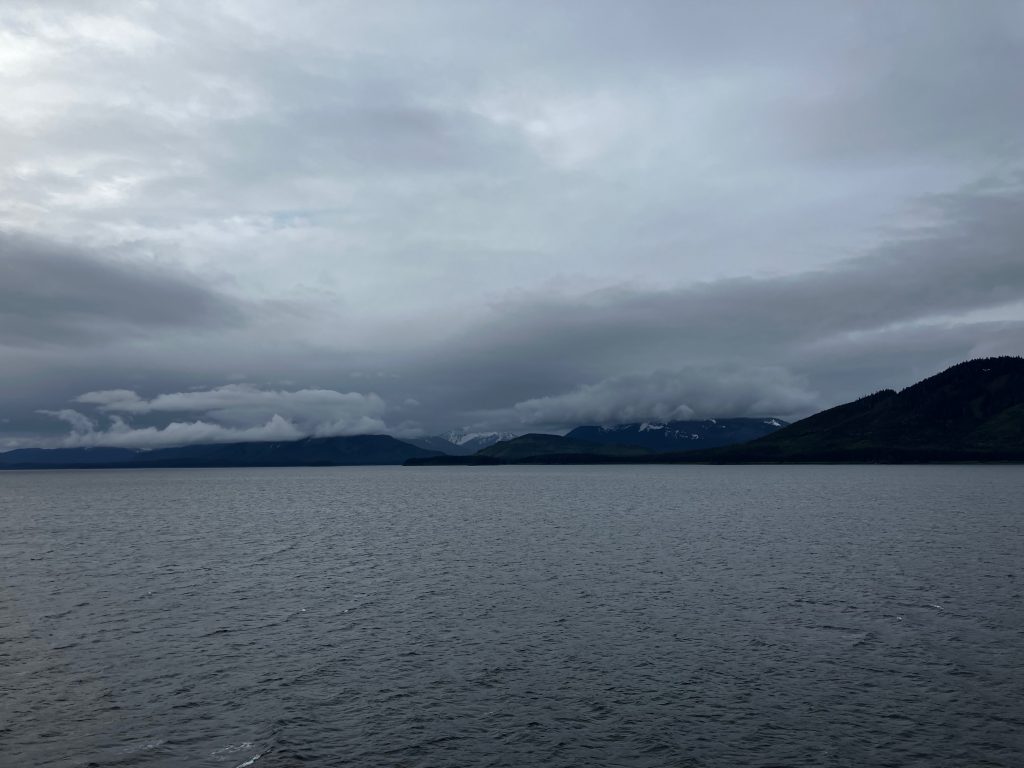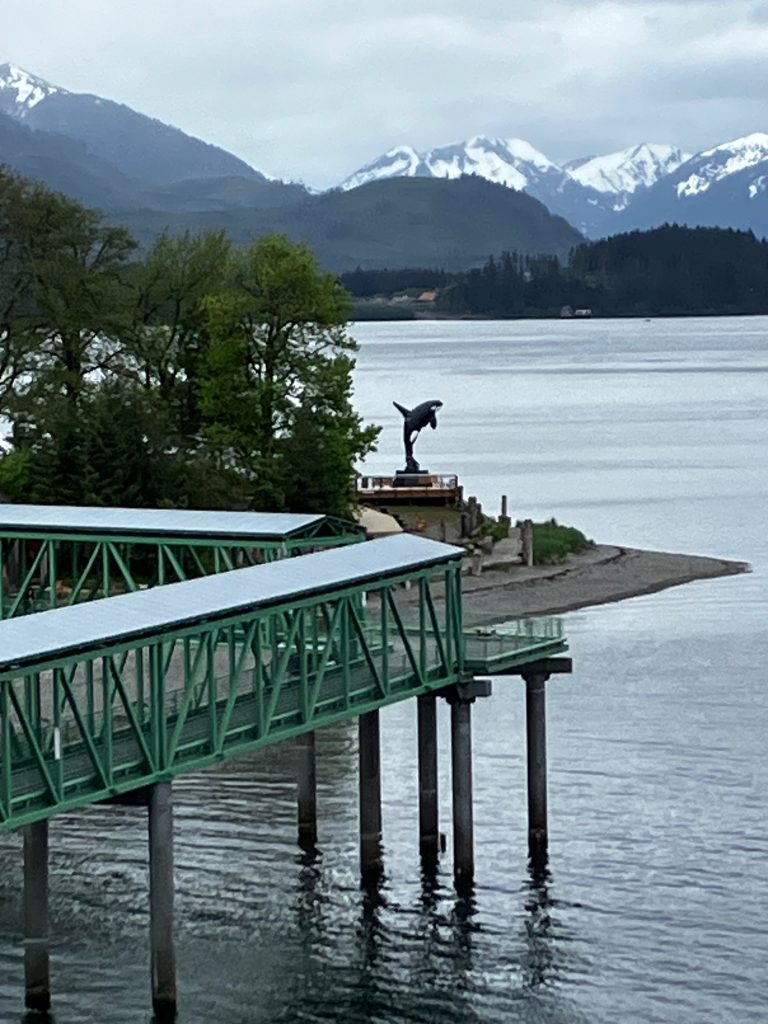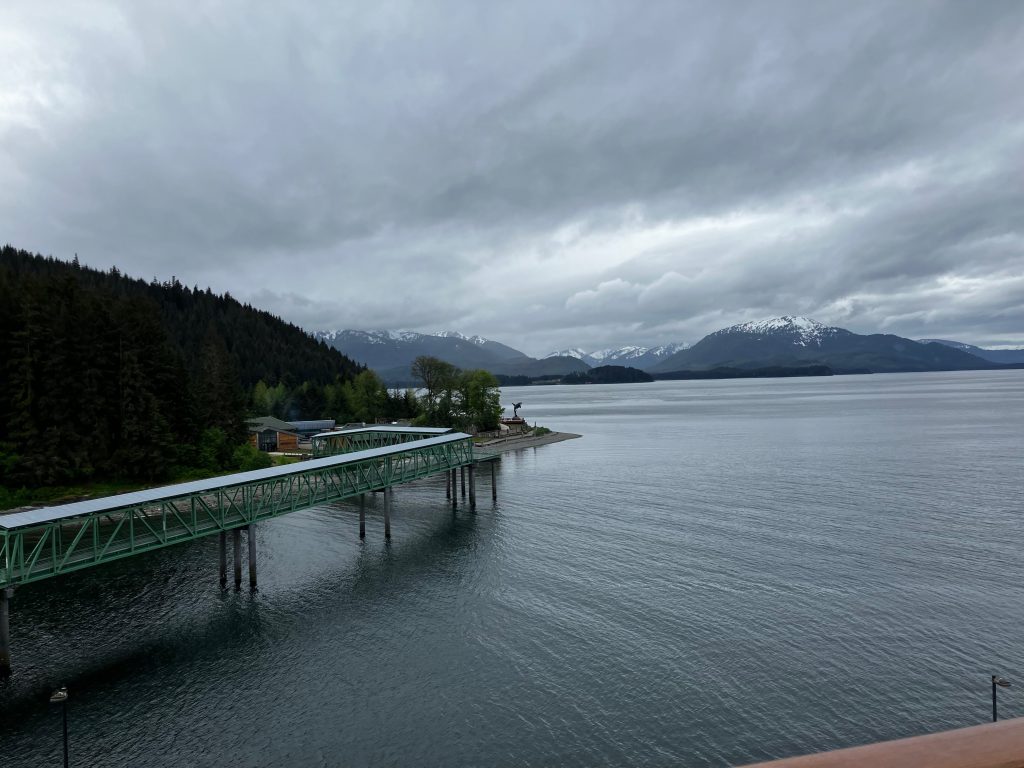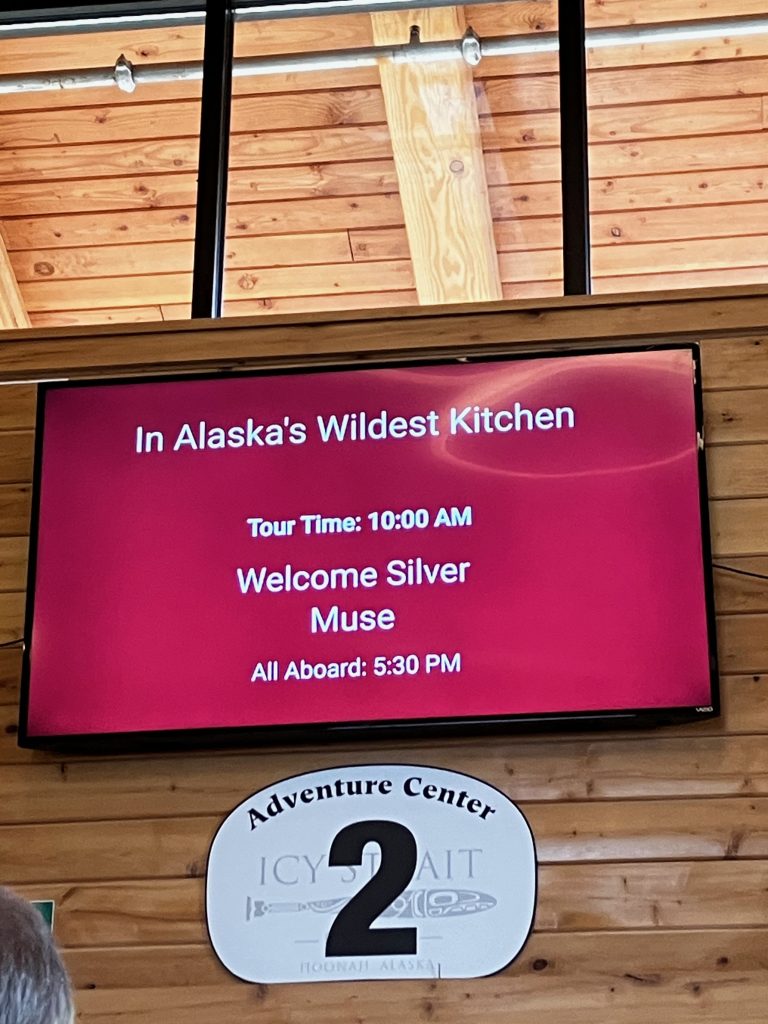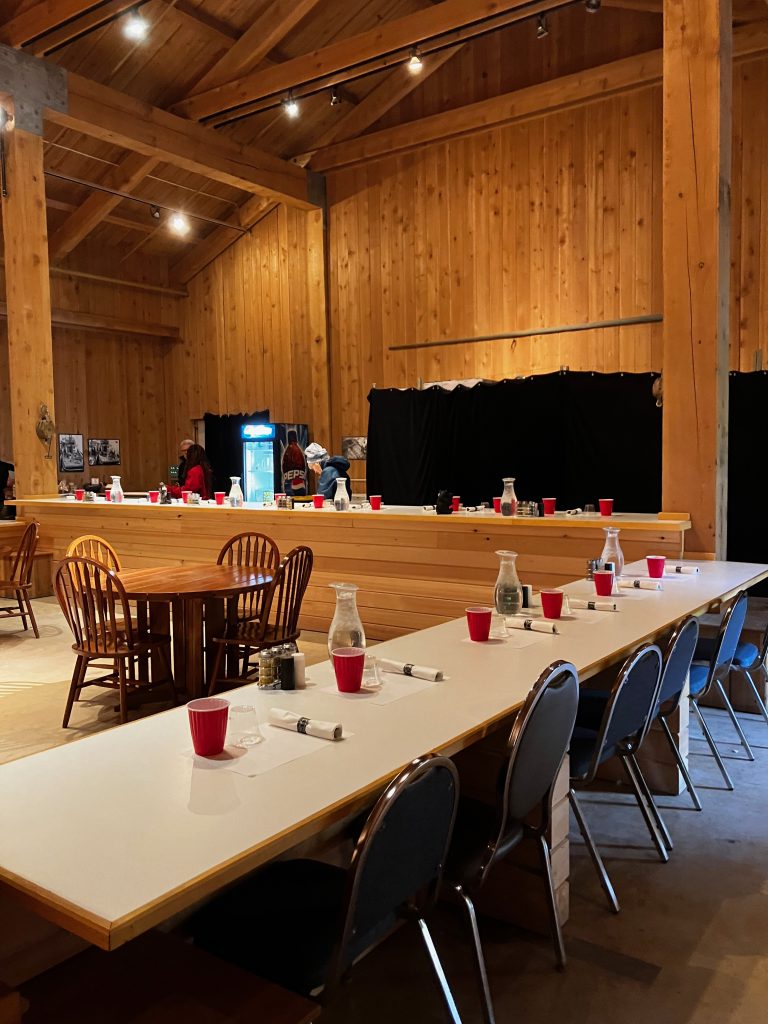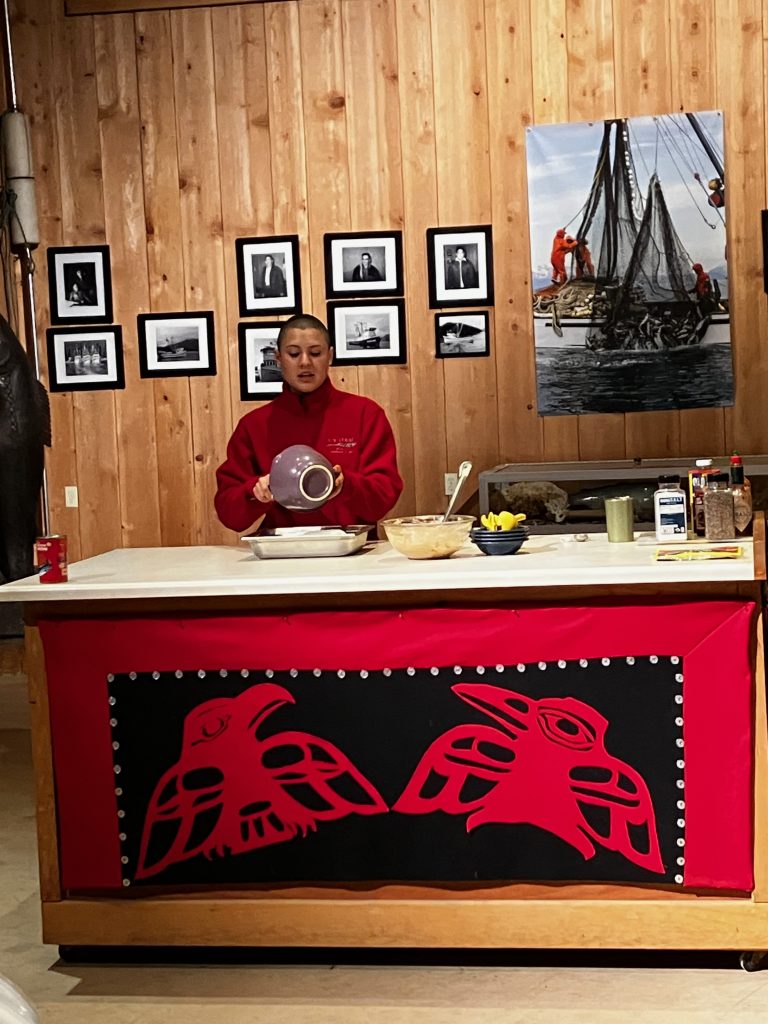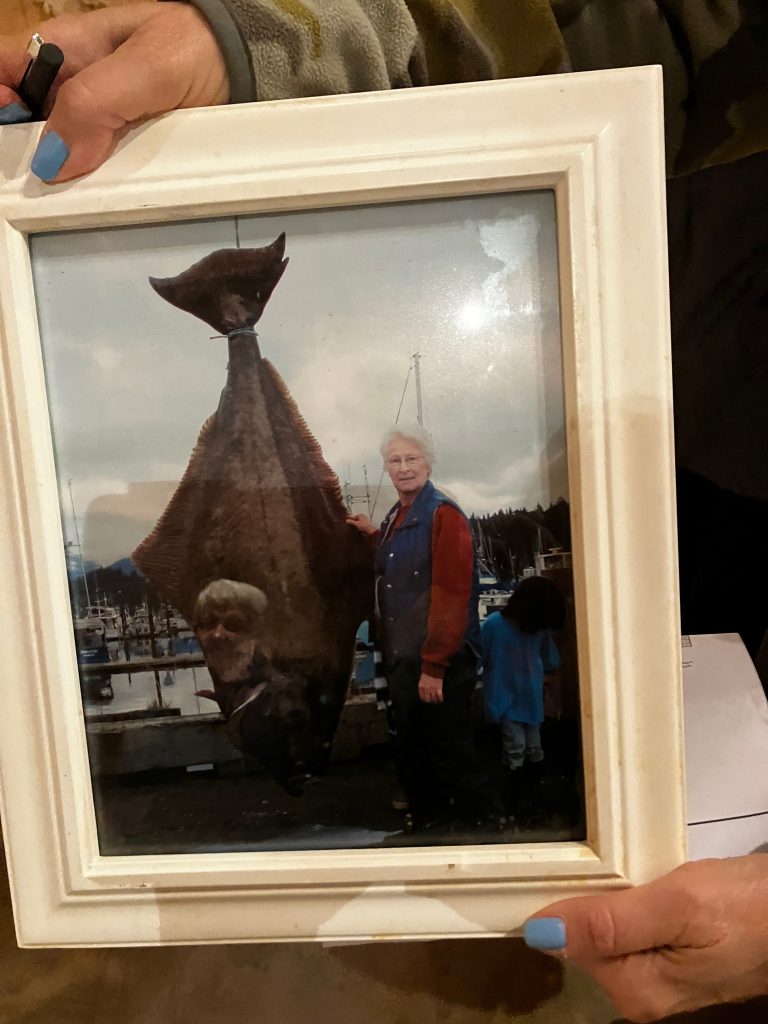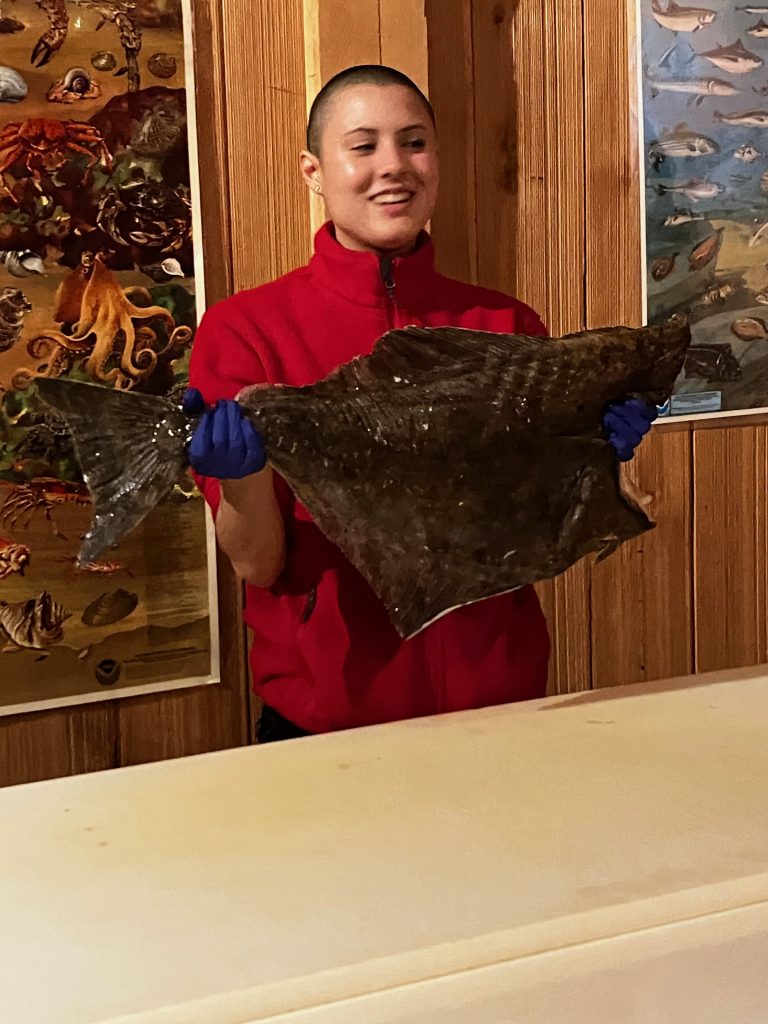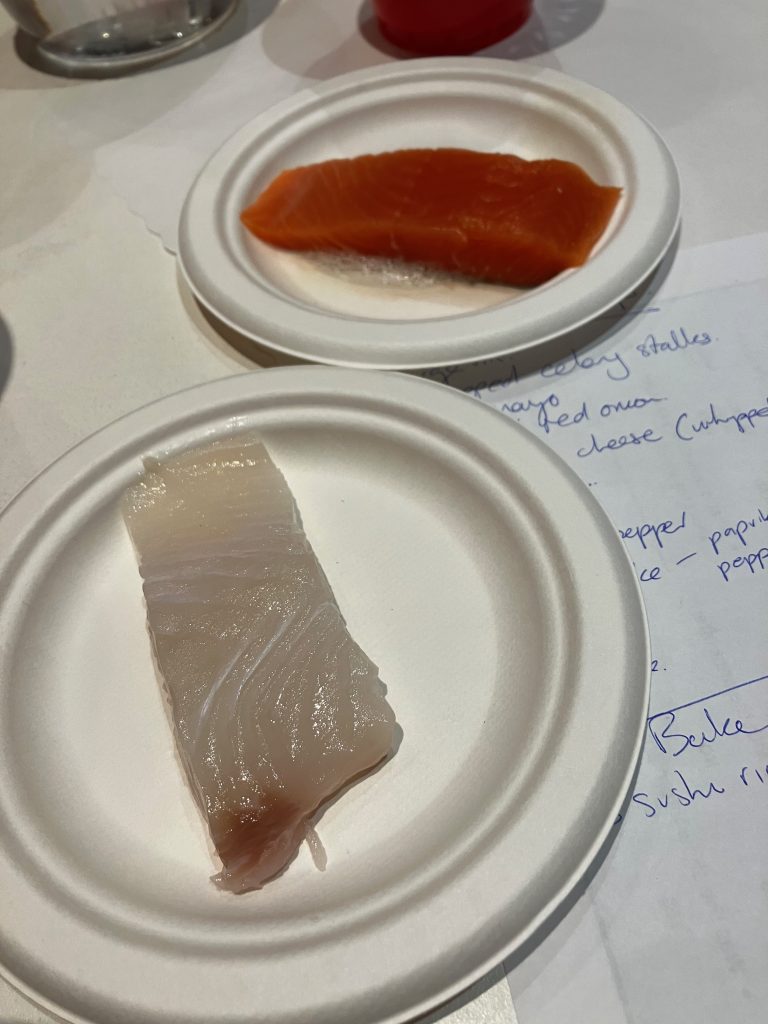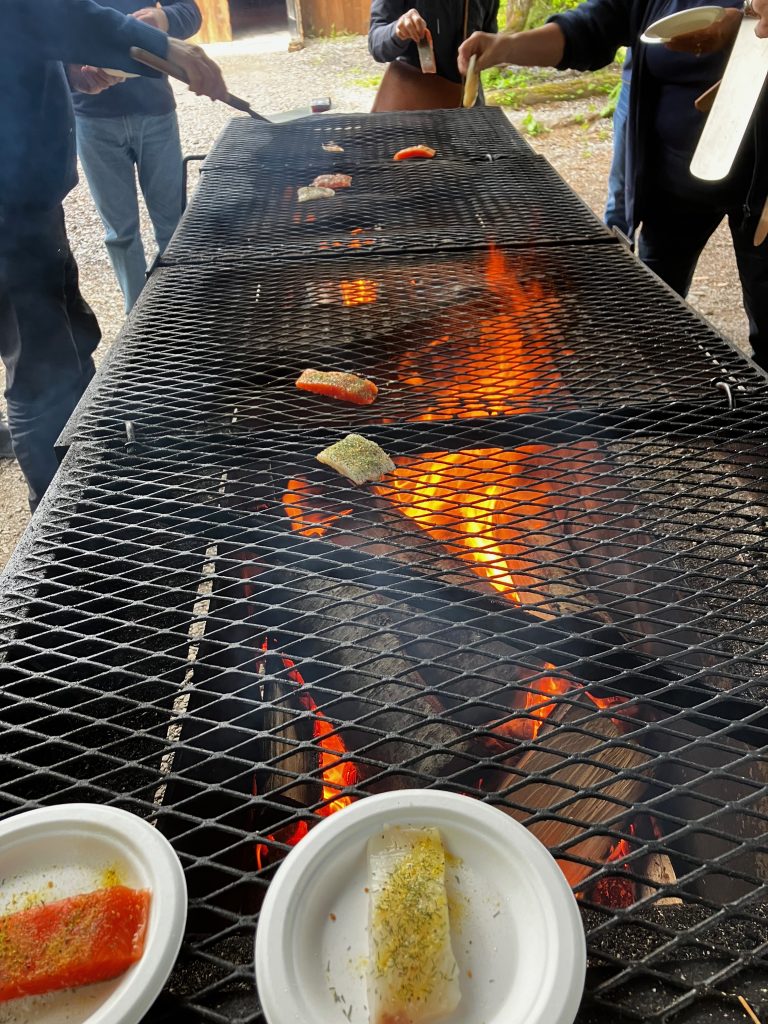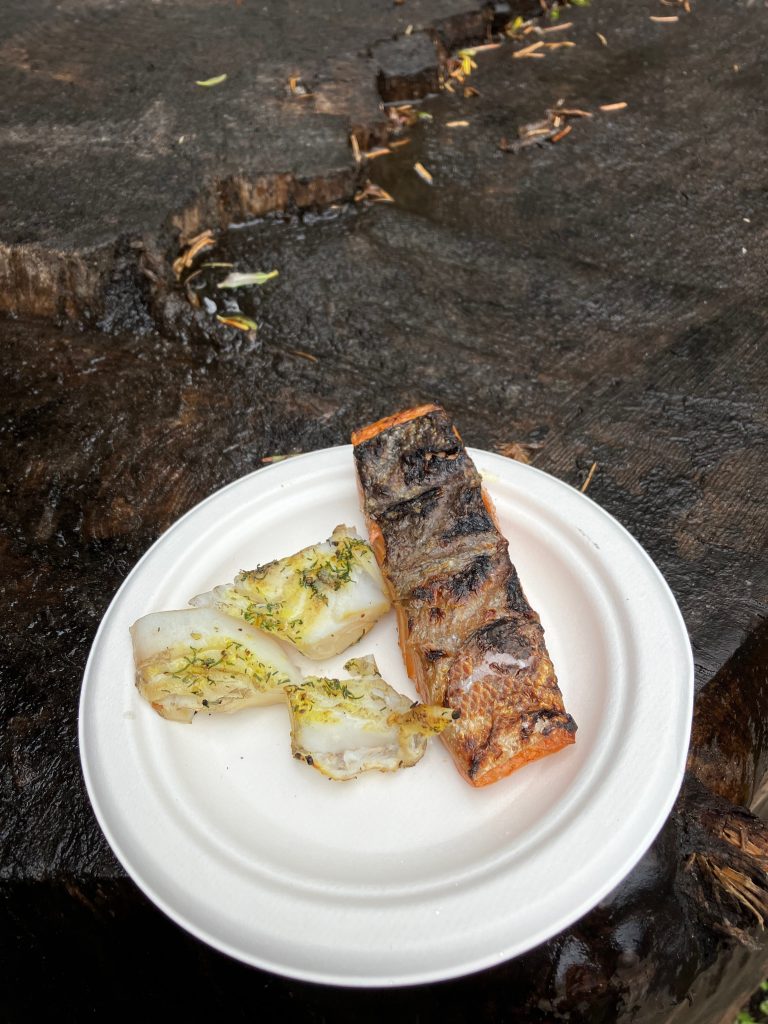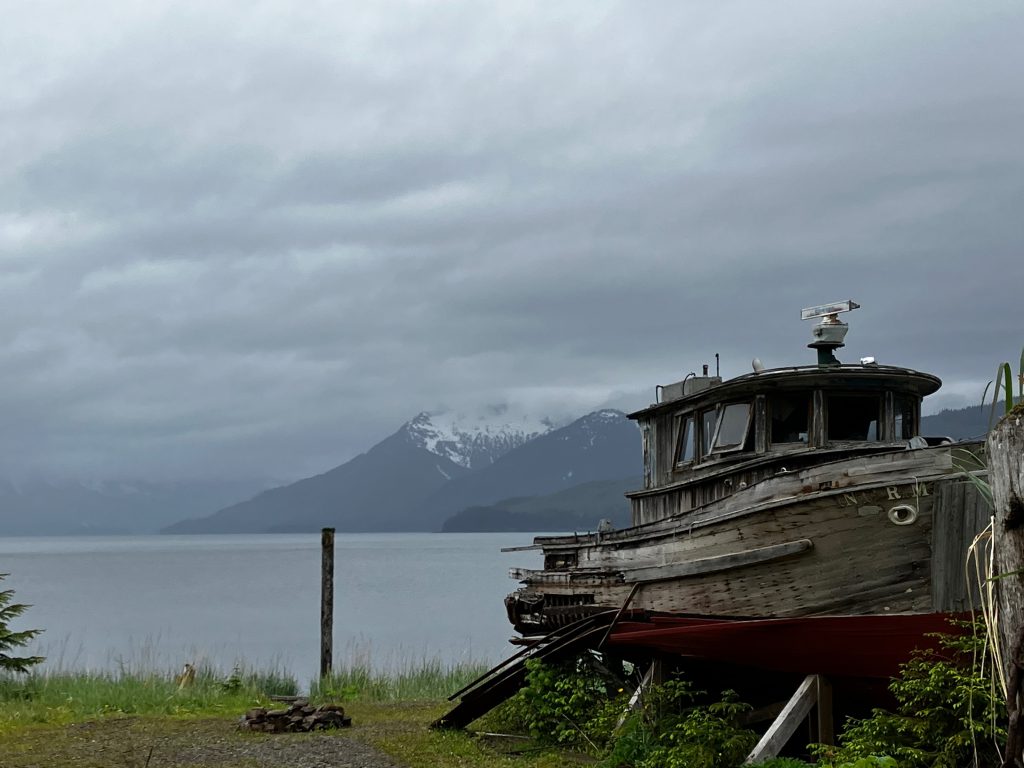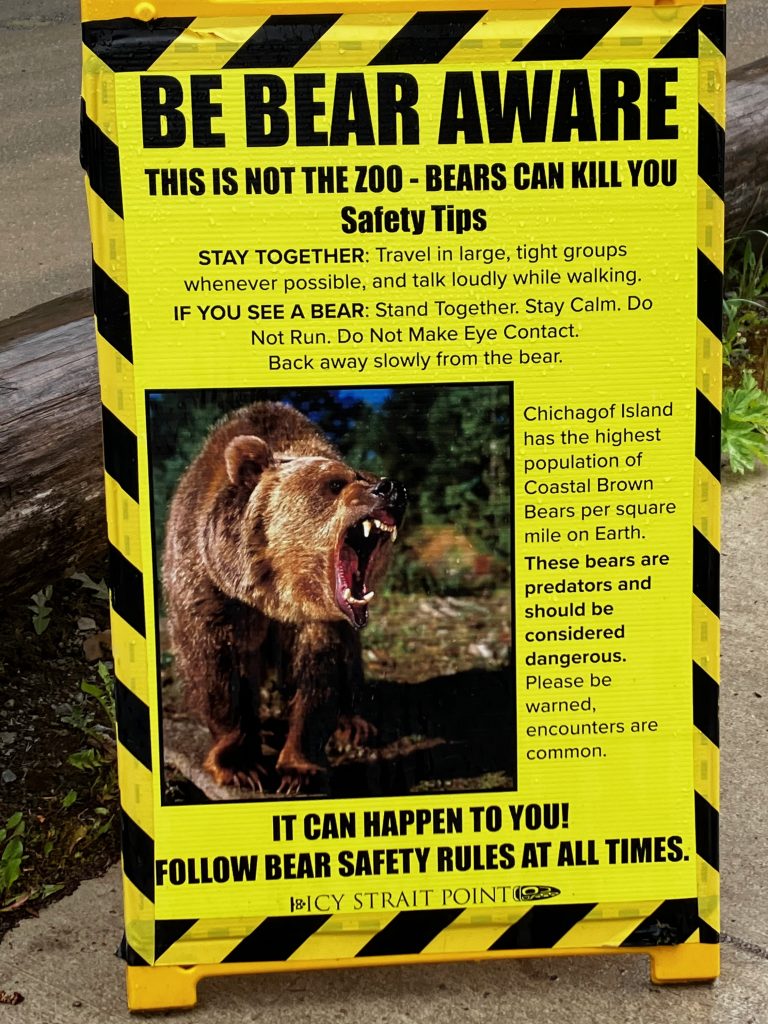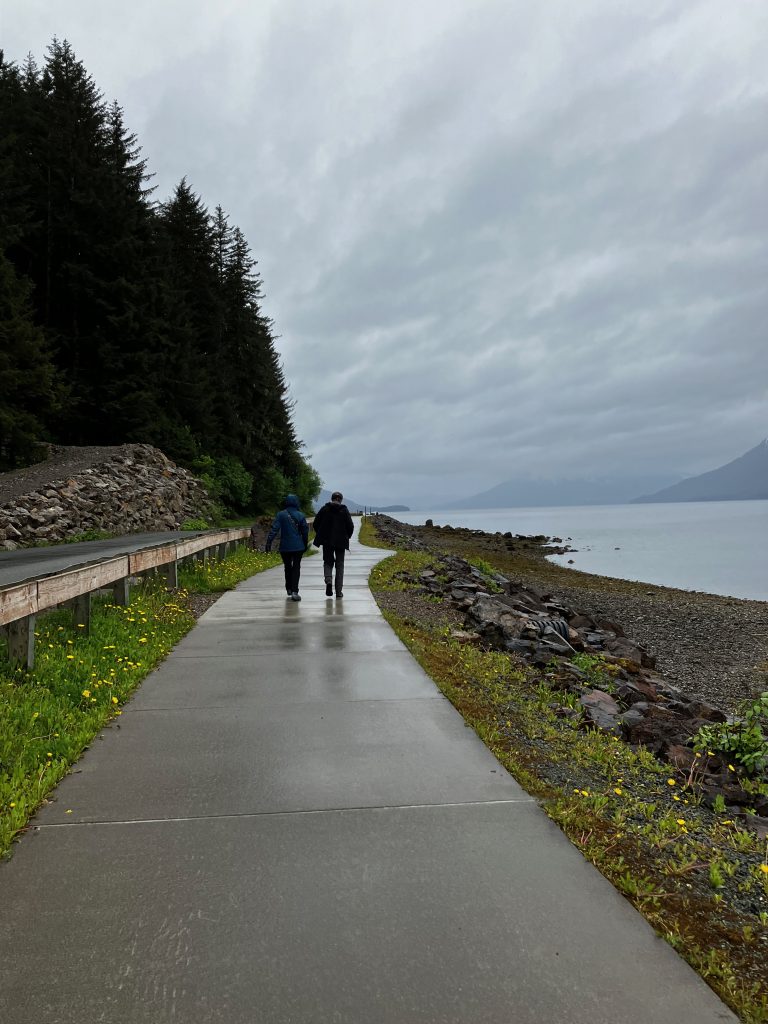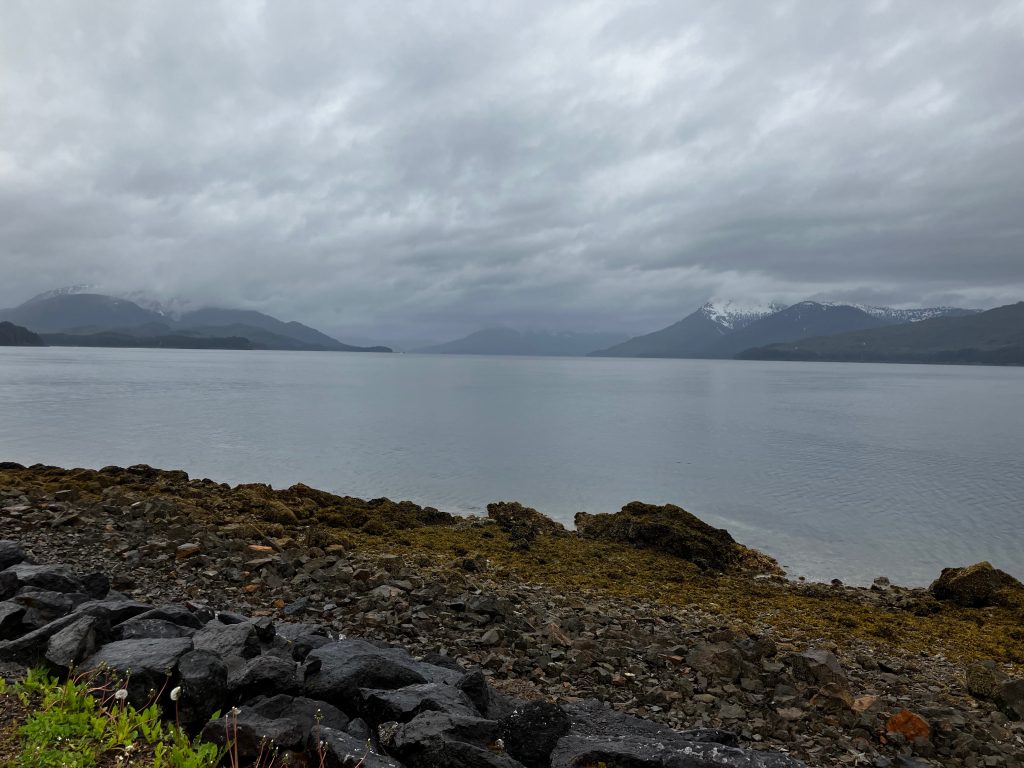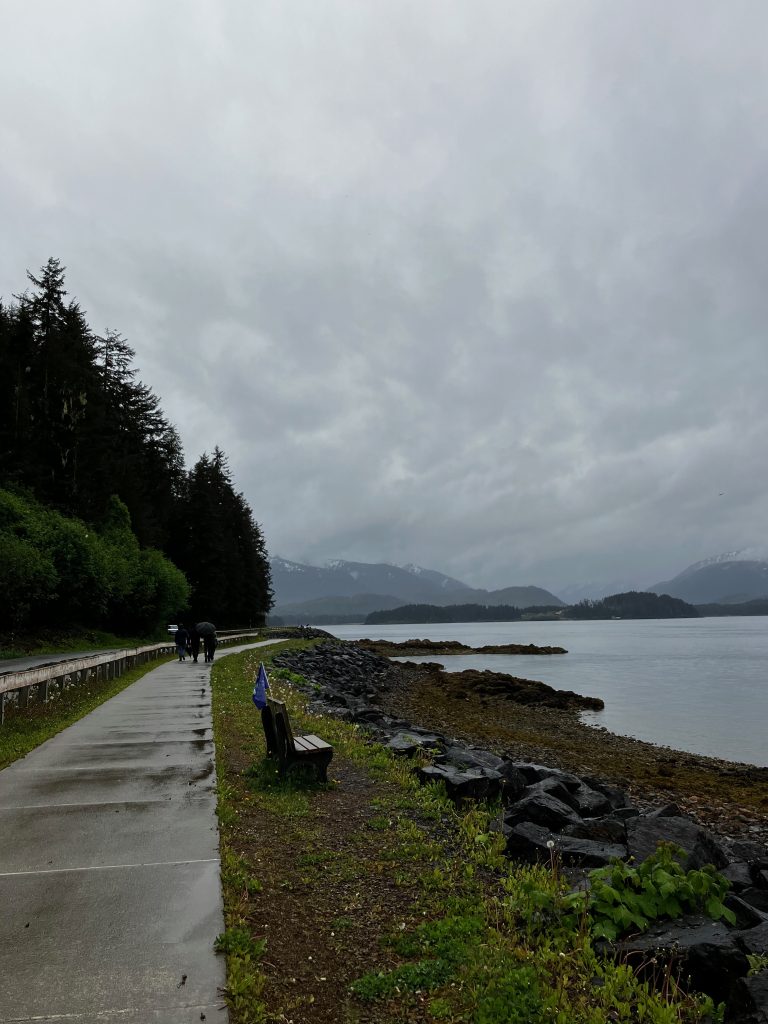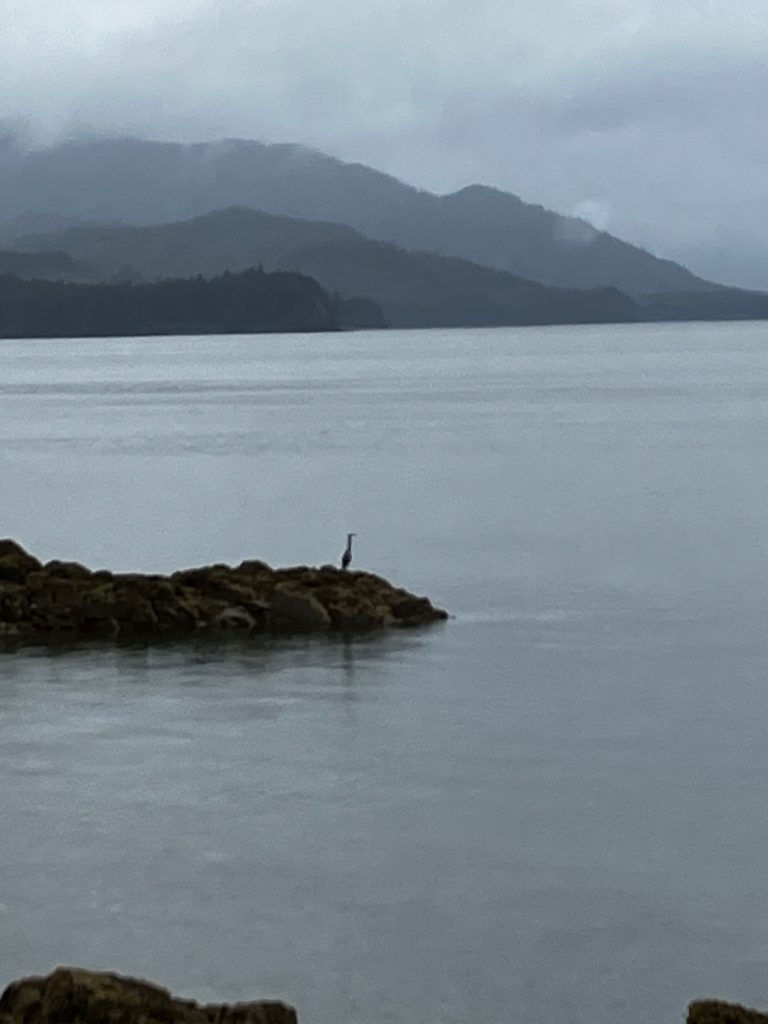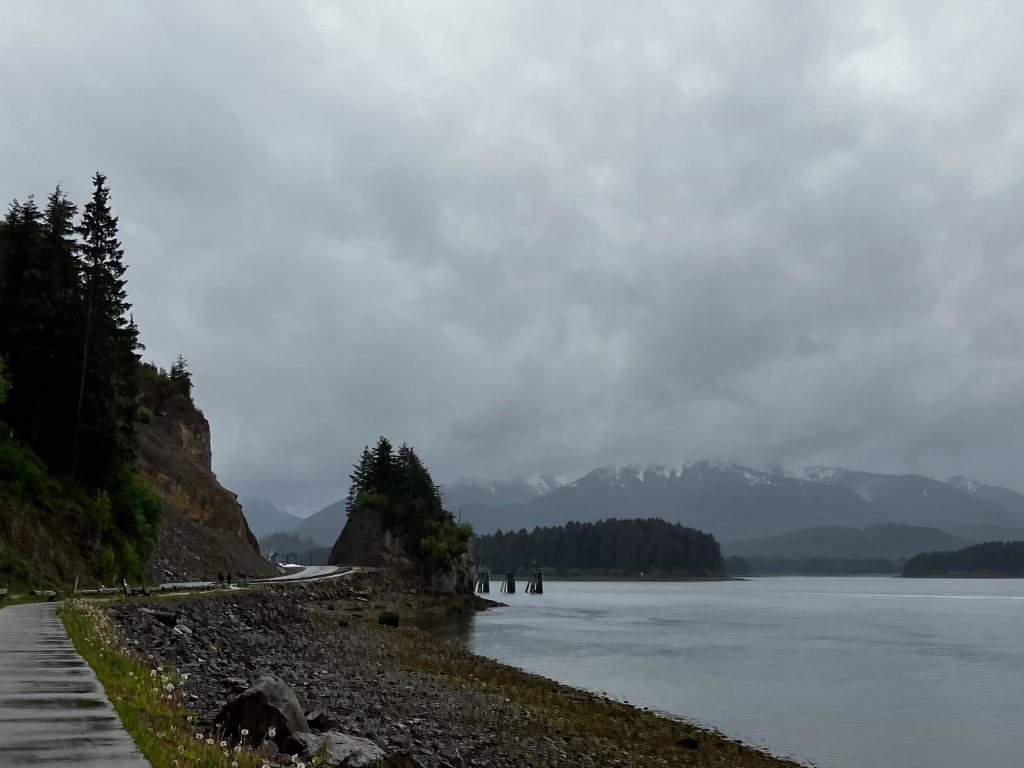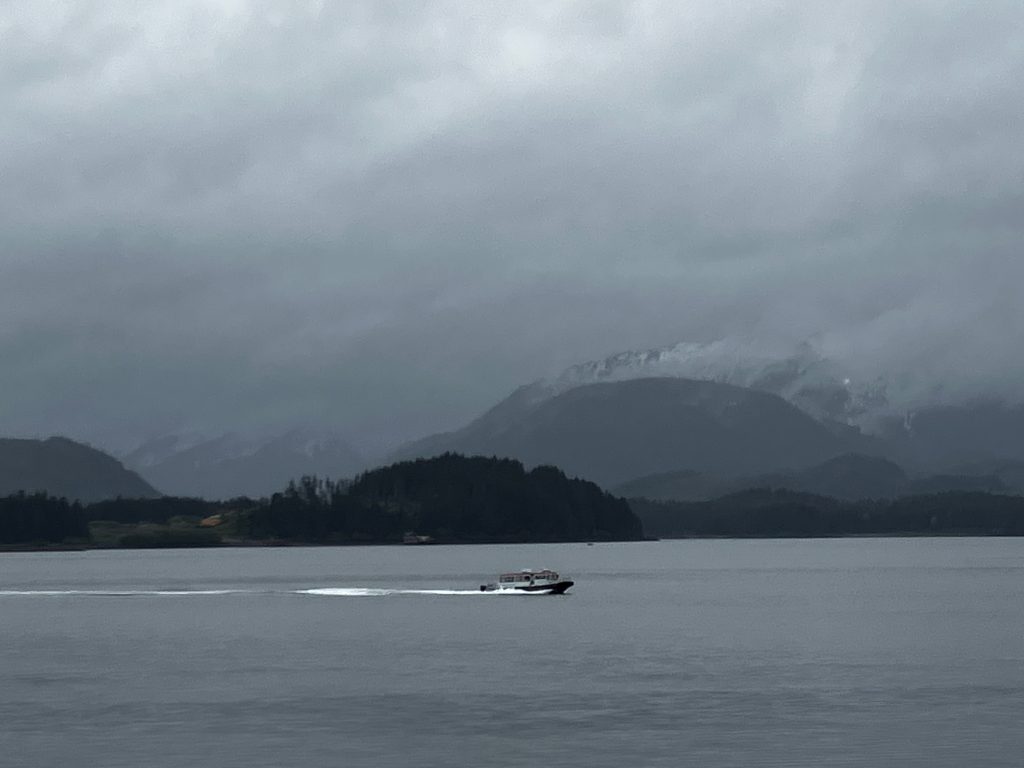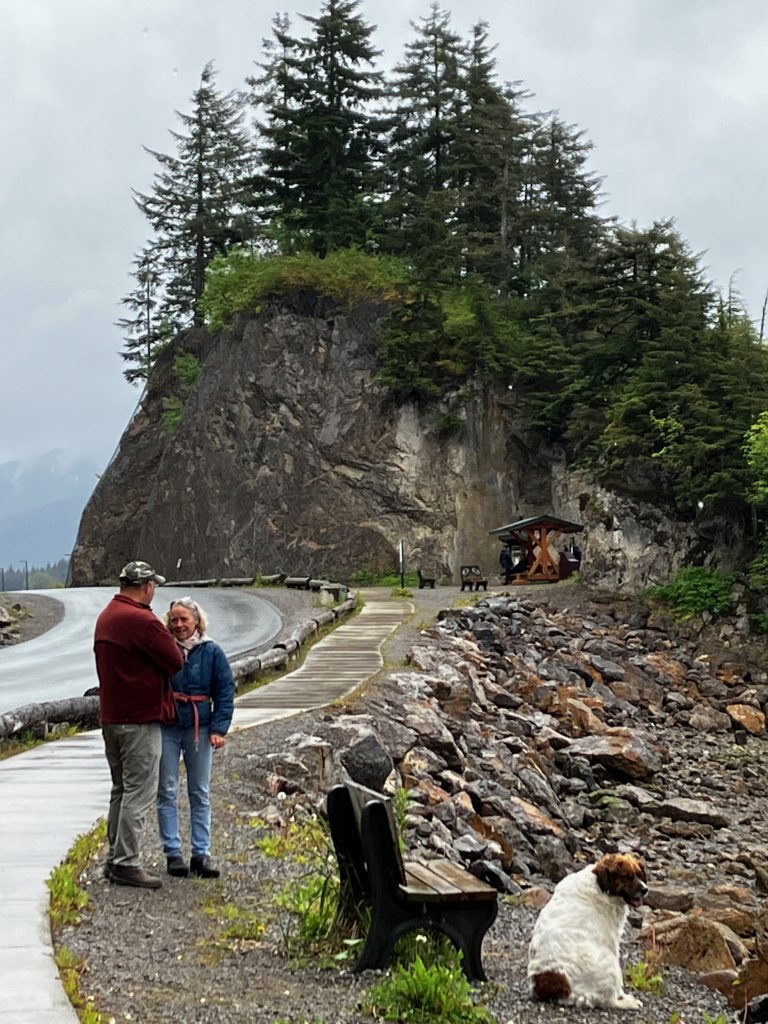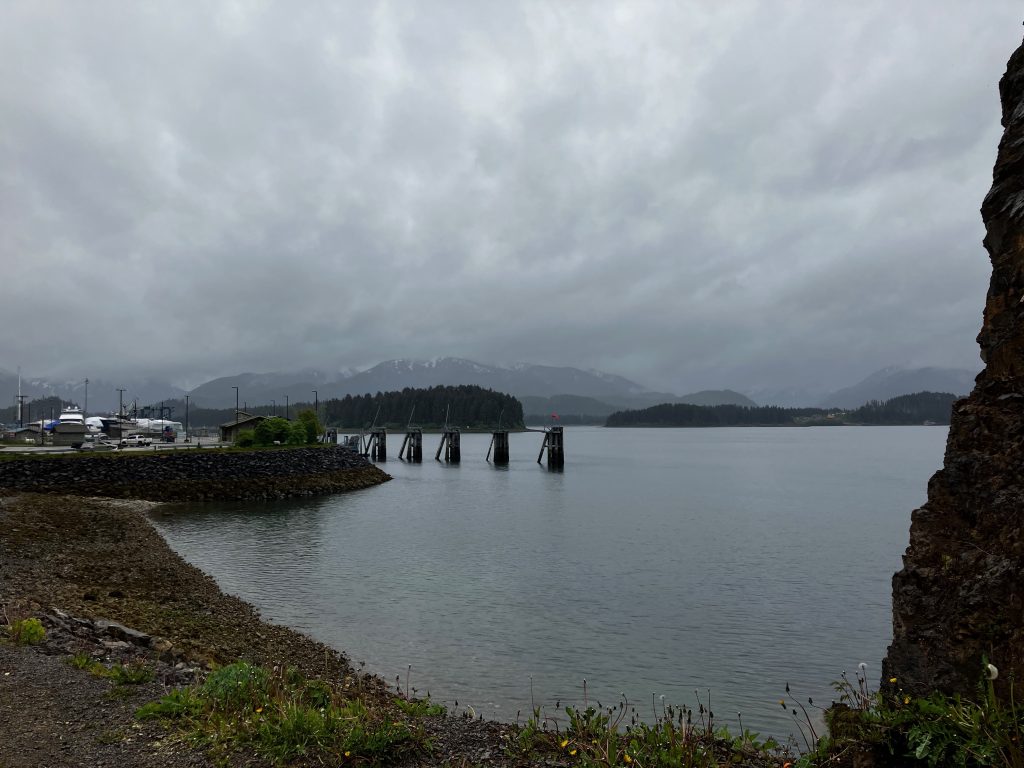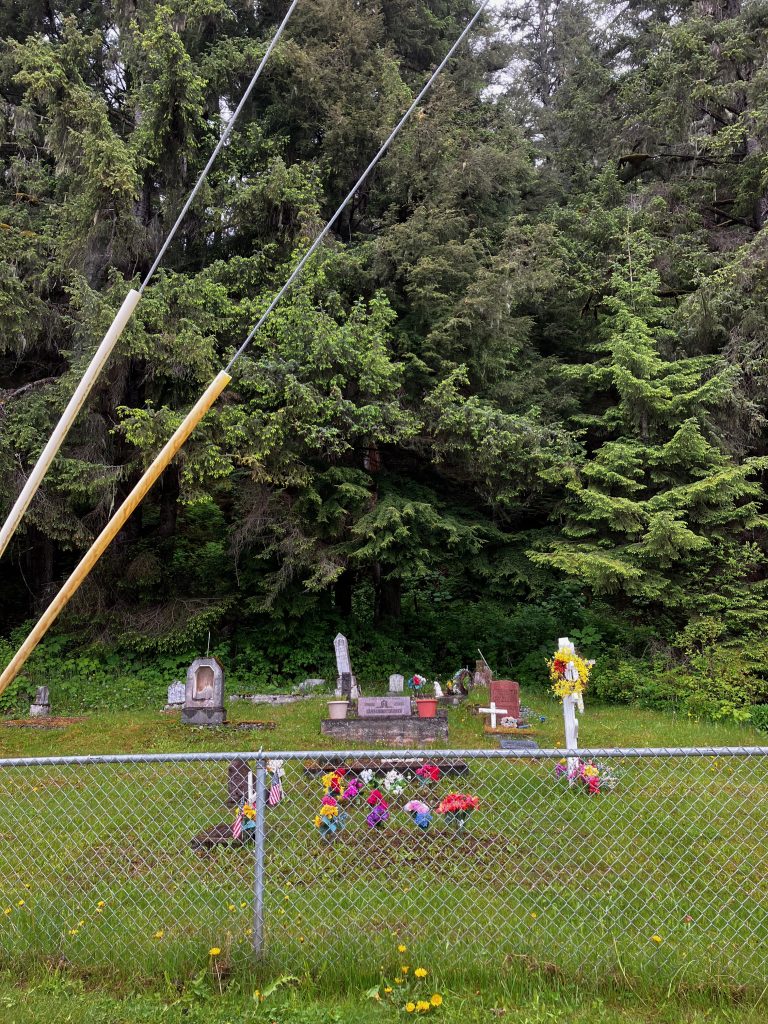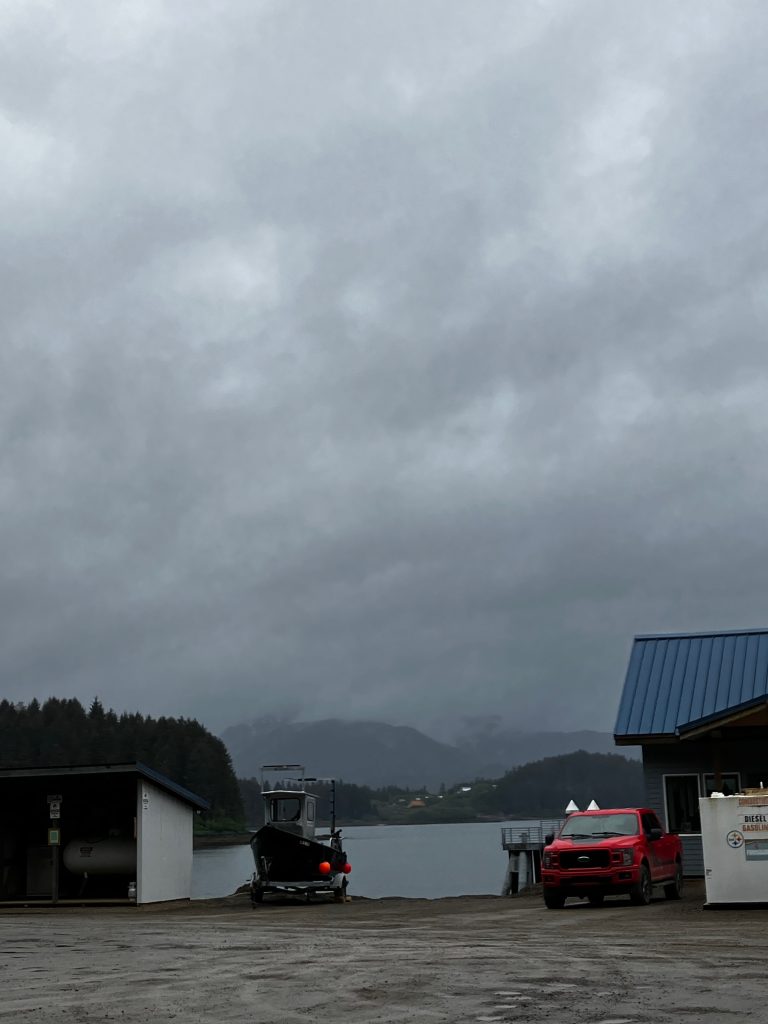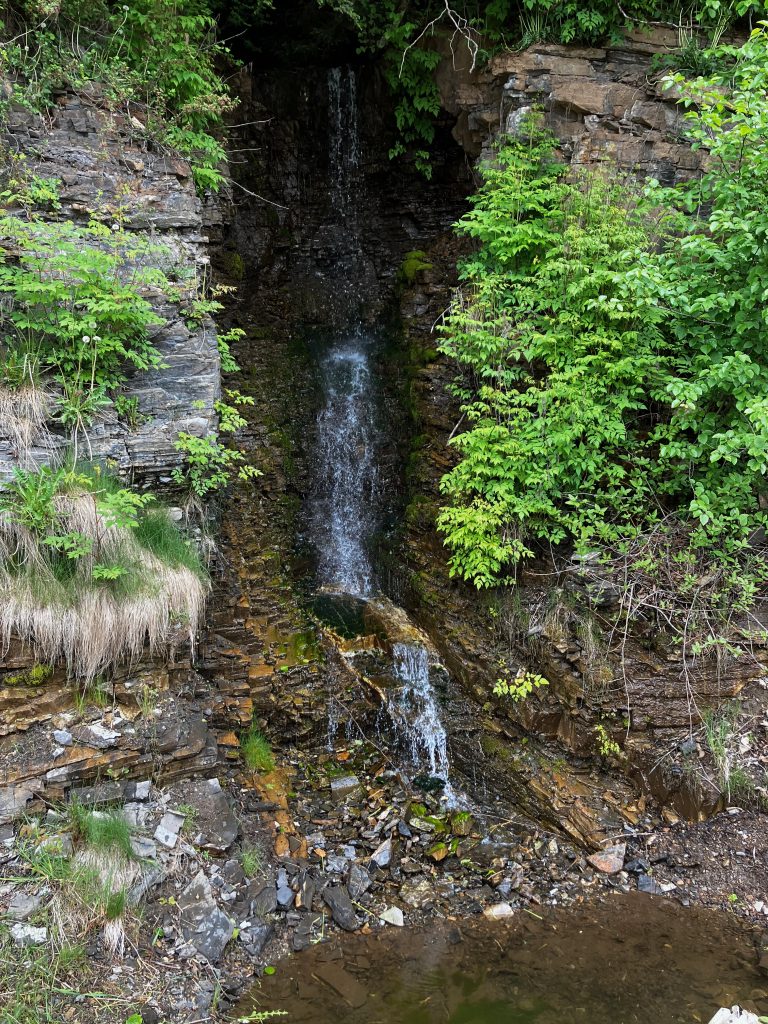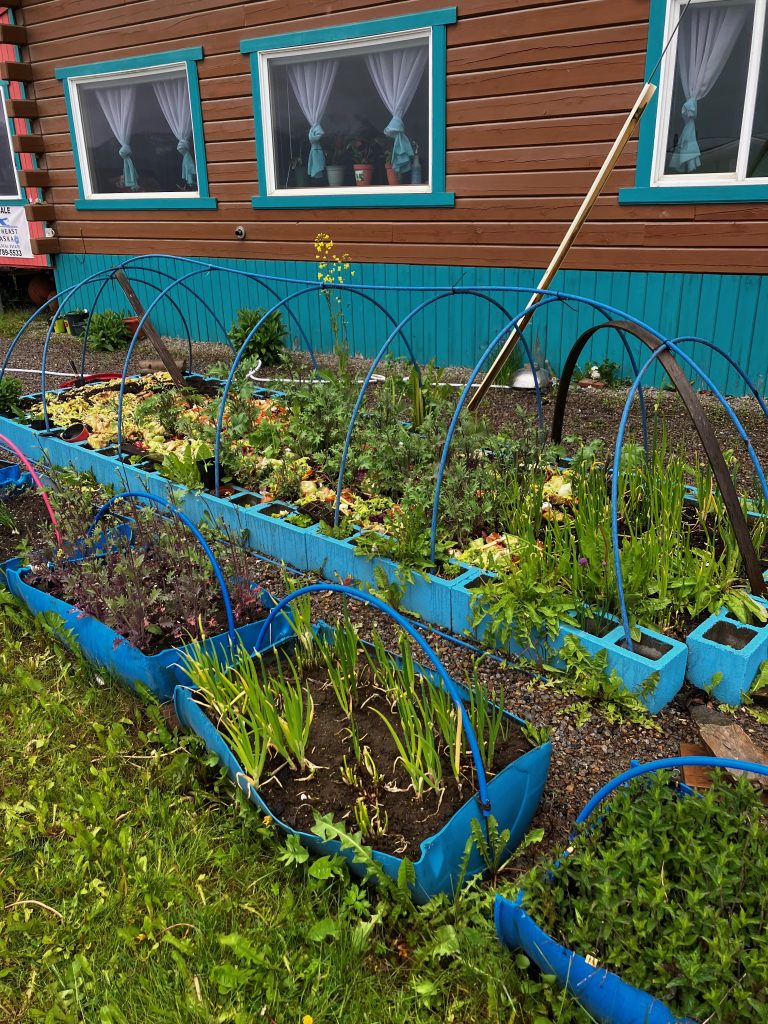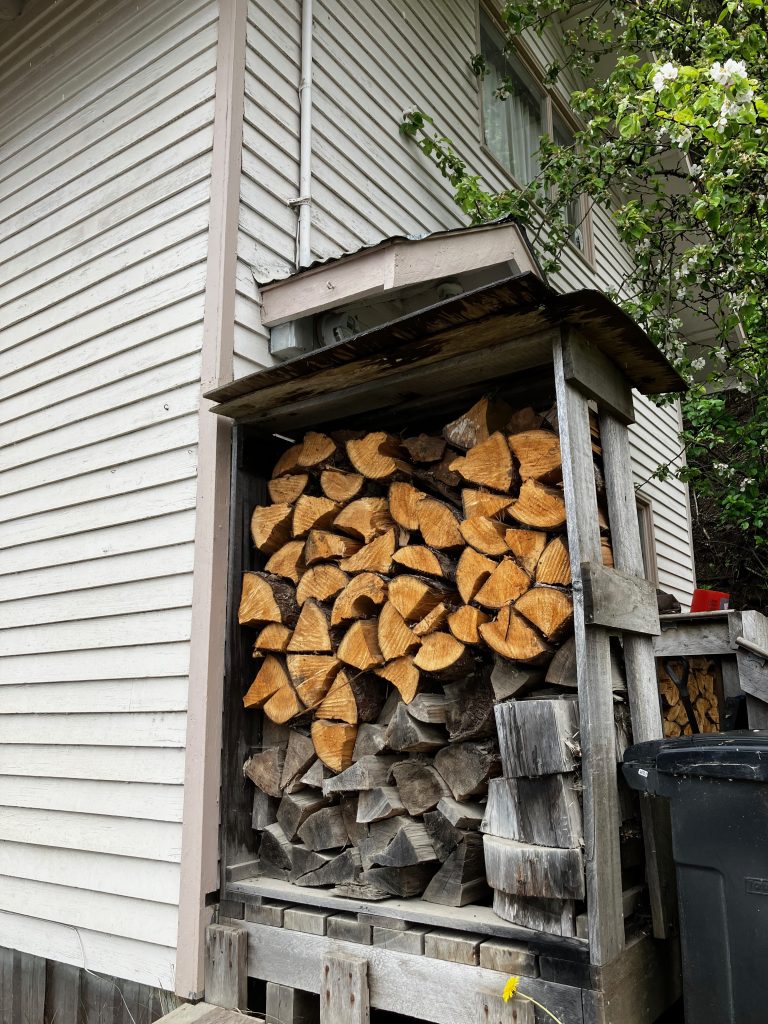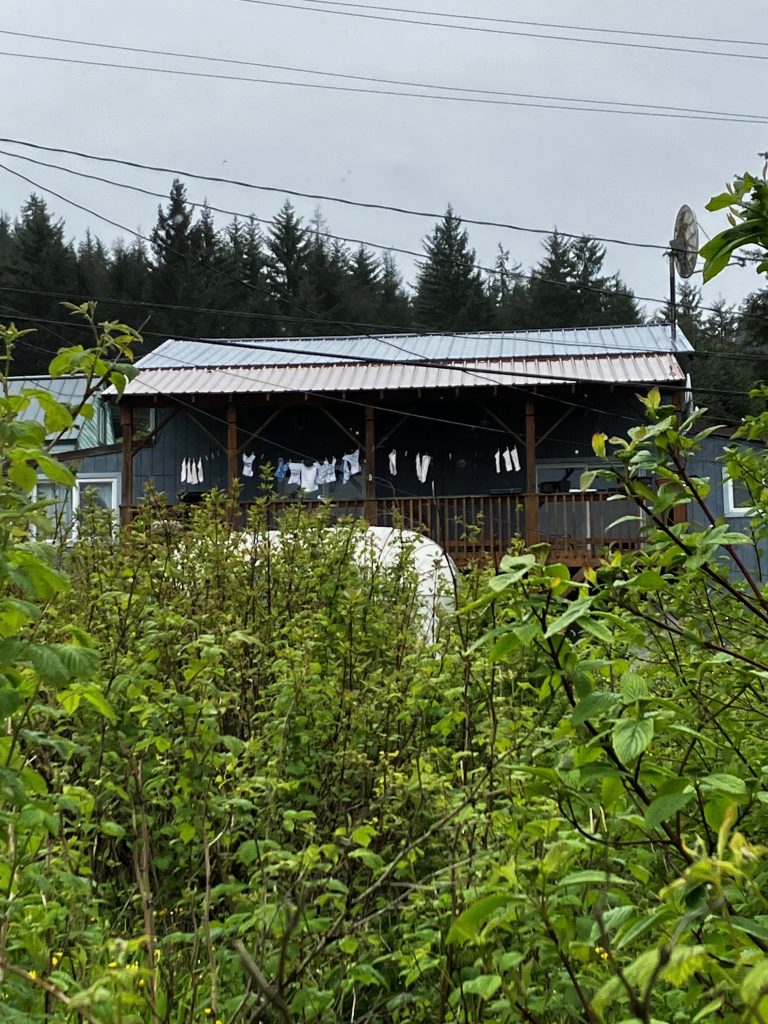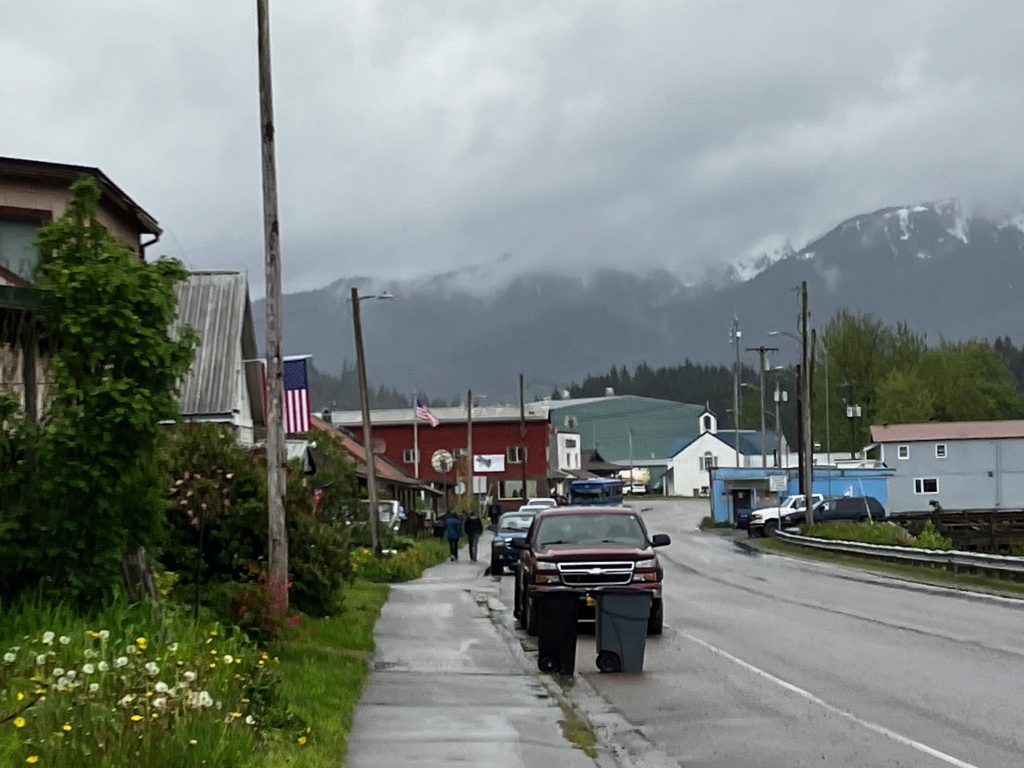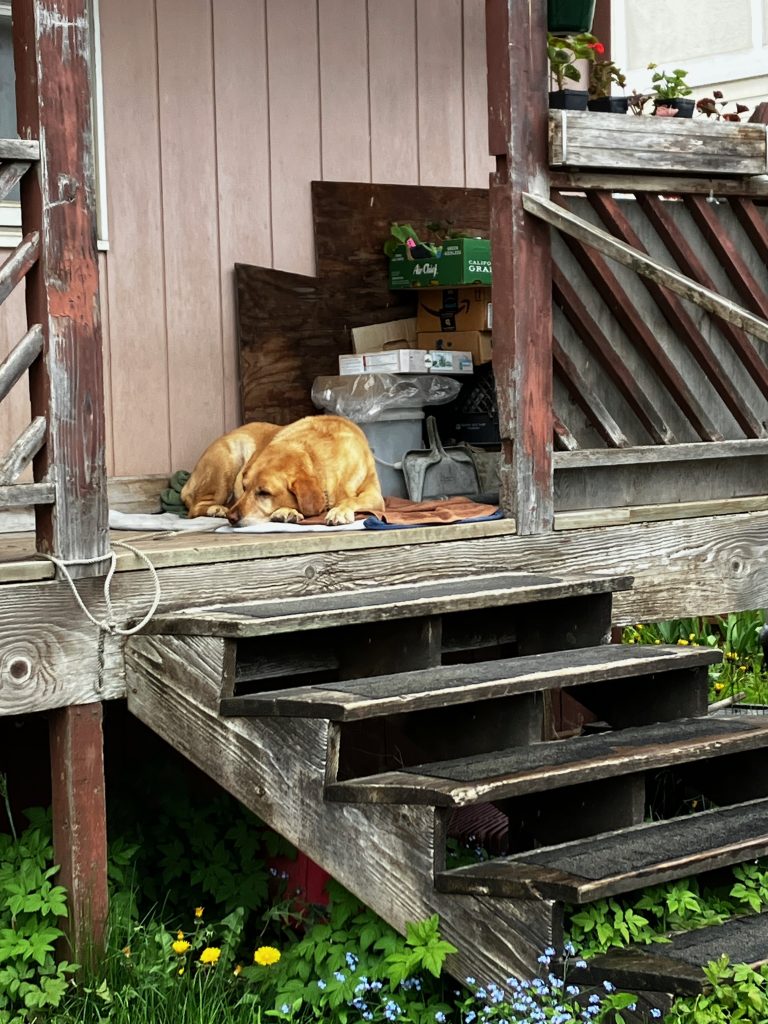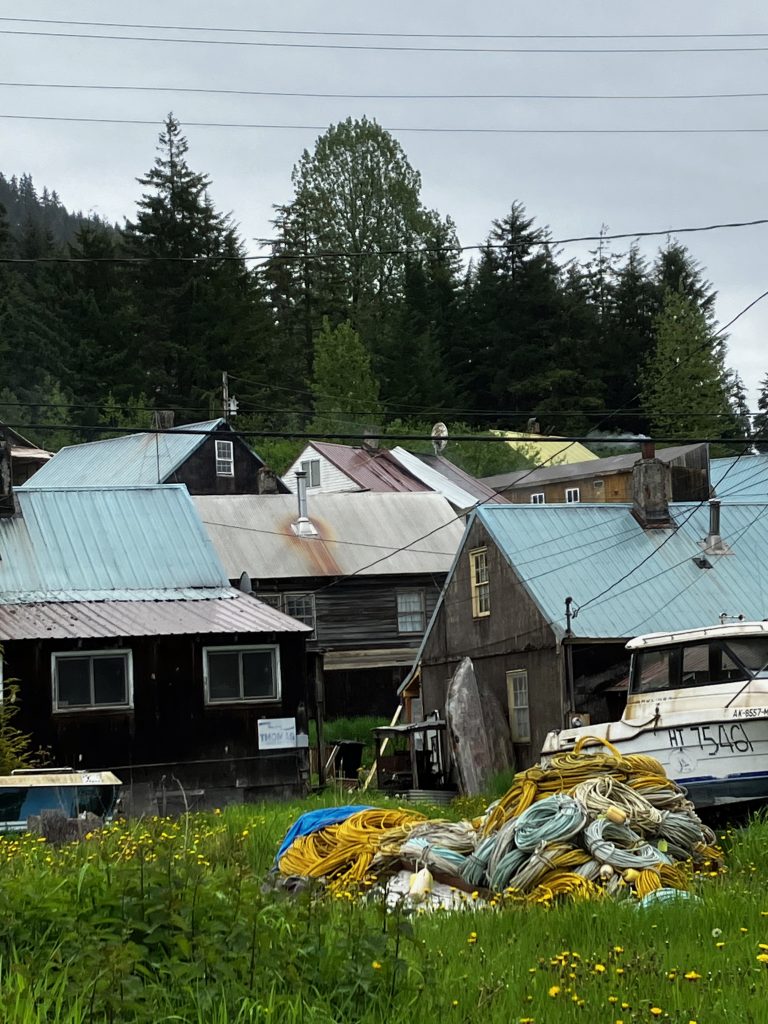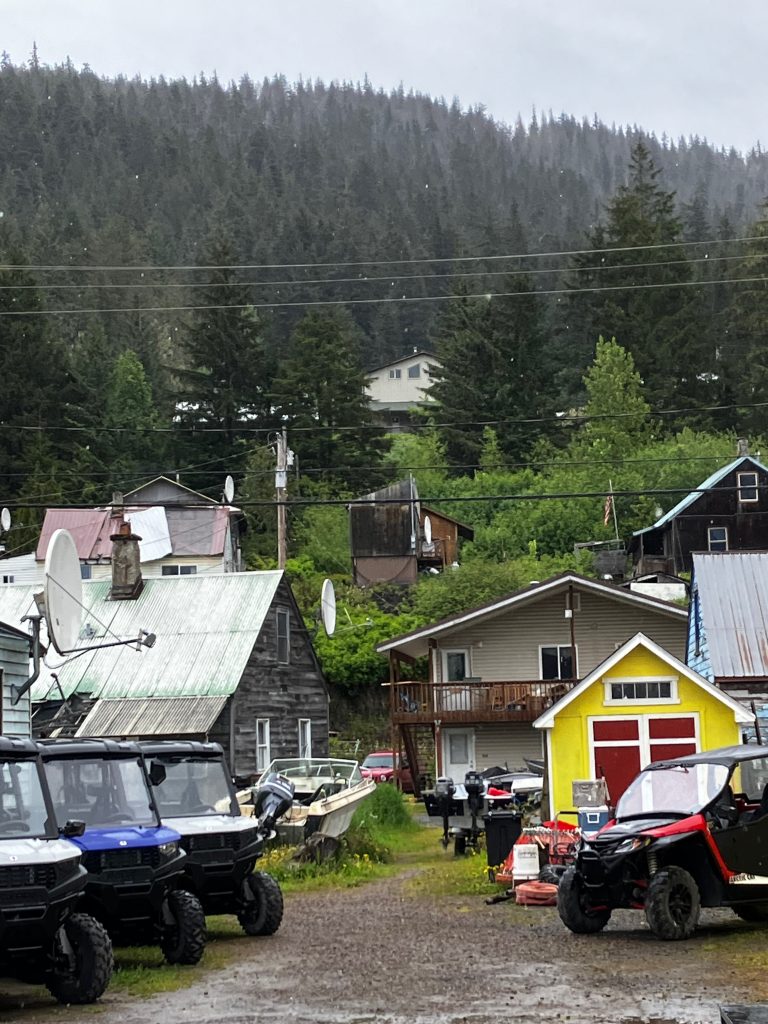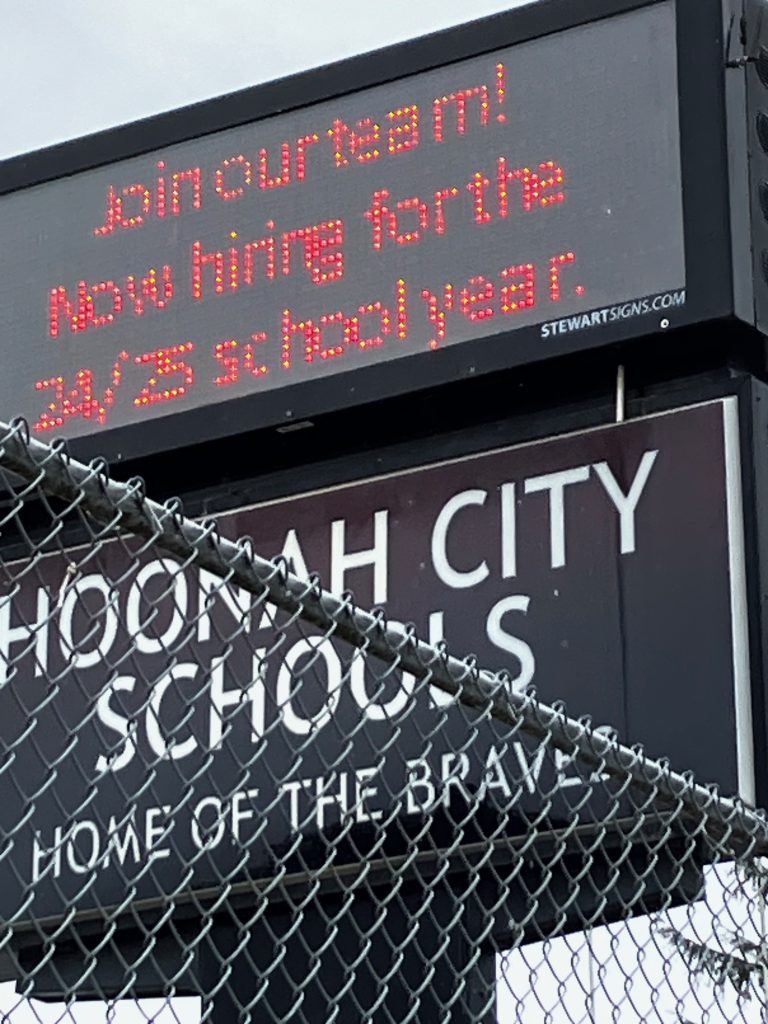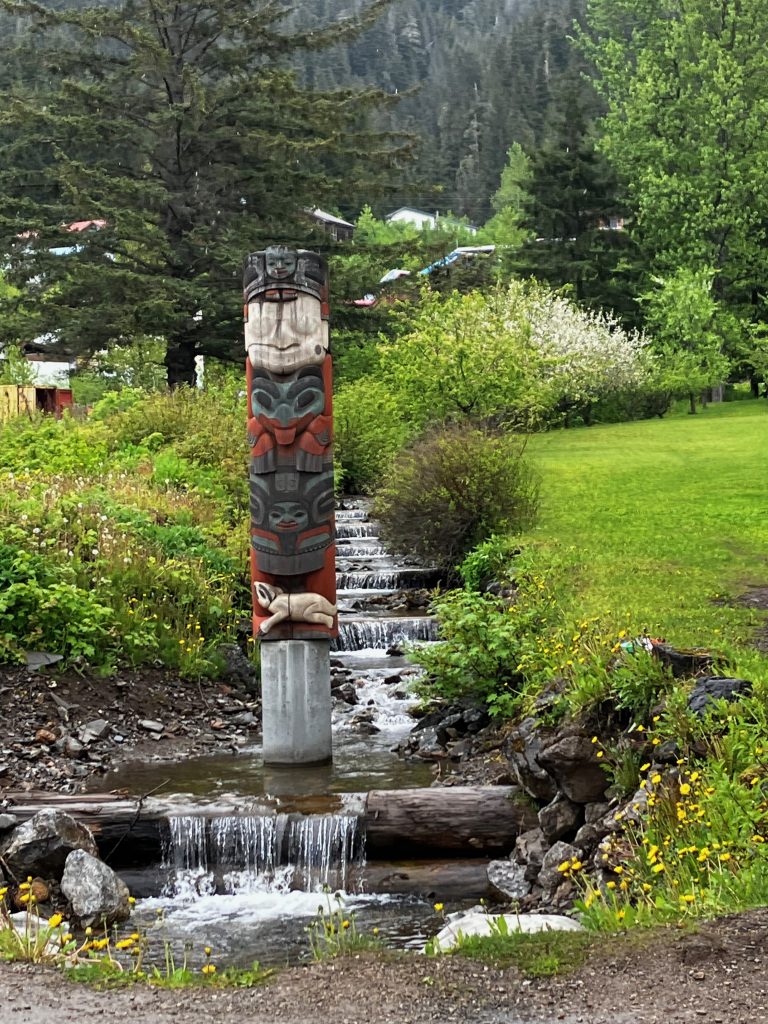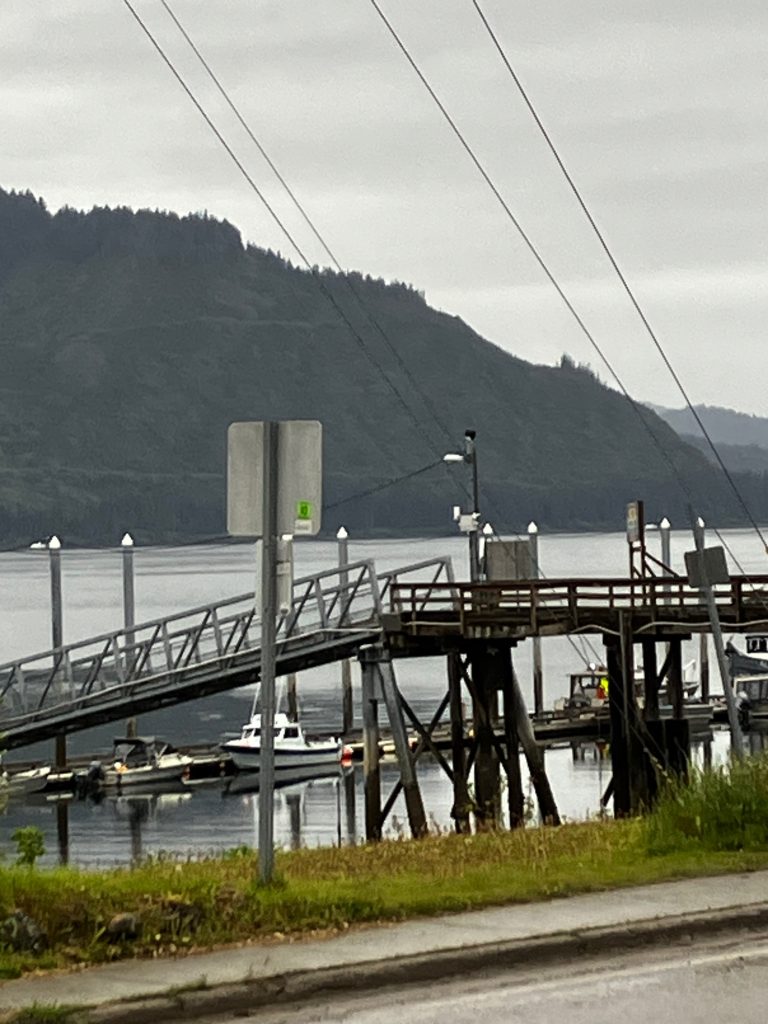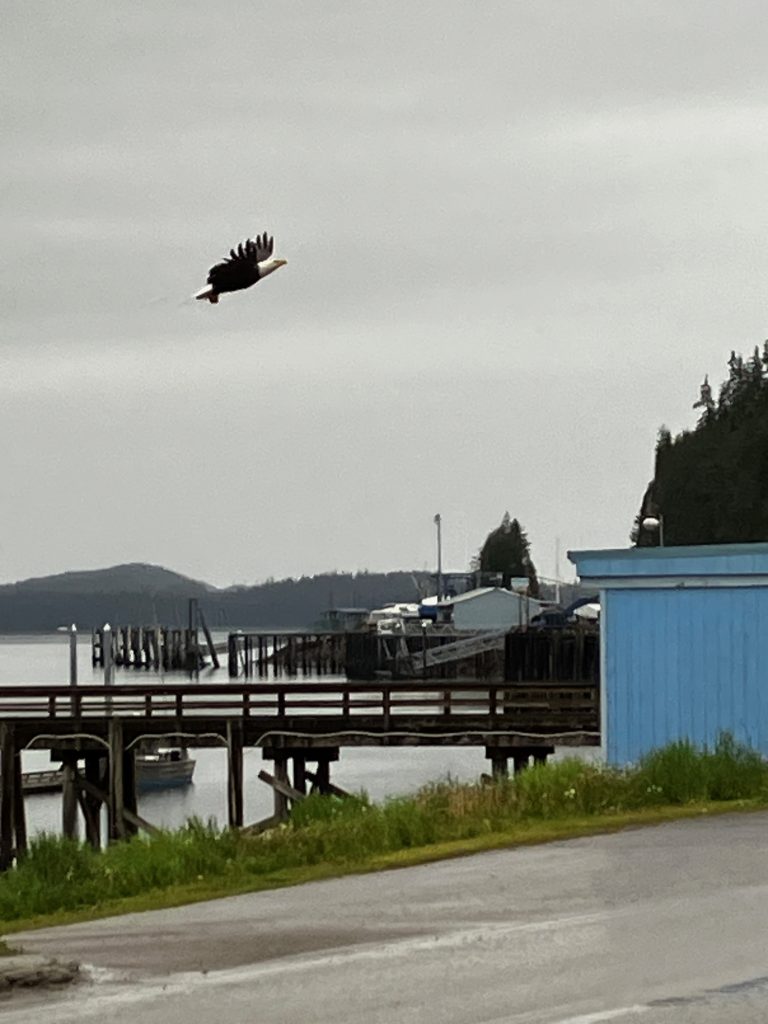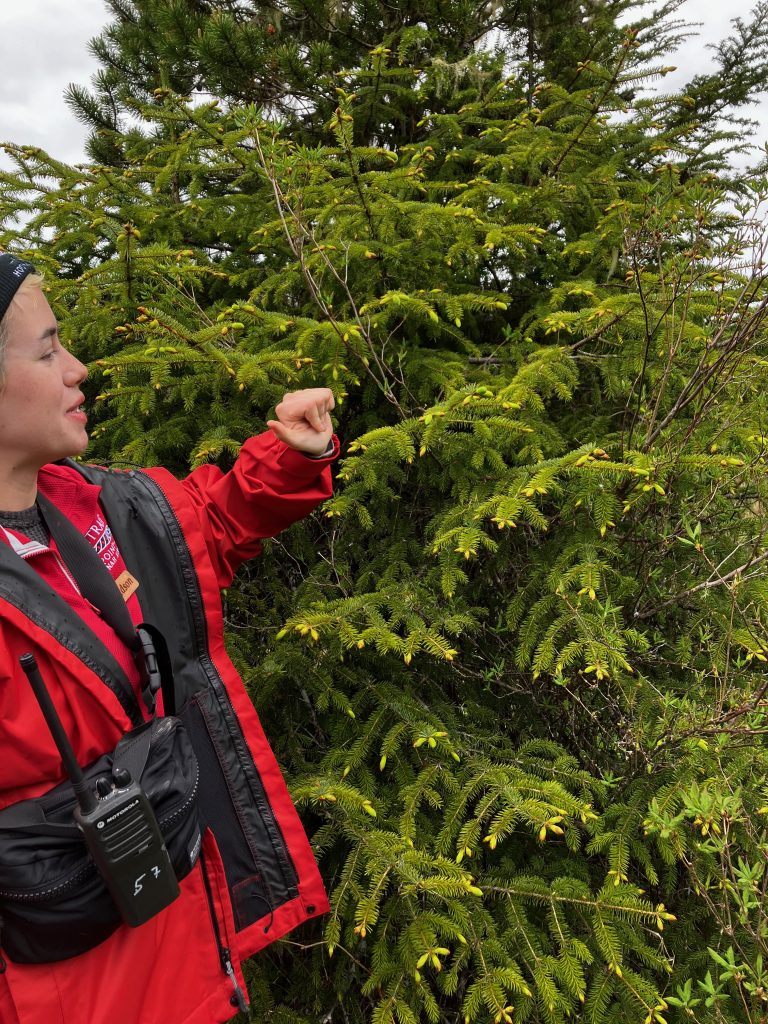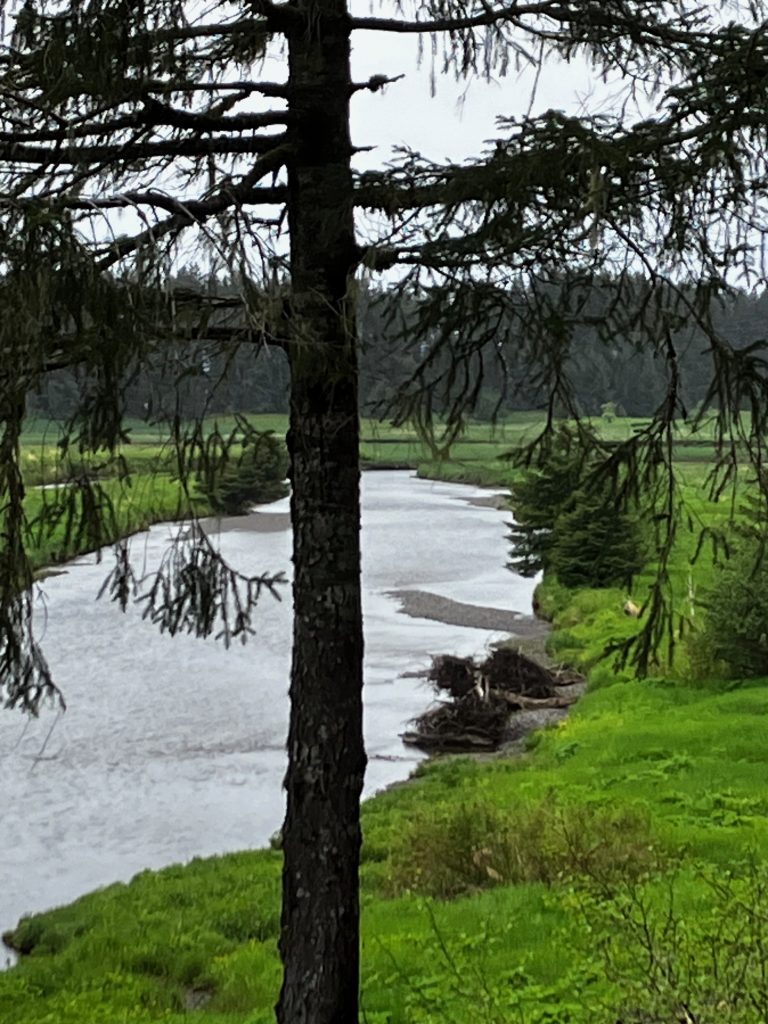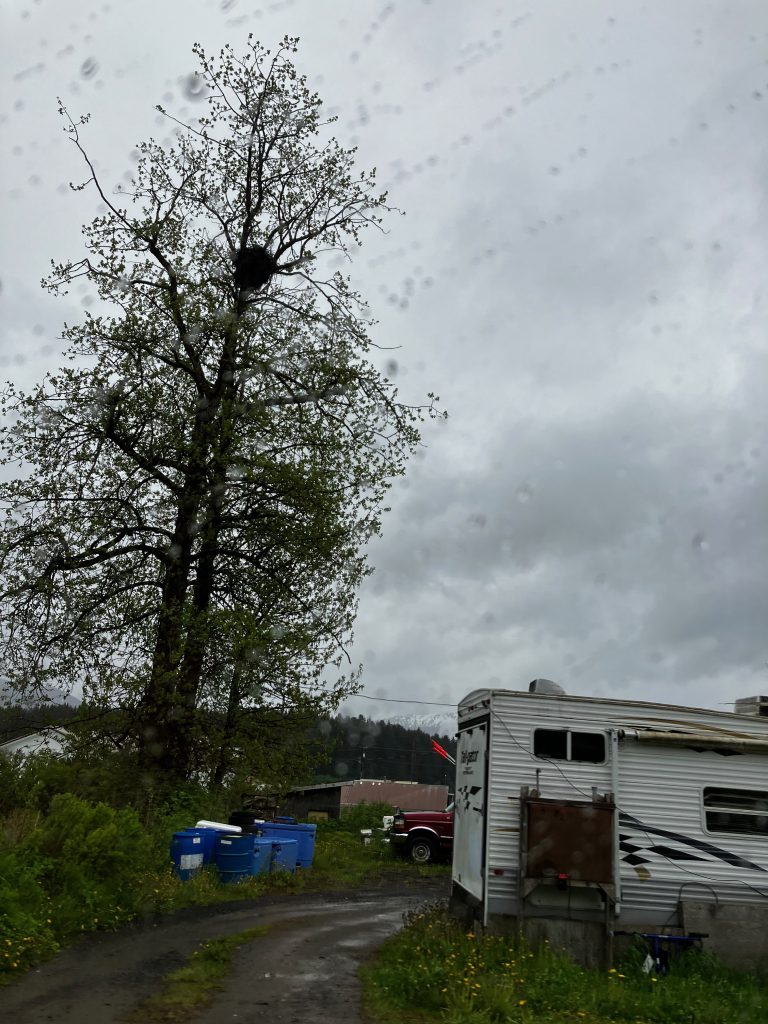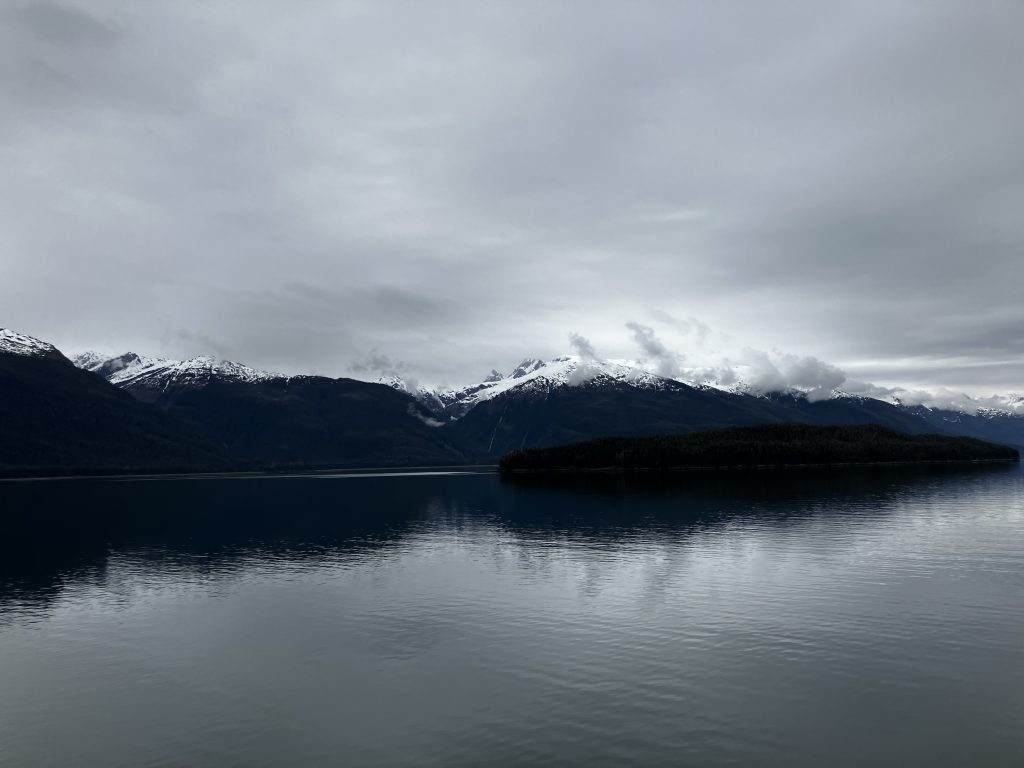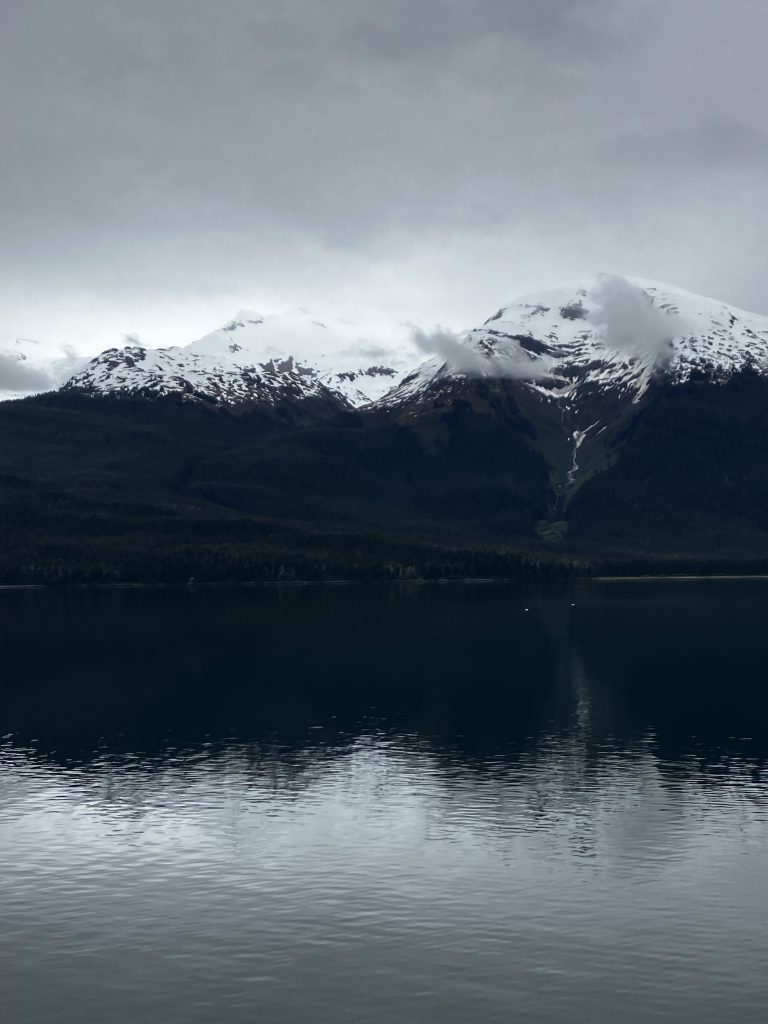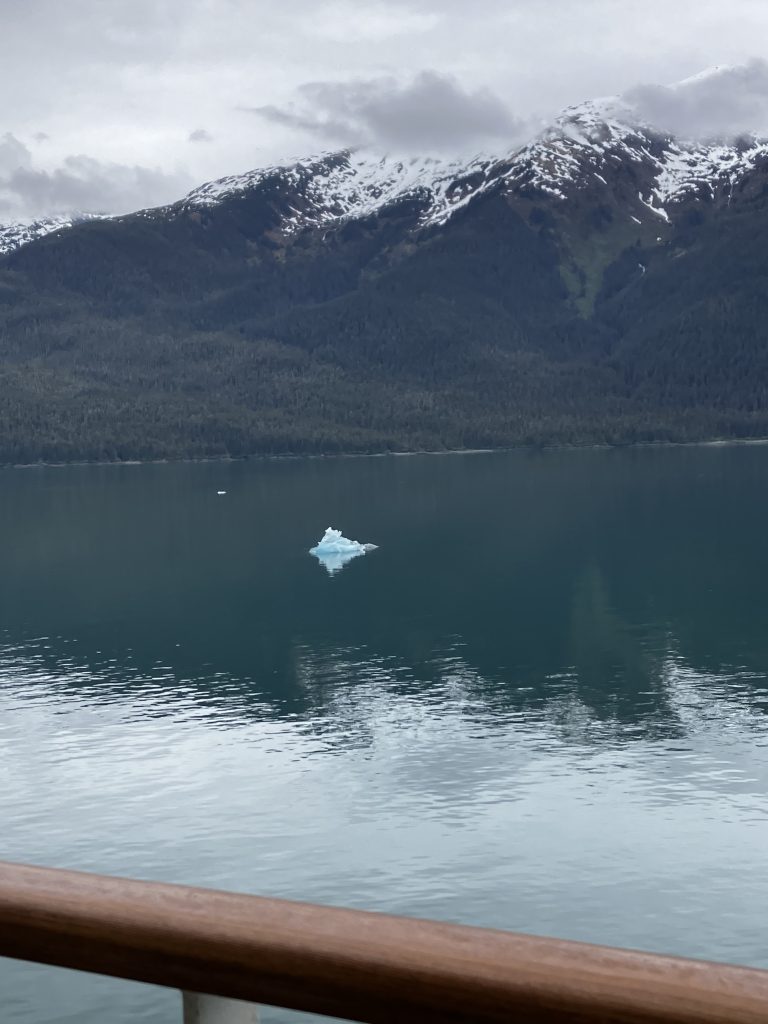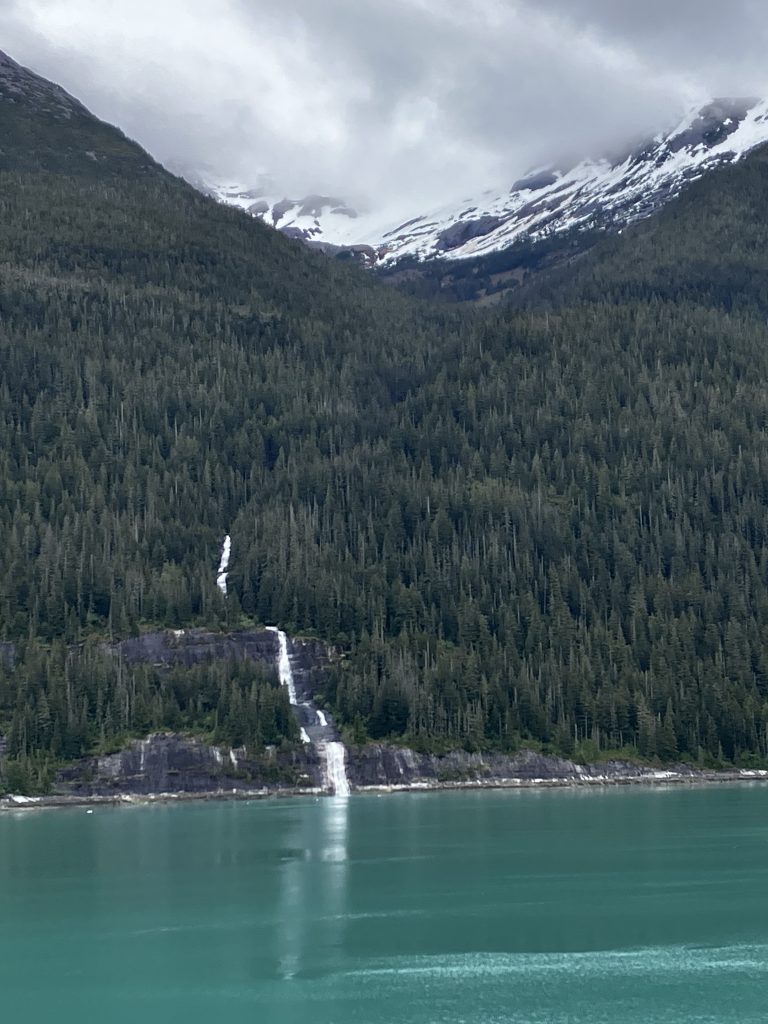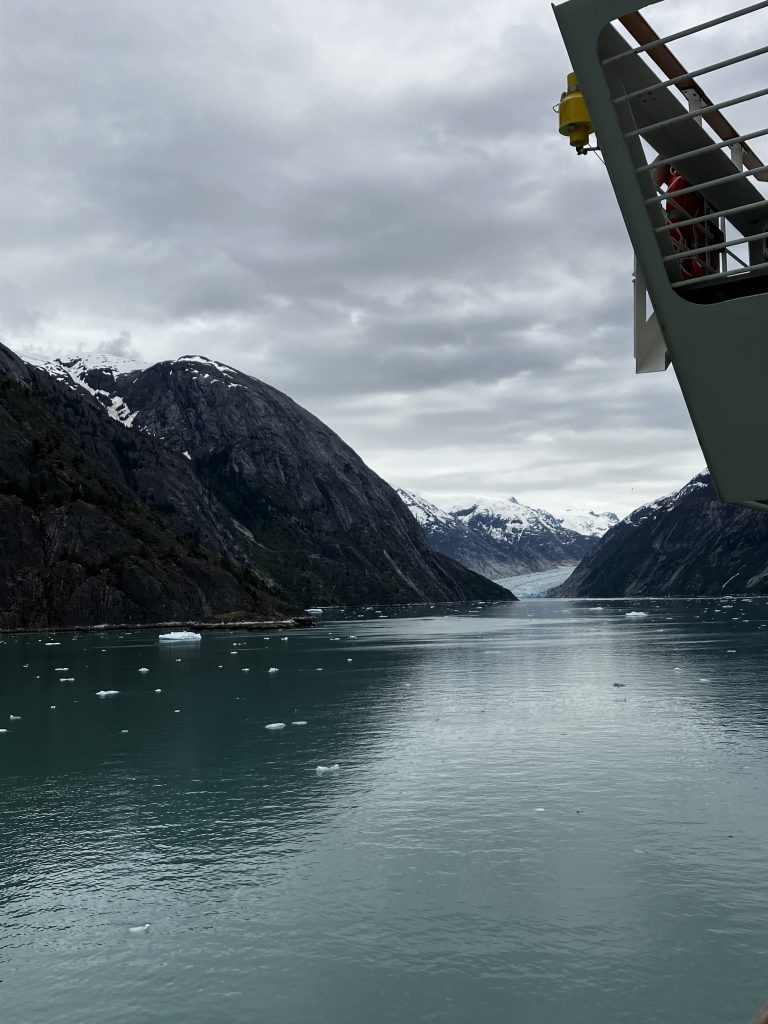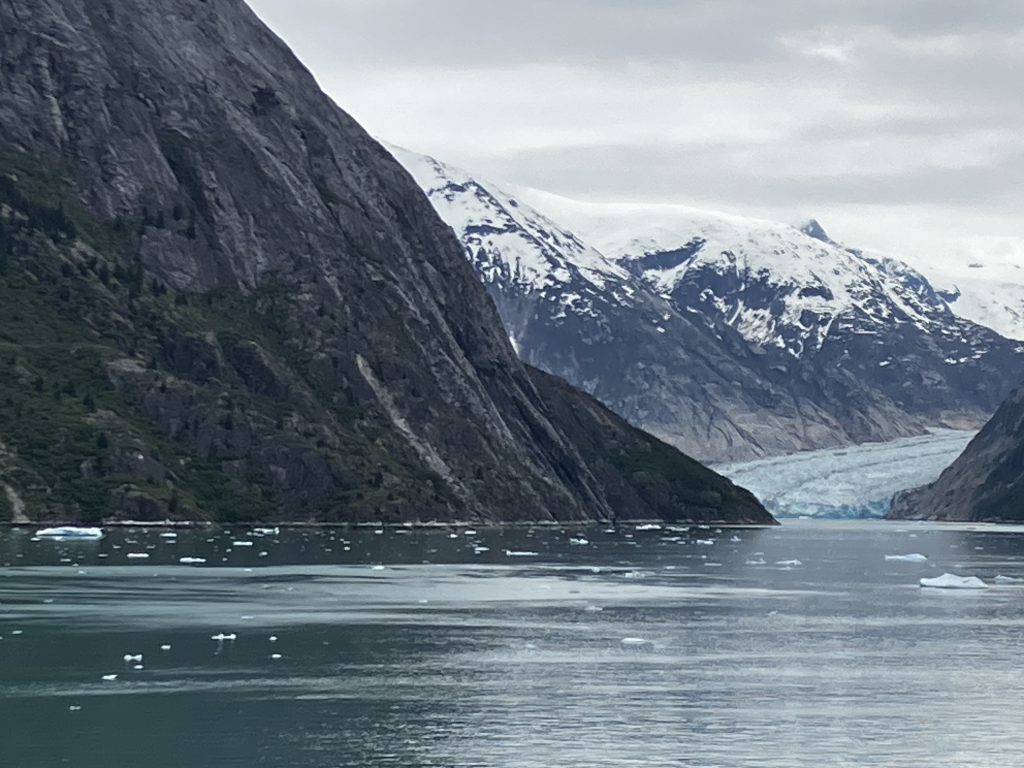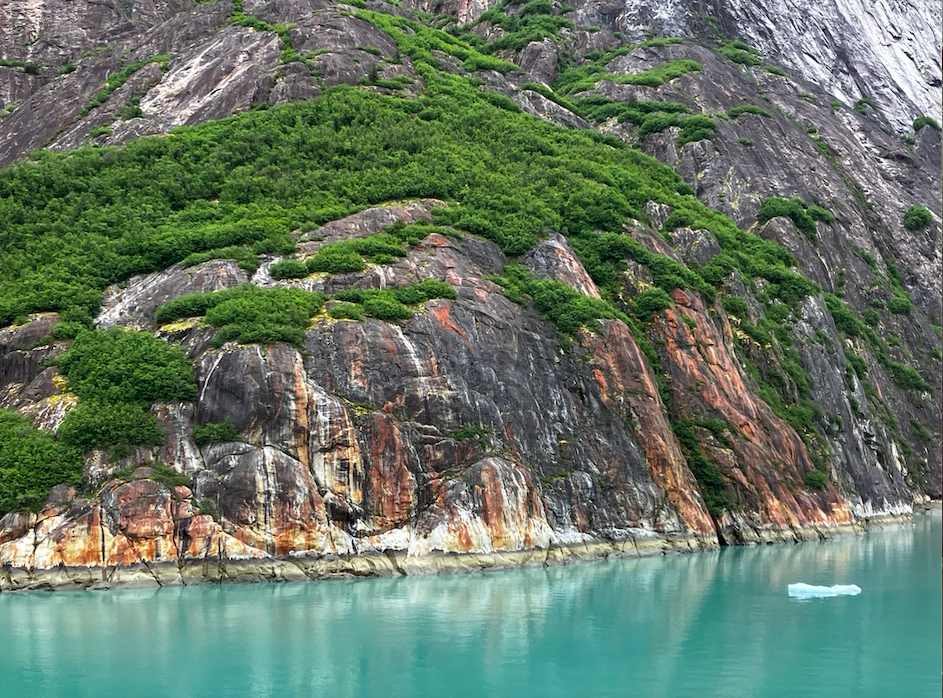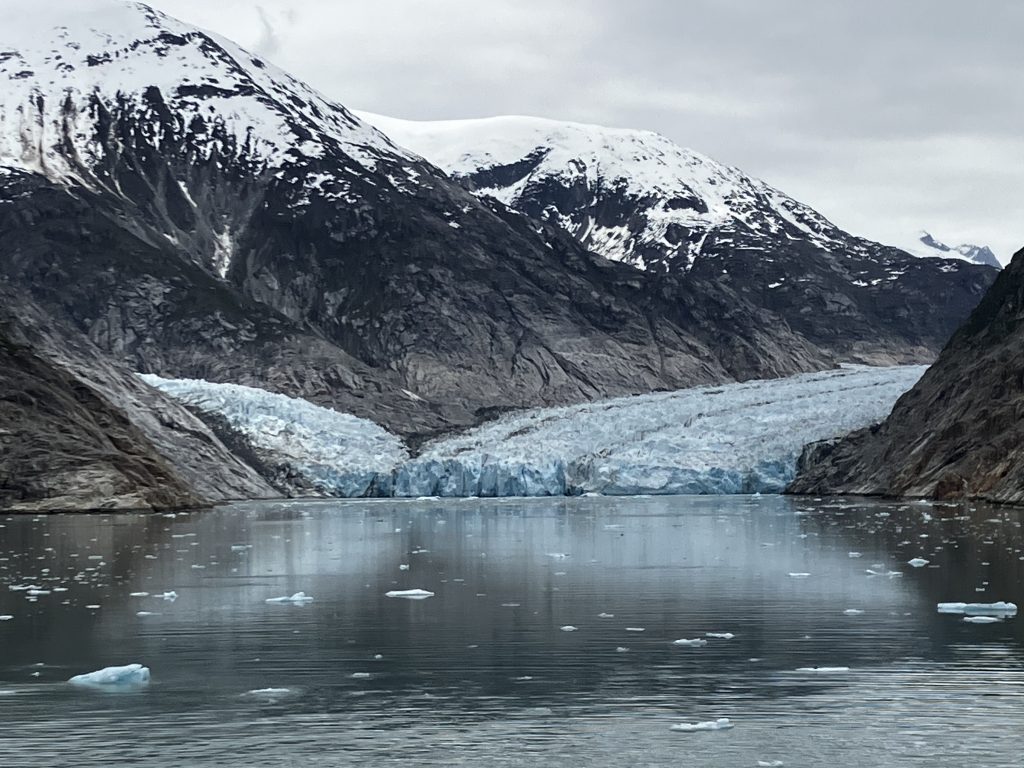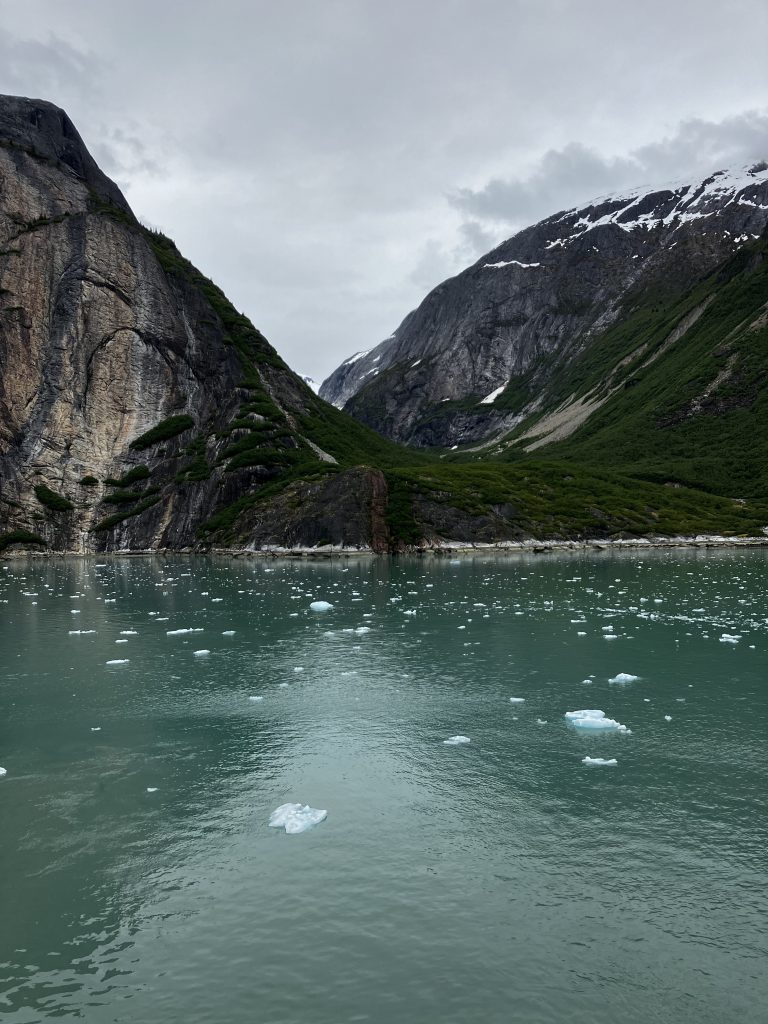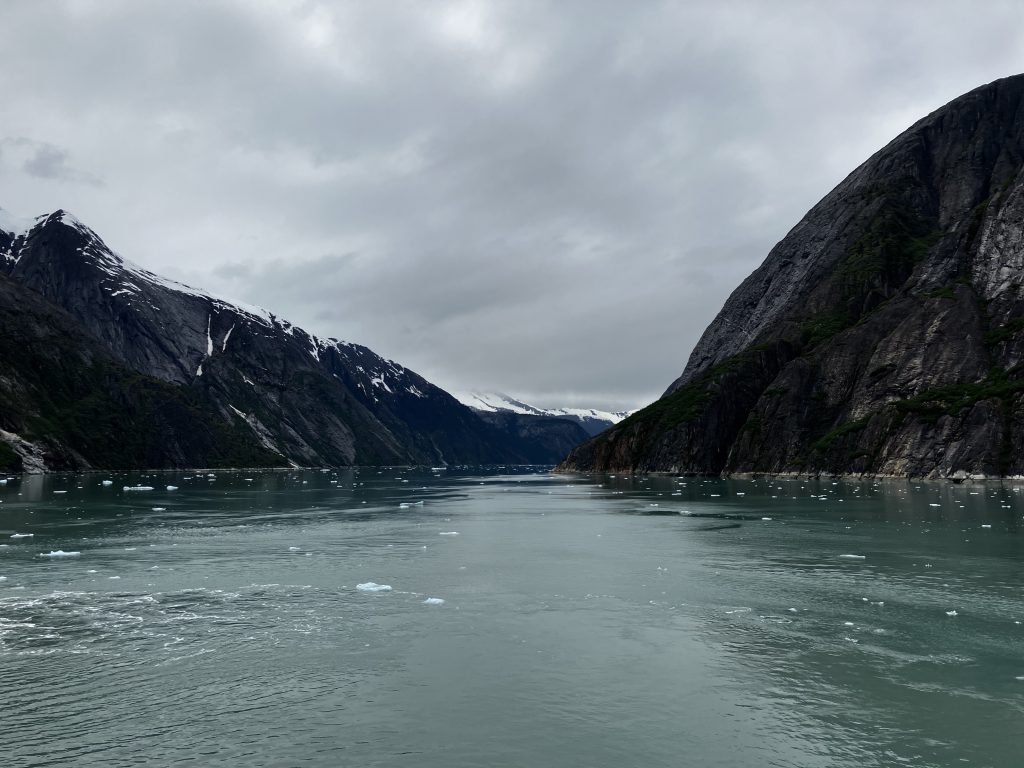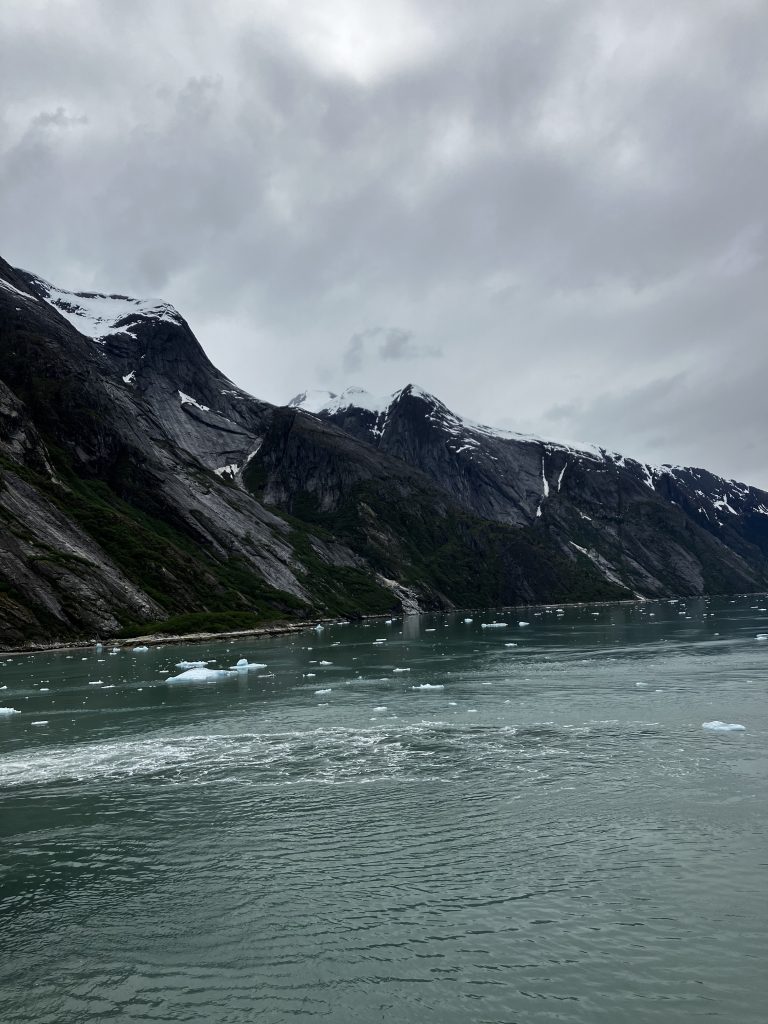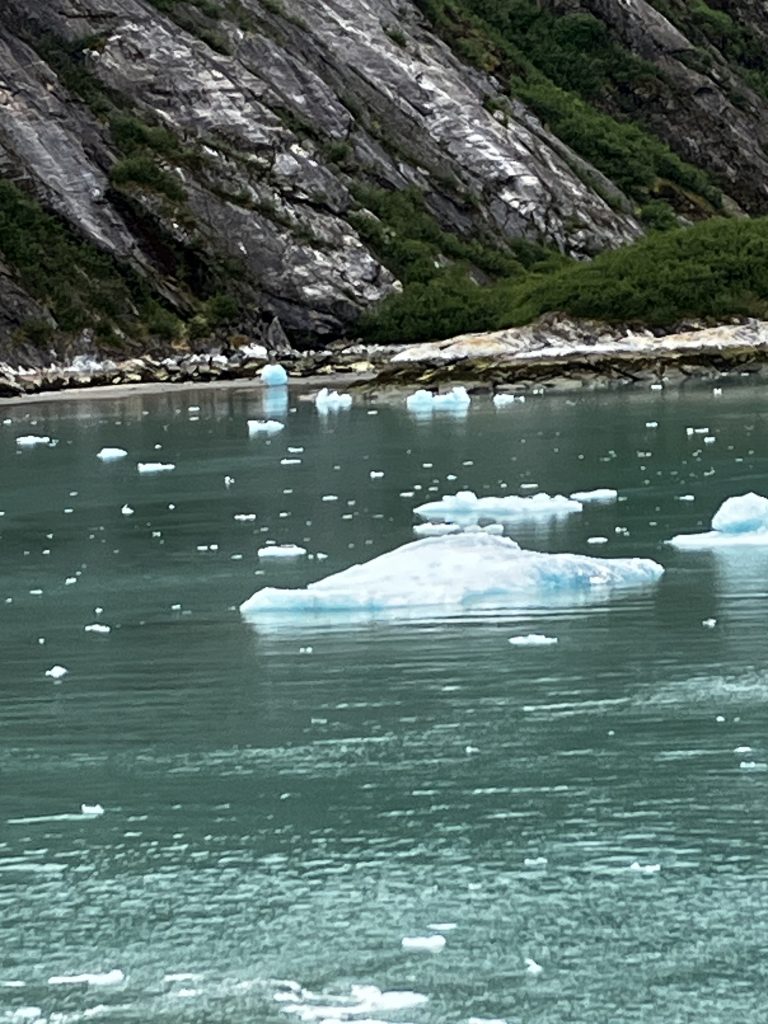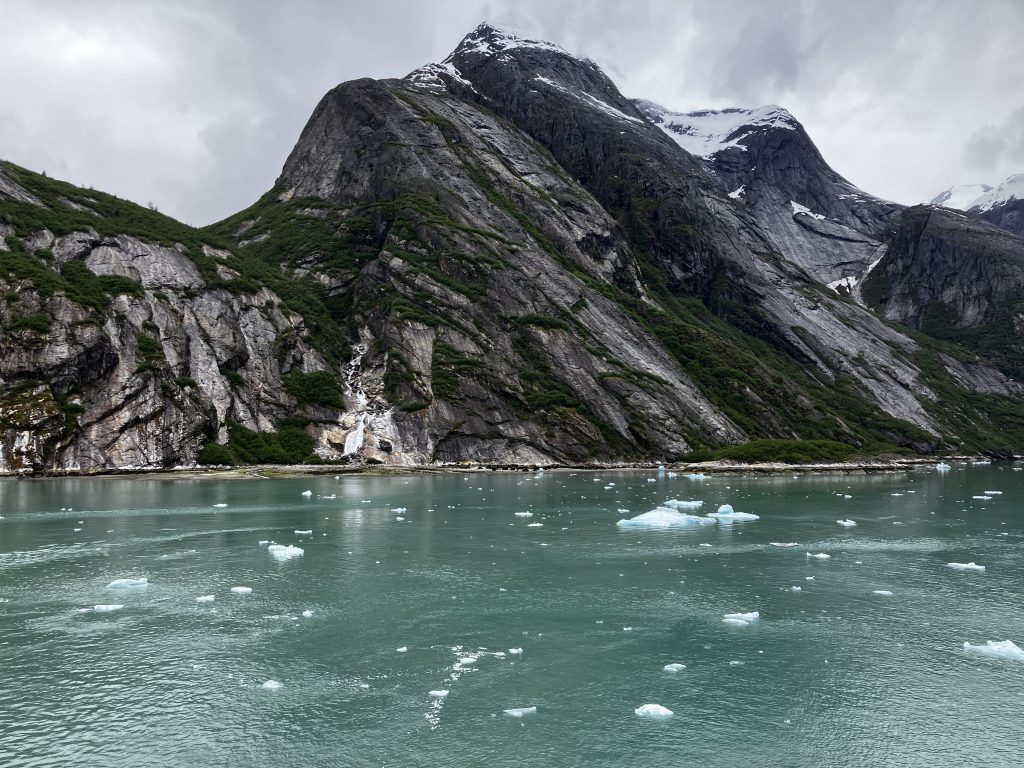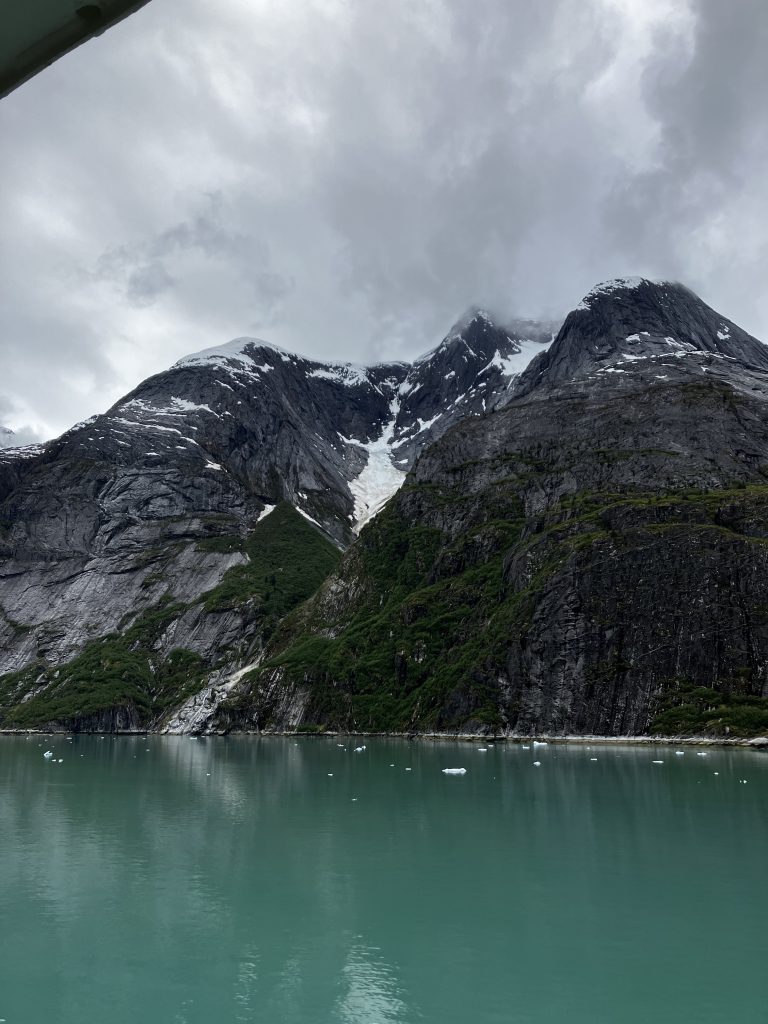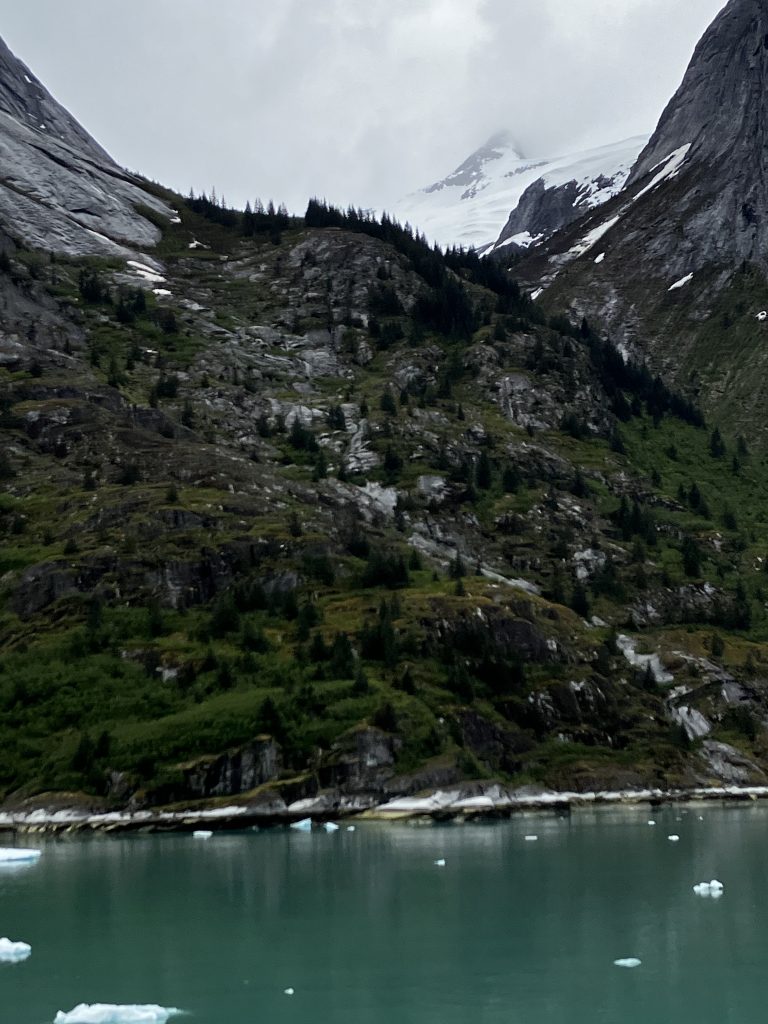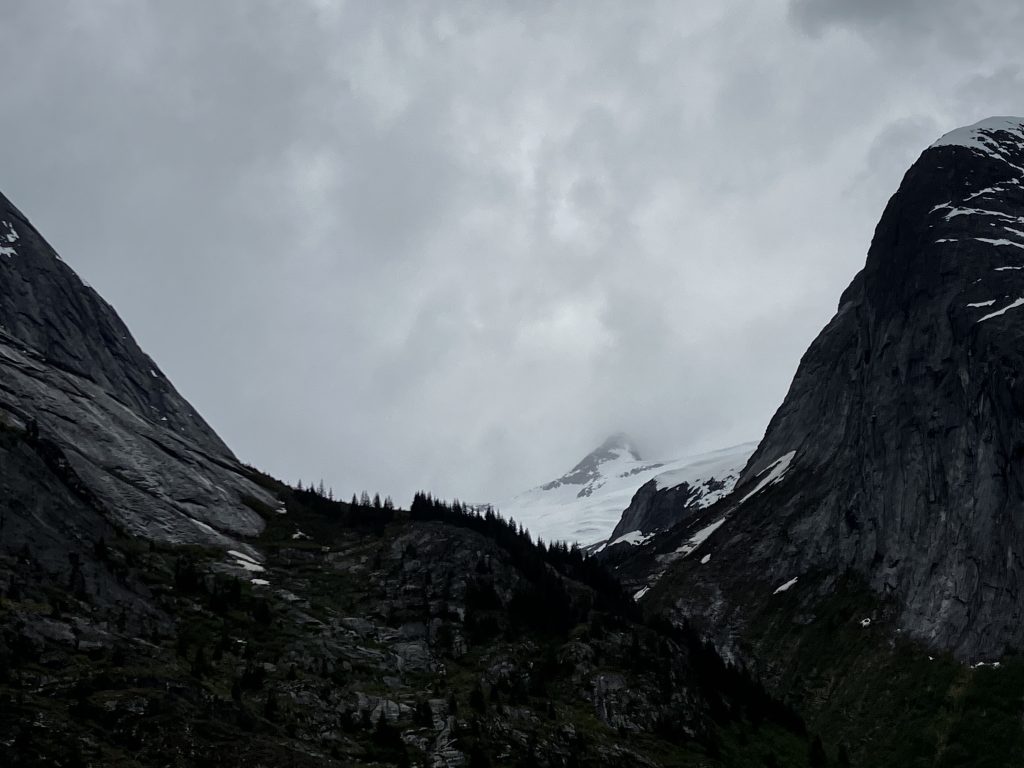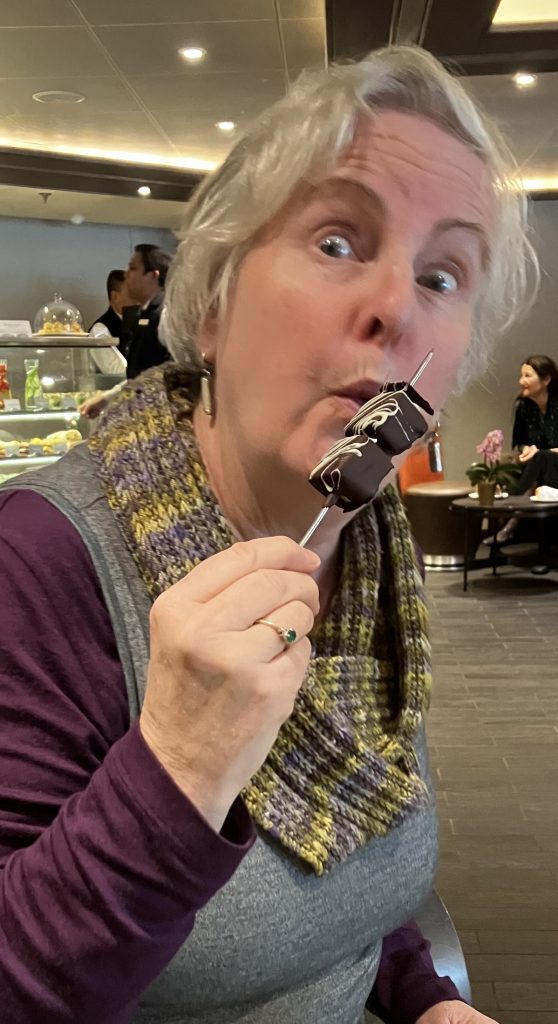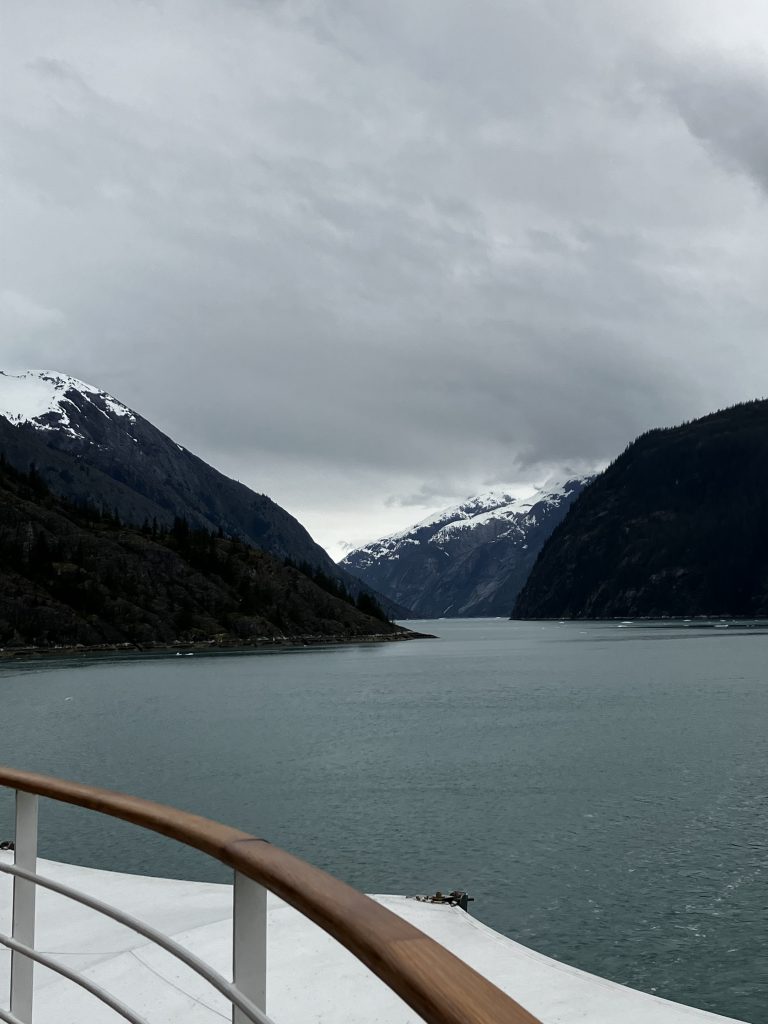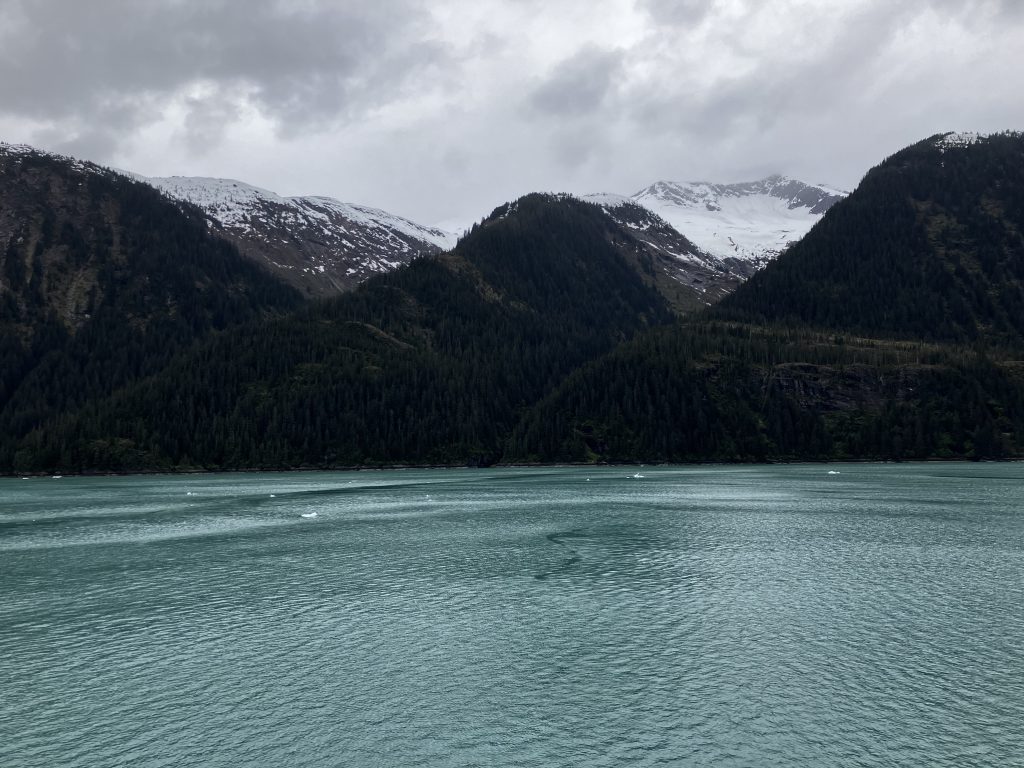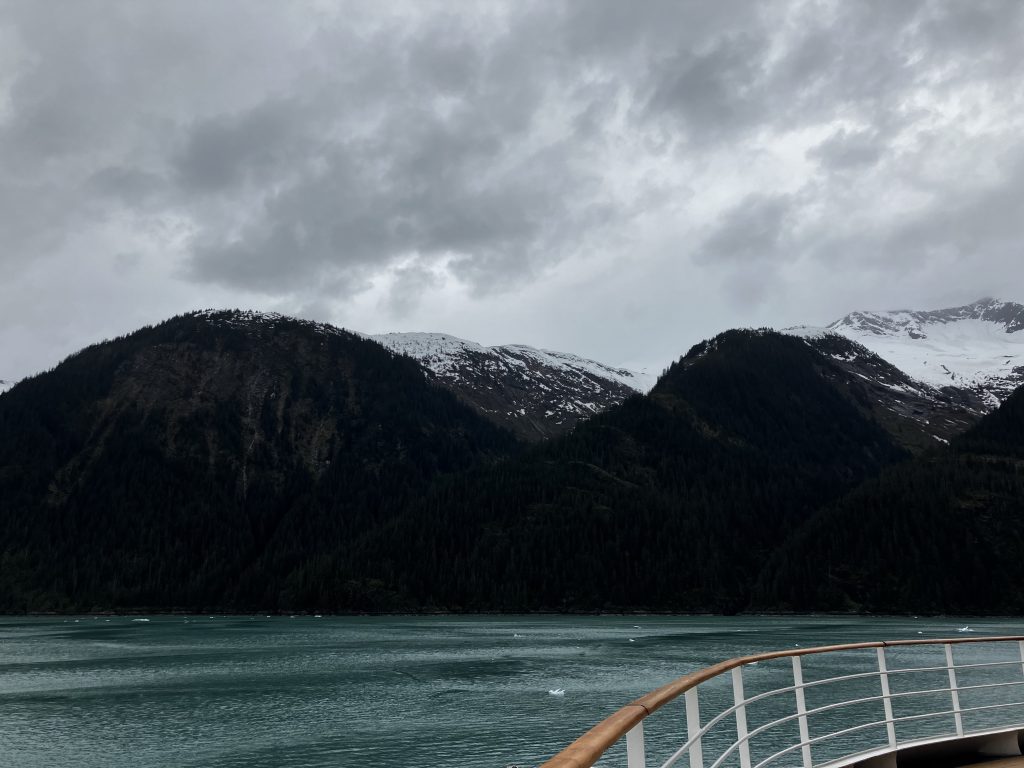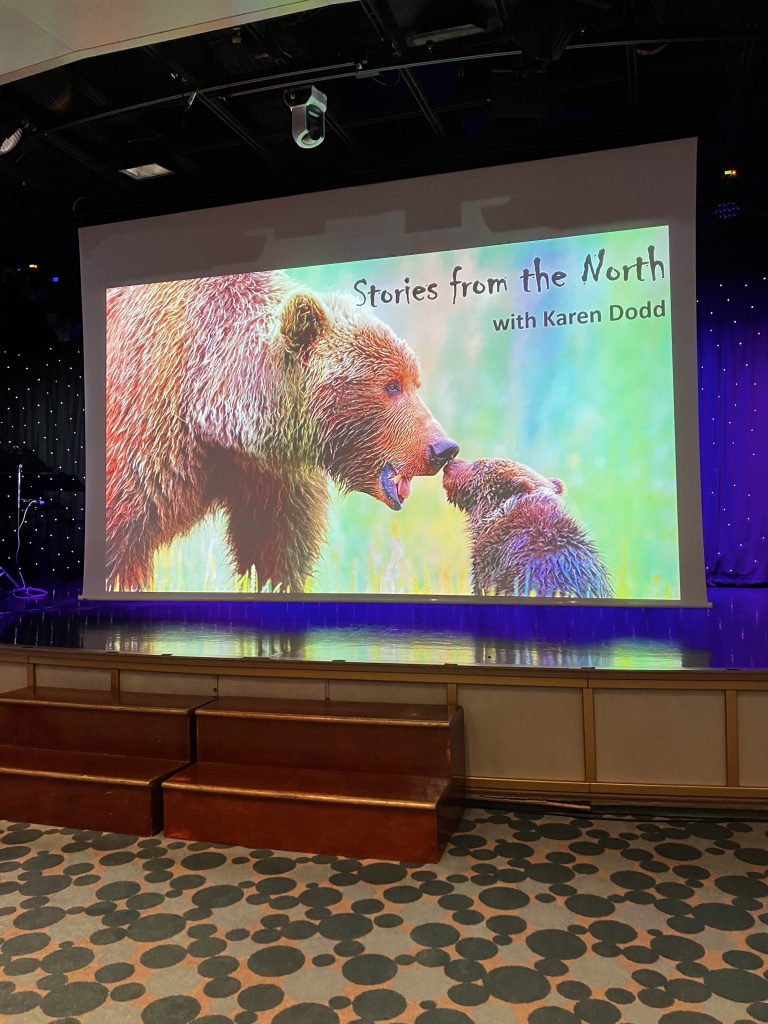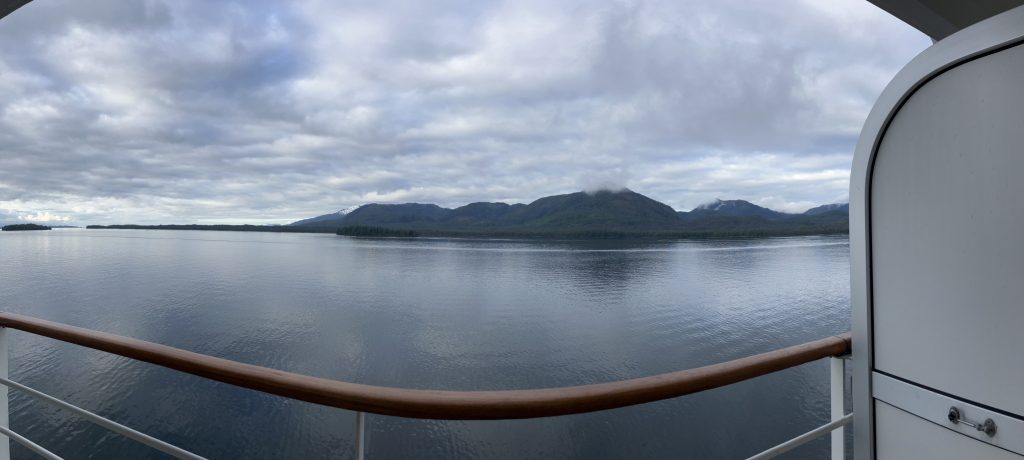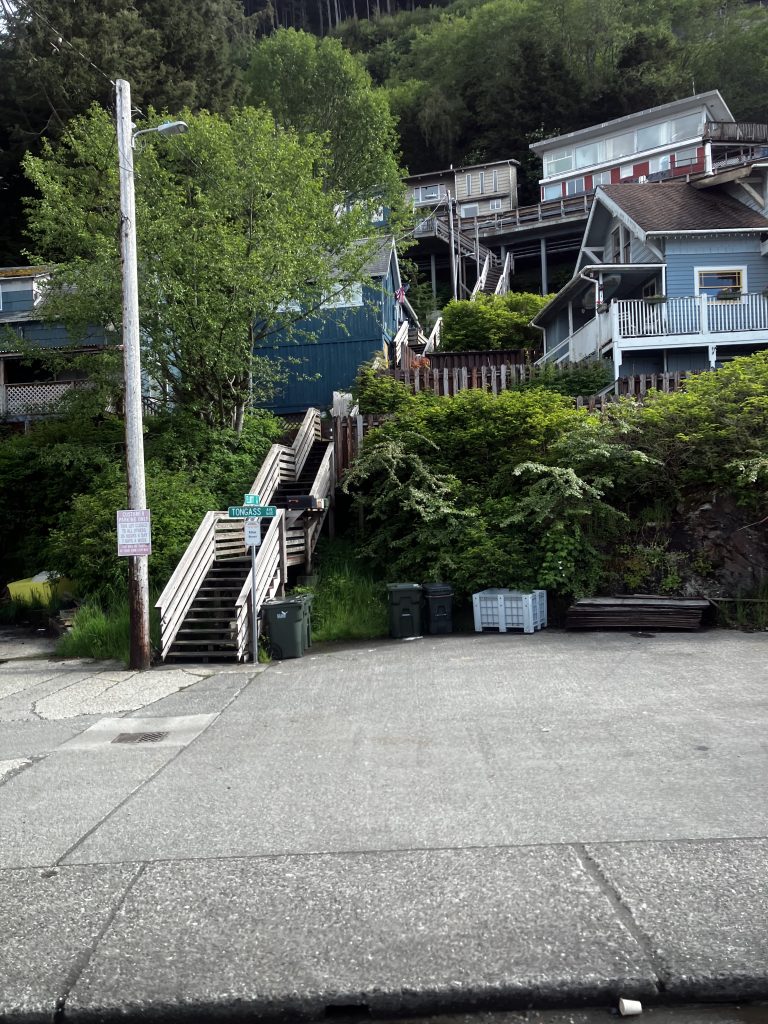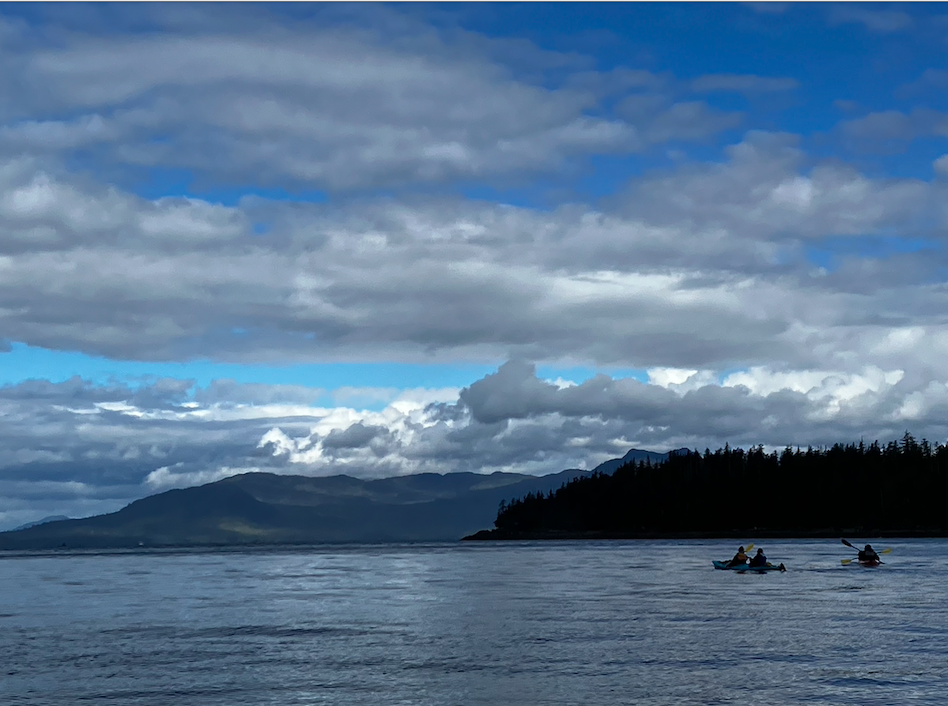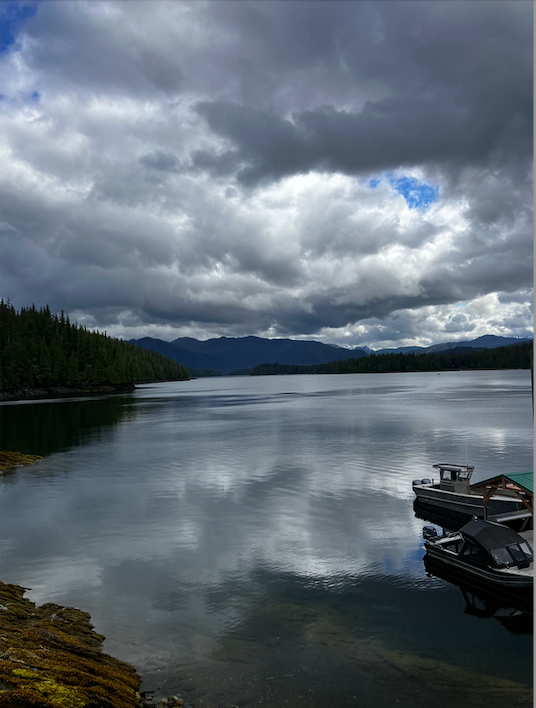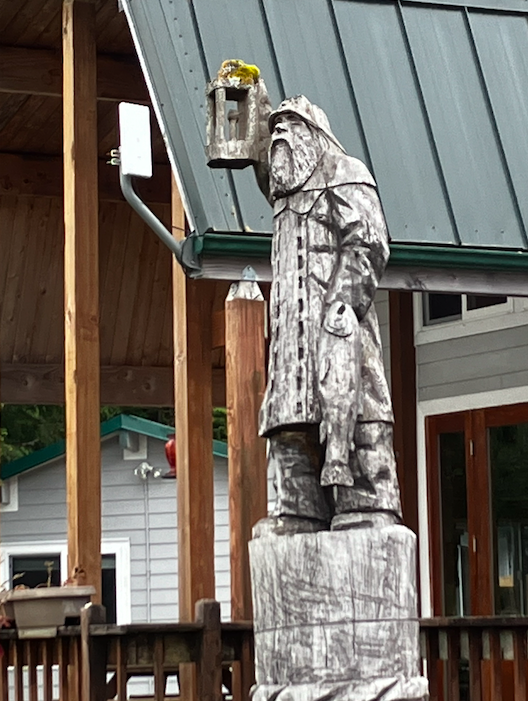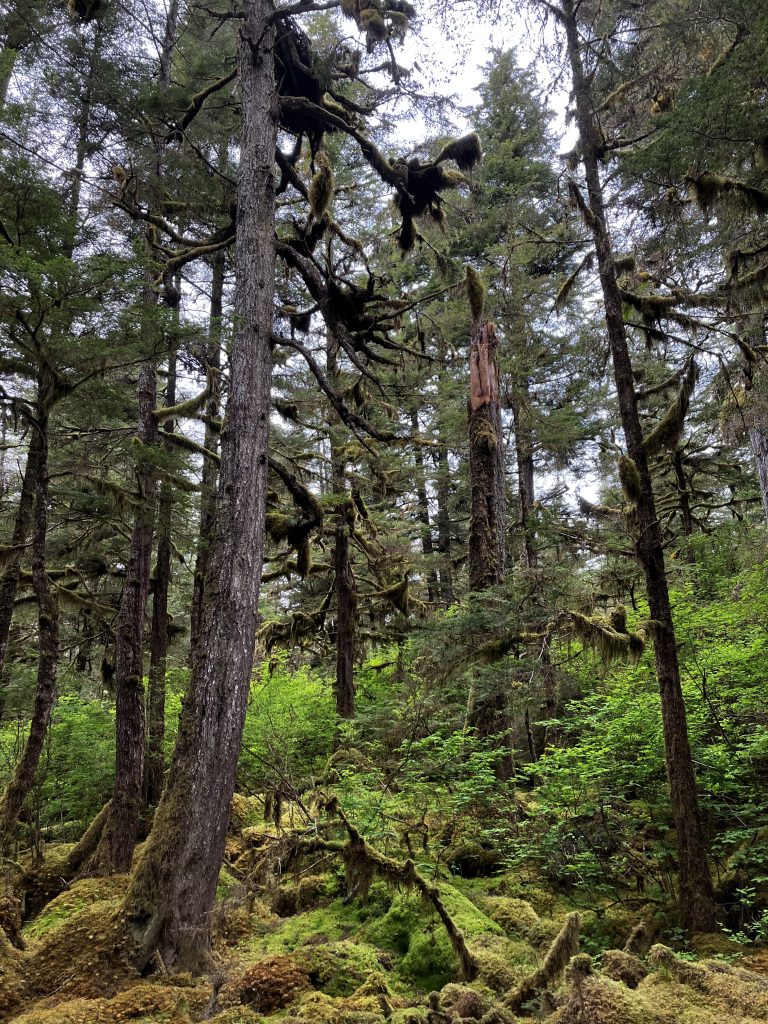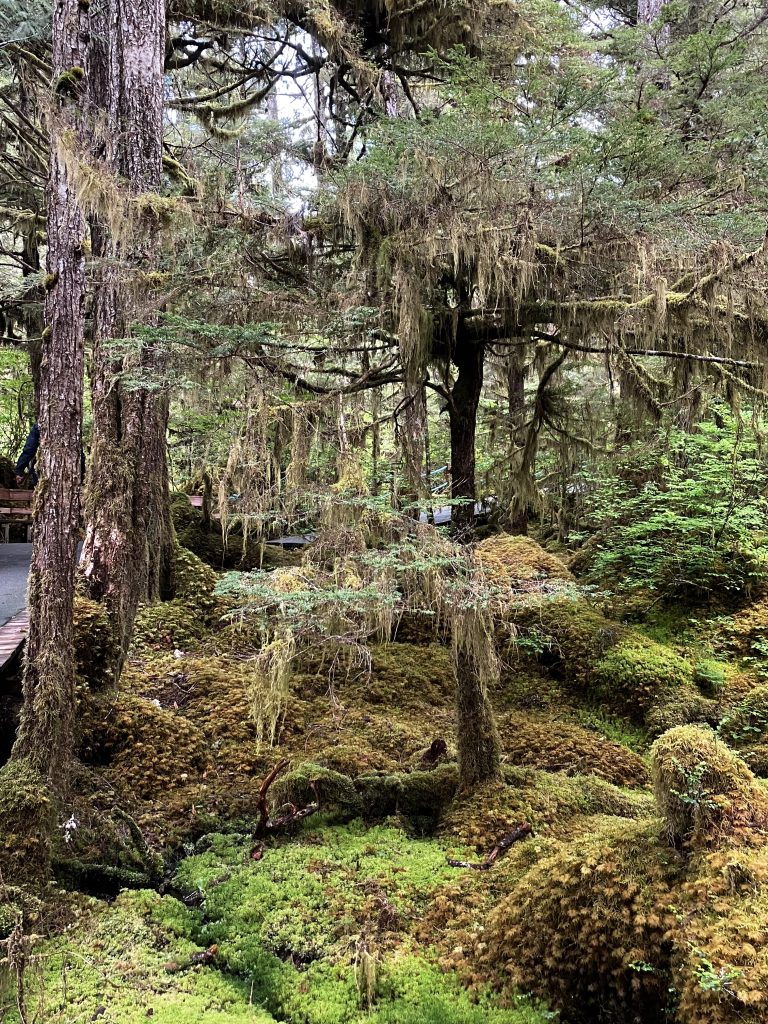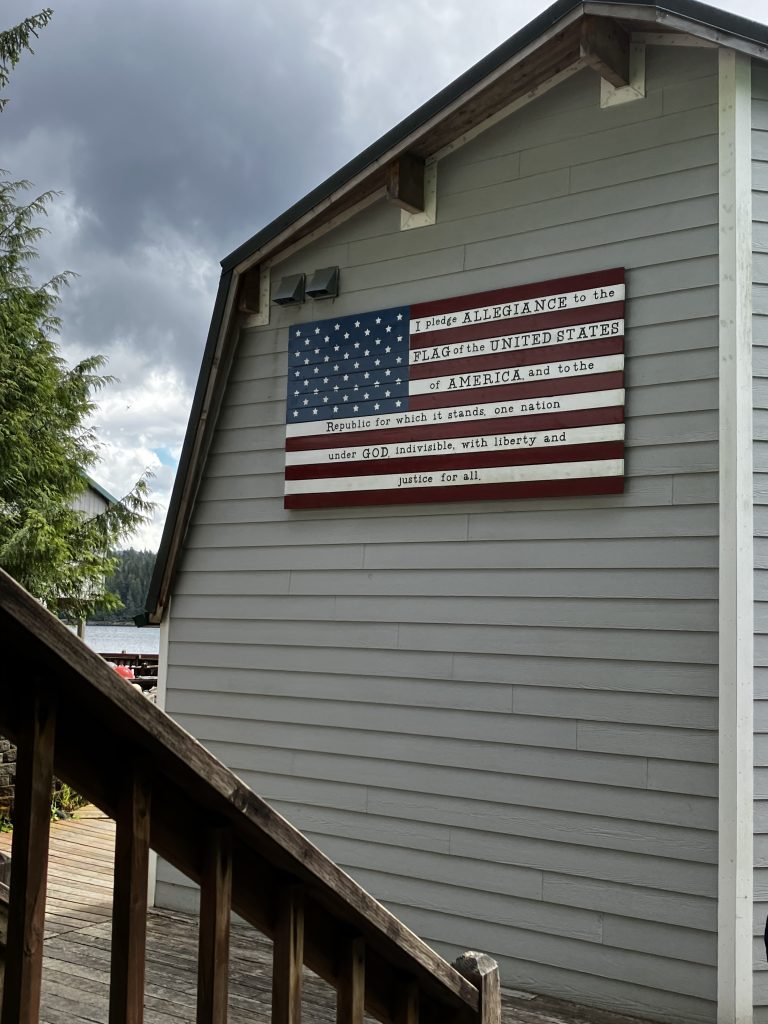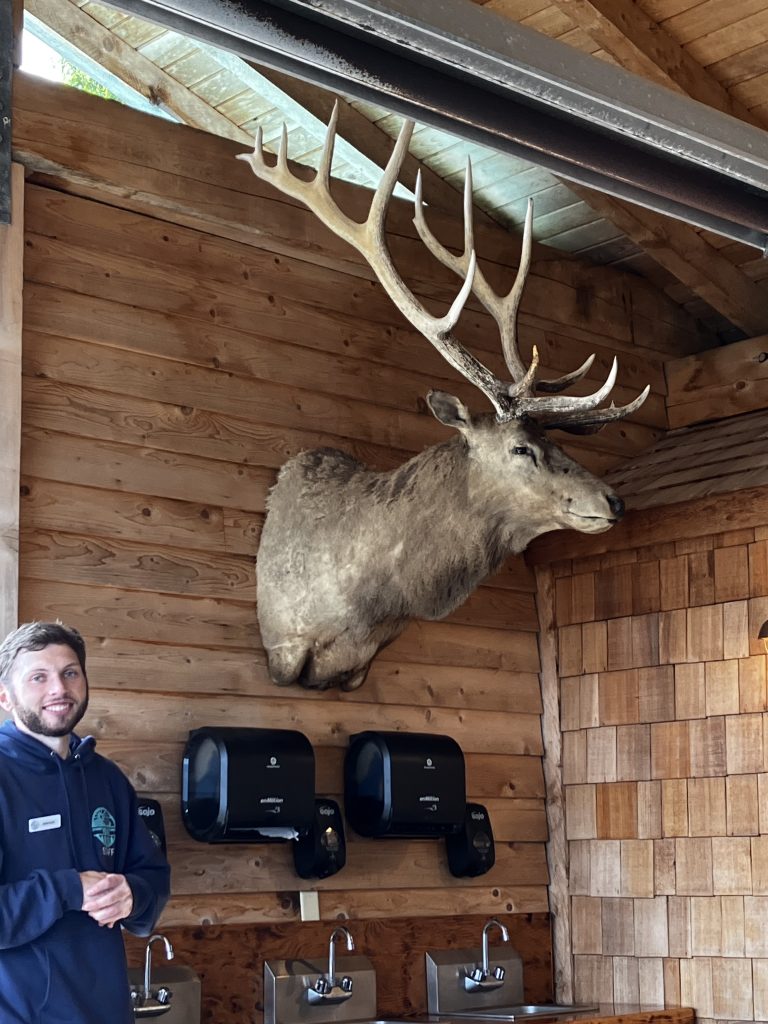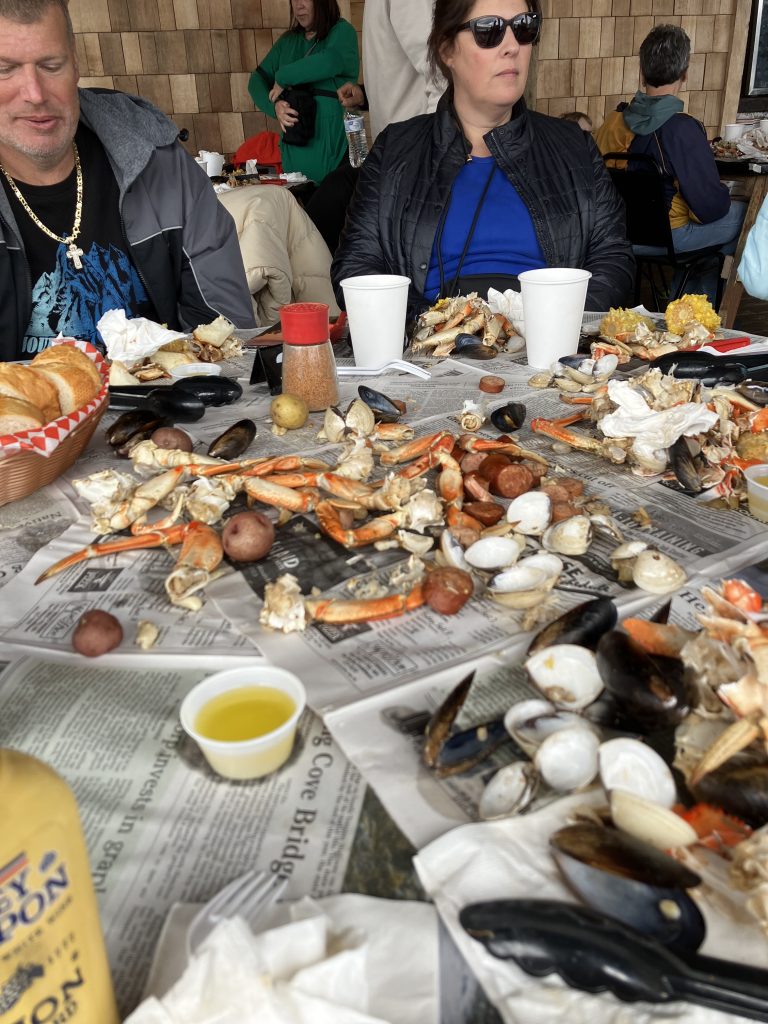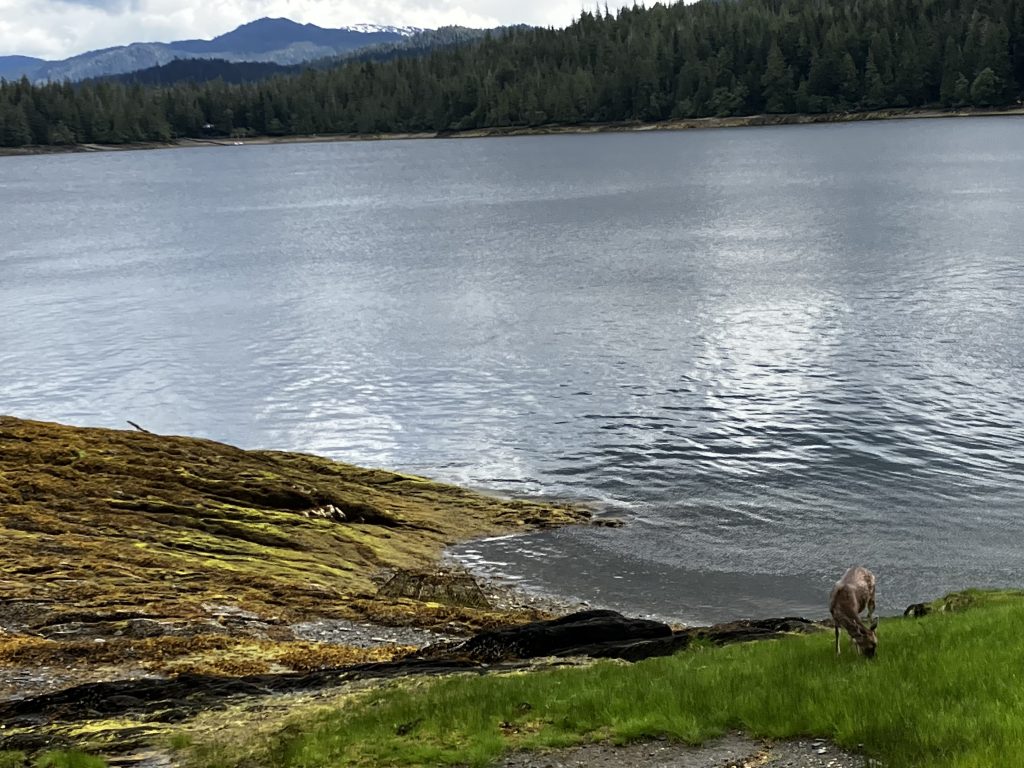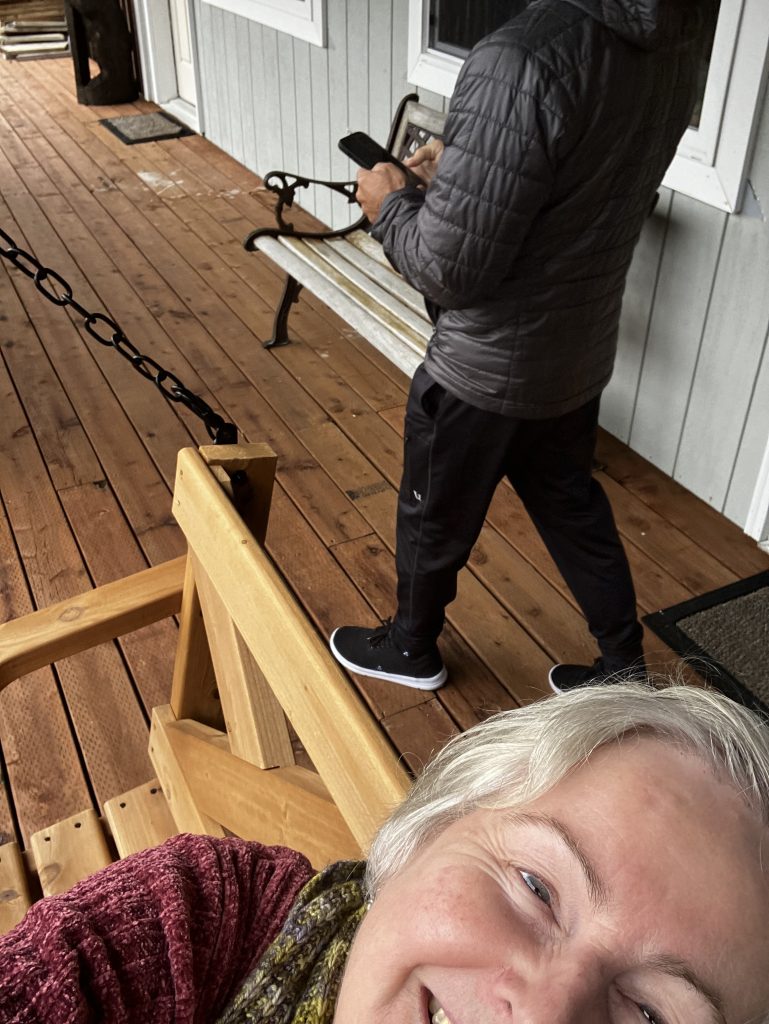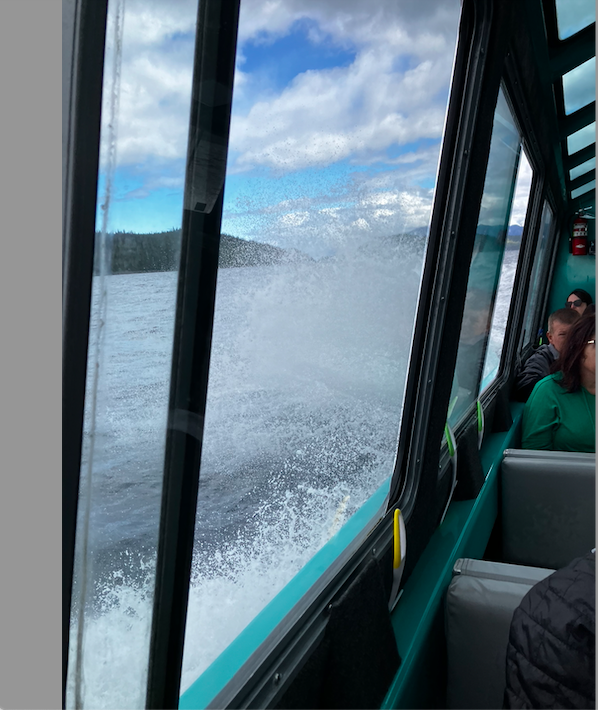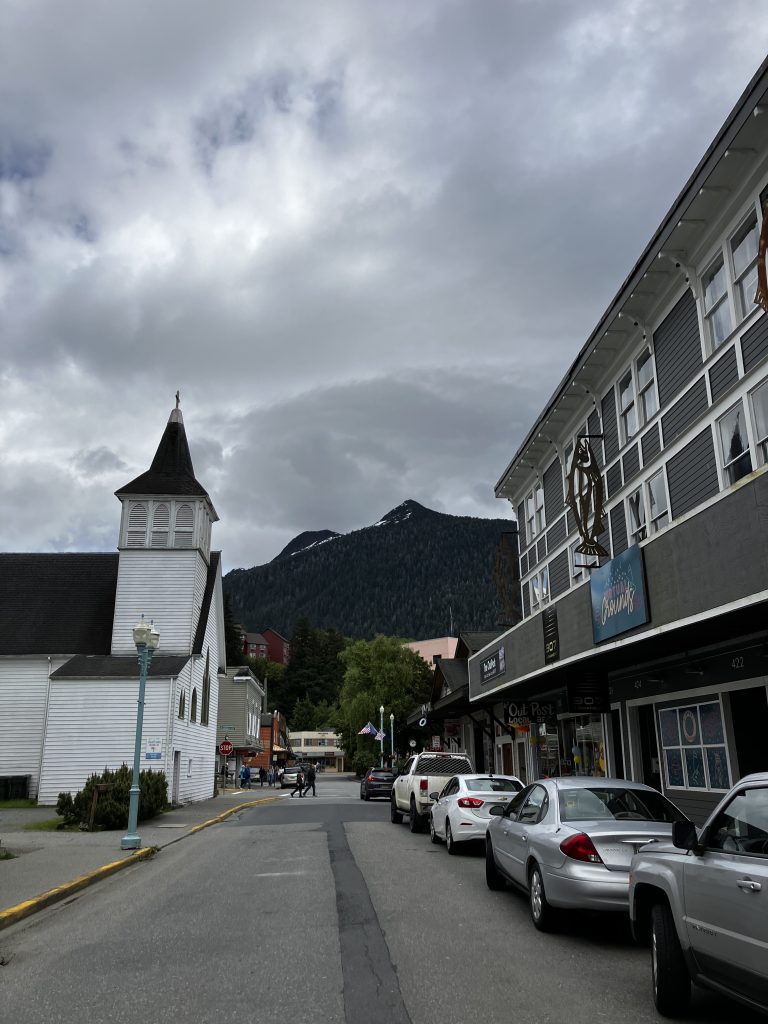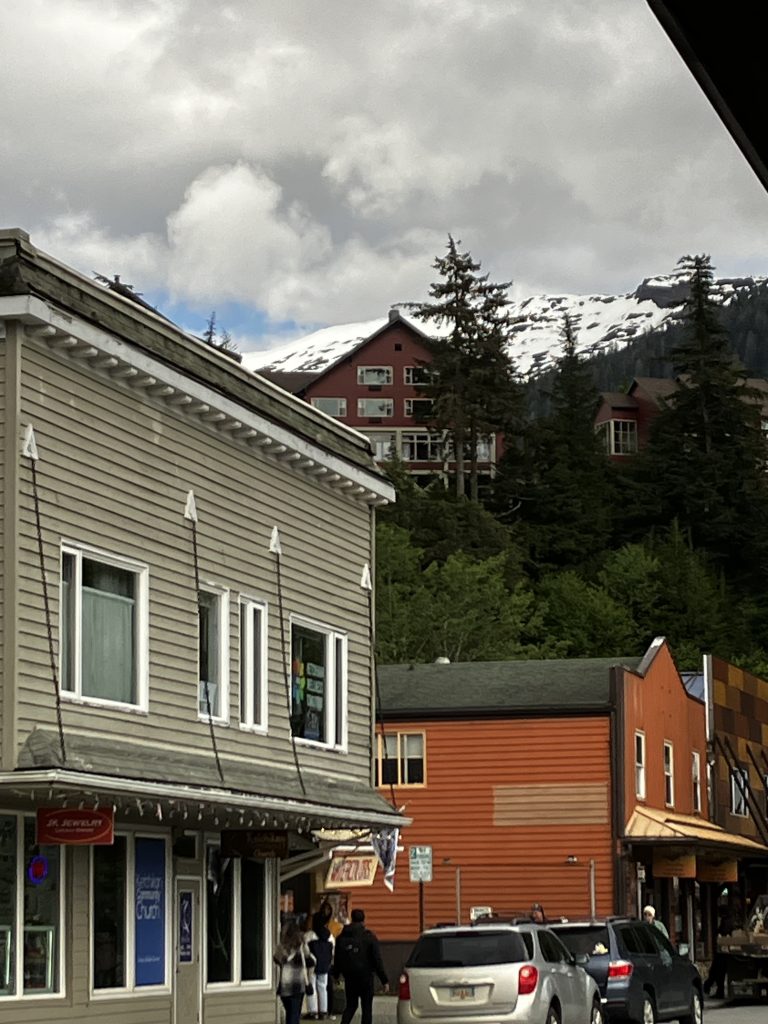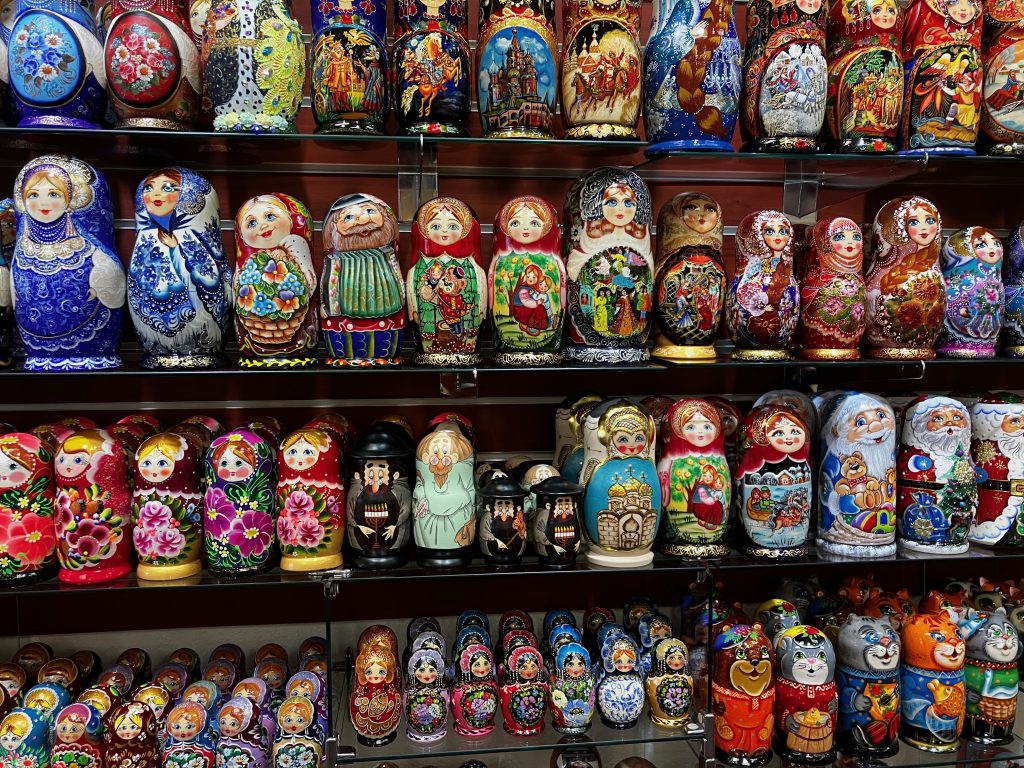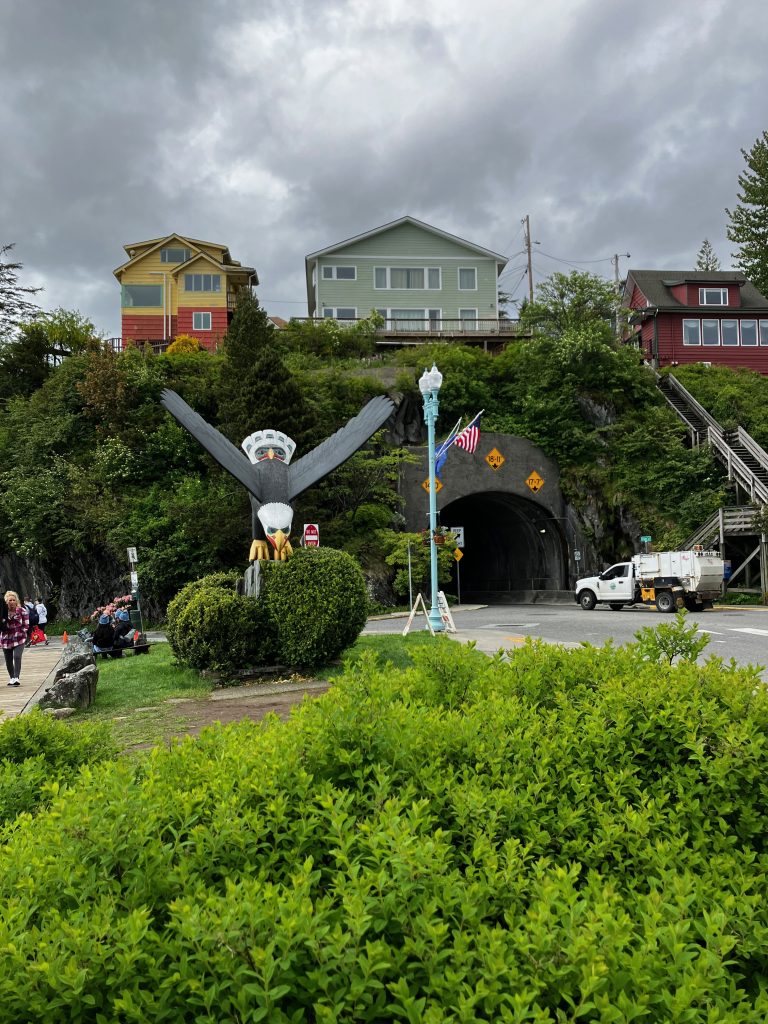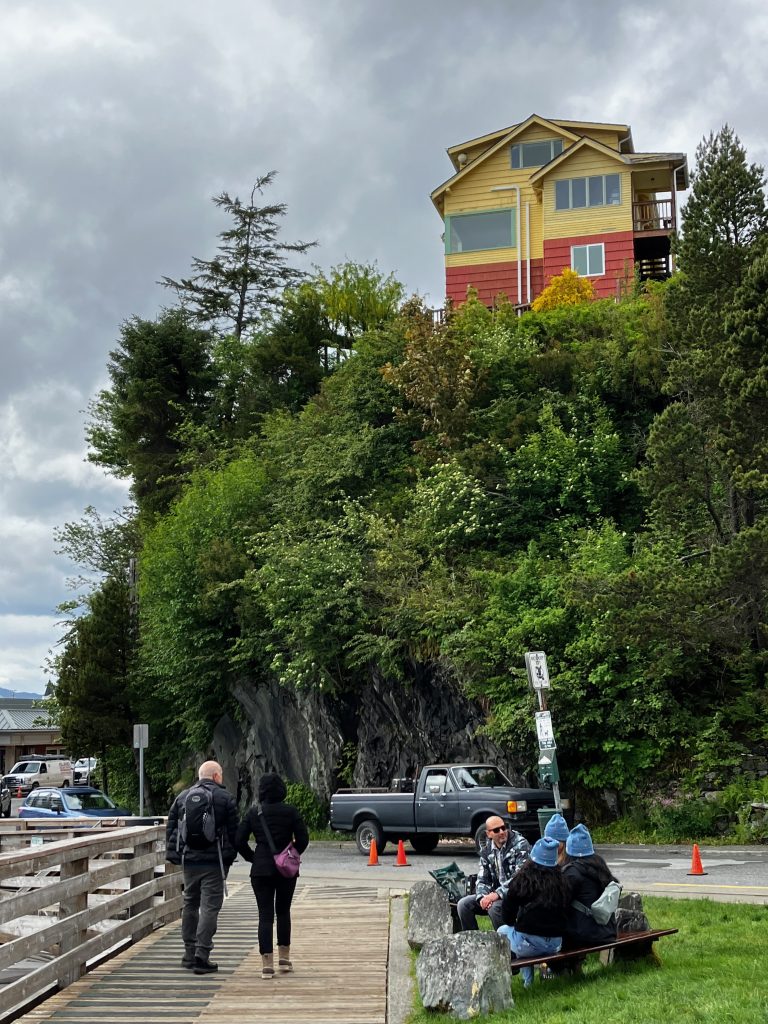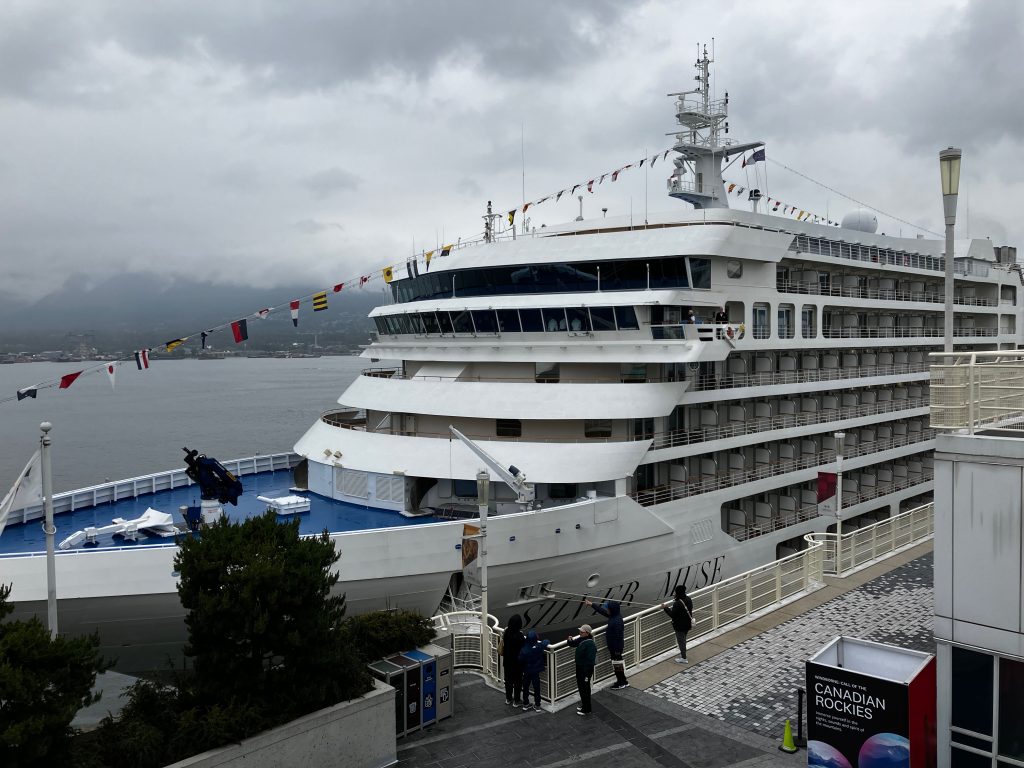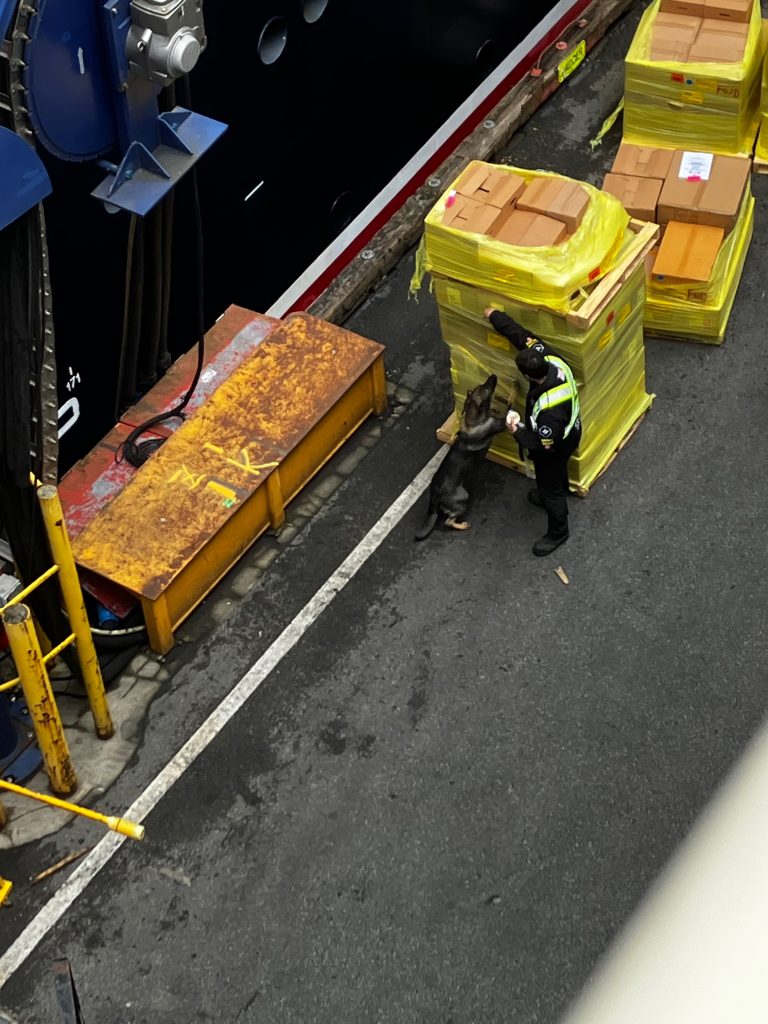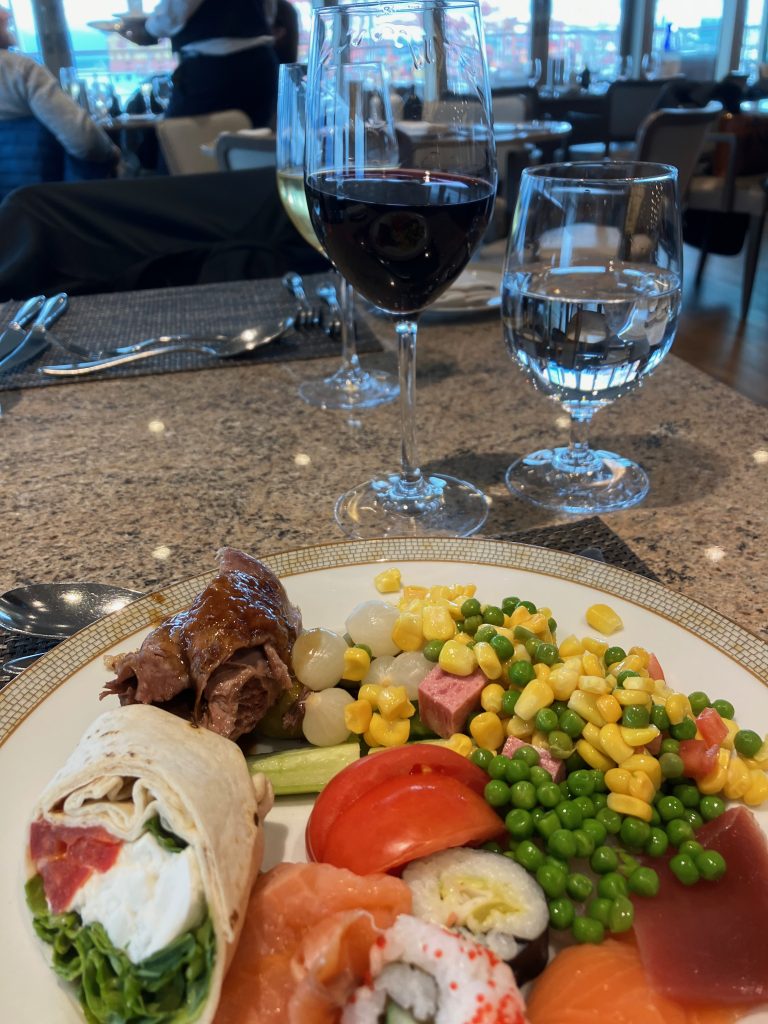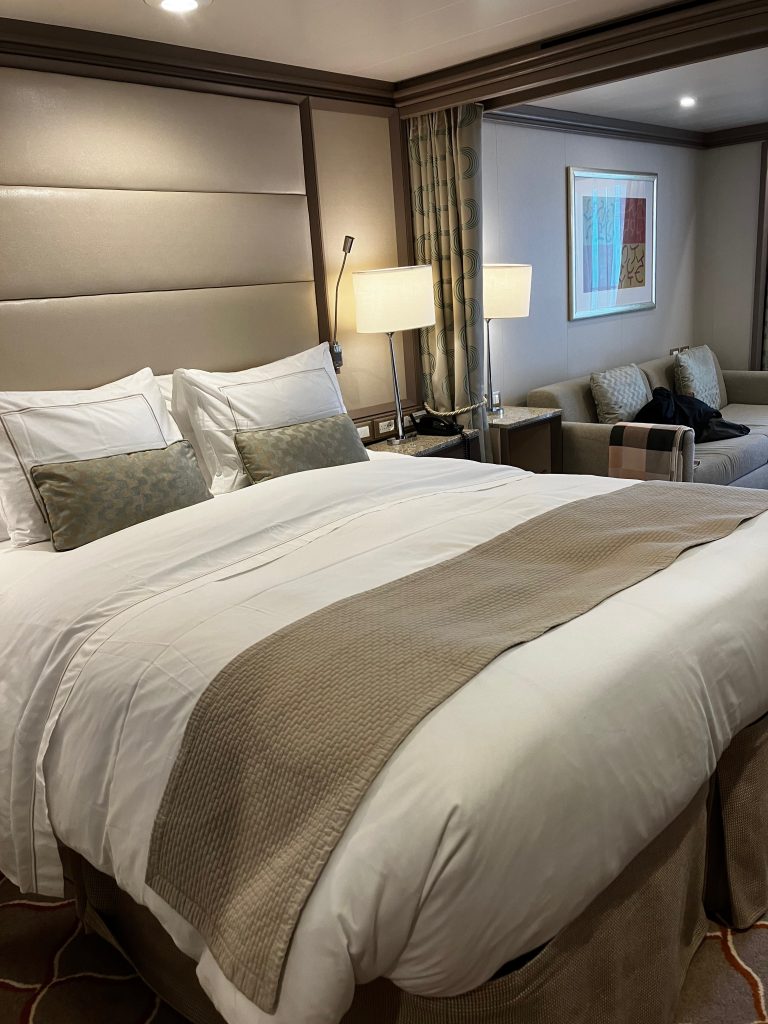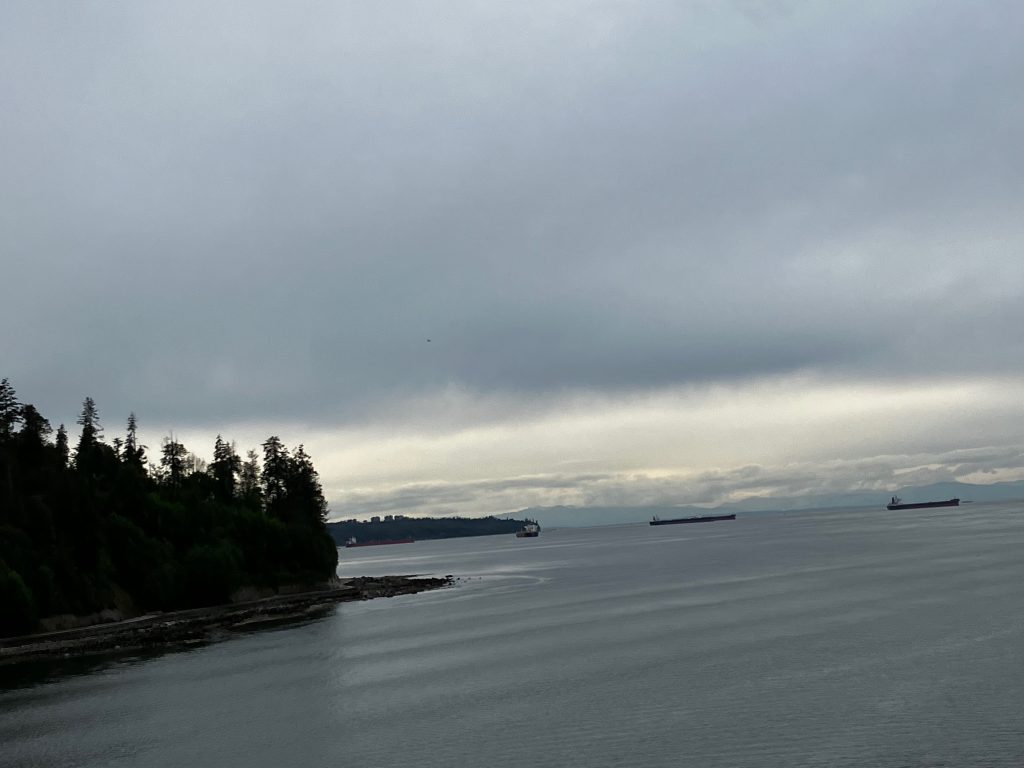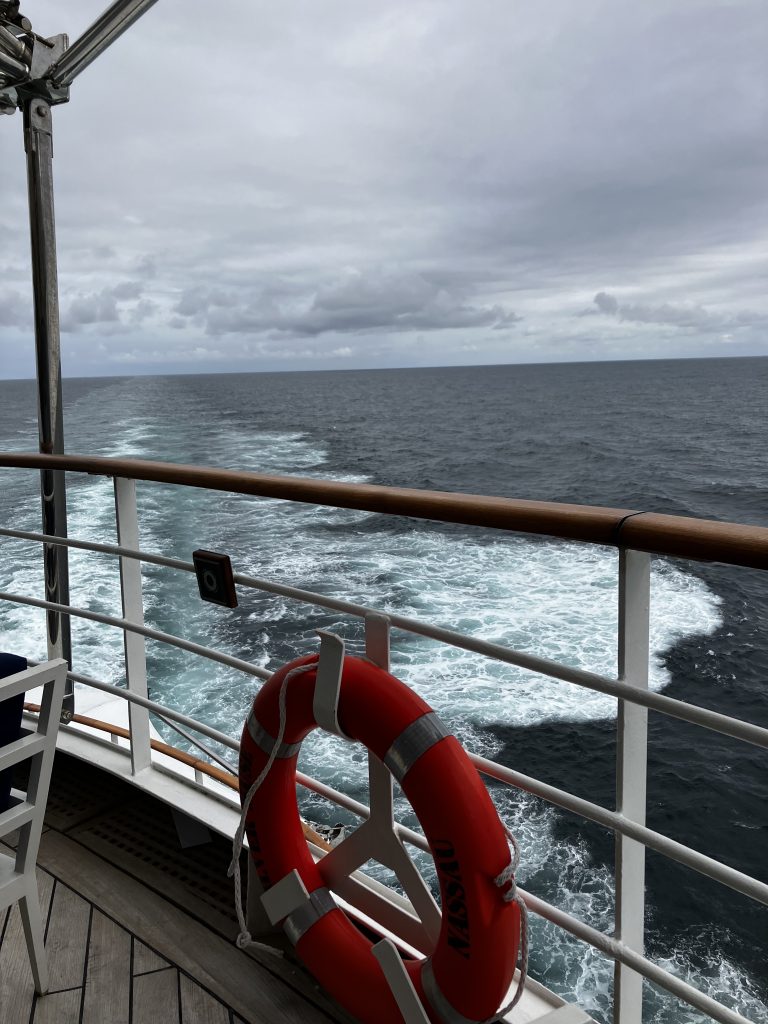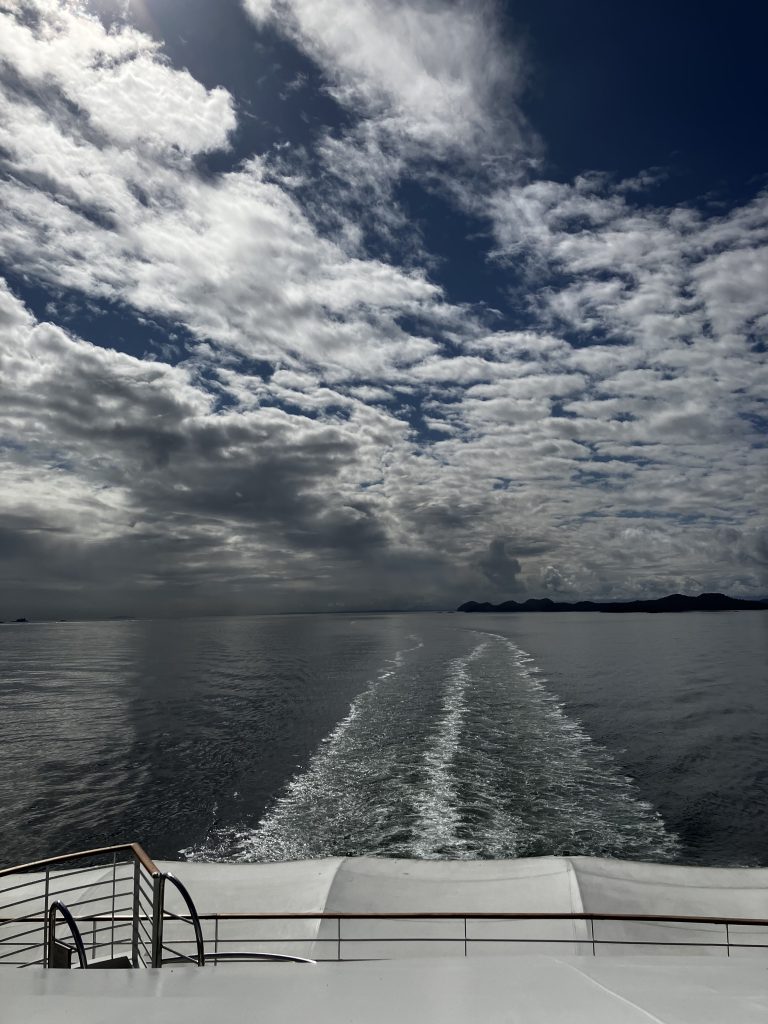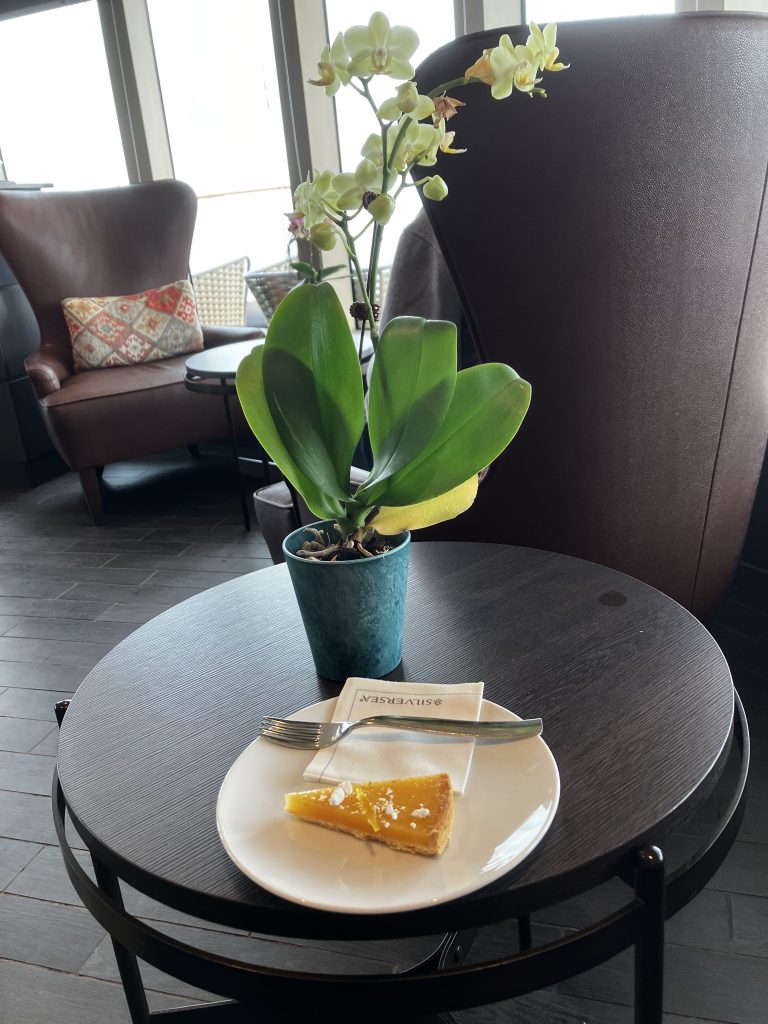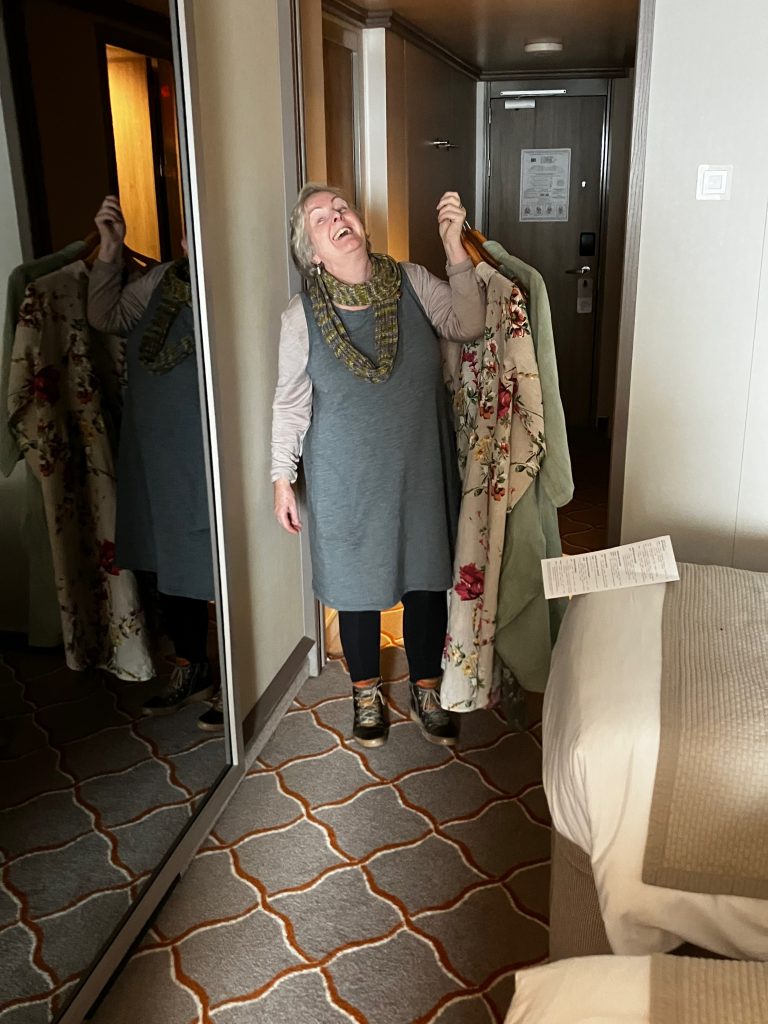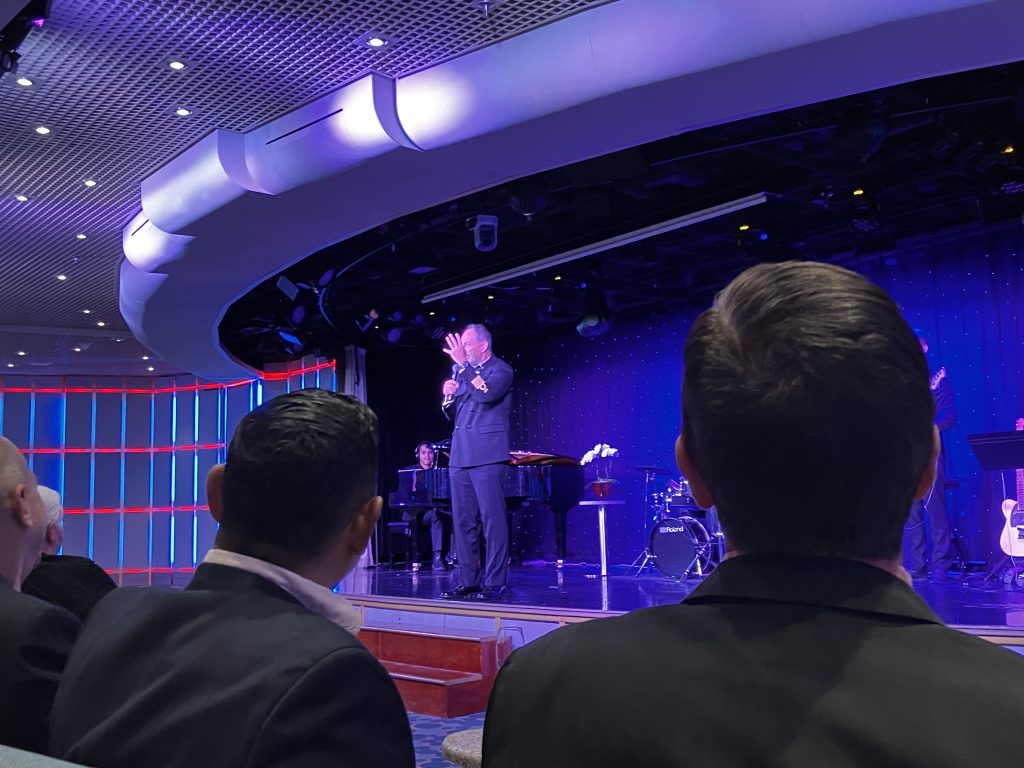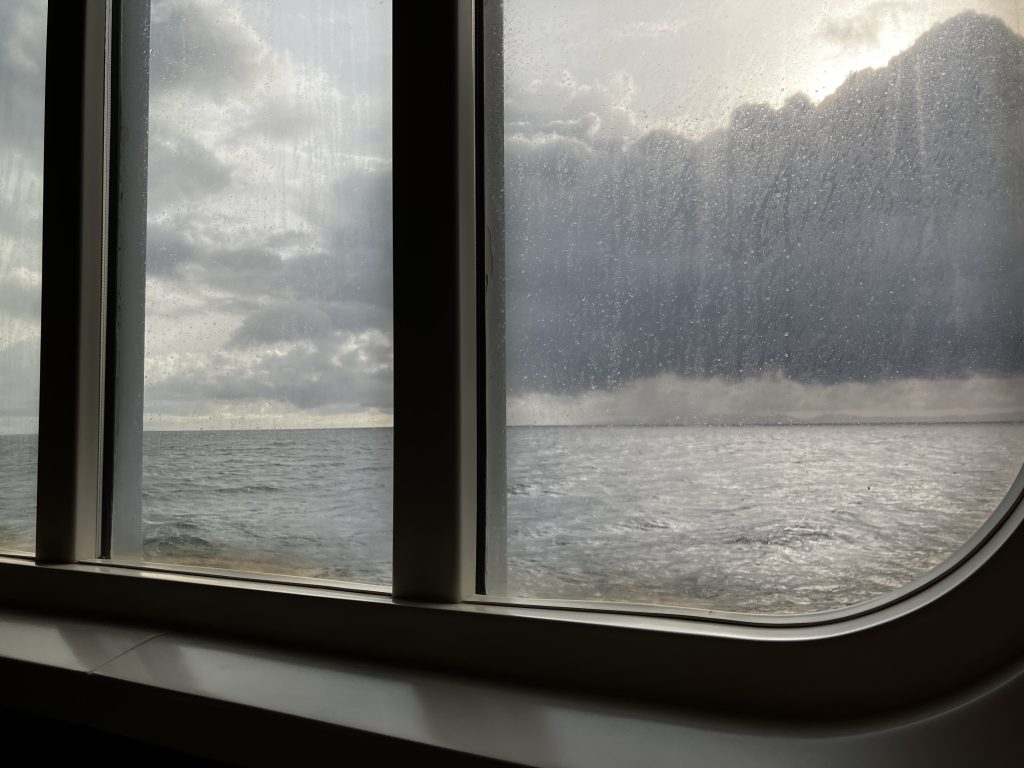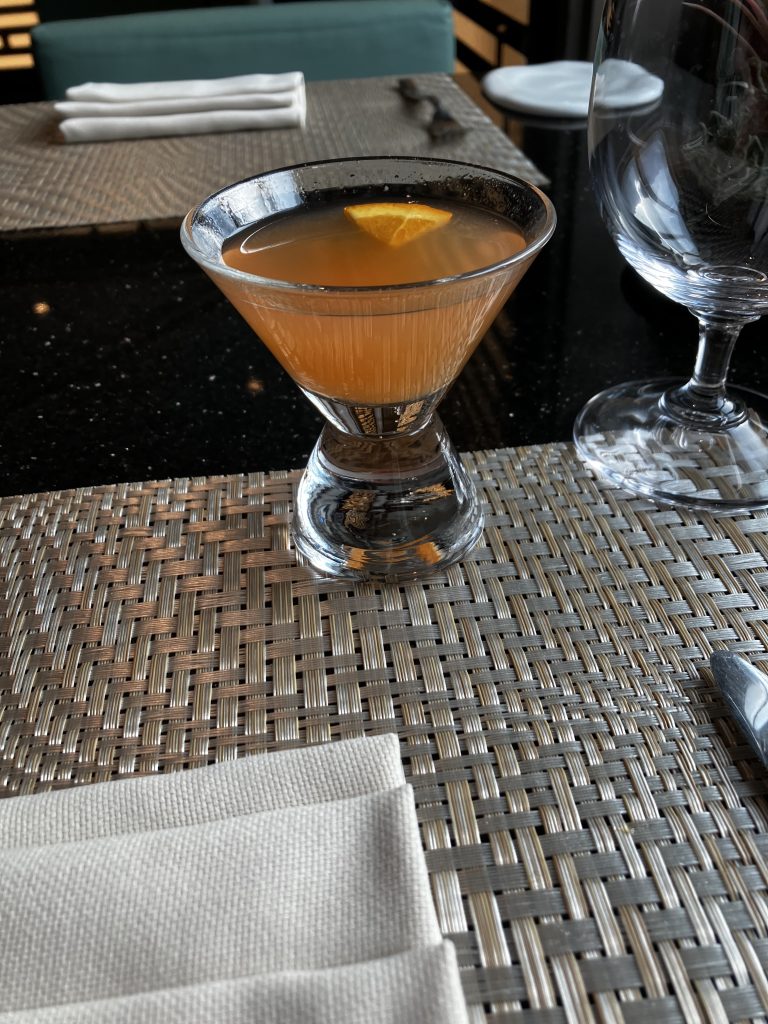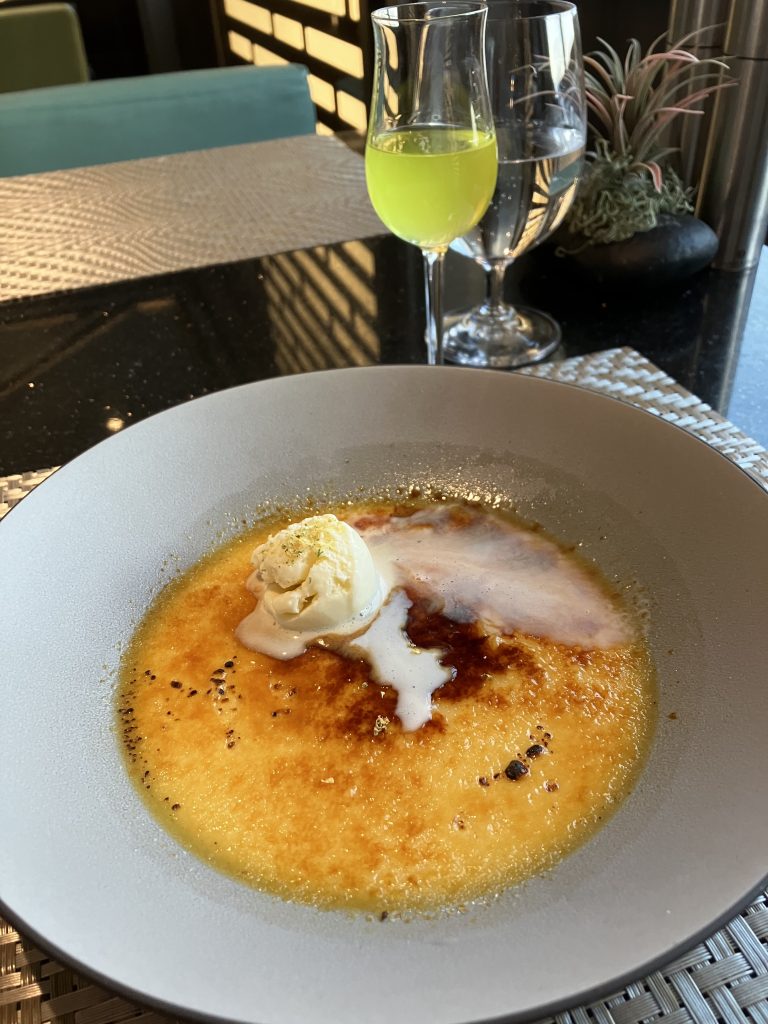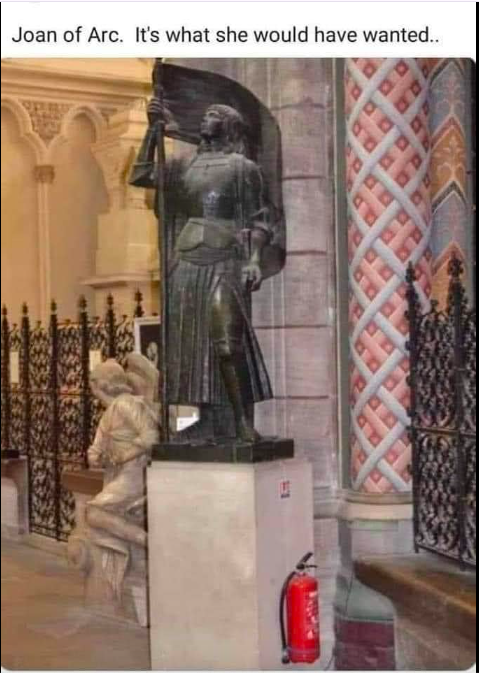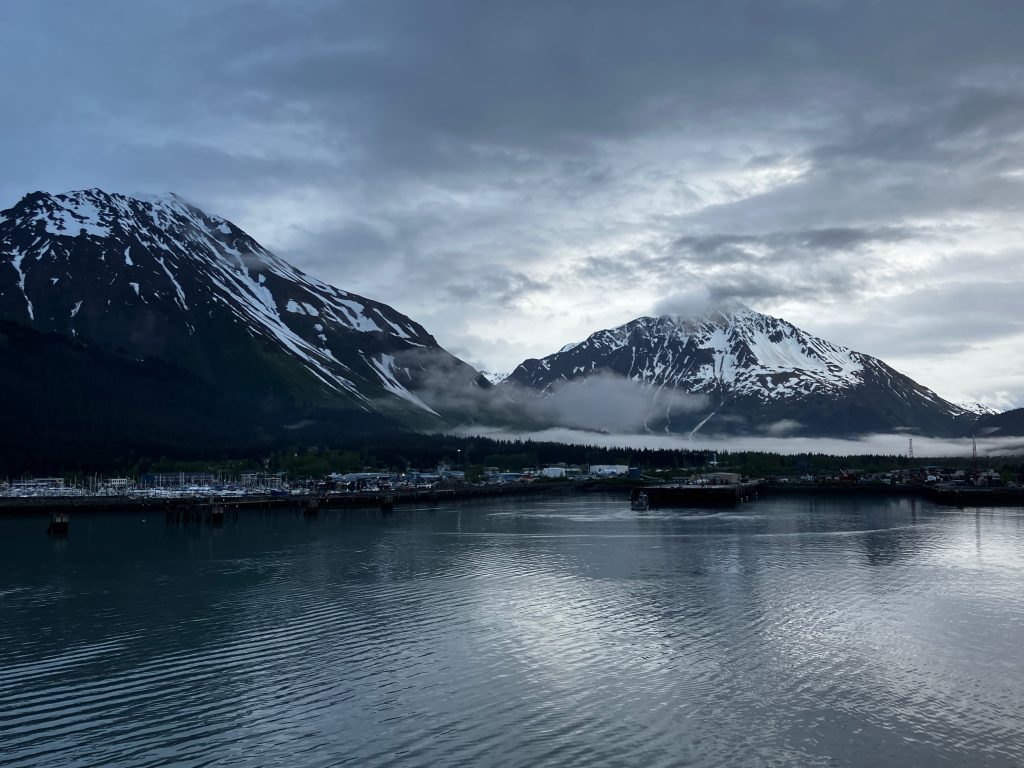
Here is the last view from our balcony. What a beautiful sight to wake up to.
I don’t think that any awakening will top our first morning in Banff though, when Megan pulled back the blinds and said, “It’s SNOWING!” That was a great moment.
We went down to breakfast and while we were there, the first announcements came over the speakers for groups of people to depart. The way we board and leave the ship is to tap our room keys on a reader, so that the ship always has an accurate tally of who’s on board or not.
The cruise director’s voice rang out, “Orange and green groups please assemble at the Venetian Lounge for disembarkation. Please remember to bring your room key for that last emotional tap.”
That made us all giggle.

Finally, it was our turn and we boarded the bus for the 2-hour drive from Seward to Anchorage.

It’s funny how people get used to things. These mountains sweeping down to nothing, with crystal-clear water below are utterly spectacular, yet most people near me on the bus were giving cursory looks as we went along. That is, unless the bus driver announced a photo opportunity. Then everyone’s phones were aimed at the windows.
I was uneasily aware that I was coming down with something. I felt like I should nap, but how could I? This was the last chance I was going to have to see these views.
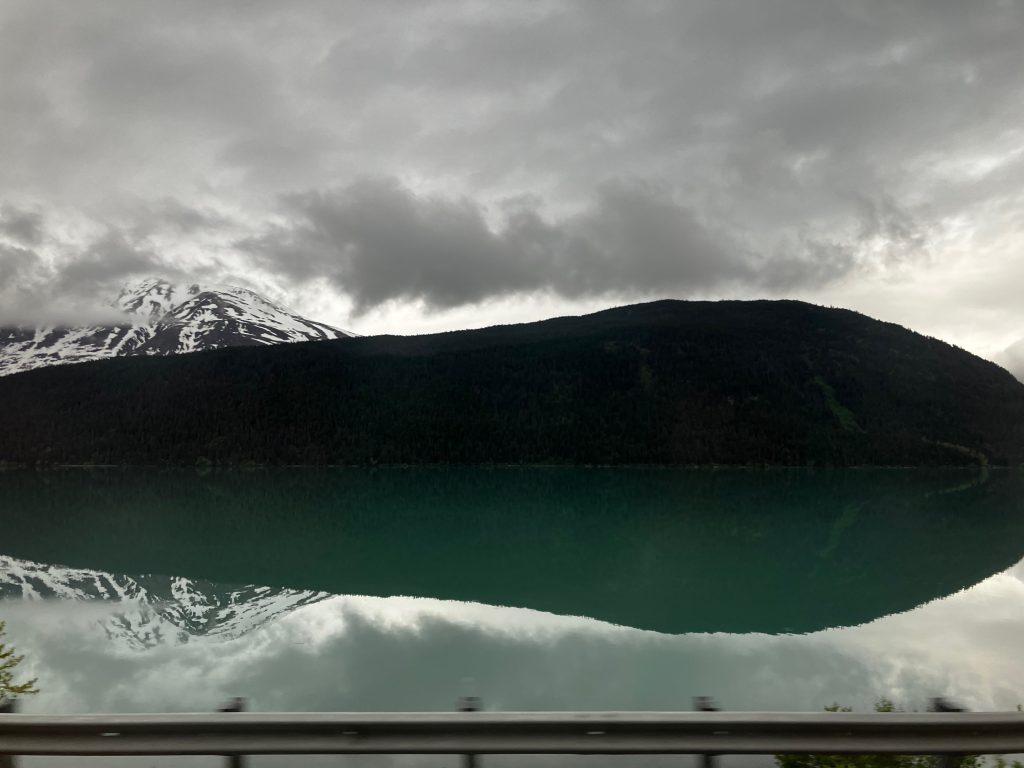
Like – see the reflection in the water? This place is spectacular.

You could paint a picture of this, though maybe without the guardrail!

The sheer acuteness of the angles is something I never tired of seeing. Australia is such an ancient land. Most of our angles have been worn away.
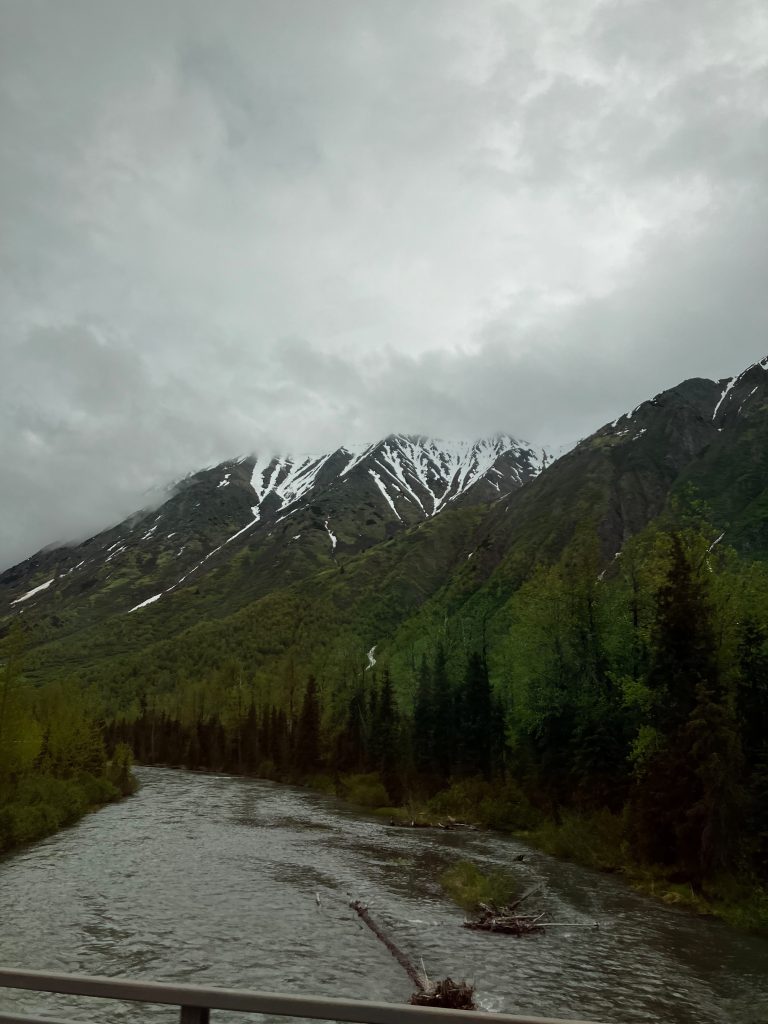
Goodbye, rivers!

We were stopped a few times by roadworks. We heard people say this a few times while we were in Alaska – “There are only two seasons in Alaska – winter and construction!”
It reminded me of when we were wandering around Ushuaia in 2022, waiting to board our ship to Antarctica. Everywhere, people were out patching holes, fixing potholes and working on their houses. They have to make the most of the good weather.

Goodbye, steep mountains!
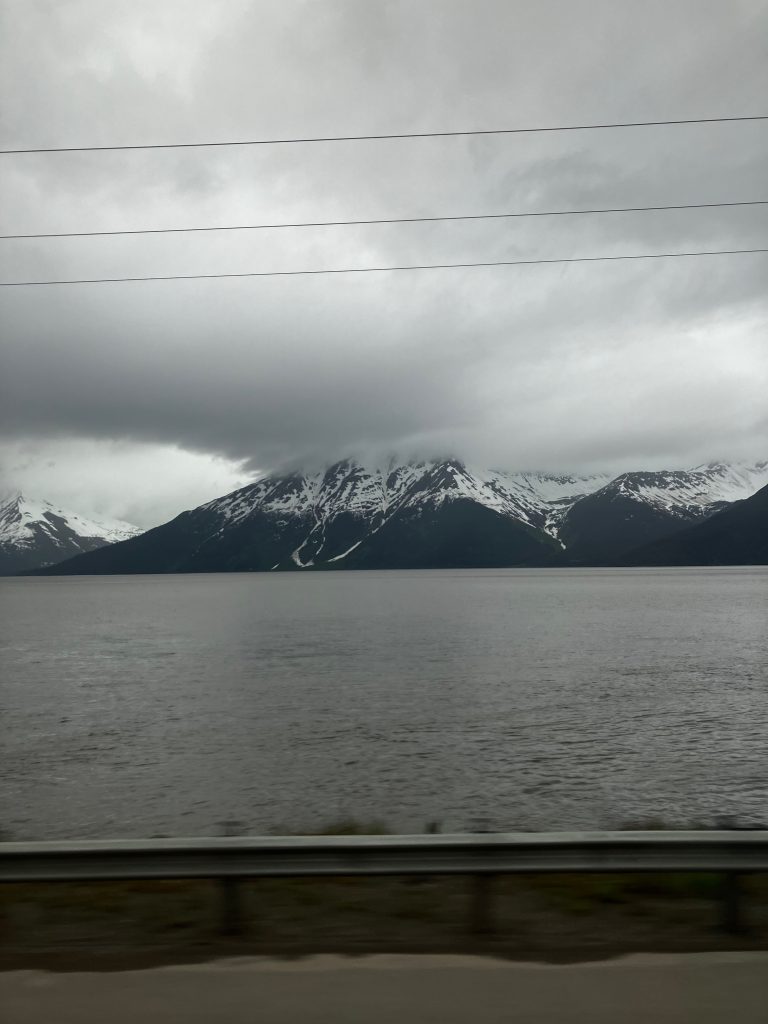
Captain Cook actually sailed up this inlet. He thought it was a passage to somewhere or other but it wasn’t.
I found the story interesting but I was also starting to feel not great. I wasn’t taking notes.
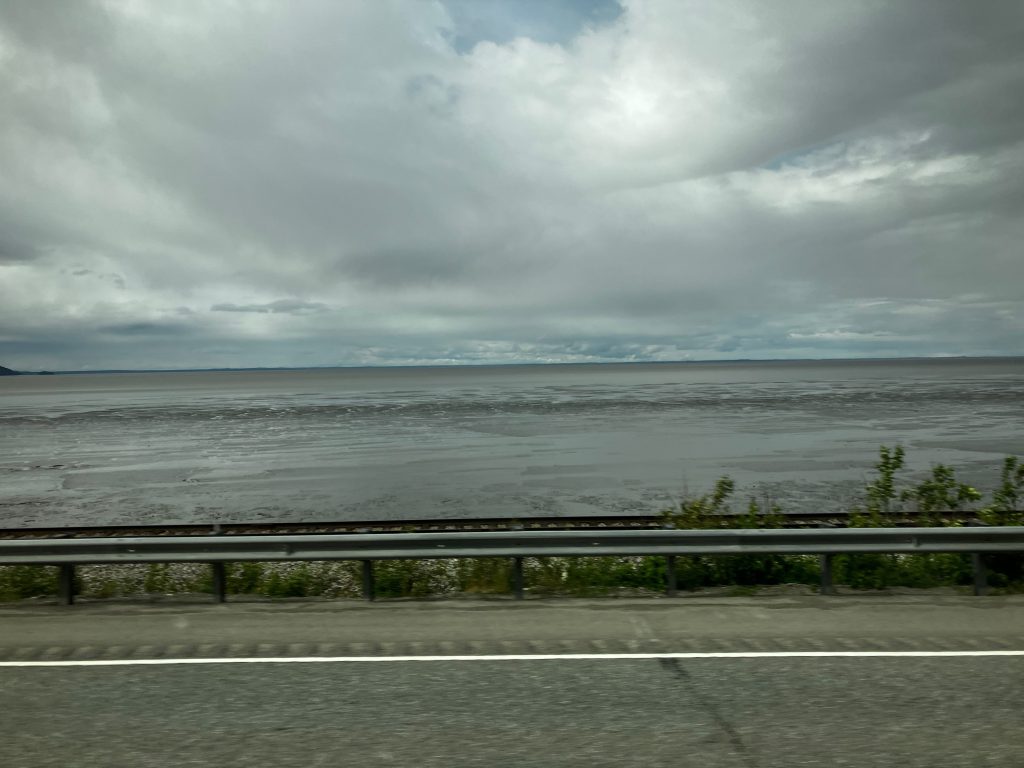
Mudflats. They’re like quicksand.
Apparently, Anchorage is surrounded by them.
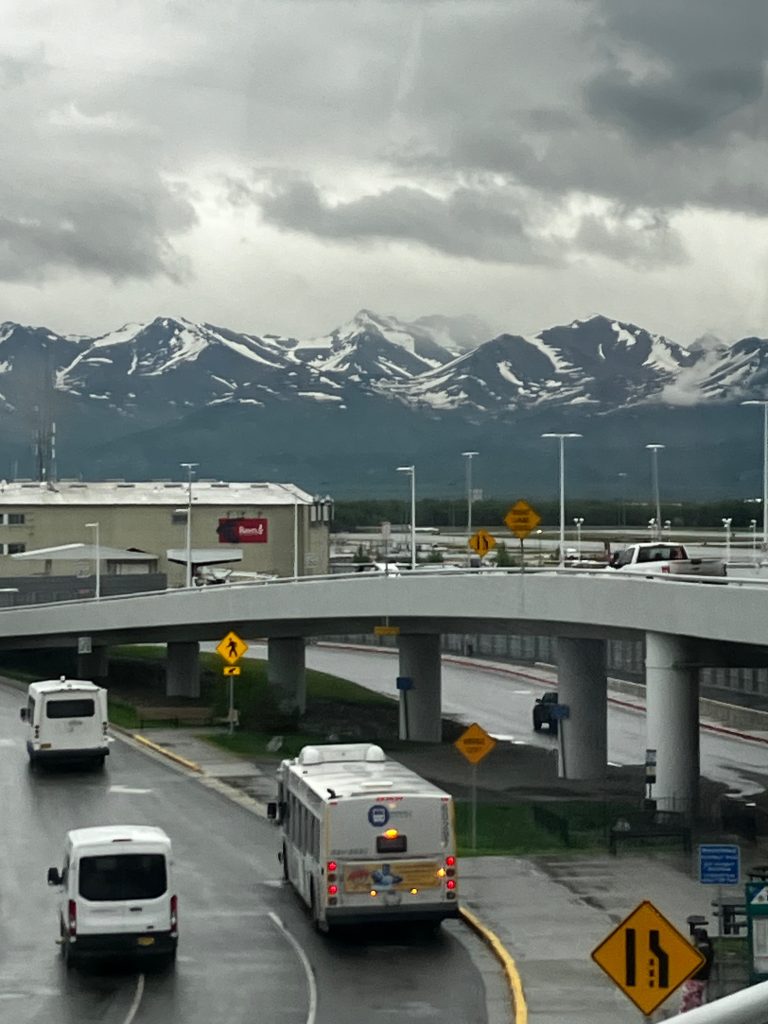
And here we are.
The population of Anchorage is 303,000.
Alaska overall has 750,00 people. This is a very empty state. It’s 1 million square kilometres smaller than Western Australia, but we have more people in WA compared to Alaska.
Imagine Australia having more people than somewhere else!
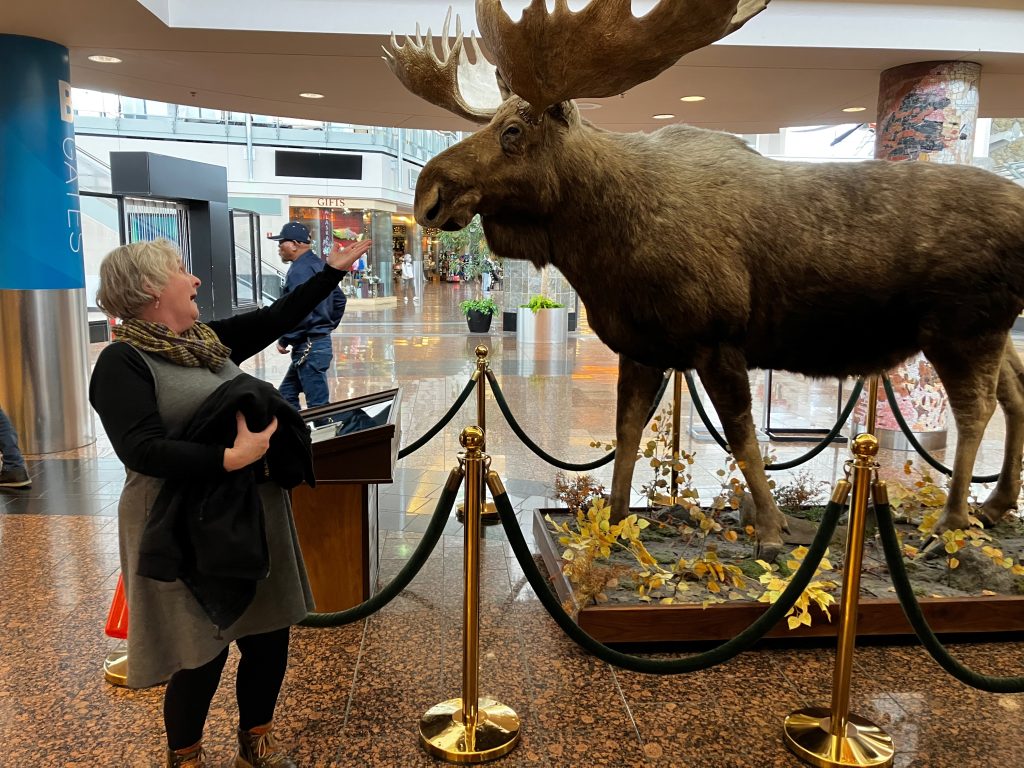
I have a moose antler in my luggage, so I had to pose.
Naturally, I had Michelle Shocked’s song, “Anchored Down in Anchorage” playing in my head. I challenge anyone who knows the song to go there and not have the same thing happen to them.
These lyrics are a beautiful piece of poetry. I can’t post a link to the song because Michelle Shocked doesn’t have her music on Youtube or Spotify because she doesn’t like the way the artists are paid. She appears to have gone a bit fundy, which is a shame, but these lyrics perfectly capture this woman’s yearnings and isolation.
I took time out to write to my old friend
I walked across that burning bridge
Mailed my letter off to Dallas
But her reply came from Anchorage, Alaska
She said
“Hey girl, it’s about time you wrote
It’s been over two years you know, my old friend
Take me back to the days of the foreign telegrams
And the all-night rock and rollin’… hey Shell
We was wild then
Hey Shell, you know it’s kind of funny
Texas always seemed so big
But you know you’re in the largest state in the union
When you’re anchored down in Anchorage
Hey Girl, I think the last time I saw you
Was on me and Leroy’s wedding day
What was the name of that love song they played?
I forgot how it goes
I don’t recall how it goes
Anchorage
Anchored down in Anchorage
Leroy got a better job so we moved
Kevin lost a tooth now he’s started school
I got a brand new eight month old baby girl
I sound like a housewife
Hey Shell, I think I’m a housewife
Hey Girl, what’s it like to be in New York?
New York City – imagine that!
Tell me, what’s it like to be a skateboard punk rocker?
Leroy says “Send a picture”
Leroy says “Hello”
Leroy says “Oh, keep on rocking, girl”
“yeah, keep on rocking”
Hey Shell, you know it’s kind of funny
Texas always seemed so big
But you know you’re in the largest state in the union
When you’re anchored down in Anchorage
Oh, Anchorage
Anchored down in Anchorage
Oh, Anchorage…
We were actually lucky to be departing today. Yesterday, without explanation, the whole airport and airspace got shut down by the military. (Megan overheard that explanation given to a pilot.) People were left hanging, having to find accommodation for the night.
Megan said that it wouldn’t have been a big deal – we’d find a room then go out and explore Anchorage. She’s right, but once I have my nose turned towards home, I want to get there ASAP. Plus, I was retreating within myself. I was getting sick.
After the worst trip home on a plane I’ve ever had, I returned to these little woofs.

Poor Georgia! After looking after them and dealing with poor Poppy’s death, I’m sure she was expecting me to come in and take over the reins. Instead, I staggered in, took a 4-hour nap, then stayed pretty much on the couch and slept for the next week.
We had the opportunity to adopt a 5-year-old dachshund from the shelter Blogless Sandy worked in. We tried, but after 4 days we had to take him back after he wasn’t listening to the older dogs in our pack. That was sad.
I’m still missing my Poppy, though I can say hello to the group of irises that are planted atop. The other two are growing closer. Scout even lets Jeff sleep beside her now. A few days after I got back, I turned to Georgia and said, “We haven’t talked about Poppy yet.” We both had a good cry and felt so much better.
So it’s been a week since I came home. I’m just about feeling human again and that’s a relief!
Would I recommend going to Canada and Alaska?
Absolutely! They’re easy places to travel to, given all the similarities between us and them. The wildlife and scenery are spectacular. The feelings of awe and absolute delight when I saw them are things I will never forget.
What about the luxury ship?
It was expensive, but EVERYTHING was included. After having to self-cater for the two-week Canada trip, it was a relief to relax and just eat and drink whatever I wanted. The dining was exquisite, and even though I’m not a ‘foodie’ I still thoroughly enjoyed the tastes and, frankly, the feeling of being pampered. That hasn’t happened much in my life up till now.
I was also glad we weren’t on one of those ENORMOUS ships with 5,000 passengers. For me, that’s far too big. Our ship had around 500 passengers, which seems large enough for me. In September next year, I’ll be back on the Hondius on my way to Greenland. She only carries around 120 passengers.
On the way home, on the train, Megan and I agreed that we’d travel together again. Honestly, if our worst fight was about what a pavilion/rotunda/gazebo is called, that’s pretty damned good. We respected each other’s space and little habits – at least I did. I’m sure Megan found no problems at all with me. I have no irritating little ways.
Haha! I know she’ll read this and her eyebrow will rise almost to the top of her head.
I think the best thing we did was to sometimes spend our days apart doing different things. We each had our little adventures and had some space. I’d definitely recommend doing this if you and a friend are thinking about travelling together.
All in all – it was a very successful holiday and it was my 7TH CONTINENT. It feels unreasonably satisfying to tick this off the list. Now, I’m going to double- back and spend the next couple of decades zeroing in on where I feel like going.
The list is (so far) as follows:
- September 2024 – My trip on the Ghan, with a week in the Red Centre and a week at the Top End. To be honest, this is another ‘Tick off the list’ trip. It’s Unaustralian not to have seen these places.
- November 2024 – My crazy road trip with Liga from Latvia, who is coming over to complete HER last continent. This will be a 2-week drive to see as much as possible.
- December 2024 – a week by myself in the Snowy Mountains. I’ll probably need this to recover from #2!
- February 2025 – Vietnam for 2 weeks.
- March 2024 – Japan for 2 weeks.
- April 2025 – Tanzania, Kenya and Zanzibar. Yes, I’ll be back in Africa!
- September 2025 – Iceland/Greenland/Scandinavia. I’ll be gone for the whole month.
Thanks for following along with me. I enjoy writing these travel blogs so much. I initially started writing them in 2015 for the kids, but absolutely no one from my family reads them. I’m glad to have had your company along the way.
So it’s back to regular blogging for a while.
xx

